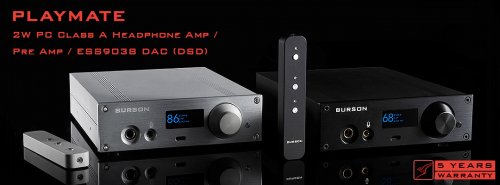You are using an out of date browser. It may not display this or other websites correctly.
You should upgrade or use an alternative browser.
You should upgrade or use an alternative browser.
Reviews by DarKu
Filters
Show only:
Loading…
DarKu
Reviewer at Soundnews
Pros: - Rock solid build quality, unique casework that doubles as a giant heat-sink
- Small footprint, works nicely in any setup
- A feature-packed 4-in-1 device
- Very detailed and transparent DAC section
- Works excellent as a Preamp too
- Has an extended frequency response at both ends
- Unlocked a wide soundstage and an amazing depth
- Very precise pin-point imaging
- One of the best pace, rhythm and timing I’ve heard in an all-in-one unit with an excellent transient response
- An amazing headphone amp and preamp section: hard grip, control and tons of headroom left on tap
- Sounds natural and life-like, with a great tonal balance
- Leans towards an engaging performance, adds a bit of color and nuance to your music
- An amazing Value!
- Small footprint, works nicely in any setup
- A feature-packed 4-in-1 device
- Very detailed and transparent DAC section
- Works excellent as a Preamp too
- Has an extended frequency response at both ends
- Unlocked a wide soundstage and an amazing depth
- Very precise pin-point imaging
- One of the best pace, rhythm and timing I’ve heard in an all-in-one unit with an excellent transient response
- An amazing headphone amp and preamp section: hard grip, control and tons of headroom left on tap
- Sounds natural and life-like, with a great tonal balance
- Leans towards an engaging performance, adds a bit of color and nuance to your music
- An amazing Value!
Cons: - Slight hiss with ultra-sensitive IEMs (can be solved by adding an iFi Audio iEMatch or EarBuddy)
- It’s on the hotter side after an hour or so (can be solved with IsoAcoustics Puck-Mini or by putting it vertically for a better air flow)
- It’s on the hotter side after an hour or so (can be solved with IsoAcoustics Puck-Mini or by putting it vertically for a better air flow)
My Video Review:
At the end of 2019 I was given the honors for a world-premiere Burson Conductor 3 Reference review, which changed the way I am looking at ESS Sabre-based DACs/Preamps and headphone amp combos. From linear, lean sounding and straight as a line in terms of frequency response, Conductor 3 was seriously breaking those rules as it was highly engaging and natural sounding. It performed more like an advanced R2R design with a powerful Class-A output stage than like a typical ESS Sabre based all-in-one device.
I have quite a history of reviewing Burson Audio gear as almost everything they released along these years was tested around here or on our defunct sister website. Believe it or not, my first ever written review was for my own Burson HA-160D that I’ve been using for a couple of years. Later on, it was replaced with another Burson device - the mighty Conductor 1 that started a true lineage in their line-up. Even in those distant times, I knew that Burson doesn’t want to have “yet another boring ESS Sabre based device”, they always wanted something different, something that would stand the test of time, something that would remain at your place for at least few good years, without thinking of an upgrade path anytime soon.
At some point their motto was: “_Burson sounds good like solid state should_” and I do certainly agree with that. Burson has a long history of working with solid-state analog circuitry, they know precisely what it stopping a lot of amplifiers, pre-amplifiers and even digital sources from achieving legendary status – and that are their off-the-shelf low-quality operational amplifiers or op-amps for short, that are working as huge bottlenecks, especially when it comes to high-end audio. Even from their inception, Burson developed a world first all-discrete op-amp that preserved natural harmonics, that had much higher bandwidth compared to any other op-amp and of course provided higher current and voltages for a better performance in all those devices. It is not surprisingly at all seeing people upgrading their audio gear with Burson discrete op-amps, in the DIY scene everyone knows about Burson Audio. Hell, I’ve upgraded myself multiple devices with those colorful op-amps, it’s a cheap way of seriously improving your beloved amplifier, preamplifier or DAC.
I was happily using that HA-160D for a few years, because I knew it was an end-game solution for headphone enthusiasts. I felt the same with their Conductor 1 and I certainly have the same feelings about the latest Conductor 3 line. I felt all the care and all the thinking that went into making a long-lasting product as Conductor 3 Reference.
The unit that I will be testing today is part of the Performance line - it is a smaller re-design of the Reference line, which I’ve tested last year. Burson may dropped one DAC chip and lowered the number of its Max Current Power Supplies (MCPS), they made it smaller and lighter weight, they slashed its price too but I’m sure they didn’t slash anything in the sound quality department.
Let’s dive deep and see for ourselves how close it comes to the Reference line and if it inherits the same naturalness, unparalleled impact and of course a wide-spread soundstage as its bigger brother had in its veins.

Conducting your stereo setup
Burson Audio has multiple devices ranging from discrete op-amps, power amplifiers, headphone amplifiers, DACs and then they have all-in-one units like the Conductor series. Their Conductor line-up is currently their flagship line-up and anything with a Conductor name in it – is part of their best attempts at delivering high-end sonics and Conductor 3X Performance (3XP from now on) is certainly that kind of device.
In time, we have tested multiple all-in-one devices, but not a single one excelled at its every feature. Be it expensive like my own $3000 Matrix Audio Element X or much cheaper like $599 Topping DX7 Pro and anything in-between had unforgettable flaws that made them good but far from great. Element X is only half-decent with its headphone output, Topping DX7 PRO had a very high output impedance making it sloppy sounding, lacking punch and control with low-impedance desktop headphones, Mytek Brooklyn DAC+ had a very noisy headphone output and a brighter sound signature. On the other hand, every single feature of the Burson Conductor 3XP was tuned to perform at the highest standards. Its preamp, headphone amp and DAC sections weren’t overlooked at all and as my review will soon prove, it worked great in a speaker setup and in a headphone setup too.

Burson VS Burson
If you are wondering what exactly is the difference between the Reference 3XR and the cheaper 3XP that I am testing today, here is a detailed breakdown on their internal components:

Unboxing Experience
It came double boxed as all high-performance units are coming nowadays. The product box has a lot of white foam inside to protect the unit during shipping. Besides the unit itself, there is an accessory box nearby, in it you’ll find: a high quality aluminum remote, a pair of RCA interconnects, a torx screwdriver to open the case, an extra mini-fuse, a USB Type-C cable, an external power supply and the power cable that attaches to it, a certificate of compliance, four JRC 5532D op-amps from New Radio Japan – Burson doesn’t recommend using those as they are much worse sounding compared to V6 Vivid. However, you will need them to test the op-amp sockets if something goes sideways. In case you’ll want to connect your brand-new 3XP to your smartphone, Burson also added an USB Type-C to USB type-B female adapter and in case your gaming headset is not coming with a 4-pole 3.5mm jack, they added an adapter that splits that 4-pole 3.5mm in two 3.5mm jacks – one for your microphone and one for your headphones.
Mighty Odin! That’s lot of accessories if you ask me, it’s more than enough. I’m pleased the most about the metal remote which I can use in a speaker setup and the included RCA interconnect cable is also a worthy addition.
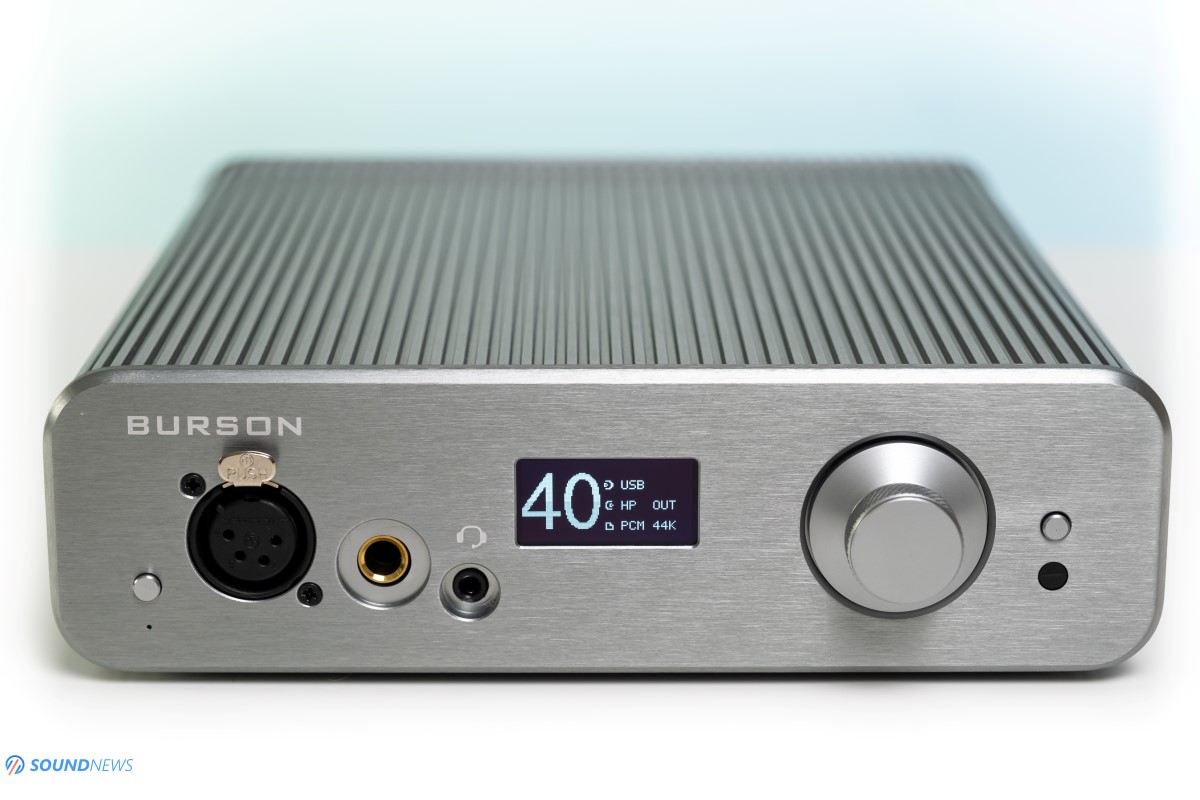
Design & Build Quality
Conductor 3 Reference and Performance units are the first ones, in almost 10 years that received updated looks, with redesigned cases from the ground up. On the inside, every single internal square inch was used at maximum potential, that is some clever engineering if you ask me. With this case, Burson doubled the surface area so their newest generation of Conductors are way more effective at dissipating heat.
I think it looks unique and it’s standing out with those aluminum fins that are wrapping the device entirely, the threaded volume wheel is amazing to the touch too, it reminds me a lot about another hobby of mine. I like that it has a decent amount of resistance so I could slowly and gradually rise that volume with sensitive headphones. Burson finally hid those screws on the back of the unit, it looks much simpler and more elegant this way. Its case is of course fully milled on a CNC machine and I personally enjoy its raw aluminum look without any kind of paint over it. Burson put some decent sized rubber feet underneath it, but since it works in Class-A, heat dissipation is still an issue in a crowded office like mine and I would advise buying separately some IsoAcoustics ISO-Puck Mini - they are fairly cheap but well worth the money. Put them under 3XP for a much better heat dissipation and as a small bonus, those will absorb micro-vibrations too.
Having a medium sized case (250 x 200 x 60 mm) and weighting only 3 Kg (6.6 lbs) it is neither big or small and can be easily arranged in a small working space or in a cramped stereo setup. Burson had an interesting button on their bigger 3X/3R units that would flip the screen 90 degrees so you could use it vertically for a better air flow and for a smaller foot print. You could certainly do the same with 3XP, but there its screen can’t be flipped.
Overall, I do like its look, its case screams high quality engineering, everything is tight and doesn’t wobble at all, the raw aluminum look is interesting to look at, I certainly like it better than an anodized aluminum surface.

Controls & Connectivity
3XP is a fully balanced input to output device and as such, on its front plate you’ll find a 4-pin XLR headphone jack, a single-ended 6.35 mm (1/4”) jack, a 3.5 mm (1/8”) microphone input, gaming headsets with 4 pole jacks should work nicely with it. In case your headset uses two jacks instead of one, you can use the included adapter in the package for some non-stop action.
On the left is your power On/Off button and on the right is your menu button, a monochrome OLED screen is located exactly in the middle (for my dear OCD friends), it is fairly small, but visible with a decent resolution. It will show all the important stuff as the volume position, the selected digital input, analog output and the sample rates. The volume wheel works in digital domain and has 99 steps, so no more guessing how much power is there left on tap.
On its back you can spot 3 digital inputs: USB Type-C, Optical and Coaxial, plus a Bluetooth socket with an antenna on the right. Since it can work as a dedicated DAC or as a DAC + Preamp unit, you can also find two pairs of analog outputs – a standard RCA output that can be volume controlled or fixed and a XLR fixed volume output. It follows international standards, so at maximum volume it will offer 2V on RCA and 4V on XLR.
As you can see, it is super versatile all-in-one unit, it can work as a stand-alone DAC, DAC + Preamp or as a DAC + headphone amp and it can even receive lossless music signals via Bluetooth 5.0 thanks to that rad LDAC codec. A pretty neat wombo-combo device.
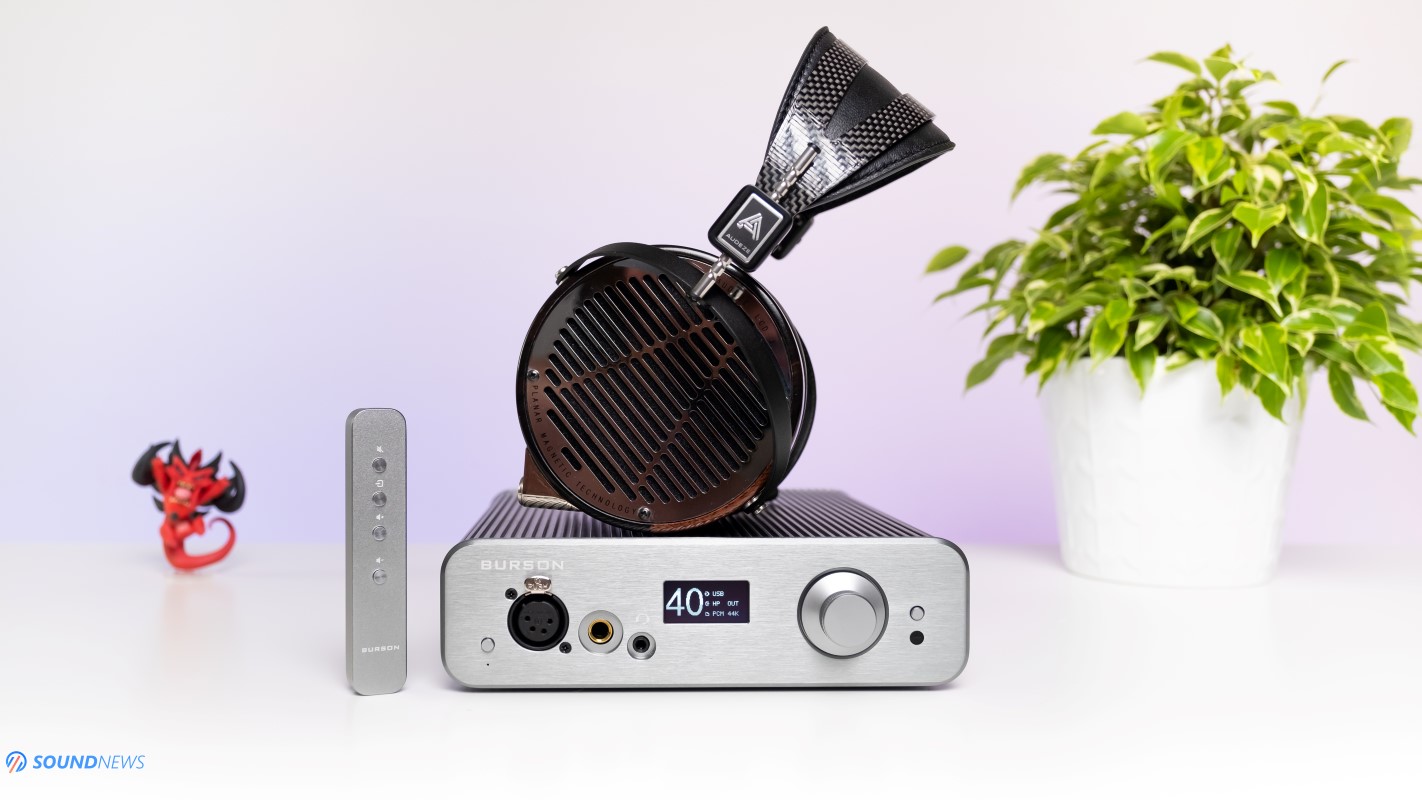
Display settings
With the included metallic remote you can change its volume level, mute or unmute it, change the selected input and rest of the settings are controlled only by entering the user menu, where the following settings can be accessed:

Sound Performance
I. Preliminary Impression
I made myself comfortable sitting in a sweet spot on my couch, I chose my favorite playlists, I calmed my spirits, I pressed play and I closed my eyes. Literally the next few seconds I’ve felt a powerful, visceral and bottomless bass, a warmer and a smoother midrange, some textured and extremely snappy sounding treble followed, all of that plus an iron grip over the speaker or headphone drivers were the first words that came into my mind. It had a faster pace and a very engaging type of sound, it made me tap my feet and move my head like I was part of a dance contest. From a plethora of all-in-one devices that I’ve tried, only three of them had the same warmth, full-bodied and fast paced sound. The stage size was also something special, unlike many others, it stretched in all possible directions, unlocking a true 3D image in front of me. It reminded a lot about the Conductor 3 Reference, about the Flux Lab Acoustics FCN-10 and of course about that Audio-GD D38 (fully upgraded version). It so happens that only these three devices were working in Class-A, they all despised those off the shelf op-amps, ditching them in favor of all discrete components (like Bipolar or J-fet transistors).
After living for a longer period of time with a super linear setup like the Matrix Element X that feeds an achromatic sounding Benchmark HPA4, I almost forgot how fun headphone listening could be. This small Conductor is really possessed by some kind of beast inside that whips your tunes, makes them snappier, much richer in their tones, everything became bigger, meatier, bolder and ballsier sounding. It is a type of sound that you want to listen to for long periods of time, instead of just analyzing every corner of your music. It is very much against being linear, boring and ultra-smooth sounding. It doesn’t tilt at all towards the bright and thin sounding camp, you will not find anything like that in here.
Yes, it sounds so “Burson” to me…even with my eyes closed I could swear that I am listening to a Burson made device, it is really that obvious even without any kind of burn-in.
I am going to apologize to the Burson team, because I’m listening to this one for about 2 months now and yet after pressing play in any of my setups, I simply want to listen to my music without writing a single word about it. I’m trying to gather my thoughts, I’m adding another track into the playlist, another two, another three songs and again I’m forgetting about taking notes. It simply throws me into my world, into my oasis where I could be anyone I want.
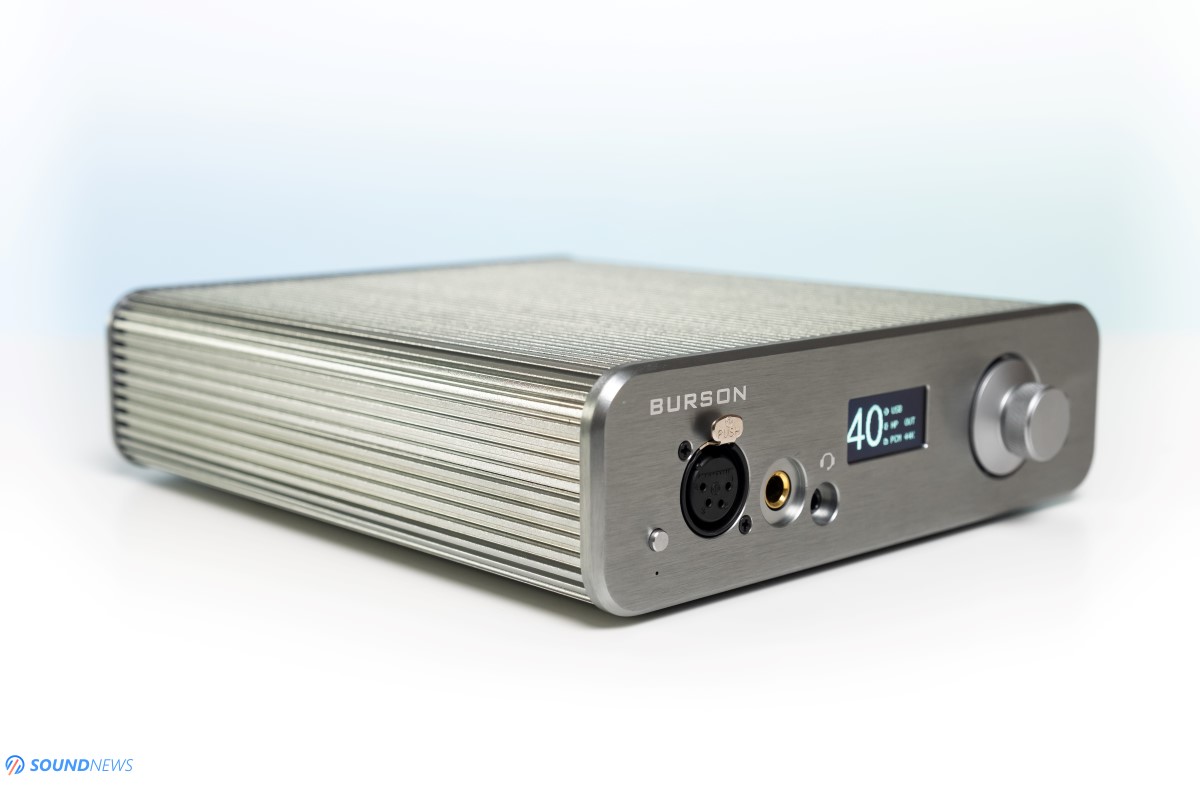
II. Background Noise & IEM Compatibility
When I was still evaluating that KECES S125 power amplifier, I thought that I should test its background in the speaker setup first. The next minute, it was working as DAC + Preamp and S125 was doing all the heavy work for the Buchardt S400 loudspeakers. The absolute first thing that hit me was that even at such an affordable price, it absolutely obliterated my own Matrix Audio Element X ($3000) working as DAC + Pre unit. I simply felt a better grip with the Burson, it was slightly more visceral sounding, more engaging and life-like in a way. Its line-amplifier is somehow better than that of the Element X and in a speaker setup I’m yet to hear a better device than the Conductor 3R and 3XP, they simply shined in a stereo setup.
When it comes to noise, I’m pretty sure that DC Servo circuits inside the KECES S125 are already killing plenty of source noise with the help of negative feedback, so the final result was a crystal-clear sound, without any kind of artifacts. It was simply noiseless and its background was really dark. There was simply an absolute silence between passages with all my music. When I’ve replaced the S125 with the Kinki Studio EX-M7 power amplifier, again its DC filtering said its last words and all I’ve heard a noise-free performance all over again with an absolute silence even at close to maximum volume.
Moving the little Burson to a headphone setup, I’ve armed myself with the most sensitive IEMs I had at my disposal: FiiO FA9 in its high sensitivity mode (16 Ohms and 113 dB/1mW) and then with a pair of Meze RAI Penta. These two are not shy at all at showing how clean your setup is, these are extremely easy to drive. I could easily damage them or even worse, my hearing, so be extra careful while driving extra sensitive IEMs with so much power. I used them only on the 6.35 mm (1/4”) single-ended headphone output and maximum I could go volume wise was 30 (out of 99) on the high gain and about ~65 on the low gain. The best past is that no matter the gain position you have plenty of play on that volume wheel, it doesn’t get way too loud fast and even on high-gain there is plenty of steps until you reach your desired volume.
When it comes to its performance, no matter the selected gain and no matter the volume position, there was a faint low intensity hum, but you can spot it only if you are using memory foam ear-tips and only if it is an absolute silence in your room. If anything goes around you, you can’t spot it. I will be honest with you, it’s very faint, it is lower in its intensity compared to the rest of class-A amps, it’s even lower compared to its bigger brother C3 Reference. It does not bother me as after I am pressing play, there is no way I can spot it again. I need to mention that it’s there in very small doses and Burson probably tuned this one to work better with IEMs this time around and I genuinely enjoyed my time with it even with such ultra-sensitive loads. The good part is that no matter the volume level or the gain position, the faint hum doesn’t increase its intensity, it stays absolutely on the same level. I had a very different experience with the rest of class-A combos, both Flux Lab Acoustics FCN-10 and the Audio-GD D38 were increasing the noise floor when I was increasing the volume.
The absolutely greatest part, is that its fun and engaging nature, carried over to these IEMs. Meze RAI Penta is a smooth sounding IEM, very reminiscent of Empyrean with that relaxed and easy going sound, but on the little Burson those transformed into something else. From smooth and slow, they started hitting harder, increasing their speed and pace. From a dormant and almost boring performance, 3XP infused some fun in these and made them much more enjoyable in the long run.
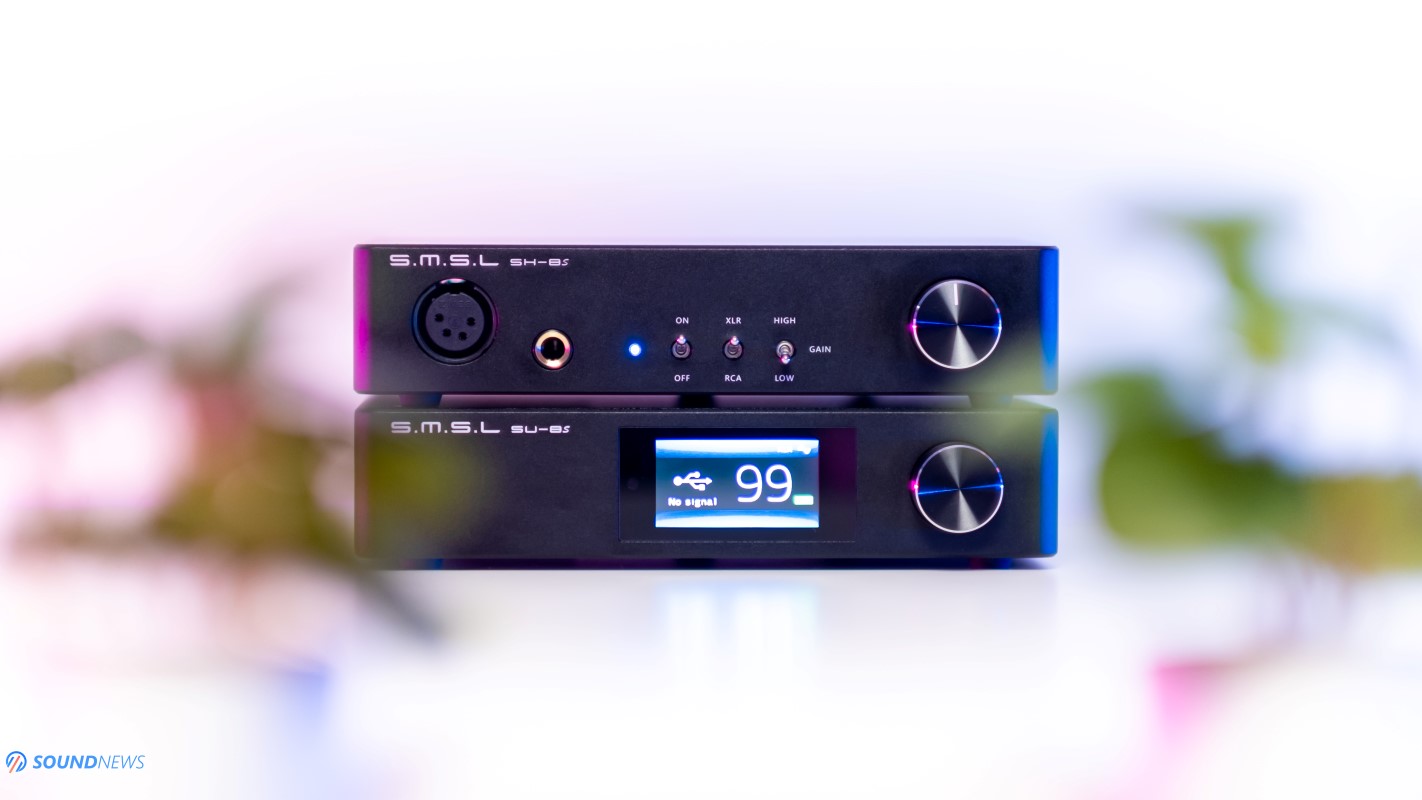
III. Resolution & Transparency
If we are talking about a top-of-the-line ESS Sabre design with a fully discrete Class-A output stage, then we are talking about a bad-ass resolution and a see-through transparency. It wasn’t a surprise when I connected a pair of Audeze LCD-4, then a pair of Hifiman Arya and then I’ve heard the same breathing and transparent type of sound on a pair of Kennerton Wodan. These trio of headphones are currently extracting more information compared to my S400 loudspeakers, so the biggest part of this test made was made by using headphones.
Pneuma By TOOL (Tidal / Spotify), is one of my reference tracks when I’m testing a new diaphragm or a new DAC. It plays well with the left to right positioning and puts quite a lot of sounds around you. The treble is raw and impactful, both guitars are slamming pretty hard, it almost becomes tiresome. Normally, you should be able to look deep into this song and hear those drums extremely clean and detailed with a punchier rendition. Easier said than done, because this song doesn’t sound the same with most all-in-ones. While this is not a reference track, it will put a heavy burden on the DAC, amplifier and diaphragms. The little Burson played it clean, vivid, with plenty of impact and with a very precise note positioning around me, I sincerely expected no less from a design like this.
Brothers in Arms by Dire Straits (Tidal / Spotify) is another reference song with a close to perfect rendition of trebles, guitars and with a perfect decay of the notes. The incredibly high dynamic range of this track made me sometime jump from my seat, this song surprises with its naturalness, yet with perfect technicalities and super high dynamic swings. I wish all rock would be recorded this way. The little Burson simply expanded this song, put everything in front of me and let me pick the notes I want to look at. It worked as a magnifying glass for this track, absolutely everything in here was crystal clear, precise and very airy. I’ve had a strange feeling that those sounds are not even touching each other, such a huge void space was sitting between them, it’s fascinating.
All in all, 3XP has a high level of resolution and transparency and it is approaching easily high-end DAC territory. It is still not on the same level with the best I’ve heard, but it’s real close and I could easily live with such a natural sounding DAC/PRE/HP Amp unit.
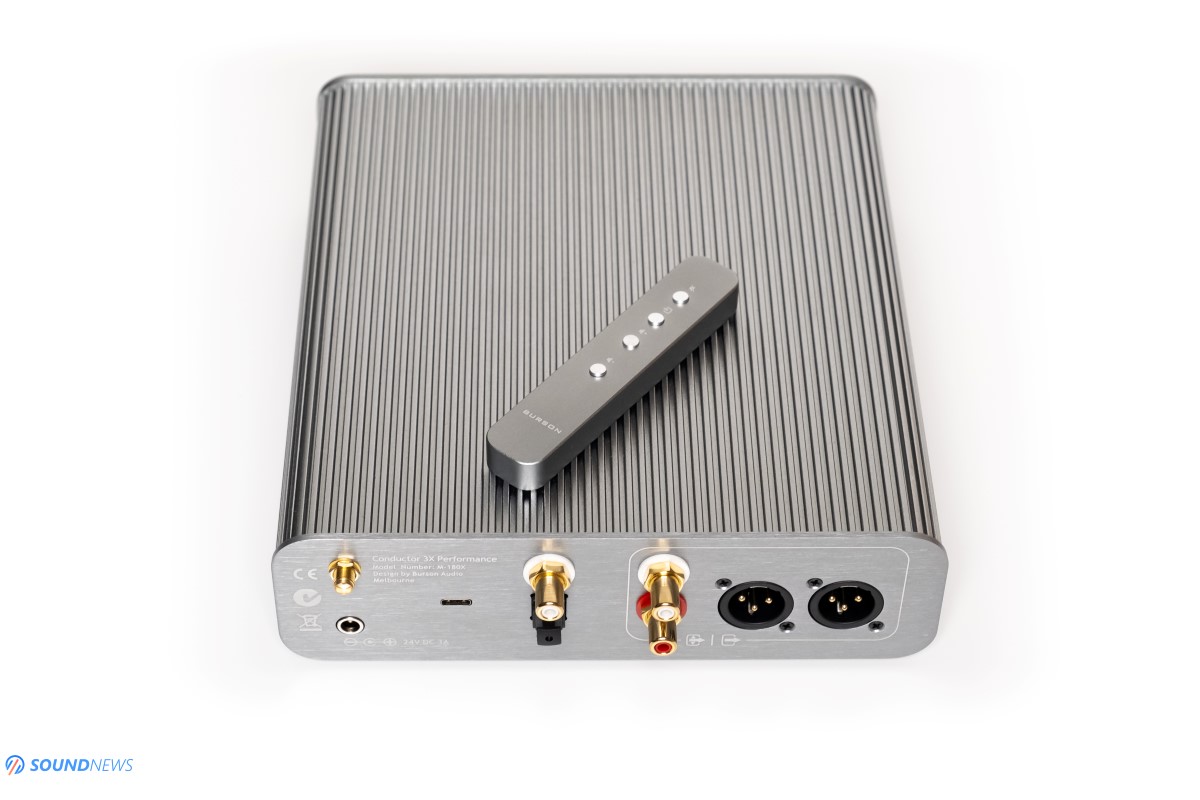
IV. Transient Response
Transient response feels at home with a device like this, it is like asking a boxer if he knows how to land a punch. In this regard, all other devices I’ve tried that worked in Class-A, were absolutely fabulous in this department. Yes, every single one. I’m yet to hear a better thunder like slam like that of the Flux Lab Acoustics FCN-10. Burson Conductor 3 Reference that I’ve tested last year was very close to that one. The newest Conductor 3X Performance has exactly the same DNA, it is also a natural pugilist with a hairy chest, being mean, punching hard and going really fast when a track asks for it. Here are just few examples:
Mombasa by 2Cellos (Tidal / Spotify) is an extremely textured and snappy song, it is incredibly engaging and hard slamming from start to finish. Then those guys are slapping the cello strings, an enormous amount of air hits my eardrums with an incredible force. The slamming intensifies close to the end that I almost wanted to lower the volume because of those high dynamics that were relentlessly increasing their pace. Mind you, this is all happening with only two cellos and yet so much joy and so much power and dynamics can be obtained with only two instruments, it’s mind boggling!
Vivaldi Storm (Tidal / Spotify) is another amazing performance by the same duo. It sounds so incredibly alive and punchy. Those string slams felt so visceral, so raw and crude, my ears started waving like I was listening to an angry metal remaster of a Vivaldi masterpiece.
I want to outline, that with a powerful output stage consisting of a discrete circuitry providing constant Class-A power to those headphone drivers - it is like taking a sheet of paper and hitting it by a hammer. You don’t really need some powerful metal or electronica songs to unleash some punchy notes and a faster pace. You simply need a device that knows how to accelerate and decelerate in an instant. In the slam department, it actually outperforms my own $3000 Benchmark HPA4, its bigger brother did absolutely the same. It literally changed some headphones to unrecognizable; I can hardly perceive those Hifiman Arya. I find them engaging only with very few amplifiers and 3XP was one of the nicest pairings with it. The li’l Burson will never sound loose, uber-smooth or plain boring, it can be anything but that.
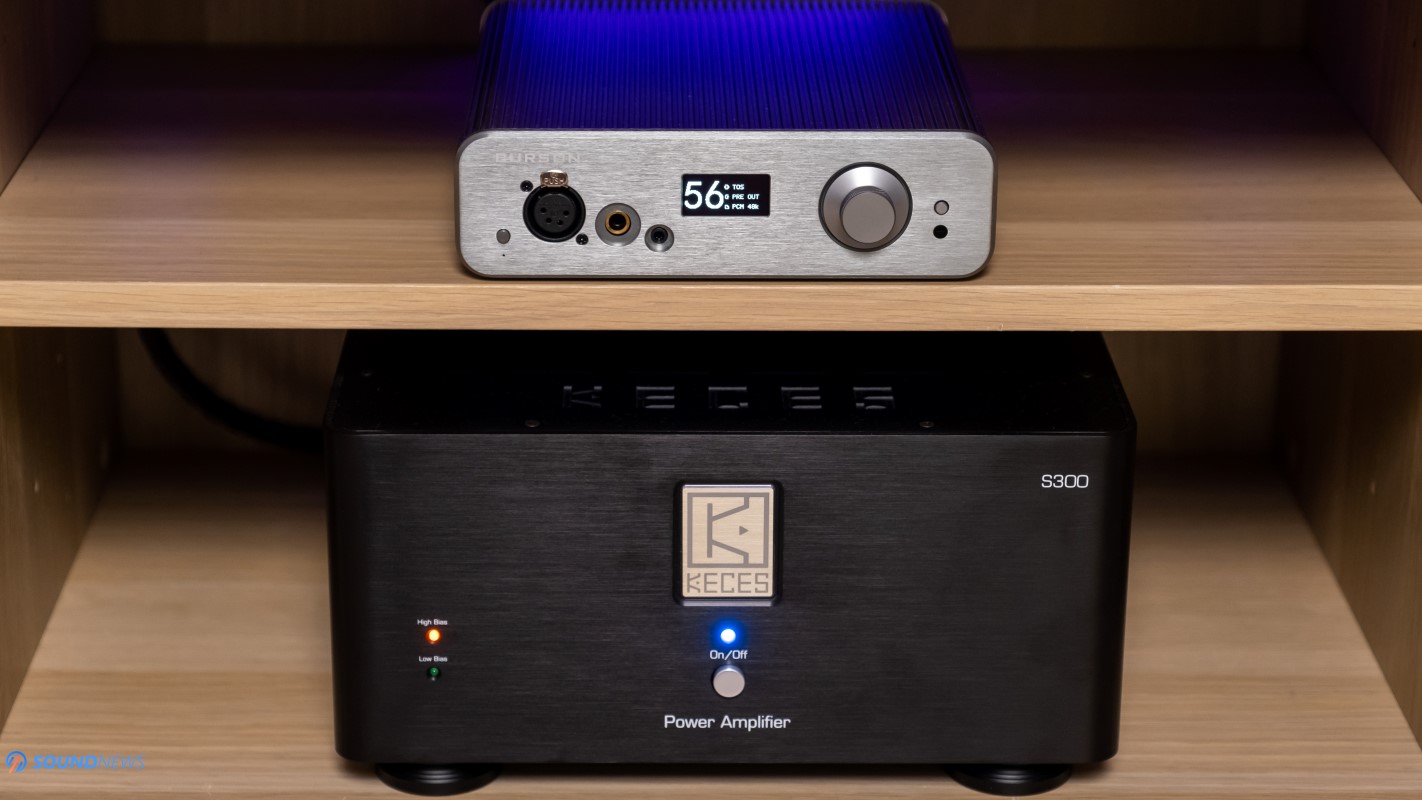
V. Soundstage & Depth
As I’ve said it in my preliminary impressions, 3XP draws a bigger picture in front of the listener and it will carefully arrange all those notes around you. You can pick those sounds like cherries from a tree. When you have a detailed and transparent sound, plus a very energetic sound, pushing bigger quantities of air, it is absolutely normal to experience a wider and a deeper stage, without anything staying in front of you and the music. I personally never understood headphones like Hifiman Arya until the end, their soundstage is…weird to say the least with most solid-state amplifiers. On tube amplifiers with big transformers on top, they were sounding more natural, more expansive, more real and much closer to the rest of my open-back headphones. With both Burson designs, Hifiman Arya are again coming to their senses, I can now understand them with a design like this. I can’t spot that limited left to right soundstage anymore, it is much bigger now. I simply took few steps behind and I can now better see the play that is happening in front of my eyes. Instead of looking at a big screen, it feels like I’m looking at a huge cinema screen with more things on my left, on my right, on top of my head and bellow my chin.
Add that close to zero channel crosstalk on the balanced output and we have a winner on our hands not only in terms of speed and impact but also in terms of stage size and depth. 3XP is clearly one of the nicest solid-state all-in-one units I came across. Even in terms of depth, pin point location of a particular note and obviously in terms of stage size it is quite impressive. I’ve had the same feelings with the rest of my headphones, like the void space between my left and right ear was increasing in volume.
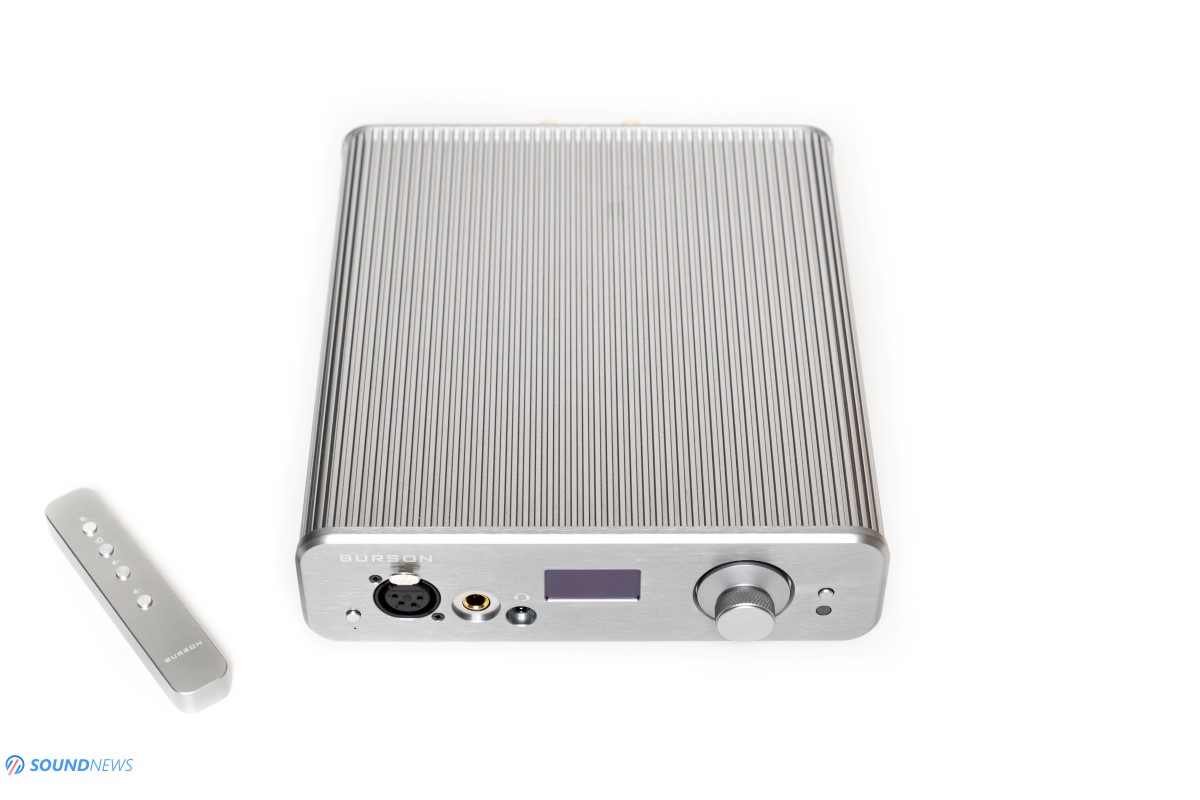
VI. Frequency Response
The Conductor 3 Performance that I am testing is having four V6 Vivid op-amps inside, you can mix and match with their V6 Classic op-amps for a different sound if you want. Burson is even selling a bare bones version with those nasty JRC op-amps installed, but I am strongly advising against that version.
With V6 Vivid installed, the bass and the treble are standing out immediately. Not that midrange is not great too, but it isn’t as obvious at those bold extremities in the frequency response.
Bass is oozing bad attitude, it hits pretty fast and slams like a hammer too. It is also a clean type of bass, that is layered and breathes. Part of that incredible punch is due to its deep sub-bass performance that felt bottomless, but controlled to the lowest octaves. I’m going to say that it is by a hair elevated even, especially the mid-bass is adding quite a lot of warmth and bad attitude. It is quite difficult having a perfect dose of warmth and cleanness in this region, but I think Burson managed to balance its performance. Bass is strong in this one, much stronger compared to units like KECES S3 ($1500), Mytek Brooklyn DAC+ ($2195) or Benchmark DAC3 HGC ($2199). It depends on your taste; I personally like a fuller bass performance in detriment of a thin and boring type.
Midrange is different sounding compared to usual ESS Sarbre designs, it is much fuller, but I wouldn’t say it’s really warm or anything like that. It is warmer compared to aforementioned units but colder to say a nicely designed R2R DAC. There is however a lot of naturalness in this one, Class-A is leaving a big stain in here, plus that all discrete topology is also adding a lot of magic in here. Midrange is rendered clear and has the right amount of naturalness. Having a big power reserve, the voices felt powerful, a tad heavier in their tonality. I never spotted dry or thin midrange in this one, it will always infuse a bit of its own medicine, improving the midrange presence and make it more real. From dry sounding tracks it would make them linear, neutral sounding tracks would sound warm and full-bodied in return and this can be said about the biggest majority of all discrete amplifiers.
Treble is standing out immediately, sometimes it jumps before those bass lines. It offers a lot of information in this region and if you’d like less treble presence, simple swap 2 Vivid op-amps with 2 Classic op-amps and the problem is solved. I don’t find it bright sounding per say, nothing like that. There isn’t that nasty ringing in the mid or upper-treble, but still it’s very defined and almost sharp sounding in here. For the record, the rest of the Class-A gang, like the Audio-GD D38 or Flux Labs Acoustics FCN-10 felt less extended in this region, gently rolling-off the upper treble. That roll-off is not happening in here, it will render your treble even past top-octave with lots of details and shimmers. I can definitely say that it approaches the treble performance of my Element X ($3000) which is a good thing to say about the little Burson.

VII. Wireless Performance
I want to remind the Burson team that Qualcomm CSR8675 is not capable only of AptX-HD – that is a decent codec, one of the better ones actually, but it is not the best. It also supports LDAC too, which is considerable better, in the high-quality mode it will receive up to 999 Kb/sec which can be considered as lossless quality wireless transmission, unlike AptX-HD that is limited only to 576 Kb/sec.
I will say in advance that I’ve tested this chipset multiple times, more like 15 times in different devices. Some of them without an antenna and some of them with an antenna that works as a signal booster. Luckily, our test unit uses a nice antenna and I know very well what to expect from it.
My smartphone is LDAC, AptX-HD enabled and supports Bluetooth 5.0, of course LDAC came up on that screen and it simply worked flawlessly from that moment. I used Tidal Hi-Fi on my phone and I streamed few songs directly to it. The wireless range was huge and more or less in line with the rest of those devices that also had a BT antenna.
The signal was rock steady in my flat even with 2 concrete walls and 10 m distance between us, only in the last room about 15 meters away and with 3 concrete walls between us, the signal would drop a few beats. In an open area it performed excellent even at more than 20 meters away.
As for music listening, with regular CD-quality lossless files (16-bit, 44.1 or 48 kHz) I couldn’t make a difference between the wired and wireless mode. It sounded maybe just a tiny bit smoother and relaxing in wireless mode, but the difference was really small, I was guessing at that point. Going up the ladder and listening to 24-bit files mostly in 192 kHz, the difference grows in favor of wired mode, which sounded a little crisper and more engaging. Especially the bass and treble were sharper sounding in the wired mode.
All in all, it performed absolutely great in Bluetooth mode and 3XP seems to be a very good wireless receiver sitting in the living room. It can’t be considered as a full-blown streamer, because Bluetooth still loses bits of information, for a bit-perfect wireless connection Wi-Fi will be needed, but incorporating a full-blown streamer would probably double the price of the little Conductor 3 Performance. In my eyes, it is more than enough as it is.

VIII. Comparisons
Burson Conductor 3X Performance ($1399) VS Flux Lab Acoustics FCN-10 ($1349)
In terms of features, 3XP is having an LCD screen where you can choose the selected input, it has slightly more digital inputs including a Bluetooth input. It can also be used as a DAC + preamp in a speaker-based setup, a feature which FCN-10 doesn’t have. Burson guys went with a single ESS 9038Q2M which worked absolutely great with their class-A amplification and with their discrete op-amps.
FCN-10 might not have an LCD screen, an optical, coaxial and Bluetooth input, but it has a simple streamer inside working via Ethernet or via Wi-Fi, it can accept music from external USB flash or HDD drives and play it back without the need of an OS or of a computer. It supports DLNA and AirPlay, you can even link a Tidal, Qobuz or Google Music account to an app like Bubble UPnP and control everything with your smartphone. FCN-10 is almost a full-fledged streamer, on the other hand 3XP has a lot more features, inputs and outputs.
In terms of power, 3XP is offering about 6 Watts of power and it drove all my headphones with an absolute control and authority. It played almost perfect with IEMs too, there would be still be a faint noise before pressing the play button. I like a lot how 3XP performed with big cans, it had a lot of headroom left on tap and every single headphone from my stable was driven to its maximum potential. At about 65% of power, it was driving those Audeze LCD-4 and Hifiman Arya like it was nothing. I liked a lot that 3XP has an LCD screen where I can perfectly match the volume I wanted. It also has quite a lot more digital inputs, I can use it with my TV, with a receiver, with a gaming console, it can be used with digital transports via coaxial. It has a metal remote too that was priceless in stereo setup. The little Burson has a very good preamp section which worked great in my speaker setup, FCN-10 doesn’t have this feature. 3XP even outperformed my own reference unit as a DAC + Pre unit as it sounded more fun and engaging. As a DAC only device, Burson sounded crisper, more detailed, offered additional layers of information and it was more transparent too. Flux would be less impressive in here and its biggest drawback is actually its DAC section which is good, but not reference sounding.
FCN-10 with its 16 Watts of Class-A power felt more powerful (obviously), dynamics went through the roof, it was oozing bad attitude, it sounded even nastier from the first seconds. It slammed harder, it offered better dynamics, these rose higher and faster with my music. I felt a slightly better engagement factor and it made me feel like I’m the king of the hill. Both units are having good DACs sections so in terms of depth and soundstage size I would put them both on the same boat, with just a mention that FCN-10 sounded by a hair deeper and wider especially with live music but the 3XP was clearer, more detailed and more transparent sounding which is more important as a DAC only device. In terms of frequency response, they both offered everything from the lowest notes to the highest octaves, so it’s a tie. As for the ultimate refinement and detail retrieval, I’m again placing the 3XP slightly above the FCN-10 just because it offers a clearer background with small and big cans and as a direct result it sounds more transparent, airier and more detailed.
The thing is, FCN-10 shined as a streamer via Wi-Fi and it is a better and more powerful headphone amp, but worse as a DAC. Burson unit sounded as a reference DAC offering more details and transparency, it has a great line-preamp section too and a very good headphone amp. I find them both very appealing and it comes down to personal preference and feature list.
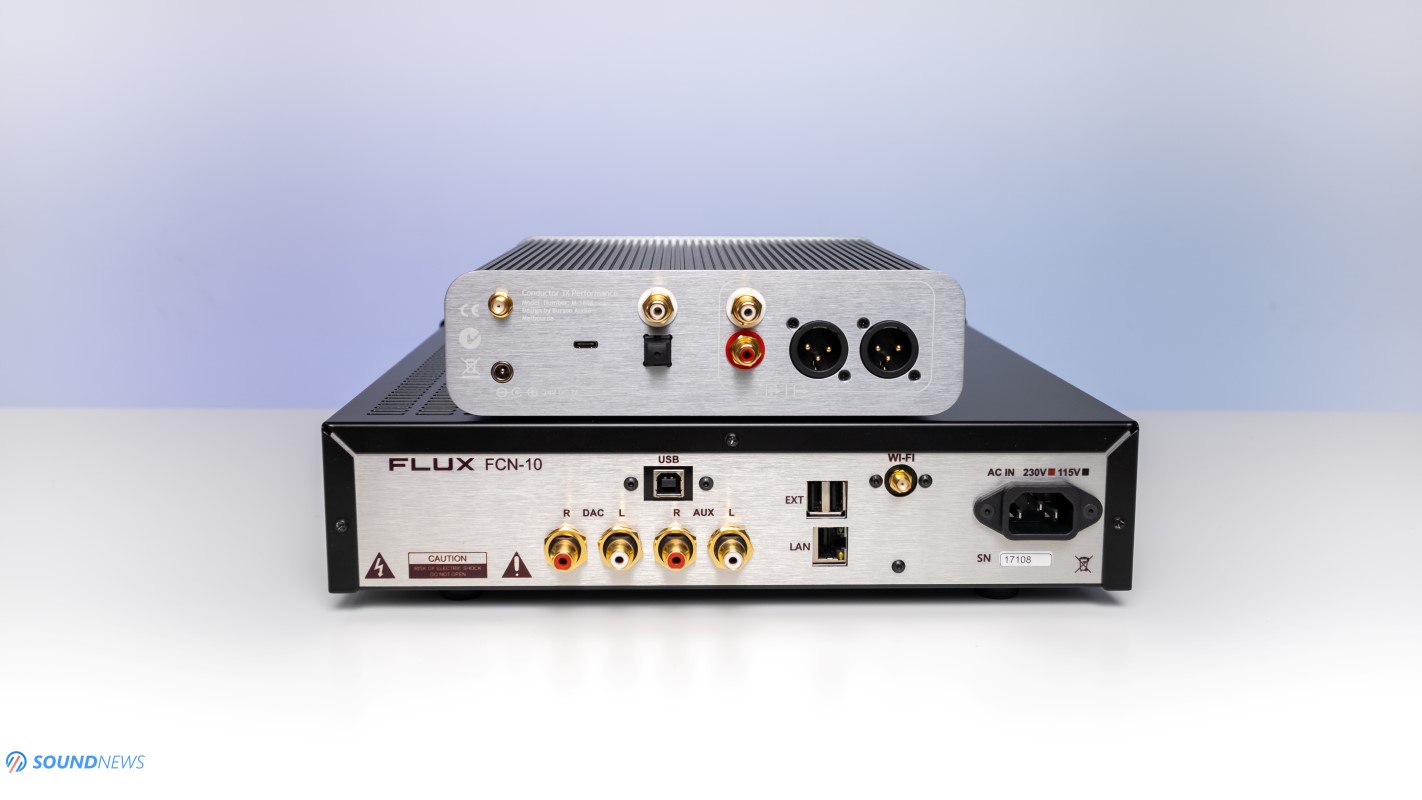
Conclusion
I have enjoyed every single second with the little Burson, not going to lie that I even liked it more than it’s more expensive brother – Conductor 3 Reference. How so? The treble is somehow more extended and I’ve heard less background noise via ultra-sensitive IEMs. The only explanation I can give is that I’ve tested a pre-production Conductor 3 Reference from which team Burson ironed out most of its flaws I’ve mentioned in my review. Conductor 3 Performance had a darker background and it was a tad clearer sounding with my speakers and ultra-sensitive earphones and at only $1399 it performed like a true-reference DAC, preamp and headphone amplifier. It is probably the first time when I’m experiencing immaculate performance on all its features, as it didn’t lack in any of those departments.
I wish I had moments like these with every single audio component that I am testing, this is what I’m talking about. It unlocked to many positive vibes, so much raw energy came out of my speakers and headphones. When I’m waking up and I feel like a need a kickstart to start my day, I know exactly what needs to be done: push the small aluminum button on the left, press play, lean back and let the dopamine do its thing, it’s that easy!
You can get the Burson Conductor 3 Performance directly from Burson Audio for $1399 by following this link, or you can contact your local distributor for a listening session.
PROS:
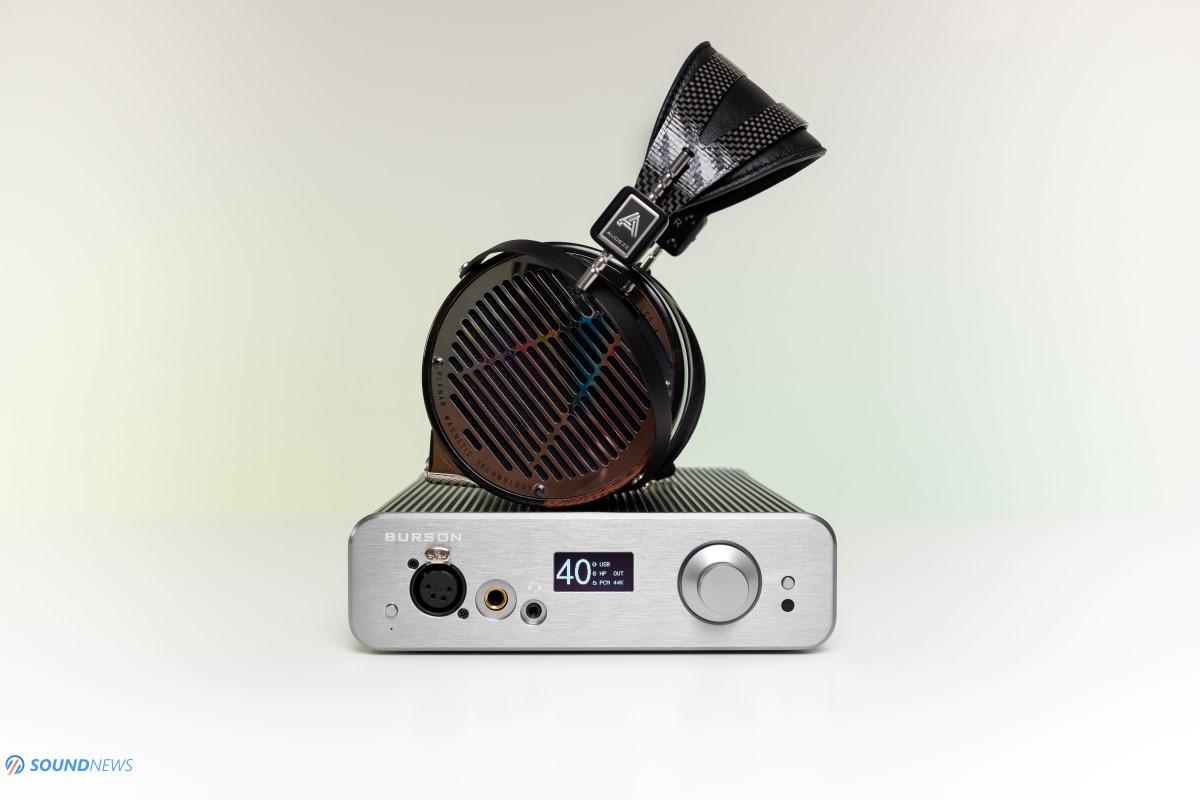
Overall score 96/100
Features 98/100
Power Output 96/100
Resolution 95/100
Dynamics 98/100
Frequency Response 97/100
Stage Size 94/100
Build Quality 96/100
At the end of 2019 I was given the honors for a world-premiere Burson Conductor 3 Reference review, which changed the way I am looking at ESS Sabre-based DACs/Preamps and headphone amp combos. From linear, lean sounding and straight as a line in terms of frequency response, Conductor 3 was seriously breaking those rules as it was highly engaging and natural sounding. It performed more like an advanced R2R design with a powerful Class-A output stage than like a typical ESS Sabre based all-in-one device.
I have quite a history of reviewing Burson Audio gear as almost everything they released along these years was tested around here or on our defunct sister website. Believe it or not, my first ever written review was for my own Burson HA-160D that I’ve been using for a couple of years. Later on, it was replaced with another Burson device - the mighty Conductor 1 that started a true lineage in their line-up. Even in those distant times, I knew that Burson doesn’t want to have “yet another boring ESS Sabre based device”, they always wanted something different, something that would stand the test of time, something that would remain at your place for at least few good years, without thinking of an upgrade path anytime soon.
At some point their motto was: “_Burson sounds good like solid state should_” and I do certainly agree with that. Burson has a long history of working with solid-state analog circuitry, they know precisely what it stopping a lot of amplifiers, pre-amplifiers and even digital sources from achieving legendary status – and that are their off-the-shelf low-quality operational amplifiers or op-amps for short, that are working as huge bottlenecks, especially when it comes to high-end audio. Even from their inception, Burson developed a world first all-discrete op-amp that preserved natural harmonics, that had much higher bandwidth compared to any other op-amp and of course provided higher current and voltages for a better performance in all those devices. It is not surprisingly at all seeing people upgrading their audio gear with Burson discrete op-amps, in the DIY scene everyone knows about Burson Audio. Hell, I’ve upgraded myself multiple devices with those colorful op-amps, it’s a cheap way of seriously improving your beloved amplifier, preamplifier or DAC.
I was happily using that HA-160D for a few years, because I knew it was an end-game solution for headphone enthusiasts. I felt the same with their Conductor 1 and I certainly have the same feelings about the latest Conductor 3 line. I felt all the care and all the thinking that went into making a long-lasting product as Conductor 3 Reference.
The unit that I will be testing today is part of the Performance line - it is a smaller re-design of the Reference line, which I’ve tested last year. Burson may dropped one DAC chip and lowered the number of its Max Current Power Supplies (MCPS), they made it smaller and lighter weight, they slashed its price too but I’m sure they didn’t slash anything in the sound quality department.
Let’s dive deep and see for ourselves how close it comes to the Reference line and if it inherits the same naturalness, unparalleled impact and of course a wide-spread soundstage as its bigger brother had in its veins.

Conducting your stereo setup
Burson Audio has multiple devices ranging from discrete op-amps, power amplifiers, headphone amplifiers, DACs and then they have all-in-one units like the Conductor series. Their Conductor line-up is currently their flagship line-up and anything with a Conductor name in it – is part of their best attempts at delivering high-end sonics and Conductor 3X Performance (3XP from now on) is certainly that kind of device.
In time, we have tested multiple all-in-one devices, but not a single one excelled at its every feature. Be it expensive like my own $3000 Matrix Audio Element X or much cheaper like $599 Topping DX7 Pro and anything in-between had unforgettable flaws that made them good but far from great. Element X is only half-decent with its headphone output, Topping DX7 PRO had a very high output impedance making it sloppy sounding, lacking punch and control with low-impedance desktop headphones, Mytek Brooklyn DAC+ had a very noisy headphone output and a brighter sound signature. On the other hand, every single feature of the Burson Conductor 3XP was tuned to perform at the highest standards. Its preamp, headphone amp and DAC sections weren’t overlooked at all and as my review will soon prove, it worked great in a speaker setup and in a headphone setup too.

Burson VS Burson
If you are wondering what exactly is the difference between the Reference 3XR and the cheaper 3XP that I am testing today, here is a detailed breakdown on their internal components:
- On the DAC side, instead of two ESS9038Q2M DAC chips, the smaller 3XP uses only a single chip. Don’t get upset my friends, as absolutely the best delta-sigma DACs I ever tested around here (mind you, I’ve tested a lot of them) - were using only a single chip. More is certainly not better; the implementation is by leaps and bounds more important.
- The bigger 3XR has 5 Max Current Power Supplies (MCPS) instead of 3 on 3XP, which means that its display, DAC section, analogue left and analogue right are all separated on 3XR for a lower channel crosstalk and impedance.
- The power output dropped slightly too, from 7.5Watts in 16 Ohms, it now sits at 6 Watts on the balanced output and from 580mW in 300 Ohms, it dropped to 330mW. Not a huge difference if you ask me and as my tests will prove later on, 3XP is more than capable of powering even the most demanding headphones.
- 3XR has two XLR analog inputs, meaning you can use that one as a dedicated headphone amp or preamp, bypassing its internal DAC section. 3XP doesn’t have such inputs, but it can still work as a dedicated DAC, as a DAC + Preamp or as a DAC + Headphone amp, it is really up to you.

Unboxing Experience
It came double boxed as all high-performance units are coming nowadays. The product box has a lot of white foam inside to protect the unit during shipping. Besides the unit itself, there is an accessory box nearby, in it you’ll find: a high quality aluminum remote, a pair of RCA interconnects, a torx screwdriver to open the case, an extra mini-fuse, a USB Type-C cable, an external power supply and the power cable that attaches to it, a certificate of compliance, four JRC 5532D op-amps from New Radio Japan – Burson doesn’t recommend using those as they are much worse sounding compared to V6 Vivid. However, you will need them to test the op-amp sockets if something goes sideways. In case you’ll want to connect your brand-new 3XP to your smartphone, Burson also added an USB Type-C to USB type-B female adapter and in case your gaming headset is not coming with a 4-pole 3.5mm jack, they added an adapter that splits that 4-pole 3.5mm in two 3.5mm jacks – one for your microphone and one for your headphones.
Mighty Odin! That’s lot of accessories if you ask me, it’s more than enough. I’m pleased the most about the metal remote which I can use in a speaker setup and the included RCA interconnect cable is also a worthy addition.

Design & Build Quality
Conductor 3 Reference and Performance units are the first ones, in almost 10 years that received updated looks, with redesigned cases from the ground up. On the inside, every single internal square inch was used at maximum potential, that is some clever engineering if you ask me. With this case, Burson doubled the surface area so their newest generation of Conductors are way more effective at dissipating heat.
I think it looks unique and it’s standing out with those aluminum fins that are wrapping the device entirely, the threaded volume wheel is amazing to the touch too, it reminds me a lot about another hobby of mine. I like that it has a decent amount of resistance so I could slowly and gradually rise that volume with sensitive headphones. Burson finally hid those screws on the back of the unit, it looks much simpler and more elegant this way. Its case is of course fully milled on a CNC machine and I personally enjoy its raw aluminum look without any kind of paint over it. Burson put some decent sized rubber feet underneath it, but since it works in Class-A, heat dissipation is still an issue in a crowded office like mine and I would advise buying separately some IsoAcoustics ISO-Puck Mini - they are fairly cheap but well worth the money. Put them under 3XP for a much better heat dissipation and as a small bonus, those will absorb micro-vibrations too.
Having a medium sized case (250 x 200 x 60 mm) and weighting only 3 Kg (6.6 lbs) it is neither big or small and can be easily arranged in a small working space or in a cramped stereo setup. Burson had an interesting button on their bigger 3X/3R units that would flip the screen 90 degrees so you could use it vertically for a better air flow and for a smaller foot print. You could certainly do the same with 3XP, but there its screen can’t be flipped.
Overall, I do like its look, its case screams high quality engineering, everything is tight and doesn’t wobble at all, the raw aluminum look is interesting to look at, I certainly like it better than an anodized aluminum surface.

Controls & Connectivity
3XP is a fully balanced input to output device and as such, on its front plate you’ll find a 4-pin XLR headphone jack, a single-ended 6.35 mm (1/4”) jack, a 3.5 mm (1/8”) microphone input, gaming headsets with 4 pole jacks should work nicely with it. In case your headset uses two jacks instead of one, you can use the included adapter in the package for some non-stop action.
On the left is your power On/Off button and on the right is your menu button, a monochrome OLED screen is located exactly in the middle (for my dear OCD friends), it is fairly small, but visible with a decent resolution. It will show all the important stuff as the volume position, the selected digital input, analog output and the sample rates. The volume wheel works in digital domain and has 99 steps, so no more guessing how much power is there left on tap.
On its back you can spot 3 digital inputs: USB Type-C, Optical and Coaxial, plus a Bluetooth socket with an antenna on the right. Since it can work as a dedicated DAC or as a DAC + Preamp unit, you can also find two pairs of analog outputs – a standard RCA output that can be volume controlled or fixed and a XLR fixed volume output. It follows international standards, so at maximum volume it will offer 2V on RCA and 4V on XLR.
As you can see, it is super versatile all-in-one unit, it can work as a stand-alone DAC, DAC + Preamp or as a DAC + headphone amp and it can even receive lossless music signals via Bluetooth 5.0 thanks to that rad LDAC codec. A pretty neat wombo-combo device.

Display settings
With the included metallic remote you can change its volume level, mute or unmute it, change the selected input and rest of the settings are controlled only by entering the user menu, where the following settings can be accessed:
- Input – USB, Bluetooth, Toslink, Coaxial – very straightforward
- Output – HP Out, PRE Out, DAC Out – self explanatory
- Gain: High and Low – this setting impacts your headphone out and also the Pre out
- FirFilter – you can select your desired digital filter that are built-in directly in the ESS Sabre DAC chip, there are 7 filters to play with, but the sound difference between them is slight at best.
- DPLL (DSD) – OFF, Low, Mid and High (default) – the higher this setting is the higher the jitter rejection will be for DSD files
- DPLL (PCM) – Off, Low, Mid or High (default) – the same but for PCM files
- Emphasis – Off (default), On – ON position rolls-off the treble by about 5db at 10 kHz and by about 8 db at 20 khz. I strongly recommend leaving it in OFF position.
- Reset Set: Yes or No – resets to factory settings

Sound Performance
I. Preliminary Impression
I made myself comfortable sitting in a sweet spot on my couch, I chose my favorite playlists, I calmed my spirits, I pressed play and I closed my eyes. Literally the next few seconds I’ve felt a powerful, visceral and bottomless bass, a warmer and a smoother midrange, some textured and extremely snappy sounding treble followed, all of that plus an iron grip over the speaker or headphone drivers were the first words that came into my mind. It had a faster pace and a very engaging type of sound, it made me tap my feet and move my head like I was part of a dance contest. From a plethora of all-in-one devices that I’ve tried, only three of them had the same warmth, full-bodied and fast paced sound. The stage size was also something special, unlike many others, it stretched in all possible directions, unlocking a true 3D image in front of me. It reminded a lot about the Conductor 3 Reference, about the Flux Lab Acoustics FCN-10 and of course about that Audio-GD D38 (fully upgraded version). It so happens that only these three devices were working in Class-A, they all despised those off the shelf op-amps, ditching them in favor of all discrete components (like Bipolar or J-fet transistors).
After living for a longer period of time with a super linear setup like the Matrix Element X that feeds an achromatic sounding Benchmark HPA4, I almost forgot how fun headphone listening could be. This small Conductor is really possessed by some kind of beast inside that whips your tunes, makes them snappier, much richer in their tones, everything became bigger, meatier, bolder and ballsier sounding. It is a type of sound that you want to listen to for long periods of time, instead of just analyzing every corner of your music. It is very much against being linear, boring and ultra-smooth sounding. It doesn’t tilt at all towards the bright and thin sounding camp, you will not find anything like that in here.
Yes, it sounds so “Burson” to me…even with my eyes closed I could swear that I am listening to a Burson made device, it is really that obvious even without any kind of burn-in.
I am going to apologize to the Burson team, because I’m listening to this one for about 2 months now and yet after pressing play in any of my setups, I simply want to listen to my music without writing a single word about it. I’m trying to gather my thoughts, I’m adding another track into the playlist, another two, another three songs and again I’m forgetting about taking notes. It simply throws me into my world, into my oasis where I could be anyone I want.

II. Background Noise & IEM Compatibility
When I was still evaluating that KECES S125 power amplifier, I thought that I should test its background in the speaker setup first. The next minute, it was working as DAC + Preamp and S125 was doing all the heavy work for the Buchardt S400 loudspeakers. The absolute first thing that hit me was that even at such an affordable price, it absolutely obliterated my own Matrix Audio Element X ($3000) working as DAC + Pre unit. I simply felt a better grip with the Burson, it was slightly more visceral sounding, more engaging and life-like in a way. Its line-amplifier is somehow better than that of the Element X and in a speaker setup I’m yet to hear a better device than the Conductor 3R and 3XP, they simply shined in a stereo setup.
When it comes to noise, I’m pretty sure that DC Servo circuits inside the KECES S125 are already killing plenty of source noise with the help of negative feedback, so the final result was a crystal-clear sound, without any kind of artifacts. It was simply noiseless and its background was really dark. There was simply an absolute silence between passages with all my music. When I’ve replaced the S125 with the Kinki Studio EX-M7 power amplifier, again its DC filtering said its last words and all I’ve heard a noise-free performance all over again with an absolute silence even at close to maximum volume.
Moving the little Burson to a headphone setup, I’ve armed myself with the most sensitive IEMs I had at my disposal: FiiO FA9 in its high sensitivity mode (16 Ohms and 113 dB/1mW) and then with a pair of Meze RAI Penta. These two are not shy at all at showing how clean your setup is, these are extremely easy to drive. I could easily damage them or even worse, my hearing, so be extra careful while driving extra sensitive IEMs with so much power. I used them only on the 6.35 mm (1/4”) single-ended headphone output and maximum I could go volume wise was 30 (out of 99) on the high gain and about ~65 on the low gain. The best past is that no matter the gain position you have plenty of play on that volume wheel, it doesn’t get way too loud fast and even on high-gain there is plenty of steps until you reach your desired volume.
When it comes to its performance, no matter the selected gain and no matter the volume position, there was a faint low intensity hum, but you can spot it only if you are using memory foam ear-tips and only if it is an absolute silence in your room. If anything goes around you, you can’t spot it. I will be honest with you, it’s very faint, it is lower in its intensity compared to the rest of class-A amps, it’s even lower compared to its bigger brother C3 Reference. It does not bother me as after I am pressing play, there is no way I can spot it again. I need to mention that it’s there in very small doses and Burson probably tuned this one to work better with IEMs this time around and I genuinely enjoyed my time with it even with such ultra-sensitive loads. The good part is that no matter the volume level or the gain position, the faint hum doesn’t increase its intensity, it stays absolutely on the same level. I had a very different experience with the rest of class-A combos, both Flux Lab Acoustics FCN-10 and the Audio-GD D38 were increasing the noise floor when I was increasing the volume.
The absolutely greatest part, is that its fun and engaging nature, carried over to these IEMs. Meze RAI Penta is a smooth sounding IEM, very reminiscent of Empyrean with that relaxed and easy going sound, but on the little Burson those transformed into something else. From smooth and slow, they started hitting harder, increasing their speed and pace. From a dormant and almost boring performance, 3XP infused some fun in these and made them much more enjoyable in the long run.

III. Resolution & Transparency
If we are talking about a top-of-the-line ESS Sabre design with a fully discrete Class-A output stage, then we are talking about a bad-ass resolution and a see-through transparency. It wasn’t a surprise when I connected a pair of Audeze LCD-4, then a pair of Hifiman Arya and then I’ve heard the same breathing and transparent type of sound on a pair of Kennerton Wodan. These trio of headphones are currently extracting more information compared to my S400 loudspeakers, so the biggest part of this test made was made by using headphones.
Pneuma By TOOL (Tidal / Spotify), is one of my reference tracks when I’m testing a new diaphragm or a new DAC. It plays well with the left to right positioning and puts quite a lot of sounds around you. The treble is raw and impactful, both guitars are slamming pretty hard, it almost becomes tiresome. Normally, you should be able to look deep into this song and hear those drums extremely clean and detailed with a punchier rendition. Easier said than done, because this song doesn’t sound the same with most all-in-ones. While this is not a reference track, it will put a heavy burden on the DAC, amplifier and diaphragms. The little Burson played it clean, vivid, with plenty of impact and with a very precise note positioning around me, I sincerely expected no less from a design like this.
Brothers in Arms by Dire Straits (Tidal / Spotify) is another reference song with a close to perfect rendition of trebles, guitars and with a perfect decay of the notes. The incredibly high dynamic range of this track made me sometime jump from my seat, this song surprises with its naturalness, yet with perfect technicalities and super high dynamic swings. I wish all rock would be recorded this way. The little Burson simply expanded this song, put everything in front of me and let me pick the notes I want to look at. It worked as a magnifying glass for this track, absolutely everything in here was crystal clear, precise and very airy. I’ve had a strange feeling that those sounds are not even touching each other, such a huge void space was sitting between them, it’s fascinating.
All in all, 3XP has a high level of resolution and transparency and it is approaching easily high-end DAC territory. It is still not on the same level with the best I’ve heard, but it’s real close and I could easily live with such a natural sounding DAC/PRE/HP Amp unit.

IV. Transient Response
Transient response feels at home with a device like this, it is like asking a boxer if he knows how to land a punch. In this regard, all other devices I’ve tried that worked in Class-A, were absolutely fabulous in this department. Yes, every single one. I’m yet to hear a better thunder like slam like that of the Flux Lab Acoustics FCN-10. Burson Conductor 3 Reference that I’ve tested last year was very close to that one. The newest Conductor 3X Performance has exactly the same DNA, it is also a natural pugilist with a hairy chest, being mean, punching hard and going really fast when a track asks for it. Here are just few examples:
Mombasa by 2Cellos (Tidal / Spotify) is an extremely textured and snappy song, it is incredibly engaging and hard slamming from start to finish. Then those guys are slapping the cello strings, an enormous amount of air hits my eardrums with an incredible force. The slamming intensifies close to the end that I almost wanted to lower the volume because of those high dynamics that were relentlessly increasing their pace. Mind you, this is all happening with only two cellos and yet so much joy and so much power and dynamics can be obtained with only two instruments, it’s mind boggling!
Vivaldi Storm (Tidal / Spotify) is another amazing performance by the same duo. It sounds so incredibly alive and punchy. Those string slams felt so visceral, so raw and crude, my ears started waving like I was listening to an angry metal remaster of a Vivaldi masterpiece.
I want to outline, that with a powerful output stage consisting of a discrete circuitry providing constant Class-A power to those headphone drivers - it is like taking a sheet of paper and hitting it by a hammer. You don’t really need some powerful metal or electronica songs to unleash some punchy notes and a faster pace. You simply need a device that knows how to accelerate and decelerate in an instant. In the slam department, it actually outperforms my own $3000 Benchmark HPA4, its bigger brother did absolutely the same. It literally changed some headphones to unrecognizable; I can hardly perceive those Hifiman Arya. I find them engaging only with very few amplifiers and 3XP was one of the nicest pairings with it. The li’l Burson will never sound loose, uber-smooth or plain boring, it can be anything but that.

V. Soundstage & Depth
As I’ve said it in my preliminary impressions, 3XP draws a bigger picture in front of the listener and it will carefully arrange all those notes around you. You can pick those sounds like cherries from a tree. When you have a detailed and transparent sound, plus a very energetic sound, pushing bigger quantities of air, it is absolutely normal to experience a wider and a deeper stage, without anything staying in front of you and the music. I personally never understood headphones like Hifiman Arya until the end, their soundstage is…weird to say the least with most solid-state amplifiers. On tube amplifiers with big transformers on top, they were sounding more natural, more expansive, more real and much closer to the rest of my open-back headphones. With both Burson designs, Hifiman Arya are again coming to their senses, I can now understand them with a design like this. I can’t spot that limited left to right soundstage anymore, it is much bigger now. I simply took few steps behind and I can now better see the play that is happening in front of my eyes. Instead of looking at a big screen, it feels like I’m looking at a huge cinema screen with more things on my left, on my right, on top of my head and bellow my chin.
Add that close to zero channel crosstalk on the balanced output and we have a winner on our hands not only in terms of speed and impact but also in terms of stage size and depth. 3XP is clearly one of the nicest solid-state all-in-one units I came across. Even in terms of depth, pin point location of a particular note and obviously in terms of stage size it is quite impressive. I’ve had the same feelings with the rest of my headphones, like the void space between my left and right ear was increasing in volume.

VI. Frequency Response
The Conductor 3 Performance that I am testing is having four V6 Vivid op-amps inside, you can mix and match with their V6 Classic op-amps for a different sound if you want. Burson is even selling a bare bones version with those nasty JRC op-amps installed, but I am strongly advising against that version.
With V6 Vivid installed, the bass and the treble are standing out immediately. Not that midrange is not great too, but it isn’t as obvious at those bold extremities in the frequency response.
Bass is oozing bad attitude, it hits pretty fast and slams like a hammer too. It is also a clean type of bass, that is layered and breathes. Part of that incredible punch is due to its deep sub-bass performance that felt bottomless, but controlled to the lowest octaves. I’m going to say that it is by a hair elevated even, especially the mid-bass is adding quite a lot of warmth and bad attitude. It is quite difficult having a perfect dose of warmth and cleanness in this region, but I think Burson managed to balance its performance. Bass is strong in this one, much stronger compared to units like KECES S3 ($1500), Mytek Brooklyn DAC+ ($2195) or Benchmark DAC3 HGC ($2199). It depends on your taste; I personally like a fuller bass performance in detriment of a thin and boring type.
Midrange is different sounding compared to usual ESS Sarbre designs, it is much fuller, but I wouldn’t say it’s really warm or anything like that. It is warmer compared to aforementioned units but colder to say a nicely designed R2R DAC. There is however a lot of naturalness in this one, Class-A is leaving a big stain in here, plus that all discrete topology is also adding a lot of magic in here. Midrange is rendered clear and has the right amount of naturalness. Having a big power reserve, the voices felt powerful, a tad heavier in their tonality. I never spotted dry or thin midrange in this one, it will always infuse a bit of its own medicine, improving the midrange presence and make it more real. From dry sounding tracks it would make them linear, neutral sounding tracks would sound warm and full-bodied in return and this can be said about the biggest majority of all discrete amplifiers.
Treble is standing out immediately, sometimes it jumps before those bass lines. It offers a lot of information in this region and if you’d like less treble presence, simple swap 2 Vivid op-amps with 2 Classic op-amps and the problem is solved. I don’t find it bright sounding per say, nothing like that. There isn’t that nasty ringing in the mid or upper-treble, but still it’s very defined and almost sharp sounding in here. For the record, the rest of the Class-A gang, like the Audio-GD D38 or Flux Labs Acoustics FCN-10 felt less extended in this region, gently rolling-off the upper treble. That roll-off is not happening in here, it will render your treble even past top-octave with lots of details and shimmers. I can definitely say that it approaches the treble performance of my Element X ($3000) which is a good thing to say about the little Burson.

VII. Wireless Performance
I want to remind the Burson team that Qualcomm CSR8675 is not capable only of AptX-HD – that is a decent codec, one of the better ones actually, but it is not the best. It also supports LDAC too, which is considerable better, in the high-quality mode it will receive up to 999 Kb/sec which can be considered as lossless quality wireless transmission, unlike AptX-HD that is limited only to 576 Kb/sec.
I will say in advance that I’ve tested this chipset multiple times, more like 15 times in different devices. Some of them without an antenna and some of them with an antenna that works as a signal booster. Luckily, our test unit uses a nice antenna and I know very well what to expect from it.
My smartphone is LDAC, AptX-HD enabled and supports Bluetooth 5.0, of course LDAC came up on that screen and it simply worked flawlessly from that moment. I used Tidal Hi-Fi on my phone and I streamed few songs directly to it. The wireless range was huge and more or less in line with the rest of those devices that also had a BT antenna.
The signal was rock steady in my flat even with 2 concrete walls and 10 m distance between us, only in the last room about 15 meters away and with 3 concrete walls between us, the signal would drop a few beats. In an open area it performed excellent even at more than 20 meters away.
As for music listening, with regular CD-quality lossless files (16-bit, 44.1 or 48 kHz) I couldn’t make a difference between the wired and wireless mode. It sounded maybe just a tiny bit smoother and relaxing in wireless mode, but the difference was really small, I was guessing at that point. Going up the ladder and listening to 24-bit files mostly in 192 kHz, the difference grows in favor of wired mode, which sounded a little crisper and more engaging. Especially the bass and treble were sharper sounding in the wired mode.
All in all, it performed absolutely great in Bluetooth mode and 3XP seems to be a very good wireless receiver sitting in the living room. It can’t be considered as a full-blown streamer, because Bluetooth still loses bits of information, for a bit-perfect wireless connection Wi-Fi will be needed, but incorporating a full-blown streamer would probably double the price of the little Conductor 3 Performance. In my eyes, it is more than enough as it is.

VIII. Comparisons
Burson Conductor 3X Performance ($1399) VS Flux Lab Acoustics FCN-10 ($1349)
In terms of features, 3XP is having an LCD screen where you can choose the selected input, it has slightly more digital inputs including a Bluetooth input. It can also be used as a DAC + preamp in a speaker-based setup, a feature which FCN-10 doesn’t have. Burson guys went with a single ESS 9038Q2M which worked absolutely great with their class-A amplification and with their discrete op-amps.
FCN-10 might not have an LCD screen, an optical, coaxial and Bluetooth input, but it has a simple streamer inside working via Ethernet or via Wi-Fi, it can accept music from external USB flash or HDD drives and play it back without the need of an OS or of a computer. It supports DLNA and AirPlay, you can even link a Tidal, Qobuz or Google Music account to an app like Bubble UPnP and control everything with your smartphone. FCN-10 is almost a full-fledged streamer, on the other hand 3XP has a lot more features, inputs and outputs.
In terms of power, 3XP is offering about 6 Watts of power and it drove all my headphones with an absolute control and authority. It played almost perfect with IEMs too, there would be still be a faint noise before pressing the play button. I like a lot how 3XP performed with big cans, it had a lot of headroom left on tap and every single headphone from my stable was driven to its maximum potential. At about 65% of power, it was driving those Audeze LCD-4 and Hifiman Arya like it was nothing. I liked a lot that 3XP has an LCD screen where I can perfectly match the volume I wanted. It also has quite a lot more digital inputs, I can use it with my TV, with a receiver, with a gaming console, it can be used with digital transports via coaxial. It has a metal remote too that was priceless in stereo setup. The little Burson has a very good preamp section which worked great in my speaker setup, FCN-10 doesn’t have this feature. 3XP even outperformed my own reference unit as a DAC + Pre unit as it sounded more fun and engaging. As a DAC only device, Burson sounded crisper, more detailed, offered additional layers of information and it was more transparent too. Flux would be less impressive in here and its biggest drawback is actually its DAC section which is good, but not reference sounding.
FCN-10 with its 16 Watts of Class-A power felt more powerful (obviously), dynamics went through the roof, it was oozing bad attitude, it sounded even nastier from the first seconds. It slammed harder, it offered better dynamics, these rose higher and faster with my music. I felt a slightly better engagement factor and it made me feel like I’m the king of the hill. Both units are having good DACs sections so in terms of depth and soundstage size I would put them both on the same boat, with just a mention that FCN-10 sounded by a hair deeper and wider especially with live music but the 3XP was clearer, more detailed and more transparent sounding which is more important as a DAC only device. In terms of frequency response, they both offered everything from the lowest notes to the highest octaves, so it’s a tie. As for the ultimate refinement and detail retrieval, I’m again placing the 3XP slightly above the FCN-10 just because it offers a clearer background with small and big cans and as a direct result it sounds more transparent, airier and more detailed.
The thing is, FCN-10 shined as a streamer via Wi-Fi and it is a better and more powerful headphone amp, but worse as a DAC. Burson unit sounded as a reference DAC offering more details and transparency, it has a great line-preamp section too and a very good headphone amp. I find them both very appealing and it comes down to personal preference and feature list.

Conclusion
I have enjoyed every single second with the little Burson, not going to lie that I even liked it more than it’s more expensive brother – Conductor 3 Reference. How so? The treble is somehow more extended and I’ve heard less background noise via ultra-sensitive IEMs. The only explanation I can give is that I’ve tested a pre-production Conductor 3 Reference from which team Burson ironed out most of its flaws I’ve mentioned in my review. Conductor 3 Performance had a darker background and it was a tad clearer sounding with my speakers and ultra-sensitive earphones and at only $1399 it performed like a true-reference DAC, preamp and headphone amplifier. It is probably the first time when I’m experiencing immaculate performance on all its features, as it didn’t lack in any of those departments.
I wish I had moments like these with every single audio component that I am testing, this is what I’m talking about. It unlocked to many positive vibes, so much raw energy came out of my speakers and headphones. When I’m waking up and I feel like a need a kickstart to start my day, I know exactly what needs to be done: push the small aluminum button on the left, press play, lean back and let the dopamine do its thing, it’s that easy!
You can get the Burson Conductor 3 Performance directly from Burson Audio for $1399 by following this link, or you can contact your local distributor for a listening session.
PROS:
- Rock solid build quality, unique casework that doubles as a giant heat-sink
- Small footprint, works nicely in any setup
- A feature-packed 4-in-1 device
- Very detailed and transparent DAC section
- Works excellent as a Preamp too
- Has an extended frequency response at both ends
- Unlocked a wide soundstage and an amazing depth
- Very precise pin-point imaging
- One of the best pace, rhythm and timing I’ve heard in an all-in-one unit with an excellent transient response
- An amazing headphone amp and preamp section: hard grip, control and tons of headroom left on tap
- Sounds natural and life-like, with a great tonal balance
- Leans towards an engaging performance, adds a bit of color and nuance to your music
- An amazing Value!
- Slight hiss with ultra-sensitive IEMs (can be solved by adding an iFi Audio iEMatch or EarBuddy)
- It’s on the hotter side after an hour or so (can be solved with IsoAcoustics Puck-Mini or by putting it vertically for a better air flow)
- Burson Conductor 3X Performance, Conductor 3 Reference, Matrix Audio Element X, Audiobyte HydraVox + HydraZap, Flux Lab Acoustics FCN-10
- Power Amps: KECES S125, KECES S300, Kinki Studio EX-M7
- Preamplifier: Benchmark HPA4
- Headphone Amps: SparkoS Labs Aries, Benchmark HPA4, Flux Lab Acoustics FCN-10, Burson Conductor 3X Performance
- IEMs: FiiO FA9, FH7, Meze Rai Penta, Rai Solo & others
- Portable headphones: Sennheiser Momentum 2, Meze 99 Classics
- Full-sized headphones: Audeze LCD-4, Erzetich Phobos, Erzetich Mania, Hifiman Arya, Quad ERA-1, Kennerton Wodan, Magni & Gjallarhorn, Fostex TH909
- Loudspeakers: Buchardt S400, KEF LS50W (gone)
- Interconnects: QED Reference (x2), Aune AL3
- Speaker cables: Kimber PR8, Audioquest Type4
- Power Cables: Isotek EVO3 Premier (x3)
- Balanced Isolation Power Conditioners: PLiXiR Elite BAC400, KECES BP-600

Overall score 96/100
Features 98/100
Power Output 96/100
Resolution 95/100
Dynamics 98/100
Frequency Response 97/100
Stage Size 94/100
Build Quality 96/100
DarKu
Reviewer at Soundnews
Pros: Great design, great material selection and attention to detail
- Fastest response times of any DAP
- Advanced GUI that is easy to use and navigate
- Widest soundstage I ever experienced in a DAP, amazing depth and airiness
- Great tonal balance across the board
- Great Bluetooth codec support
- Excellent micro-detail level that is rivaling high-end desktop DACs
- Super clean and transparent sounding
- The most extended frequency-response
- Noise-less headphone out, works great even with sensitive IEMs
- Among the fastest transient response in a DAP
- Fastest response times of any DAP
- Advanced GUI that is easy to use and navigate
- Widest soundstage I ever experienced in a DAP, amazing depth and airiness
- Great tonal balance across the board
- Great Bluetooth codec support
- Excellent micro-detail level that is rivaling high-end desktop DACs
- Super clean and transparent sounding
- The most extended frequency-response
- Noise-less headphone out, works great even with sensitive IEMs
- Among the fastest transient response in a DAP
Cons: Still no Google Play Store support
- You can never know the exact volume position with it
- You can never know the exact volume position with it
Who would thought that at their flagship year from its inception, FiiO would announce at their Winter Launch Event in an One More Thing stunt, their highest performance and highly anticipated M15 DAP. What was quite unusual even for FiiO is that instead of just showing it to the world and telling everyone you will need to wait for another 6 months before you can buy it, it was available right away with preorders starting the next day. I still remember that I waited for more than 6 months for a M11 PRO after its announcement and I’m glad that didn’t happen with M15.
Checking all their announcements on 28th of December, all those Facebook posts, graphs and even few video interviews with the development staff, was very clear to me how much care, time and effort was put into making this wonderful device.
It is known that for a DAP to look, work and perform at very high standards, you don’t just need to throw all the best chips inside it and hope for the best, that all those will create a bond between each other. Part selection is crucial, part matching is even more crucial and FiiO seems to be playing in their labs with M15 for more than a year and a half. AKM released the AK4499 reference boards about one and a half year ago (Topping confirmed my findings) and since then, FiiO must be tuning, re-tuning, changing the PCB multiple times, improving and so on until they came up with the M15 you see today.
FiiO has a long history of making great portable DAPs and it is not really new to this game, I actually consider them one of the granddaddies of the post-iPod era, making affordable portable DAPs, DACs and headphone amps and moving forward this wonderful industry instead of just killing it for good. Others followed in their footsteps and even without Apple on board, DAP market seems to thriving and growing by the day.
In the following review I will explain you why I feel that way and my true feelings about this one.

A Matryoshka like Unboxing
M15 came in a huge box that normally a desktop unit should came with. Ripping it apart, swimming in all that foam, I find another card board, it’s much smaller and it’s FiiO branded. Opening that up, I see again some foam and there is the 3-rd box, it’s finally the M15 box with rainbow like patterns. Pulling by a soft fabric another fourth box appears, black at color with M15 stamped on it. Opening that up, another (fifth) incredibly looking wooden box appears and I felt like opening those Russian matryoshka dolls. This one is made from real wood, I believe it is carved from walnut wood and has just a FiiO logo carved on it. I never had the same unboxing experience with any high-end product I ever tested and I can only congratulate FiiO for a really thought-out and amazing unboxing experience.
Underneath M15, there is a small space where you can find the pin for opening the memory card tray, a 3.5mm to coaxial adapter in case you want to use the M15 as a digital transport for another DAC, there’s a USC Type-C cable for charging, data transfer or for using M15 as a USB DAC. There’s an extra glass screen protector, I believe M15 has already two of them applied on the front and back from the factory. All the paperwork is in there too, sadly I didn’t find any TPU case or any leather case, in this regard it is very much in line with the M11 PRO package. M15 feels really like a gem and I’m not feeling really safe with it in my pocket without some kind of basic protection. Those glass protectors can be considered as basic protection already, but I would like to protect that shinny aluminum as well. I urge FiiO and DD HiFi releasing those leather cases for M15, otherwise I don’t feel like leaving my home with M15 in my pocket.

Design & Build Quality
When you look at all products made by FiiO and then taking a glance at M15, it’s clear that FiiO wanted to distinguish this one from the herd of their affordable products. All those sharp and shiny edges of M11 and M11 PRO were dropped and replaced with smooth lines, rounded edges, semi-circles that are offering a very humane design that is very comfortable to hold in the hand and that is pleasant to touch and operate.
I feel that FiiO was inspired a bit by another DAP from the land of the rising sun (Cough Sony WM1Z Cough) but that is OK, everybody is doing this nowadays in the smartphone business and I really don’t mind a good-looking device. I like a lot the looks of M15, it is really pleasant to hold, at 307 grams or 10.8 ounces it is on a heavier side but it adds a pleasant heft to it, feels really serious and well made once you hold it.
On the back, it has that fancy carbon fiber look that M11 PRO carries as well, the golden Hi-Res Audio and Hi-Res Audio Wireless logos are still underneath the glass, its face is covered only by a huge sheet of glass and it is almost free of any ugly bezels. It is slightly bigger and heavier than any DAP they made so far, but considering all the tech inside it is actually small and lightweight by my standards.
As with their newest DAPs, every button has a firm press and nothing is wobbling around. The analog volume wheel turns a bit slower and I need to apply a bigger force to turn it which I like and as a result it should not turn by itself in the pocket of my jeans. However, I will say that the decision of putting the volume wheel on top of the device, sticking out to the rest of the body was not a great idea. Because of that, you cannot change its volume single handed as I was doing on M11 and M11 PRO and in the pocket a higher pressure will be put on the wheel which might damage it in the long run. Maybe FiiO didn’t have enough internal space and decided to move it on top? We will probably never know it and this is really my single rambling about it in terms of looks.
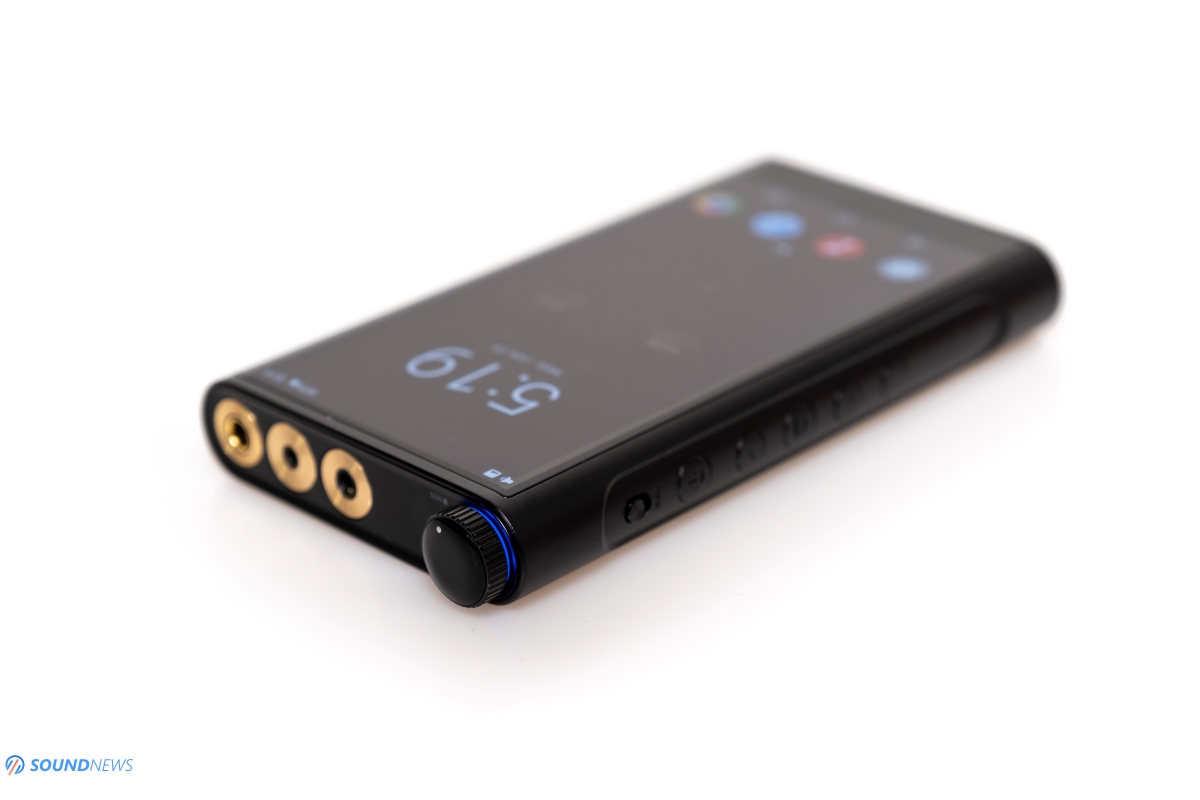
Layout & Buttons
This is the first DAP by FiiO where all the buttons were moved on a single side (on the left) and operating it is easier than ever. All the standard buttons as play/pause, next, previous, power On/Off are present, for the first time I see a hold button and there’s also a programmable button that is not labeled on the outside. You can program it to add a song to favorites, play next song randomly, delete the current playing song, switch filters, switch equalizer, enter BT receiving mode or enter USB DAC mode, I like this one! On the bottom, you can spot just a single MicroSD card slot and the USB Type-C. Yes, just a single card slot, exactly how M11 PRO has, I already explained you why the second slot was dropped in my M11 PRO review. On the top, you will see that beautiful volume wheel that has a pleasant blue light around it while it is charging, you can customize that light, you can turn it On or Off during normal operation or change its brightness. There is also a trio of headphone outputs, FiiO is already notorious for offering great flexibility with all of them. First one is a single ended 3.5mm (1/8”) output, the rest are more powerful balanced outputs coming in 2.5mm and 4.4mm flavors. If you want to unleash the full potential of M15, I do recommend using only the balanced outputs.
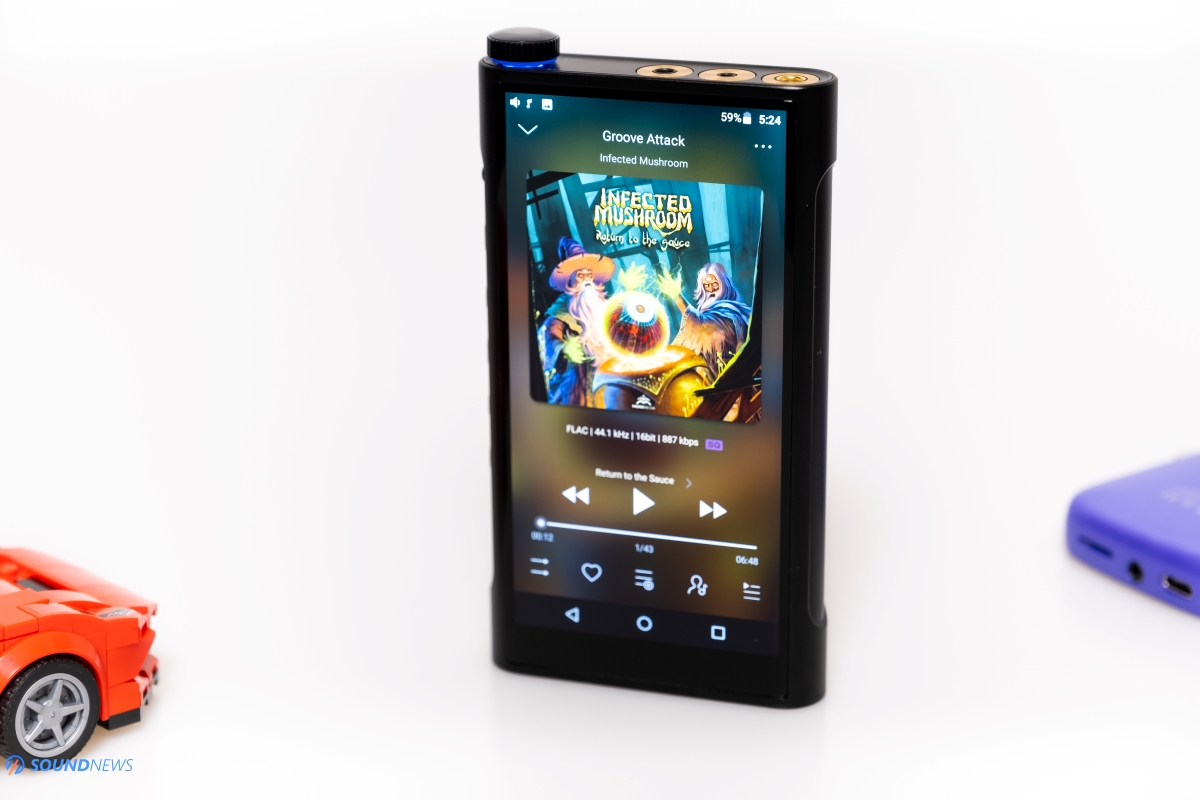
Display
It has the same display assembly FiiO used on their M11 and M11 PRO units. It’s a multitouch 5.15” IPS display with a 720P resolution. It looks bright, sharp and vivid enough for me. Contrast is good, black and white levels are above decent and the viewing angles are nice thanks to that IPS panel. Do note that a bigger display or a higher resolution one will consume a lot more power and a low battery life is the last thing you would want in a high-end DAP. If you check the power consumption of your smartphone, you will observe that a big display is consuming a lot more than that powerful 8-core SoC that is powering it, so I believe a 5.15” inch display is big enough for comfortable music or web browsing and small enough to let the battery be focused on other, more important stuff like audio decoding and signal amplification.

Battery
Here’s a fun fact: FiiO M9 DAP has a 2350 mAh battery, M11 has a bigger 3800 mAh batter, M11 PRO has a much bigger 4370 mAh battery and M15 has a humongous 7490 mAh battery inside. It was mandatory putting a bigger one to feed a much bigger and complex audio circuitry, it added to the weight but it also added few precious hours to the battery life and I’m very glad that FiiO put a really big one inside it. Due to that big battery capacity, I strongly recommend using a quick charger with it, otherwise charging time can take up to 4 hours or more.
From a modest 9.5-hour battery life of M11 PRO (on the 3.5mm output), battery life increased to more than 15 hours which is absolutely great. In real time tests with a 90 dB SPL the battery of course drops to about 12 hours on the 3.5mm jack and to about 9 hours of the balanced outputs. A trip to my parents’ house is on average an 8-hour drive and with a M11 PRO on the balanced out connected to some big-planar-magnetic headphones I never could finish an 8-hour listening spree without a power bank near me, but with M15 I will not need it anymore.
Another cool fact is that M11 can go to sleep for 50 days, M11 PRO for 55 days and M15 will go lullaby for 75 days! FiiO again raised the bar and we have another sleeping beauty champ on our hands. I personally always turn-off all my devices when I’m not using them, but if deep-sleep is important to you and you hate those boot times, then M15 is probably the best at saving battery life for very long periods of time.

Under the hood of M15
M15 is using the same fast and reliable 6-core Exynos 7872 SoC that M11 and M11 PRO are using too. At this moment, this is the fastest one in any DAP at any price. RAM size remained at 3GB and built-in ROM memory remained at 64 GB too, this is where you can save all your favorite tunes.
This particular SoC is the sole culprit FiiO is still at Android version 7.0 and is not supporting Google Play Store. However, on its main menu you can find an Applications bubble from where you can install the most important apps as music streaming ones, other apps like BandCamp, SoundCloud or even third party APK markets like APKPure or CoolAPK. From the last two you can freely download and install most of the apps Google Play Store can offer to you, including games and so on.
At the heart of M15, two flagship AK4499 DAC chips will take care of the digital processing. So far, AK4499EQ is the single commercial made chip that challenged and even surpassed some of the specs of the mighty ESS 9038 PRO DAC chip. Compared to the former flagship of AKM (AK4497), the newest one doubled its pin numbers, increased in die-size, power consumption increased as well and, in the process, digital to analog processing improved a lot as well. AK4499 are not your regular voltage-driven chips, these ones are mostly current-driven and two of them are putting a heavy burden on the battery itself. These chips were made for desktop, AC powered devices and not for portable use, they will consume a lot of electrical power and will dissipate a lot of heat. I know that FiiO went an extra mile and reconfigured the PCB just to be sure that M15 will not get hot and will work an extended amount of time without overheating. FiiO is really proud about those chips and they have all the rights to do so, as in my opinion they implemented them really well. Around those chips, FiiO used two NDK femtosecond crystal clocks to squeeze even lower noise than that of M11 PRO, add a third generation of FPGA clock algorithm and its audio circuitry is looking better than ever.

In terms of power delivery, FiiO went really overboard with this one, under the hood it carries not two, not four, not eight but ten frickin’ op-amps (two OPA2211, four OPA1612 and four OPA1622) for a power output of 800mW in 32 Ohms or 280mW in 300 Ohms on the balanced jacks.
Another first in FiiO’s portfolio of DAPs is using a dedicated USB receiver from XMOS, the latest generation XUF-208 that would make the USB DAC function operating faster, more reliable and freer of any noise from your PC.
There is also something very high-end, that FiiO never used until now: high polymer capacitors that so far only Sony used in their $3200 WM1Z DAP and in their $8000 DMP-Z1 transportable DAP. All those capacitors have a total power reserve of 6660 μF! Even few desktop headphone amps have a lower power reserve than that, so I’m already imagining myself what M15 could deliver in terms of slam and lighting fast dynamics.
There’s a full MQA decoder inside, it fully unfolds MQA files in 8X mode, however at this very moment those files are supported only in FiiO Music App. If you install Tidal, it will unfold them in 2X mode but FiiO informed me that soon 8X mode will be supported even by 3-rd party apps as Tidal and others.
Going wireless, M15 supports 2.4 and 5 Ghz Wi-Fi bands, plus all those fancy Bluetooth codecs as AptX-HD and LDAC. It can work as a Bluetooth sender or receiver. Thanks to a newer BT chip it will not only send data in AptX-HD and LDAC codecs but will receive it at the same speed, with the same codec support.
It needs to be said that M15 is the first DAP in their portfolio that is using a 100% analog volume wheel and as of right now, M15 is not showing on screen the exact volume position. I wish that in a future firmware update, FiiO could add this feature that could save my hearing and few blown drivers of my sensitive IEMs.

Graphical User Interface (GUI)
I will just mention that, this is the same GUI FiiO is using on M11 and M11 PRO, I think it is user friendly, it is reliable and works really fast. I just updated to FW 1.0.1 and so far, I didn’t encounter freezes or reboots. GUI is polished and I didn’t encounter slow downs even when playing DSD or 32-bit Hi-Res PCM content. If you have a strong wi-fi connection nearby, then streaming Hi-Res files works as a charm too.
I see that from the drop-down menu FiiO added some additional stuff, first of all is the “Over-ear headphone mode” that increases the current output of the output stage and as a direct result the output power is doubling. You should enable it only with power hungry headphones really, for sensitive IEMs that would be an overkill. Instead of just two modes like Pure Music Mode and Android Mode, FiiO added another two ones: USB DAC mode and Bluetooth Receiving mode.

Sound Performance
I. Connected to sensitive IEMs
M15 has the total-harmonic-distortion by about 50% lower compared to M11 PRO and about 6 times lower than that of the regular M11. Noise floor dropped as well and separation increased on both the single ended and balanced outputs. As a direct result, I actually never heard the super sensitive FiiO FH7, Simgot EN700 PRO and the Moondrop Starfield IEMs so alive, so open and so ass kicking on any other DAP. After engaging low gain mode, disabling over-ear headphone mode and pressing play, I was mesmerized by the complete silence in some passages, there is just nothing between them, just a pitch-black void with notes that are born out of thin air.
I recommend listening to Shitoshito (Raining Quietly) by Helge Lien Trio and just before the 1-minute mark everything just pops around you in a very natural and non-offensive way. The same song sounded almost as good and as enveloping on M11 PRO, but regular M11 on the other hand was really far away to the other two. The album titled “10” by the same band, revealed nuance and microdetails that I am normally hearing only on a serious desktop setup. Note placement and depth were an amazing surprise to me as I can’t quite believe that I am listening to a portable battery powered device. Double-bass rumbled so hard without losing its grip, I am normally experiencing this kind of sound only with proper desktop power, M15 feels like laughing in the face of danger with an effortless presentation like this one.
I can’t say where I was volume wise, since M15 will not show you the exact volume position, however volume wise there was plenty enough even for the most demanding ones. Even on the single ended output, M15 can drive very heavy loads with ease, so multi-driver IEMs do not pose even a slightest problem for it. Headroom was bottomless, music was flying in all directions, air filled in the room with that dark Norwegian jazz.
Probably the most important aspect is that M15 created a lot of emotions for me, it could make me nervous, sad or happy or just on top of the world. M15 is really effortless sounding and everything it does seems like a child’s play for it.
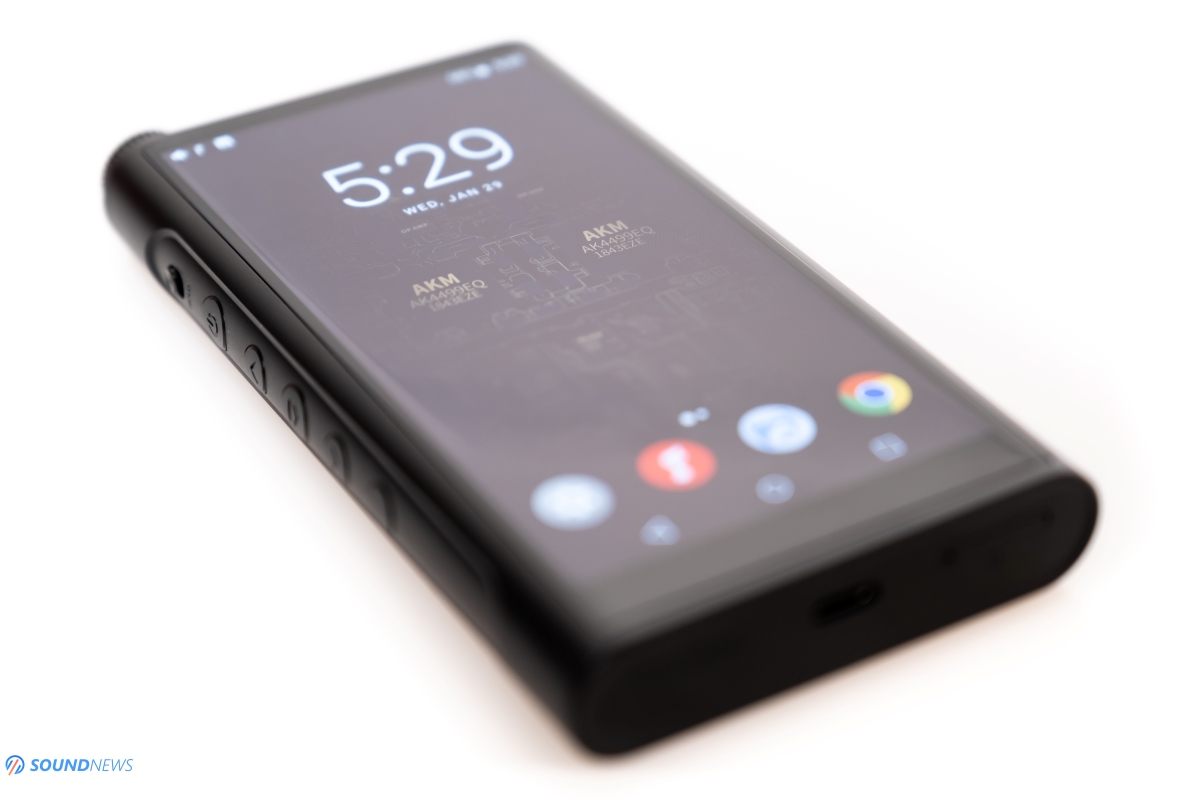
II. Connected to portable over-ear and on-ear headphones
Connecting some old-school portable over ears like Sennheiser Momentum 2 or Meze 99 Classics to it felt like squeezing the last drop of performance out of them. Both M2 and 99 Classics have a warmer tint, and are on the slower and leaner side of things. You can wake them up with some proper desktop power, but out of all portable DAPs I’ve tested so far, only M11 PRO could make them nimble, fast and articulate. M15 is making them like that too but is adding an additional layer of information on top, opens-up the soundstage and everything just becomes deeper and even more effortless sounding.
If I would never listen to M15 I would never write this: I liked M11 PRO a lot but the low-end was great only in terms of quality and not a lot in terms of quantity. Bass always felt fast and nimble but was not going to Mariana Trench levels and sustain was not one of its stronger points. With M15, I am feeling guilty, like opening the Pandora Box, so this is how a proper bass line should be maintained and should vibrate.
M15 is the first DAP offering such a big power reserve and when you listen to some powerful and impactful tunes you just feel M15 delivering an incredible amount of sound pressure level (SPL), it almost makes you feel like going lower volume wise. The sonic impact it creates is just incomparable with other portable units. The name of the game is not detail retrieval or speed as it was on M11 PRO, but effortless, bottomless and powerful this time around.
Driver control was simply the best so far, dynamics were crushing my skull, sound became so big that I thought I exchanged those Momentum2 with some bigger headphones without noticing it, but that wasn’t the case, M15 was just making them sound bigger, ballsier and more imposing as ever.
Volume wise, can’t say really, but I presume at about 60 to 65% % it was already very loud even for me. On high gain and engaging over-ear mode, background remained as black and noiseless as ever and headroom was again bottomless even on the 3.5mm headphone jack.
I believe that all portable headphones, be it over-ear, on-ear, IEMs, dynamic, balanced armatures, hybrids and everything in between sounded as good as those can be on a serious desktop setup.

III. Connected to desktop low sensitivity headphones
From all DAPs made by FiiO, not a single one was really made for driving desktop headphones. M15 is the only one with such a big power reserve not only in terms of Watts, but also in terms of electrical capacitance (μF), meaning it can push a lot of power in an instant without losing its grip and sustain on some low intensity sounds. Even software wise, only M15 has that “Over-ear headphone mode” that was clearly made for driving heavy loads as desktop headphones.
Instead of using some gentle dynamics, I decided throwing M15 in a den of 3 wolves: Hifiman Arya, Erzetich Phobos and Quad Era-1, all three are planars and are mostly current driven. All of them never really worked on portable devices, with just an honorable mention that M11 PRO worked decently with two of them.
For fun, I felt like testing the 3.5mm output first and Quads were first on the test bench. With them I couldn’t reach maximum volume, it was way too loud. I did some experiments with and without the “Over-ear mode” and once it is engaged I’m feeling that the room is filling with music, I feel that bass goes lower, I feel more emotion out of all my tunes, I feel a much higher involving factor with my music and I feel connected to it. Without it, music becomes dryer, a bit lifeless and not that engaging anymore and it’s not just the volume, everything takes a serious hit.
With it engaged, my smile again appeared on my face, dynamics rushed it instantly. When I started listening to my usual bass tracks, I felt how my ears started waving, slam improved tremendously to unrecognizable. Quad ERA-1 were fully driven to their maximum potential even on the 3.5mm jack.
Next was the XL-sized Erzetich Phobos, with huge 106mm planar drivers and with a low 45 Ohm impedance, it needs a lot of current to be driven properly to their fullest. At about 8o to 85% volume position, Phobos was throwing an extended soundstage that was going beyond all other headphones from my stable. M15 was just decompressing my music, pumping a lot of positive energy along the way. I again observed that low intensity sounds started filling my head, bass was going lower and kicked in full force. I would never guessed that I am listening to them from a battery powered device. As with Quads, Phobos were driven to their fullest and I’m extremely happy about that because when I’m traveling, I tend to carry a smaller desktop setup and a pair of desktop planar headphones with me but that soon will change with M15 at my side.
When I switched to Hifiman Arya, I felt that dynamics were still good, but volume wise I felt that I needed to switch to balanced drive, since 3.5mm jack was already maxed out. A headphone adapter is coming my way and I will be testing soon both balanced outputs with it, but until that happens it is clear to me that Arya will not be properly driven on the 3.5mm jack.
Connecting dynamic headphones as HD660s from Sennheiser was an easy task for it and since M15 is having a fuller and more impactful presentation, it made them more enjoyable and harder kicking. Dynamics felt limitless, even explosive sounding with some particular music, a lot of headroom remained on the volume pot. M15 amp section reminded me a lot about the Kinki Studio THR-1 that is having the same sound signature, with the same effortless and hard-hitting nature.

IV. Connected to Wireless headphones and speakers
M15 paired excellent with EH3NC wireless headphones and going to Bluetooth Device Control in the FiiO Music app I could change any setting of EH3NC on the go and sync them directly with M15. Both worked as a team together, had a stable BT connection and walking outside with M15 in my pocket, I never lost a beat so really no complaints here.
My KEF LS50 Wireless loudspeakers connected instantly to it and I could stream Hi-Res content directly from M15 to LS50W seamlessly. I even tried Bluetooth connection with them and while walking with M15 in my hand, my apartment felt too small because I couldn’t lose connection between those two.
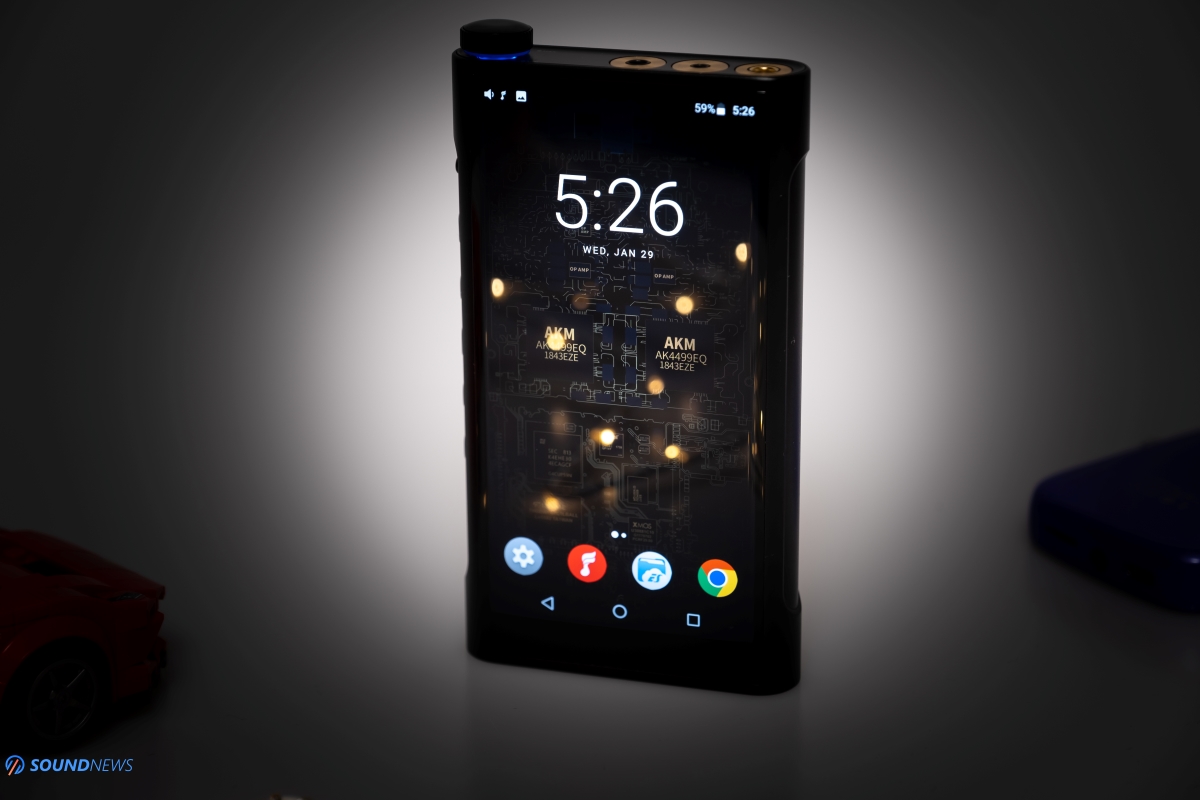
V. Soundstage Size & Depth
M11 PRO was already quite impressive with that large soundscape that stretched wide open especially with IEMs but less so with my bigger cans. M15 is even more spacious, more enveloping and it again reminded me a lot about some desktop units that I am testing of late. I believe for an audio source to achieve an open wide soundstage, the power delivery should be instant and top-notch. That huge capacitance and power reserve made some of those notes flying almost to abyss. I really don’t need stressing myself to hear that openness and airiness around me. An open-wide soundstage with impressive layering will always lead to some impressive pin-point imaging and depth and this is exactly what happened here. I don’t want to sound like a fanboy, I didn’t listen to all the best DAPs of this word, but from the small batch I listened to, M15 is the widest sounding and the deepest of them all.

VI. Transient Response
Here’s the thing, M15 has 28 capacitors inside and 5 of them are quite fat and juicy. If you would just unbox it and took a listen, you would not be impressed by its speed and impact. Those capacitors need at least few hours in settling down. For the best results, I recommend 48 or better yet, 96 hours for a full burn-in before making any real judgement. At first, M15 was sounding too warm, too full-bodied, mellower and slower but as time passed by, it started showing fast executed notes, I’ve felt air moving around, it started keeping up with my music. Those mellower and slow transients were nowhere to be found anymore, M15 started sounding nimble, lighting fast and immediate.
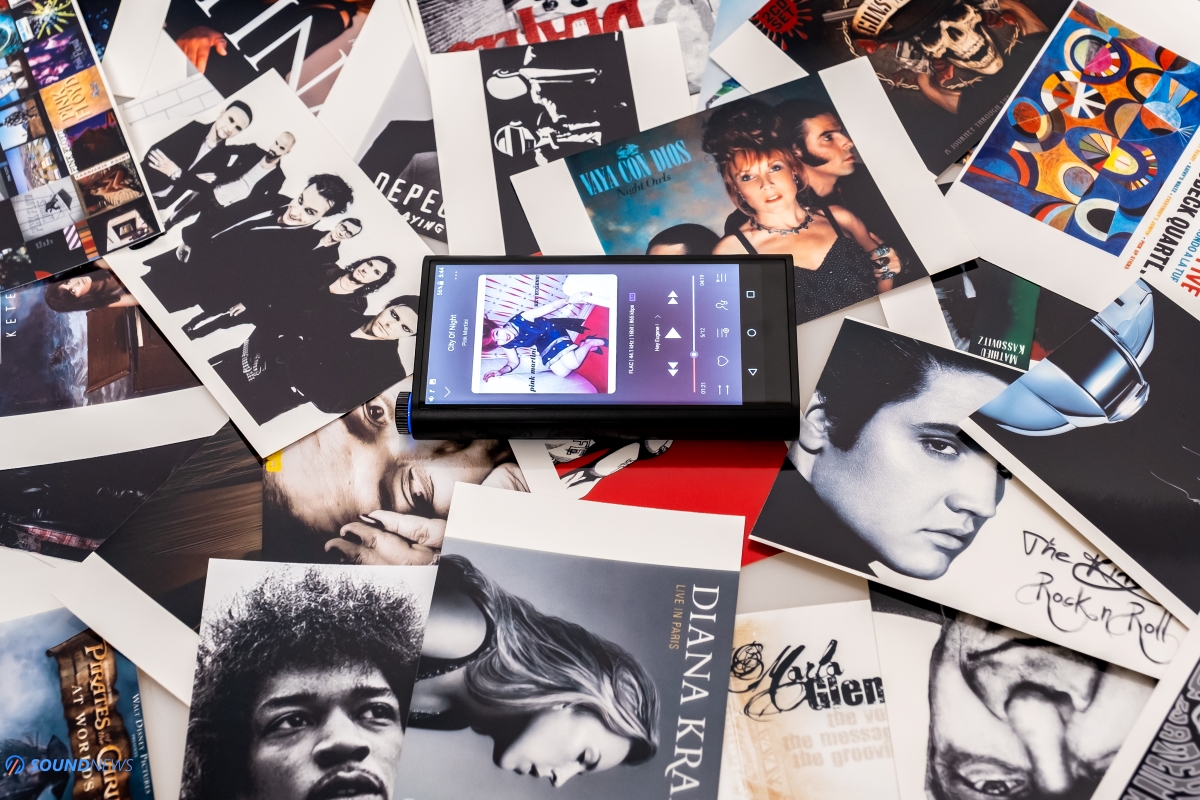
VII. Detail Retrieval
I am sure that those femtosecond clocks, newest generation of FPGA and of course that dual AK4499 setup played a big role in achieving a super clean sound, free of any distortion or harshness. M15 is extremely transparent sounding, clean and grain free even with not so impressive recordings. When I started discerning additional levels of information compared to any other DAP, I knew there is something special about this one. Even some of my favorite songs as White Limo by Foo Fighters that was recorded on a 100% analog Studer A827 recorder with a Neve preamp and mastered on a 100% analog board, becomes almost unlistenable because I’m hearing way too much truth, way too much of it that should be hidden from the listener.
I ran home as fast as I could, I plugged in my reference Element X DAC and took a listen to the same song and that was the moment when my jaw hit the floor. After volume matching with a MiniDSP E.A.R.S. system both the M15 and Element X, I was quite shocked that M15 provided the same amount of detail retrieval: tiny air vibrations of _Gothar_t were there, guitar amp being engaged on Bulls On Parade was easily heard too, tiny whispers on some Radiohead songs were also there.
M15 can replace a high-end DAC without losing anything really except for balanced line-outputs. M15 is resolute and extremely clean sounding and I am quite stunned how much portable DAPs have evolved of late.

VIII. Frequency Response
With M15 I don’t really need to mention a lot about frequency response. Simply because it is straight as a line, it is very extended on both sub-bass and upper treble. It is against those dry and V-shaped sounding sources. M15 possess the deepest bass I’ve heard in a DAP with the right control and grip. Bass is always layered, it always breathes, it’s impactful and it rises my mood level in an instant after pressing on that rounded play button.
Midrange is always natural sounding, velvety like, with deep, soul-reaching voices, having a natural decay of everything. String based instruments and even voices have a really nice vibration, all the voices have a very distinctive pitch and tonality. Midrange is just spot on, it’s pleasant and life-like.
Treble is phenomenal, super extended even past top-octave, lots and lots of details can be spotted in there with absolutely zero brightness levels. It is a bit bright sounding at first, but after about 48 to 96 hours those capacitors will be fully burned-in and will be offering smoothness and micro-detail information that even an expensive DAC could envy it.

IX. Comparisons
It was mandatory comparing it with the former flagship so here we go.
FiiO M15 ($1300) VS FiiO M11 PRO ($650)
I will skip all the specs, tech and everything and will just focus on the most important aspect: sound quality.
The truth is that when comparing both, it really depends what exactly is connected to them. If I test only with my IEM collection, then the difference shrinks quite a lot. Both devices have power to spare and both will provide gobs of power even for expensive multi-driver designs. With FH7, M11 PRO is always fast, clean, super articulate, has a wide soundstage, sometime is too clean sounding somehow, very straight as a line, very linear and sometimes sharp sounding. With M15, FH7 is sounding a bit wider, I hear a fuller bottom-end, it slams me harder, midrange is also having more life in it and it brings emotions to the table. Treble is more or less the same on both devices. The clear difference is there, but the transient response is identical on both.
Moving on to portable dynamic headphones and the difference becomes bigger. M15 is not only harder slamming, but has even a better grip over the headphone drivers. The same infinite sub-bass was heard, with a soul-touching midrange, with the right amount of vibration and natural tonality. M11 PRO is a bit shorter when it comes to string and voice vibrations, it is less involving, it is more upfront and not as deep and wide spread. The difference between both devices is becoming bigger.
And when I move to the big boy category driving some desktop planars, then there is really no contest. M15 just kills the M11 PRO on every single aspect. It is wider sounding, deeper, have a much better control, sounds alive, articulate, possesses incredibly dynamics, slams like a hammer. It will even show an additional layer of detail in the bass, midrange and treble. M11 PRO is boring sounding by comparison (only with big cans), shy in dynamics and will have a lesser musical involvement.
So, I tell you again: it depends on the headphone you are listening to. If you wish to remain at IEMs only, then they are close to each other and if you want to use a wider variety of headphones them M15 delivers its best no matter the headphone.
It was also mandatory comparing the M15 with another DAP from another mother, they look almost like twin brothers and here we go.

FiiO M15 ($1300) VS Sony NW-WM1Z ($3200)
Disregarding the huge price difference, all the tech specs and everything, I will move directly to sound performance and before you ask, yes, WM1Z is the volume uncapped version (the best version).
Power wise, there isn’t a contest here, only on the balanced out WM1Z can impress a critical listener, otherwise the 3.5mm jack barely can move even my portable headphones. I never understood the design philosophy behind this decision, higher battery life? Give me juicy dynamics any time of the day.
WM1Z is also having a big reserve in capacitance and that can be felt almost immediately, it is moving air fast and it is filling the room with it quite nicely. M15 is just a tad wider sounding, with a bigger presence everywhere, I just feel more sound around me, like a musical mist spreading to my ears. M15 is a bit more involving , it just moves my body and tickles my brain a bit more. WM1Z is impressive in terms of soundstage and depth, so far it was the king in this department and yet, M15 is beating it at its own game.
In terms of tonality, WM1Z feels a little bit weird at first, it’s incredible in terms of bass and treble and just OK in the midrange department. It has that V-shaped sound signature that I adore so much, Not. M15 is bottomless in the bass, super extended in the treble but also meaty and present in the midrange. M15 feels like a complete package in terms of frequency response, and WM1Z like a very good attempt but still not quite my tempo. Detail retrieval is actually incredible on WM1Z, but again, not up there with M15. I hear microdetails on Sony, but I need to close my eyes and be in my Zen state to hear them, with M15 all those are so obvious, I just don’t need to be in a Zen state anymore.
When it comes to driving power, M15 is unbeatable and will drive some of the big cans to their fullest. WM1Z can only dream about that, even on the balanced out. There is one thing where WM1Z is the undisputed champion: battery life, it is doubling it compared to M15.
King is dead and long live the new king.

Conclusions
M15 is without a doubt a high-end DAP from any point of view. It is currently having the best technology, the best audio processing power, the biggest battery capacity, the highest driving power, the lowest total harmonic distortion and the list goes on.
M15 is definitely a statement product, feels mostly like a trophy, FiiO did their homework extremely well, they learned from past mistakes and I feel this is their best attempt at revealing and launching a product in the same time. M15 is really a big departure from all their products, even to M11 PRO it feels like a huge leap forward is so many ways.
As a statement product, M15 is not cheap and is not targeted at everyone. If you want only the best no matter the cost, then M15 is right up your alley, it will cost you $1300 but in my honest opinion it delivers more than its cost. As for its competitors from the likes of Sony or A&K, I have only three words for them: watch and learn.
PROS:
- Great design, great material selection and attention to detail
- Fastest response times of any DAP
- Advanced GUI that is easy to use and navigate
- Widest soundstage I ever experienced in a DAP, amazing depth and airiness
- Great tonal balance across the board
- Great Bluetooth codec support
- Excellent micro-detail level that is rivaling high-end desktop DACs
- Super clean and transparent sounding
- The most extended frequency-response
- Noise-less headphone out, works great even with sensitive IEMs
- Among the fastest transient response in a DAP
- Still no Google Play Store support
- You can never know the exact volume position with it
- Sources: Xiaomi Mi9T Pro, Corsair One i160
- DACs: Matrix Audio Element X, KECES S, Burson Conductor 3, Audio-GD D28.38
- DAPs: FiiO M15, M11 PRO, M11, Sony NW-WM1Z, Shanling Q1
- Headphone amps: Benchmark HPA4, Kinki Studio THR-1
- IEMs: FiiO FH7, Simgot EN700 Pro, Moondrop Starfield
- Wireless headphones: Sennheiser Momentum 3 Wireless, FiiO EH3NC
- Portable headphones: Sennheier Momentum 2, Meze 99 Classics
- Full-sized headphones: Erzetich Phobos, Hifiman Arya, Quad ERA-1, Sennheiser HD660S
- Loudspeakers: KEF LS50W
- Interconnects: QED Reference XLR, Aune AL3 XLR
- Power Cables: Isotek EVO3 Premier (x2)
- Balanced Power Conditioners: PLiXiR Elite BAC 400, KECES BP-600

View previous replies…
DarKu
@Arctican Congrats!!! I listened to a SP1000M and was underwhelmed by its performance, no way I would pay 3.2K for that thing. M15 drove even a pair of Audeze LCD-4 from the 3.5mm out so that says a lot about its power output. The only thing I dislike about M15 is that it gets too warm if I engage "over-ear mode", it even supports Google Play Store with the latest update.
Count Strahd von Zarovich
Did you end up using balanced cables for the Arya? What did you think?
Puroplatino
Hey guys one quick question... how does the M15 do with the Sennheiser HD800S? In terms of volume? Will it drive them to hearing damage zone? I ask because I’m kinda deaf and I never top out with the volume. Sorry if this is a Noob question but I’m a 2 channel guy and I’m new to HeadFi. Thanks and Cheers
DarKu
Reviewer at Soundnews
Pros: Interesting and smoothly shaped design, lightweight and portable
- A quite natural sound signature
- Great tonal balance across the board
- Wide soundstage, deep and airy sounding too
- Great Bluetooth codec support
- Works as both a sender and as a Bluetooth receiver
- Impressive detail retrieval at this size and price
- Clean and transparent sounding
- Noise-less headphone out, works great even with sensitive IEMs
- Impressive price to performance ratio!
- A quite natural sound signature
- Great tonal balance across the board
- Wide soundstage, deep and airy sounding too
- Great Bluetooth codec support
- Works as both a sender and as a Bluetooth receiver
- Impressive detail retrieval at this size and price
- Clean and transparent sounding
- Noise-less headphone out, works great even with sensitive IEMs
- Impressive price to performance ratio!
Cons: No Bluetooth 5.0 support
Shanling is known to be making portable digital audio players for quite some time now. M3 digital audio player that debuted in 2014 came like a storm, even at that time it had DSD playback capabilities, it had a big capacity battery, an interesting Cirrus Logic chipset, lots of power under its belt and a very unique design with a huge volume knob that resembled big integrated amplifiers. Next year they launched a smaller M2 DAP that had big advancements in terms of user interface, then they launched their flagship M5 and since then, they never really stopped tinkering with small and portable music players. What I liked the most about them was not all those cool specs and design decisions but their actual price. They were always very affordable; at their core they were consumer oriented but with audiophile technology inside.
Take the M1 or M0 as examples, they are small and really portable devices, have good specs, powerful Bluetooth capabilities, are made out of metal and yet are very affordable, together those two are cheaper than most decent quality headphones I know of.
The DAP that I will be testing today is not a direct successor to M0 or M1 but it is something in between those two, with a much bigger battery life and a much sturdier construction, without further ado please meet the newest Shanling Q1 DAP.

Design & Build Quality
Q1 feels absolutely impressive and stays perfectly in the hand. It is quite small but at 137 grams it feels really solid and dare I say heavier for its size, the zinc alloy body is thick and much heavier than anodized aluminum, it all makes sense now. It made a positive first impression on me and I am looking forward to its sound performance.
Instead of just going for the boring black and shining silver, Shanling put some colors in its Q1, I have the purple version (I believe this is a limited edition for press) and I hear that multiple colors are coming along the way like baby blue, creamy white, forest green and red. Shanling used a special coloring method that has great adhesive properties with zinc alloy and why not add a bit of sparkle, glitter, some color and a natural shape.
Q1 has a very rounded shape and it is free of any sharp edges, it is very much against all those sharp A&K designs. The smooth surface and those rounded edges remind me a lot about shapes that can be found in the nature, it looks like a polished purple stone to me but you might see something different in it.
This chapter is very subjective, I think it looks quite different and interesting compared to others and it is definitely targeted at younger generation and not at the grumpy audiophiles.
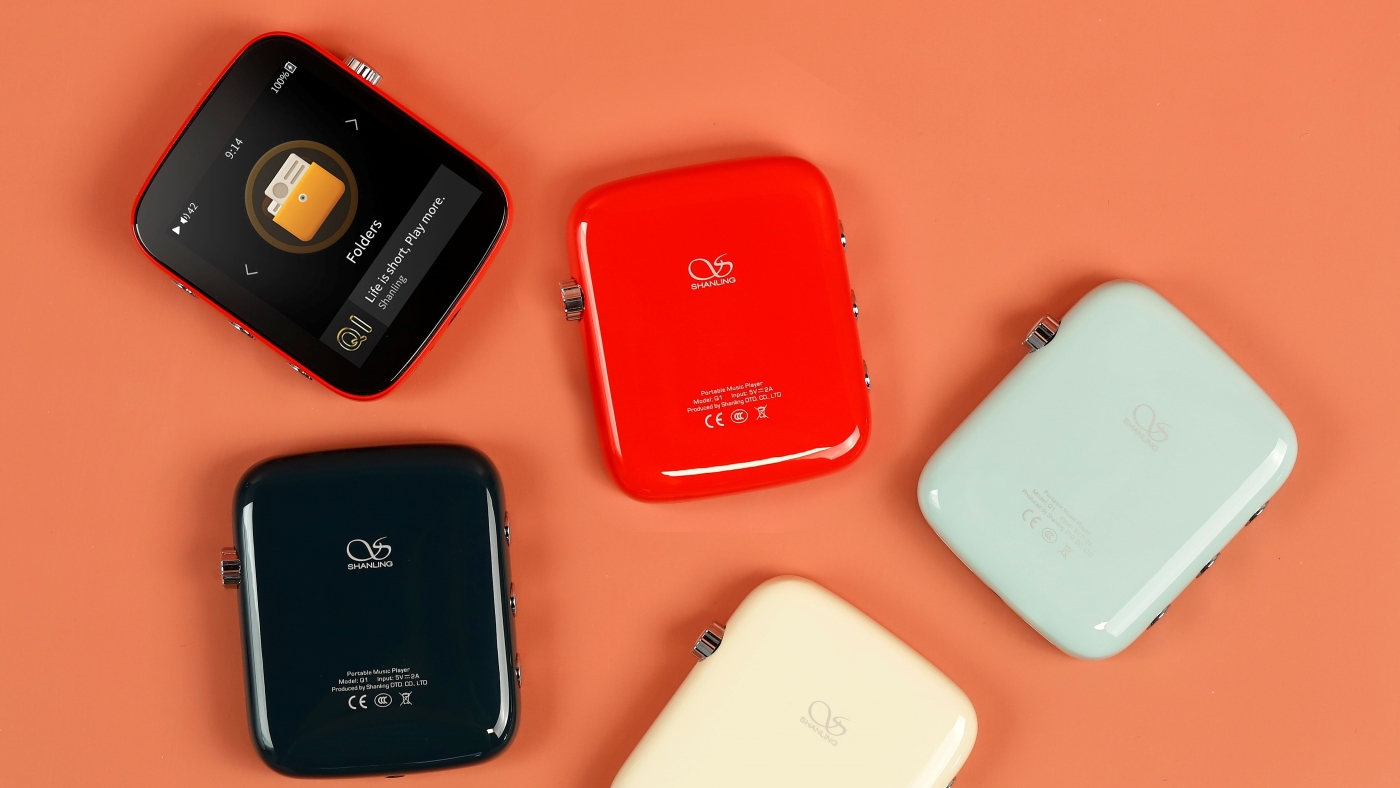
Buttons & Layout
Q1 is a touch-screen device and it loves to be touched and swiped in all directions but it still has few ports and buttons. On the left it has 3 buttons: Next, Play/Pause and Previous buttons. On the right it has a pleasant volume wheel that also works as an On/Off/Stand-by button and on the bottom you have your USB Type-C (very glad about this one) that has triple duties: it will charge your device, it can be used for data transfer or it can be used together with a mobile device that supports USB OTG or with a PC or MAC in case you want to use it as a dedicated Digital-To-Analog-Converter or DAC for short.
Yes! It can be used as an external audio card even for your smartphone, very cool feature. There is also a 3.5mm (1/8”) headphone jack that can work as a clean 2V line-output and there is also a microSD card slot that supports cards up to 2Tb! That is plenty even for a huge music collection.
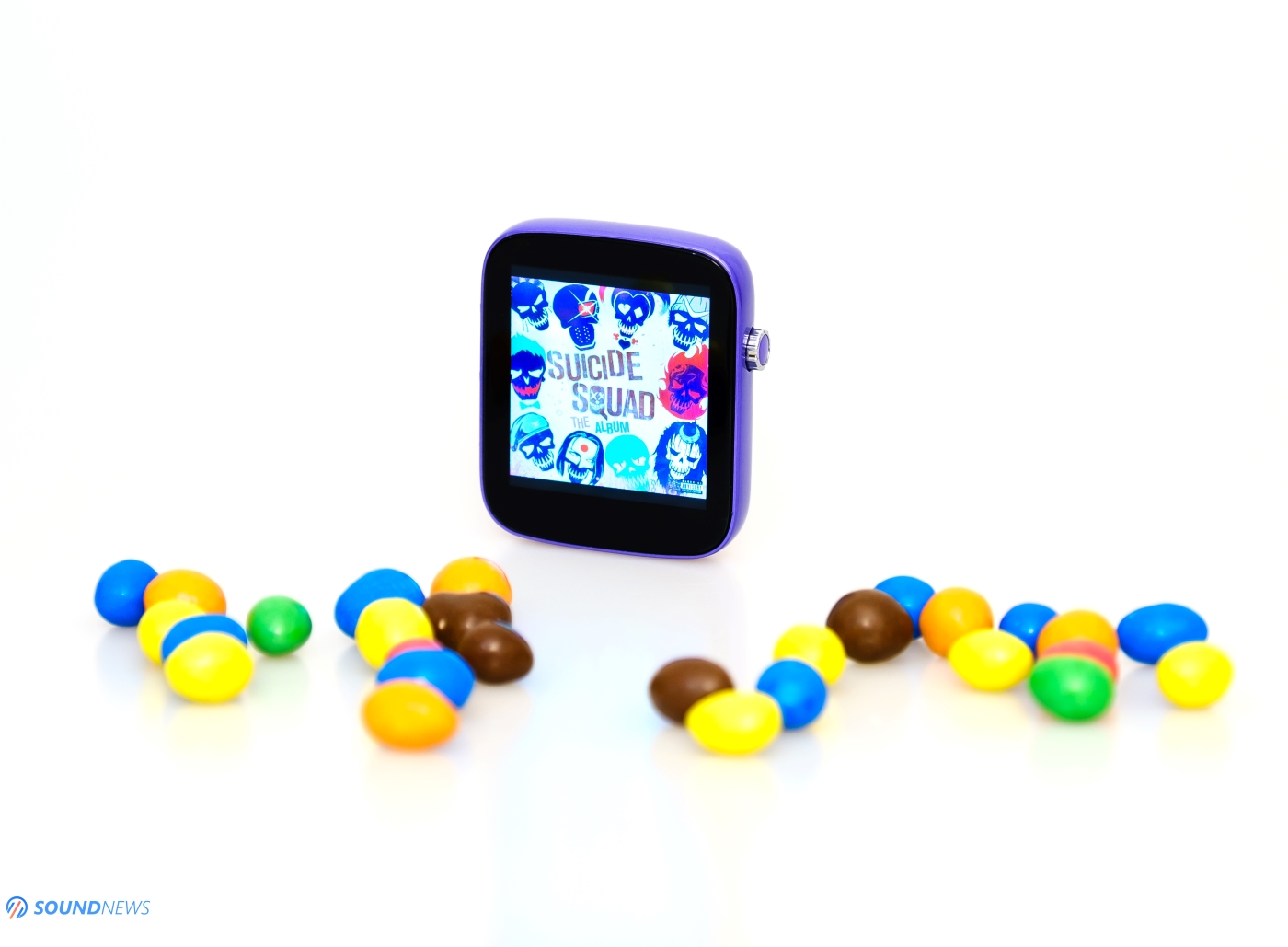
Display
Q1 has a decent display size of 2.7” and a resolution of 360 by 400 pixels. This is an IPS LCD panel, looks pretty sharp to me and has a decent amount of brightness. I wish the bezels would be a bit smaller, but everything else is nice. Doing swipes and touch screen gestures feels more natural on this screen size than on the tiny Shanling M0 or FiiO M5. I like the swipe gestures a lot more on this one especially in the main menu it feels a bit more responsive with swipes than with touches.
Battery
Q1 has a battery capacity of 1100 mAh, almost double the size of the tiny M0. As a result, battery life has improved a lot, it rose from 15 hours to 21 hours of music listening to lossy audio formats. Once you go lossless and really loud the battery drops to about 14 hours or so. I have listened to it with a wider variety of headphones, Quad ERA-1 planars being the hardest task for it, I was almost maxed out volume wise, I listened to 6 hours the first day in a long trip, 6 hours back home and there was less than 15% battery left on it. I have no complaints since a serious audiophile DAP can hold about 7 to 8 hours at high listening volume with my planars. Q1 has a great battery life considering its power output and its size. Q1 can also go into deep-sleep mode for about 20 days depending on the usage but if you want to preserve battery life just turn it off completely.
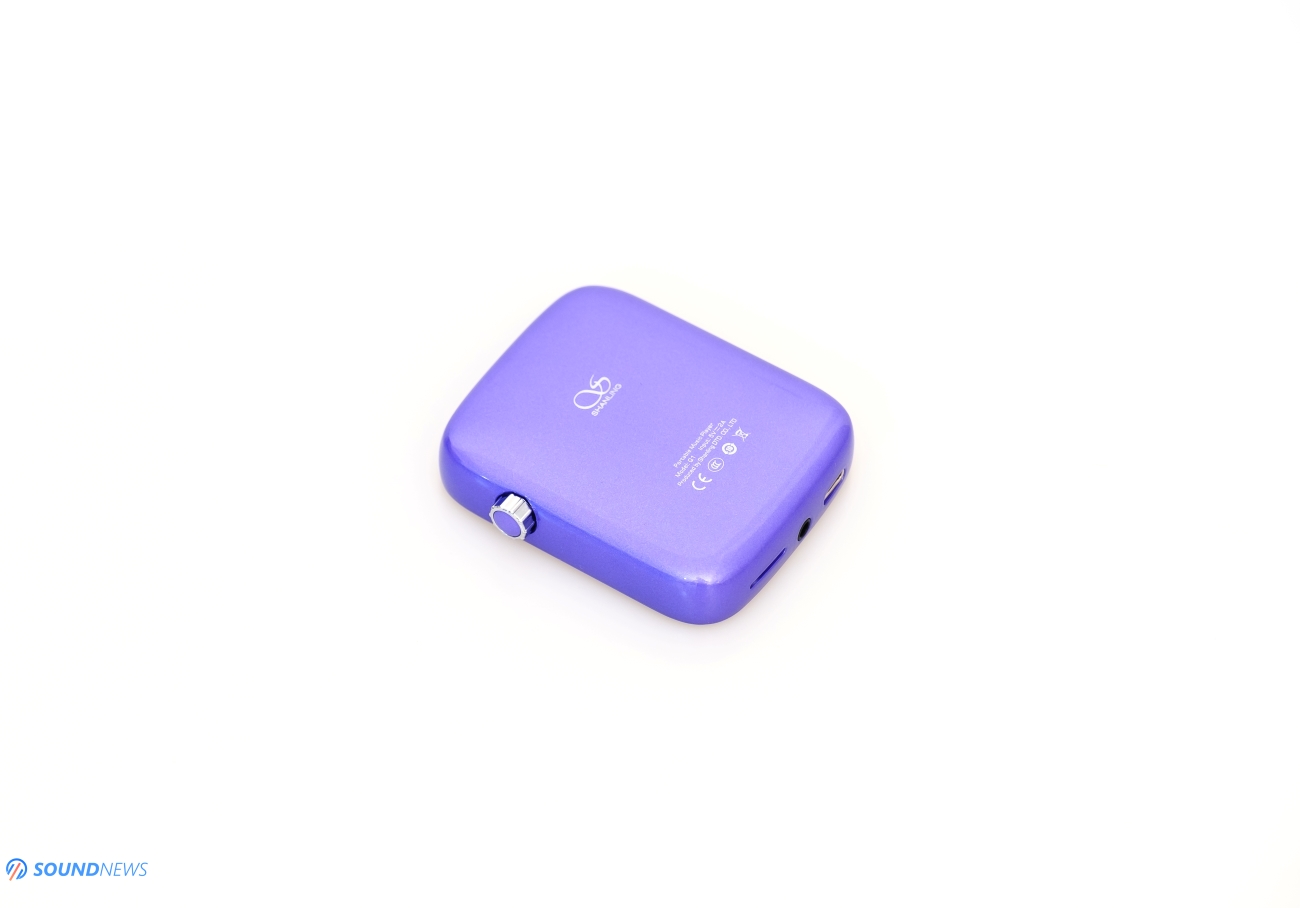
Under the hood of Q1
Q1 is rocking a custom made MTouch OS by Shanling, this is stripped down OS and very lightweight in terms of hardware requirements so it was just natural using an affordable low voltage and dual-core Ingenic X1000E CPU clocked at just 1 Ghz.
Q1 doesn’t have an internal ROM memory and is completely relying on the external MicroSD cards, it supports up to 2Tb cards. RAM memory size is 64Mb but this is not that important since it moves decently and no other 3-rd party apps can be installed on it.
The most important aspect of Q1 is its internal DAC chip, it’s an all-in-one ES9218P from ESS Technologies. I called it an all-in-one because this is not a simple DAC chip, this is a System-on-Chip (SoC) that also carries a simple headphone amp circuit and the final output stage. ES9218P can also output a clean 2V Rms if you use the line-out feature. From initial audio decoding to the final amplification stage, everything is done inside it, so signal path is the shortest it can be, it eliminates the need of a bigger PCB or the use of thin film resistors and increases battery life.
This one is outputting about 80 mW of power into 32 Ohms with an output impedance of just 0.2 Ohms. In simple terms it means that it should work great even with ultra-sensitive IEMs without sacrificing the damping factor. Ground noise stays at less than 1.5 micro Volts on low gain and less than 3.2 micro Volts on high gain meaning it should have a dead-silent background and noise-floor should be nowhere to be found even with multi-driver and sensitive IEMs, I will be testing that soon.
Shanling is using a powerful Bluetooth chip inside and Q1 can work not only as a Bluetooth sender but also as receiver. As a sender (to a wireless headphone for example) it can output SBC, AAC, AptX and LDAC and as a receiver (say receiving data from a smartphone) it accepts AAC and LDAC codecs. Bluetooth version is 4.2 and not the latest 5.0 – this is its only downside but with a pair of Sennheiser Momentum 3 and FiiO EH3NC I didn’t lose a beat while listening to music on the go. It paired nicely with two TWS earbuds, few wireless headphones, with my TV and with few wireless speakers. I was losing the signal at about 10 meters away and with 2 concrete walls between us, that is more than enough in my book. If I am putting it in my pocket and pair it with some TWS earbuds or some noise cancelling headphones the signal stays strong and steady all the time.

Graphical User Interface (GUI)
Shanling uses a very simple MTouch OS, this is probably the lightest one I’ve seen and most of its features I learned by myself, after one hour of playtime I didn’t even need the user manual so it’s quite intuitive and easy to learn.
Q1 can be operated with those 3 buttons and the volume wheel or by single touches or swipes but I personally love swipes the most especially in the main menu.
Once you go home screen, a single icon will be shown on the screen at a time like: My Music, My Favorites, Folders, Playlist, Playback and System. Most of them are self-explanatory, Playback will have all your playback settings and in System you can enable or disable BT, choose the USB mode, update its firmware and many other features. Once you select any icon, a swipe from left to right will get you back one step and a swipe from the bottom to the top always get you in the main menu. Once you start listening to some music a single tap will show the cover art or the music player functions. A Swipe top to bottom will reveal a quick menu where high or low gain can be selected, where EQ and BT can be engaged or disabled or many other features.
The only two things that are trickier to find and setup are the Bluetooth and EQ, from the top to bottom menu you can only enable or disable them. To properly set those you need to go to System for pairing or unpairing Bluetooth devices, then you need to select Playback and choose any of the 8 EQ built-in presets or enable 2 customs EQ ones that can be tuned to your liking.
Overall, the GUI is quite polished, I’m on FW V1.1 and it moves decently fast. It doesn’t stutter like FiiO M5 did when playing 32 bit Hi-Res files or DSD content. With regular lossy files like mp3 or with simple 16 bit WAV or Flac files it moves fast and I have no complaints.
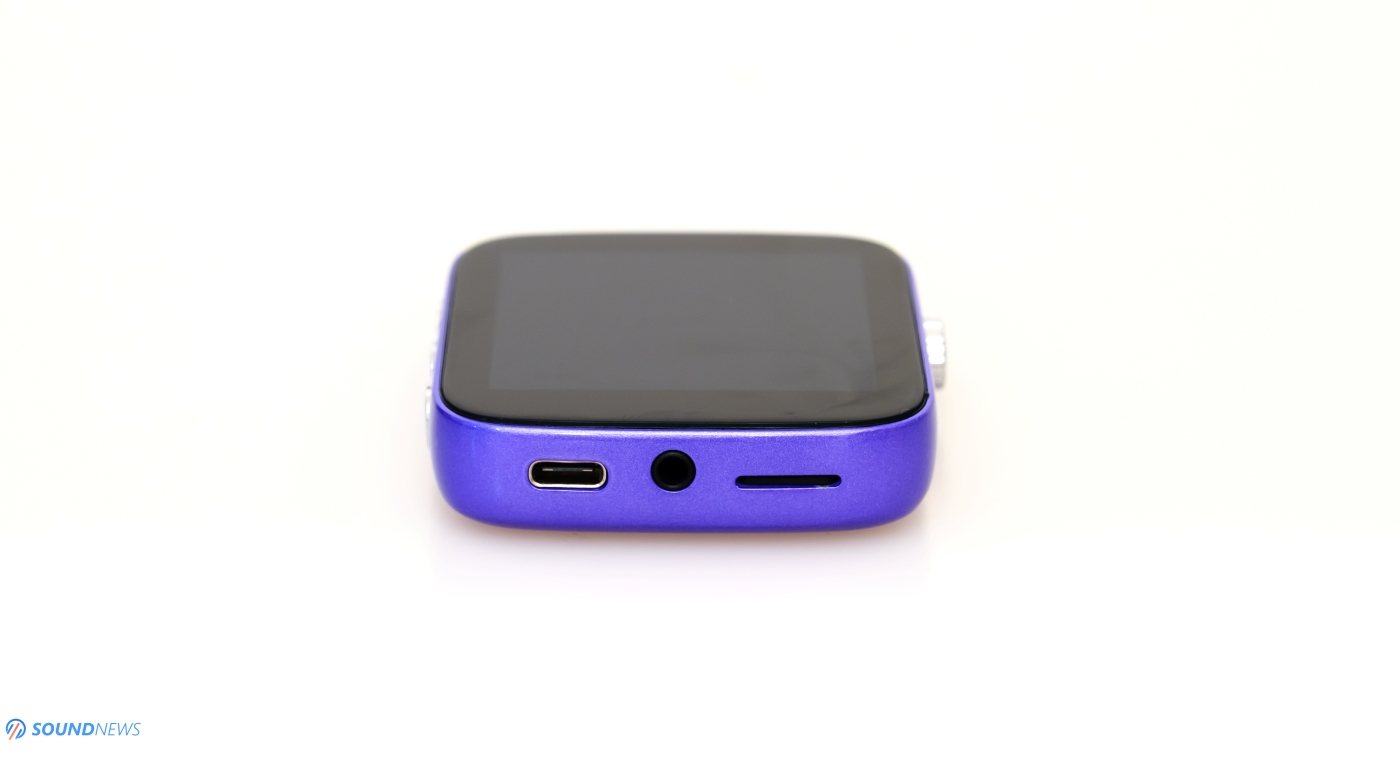
Audio Performance
I. Connected to wireless headphones and speakers
My KEF LS50W speakers are also wireless and support the AptX codec, Q1 connected to them in an instant, since my speakers are right in the middle of the apartment, as much as I tried making a hard life for Q1 by walking away from them, the signal would always stay strong without hiccups or stutters. Connecting Q1 to Sennheiser Momentum 3 Wireless I could leave Q1 in my office and walk with M3s on my head. About 5 meters away and 2 concrete between us everything was fine, music played perfectly, add few meters and music would still be perfectly fine. Only in the last 2 rooms I started losing few beats and music was stuttering – that happened about 10 meters away with 3 concrete walls between us. By my standards that is a strong Bluetooth signal, even with version 4.2 it worked really nice. While walking outside or doing a workout with M3 on my head and Q1 in my pocket the signal was strong and didn’t lose a beat in a 2-hour period.
II. Connected to sensitive IEMs
First thing that struck me is how silent it is with sensitive and multi-driver IEMs. FiiO FH7 and Simgot EN700 PRO shown zero audible hiss or background noise, even on high-gain with a maxed-out volume. In this regard it stays up there with the best, even on same level with the $3000 Benchmark HPA4 which is kind of impressive.
Testing multi-driver IEMs was an easy task for it, at low gain volume wise I needed about 60 (out of 100) for FH7 and about 65 for EN700 PRO. Going high gain I was at about 48 volume level for FH7 and about 53 for EN700 PRO. All in all, it has plenty of volume even on low gain for any IEMs I have tested, I also have some entry level and mid-tiered IEMs but those are even more sensitive to voltage swings and don’t even need to be mentioned here.
Driver control was excellent with IEMs, I’ve heard punchy notes on the right music and overall a very pleasing and engaging performance. Dynamics were up there with higher priced DAPs and sincerely I have close to zero complaints when it comes to IEM pairings.
Listening to Instant Crush and then to Giorgio by Daft Punk at 24-bit, 88 kHz was quite a revealing performance, music was clear and outlined, muddiness was nowhere to find. Everything sounded musical, pleasing, groovy and up-lifting. It was weird at first, since ESS Sabre design are not sounding this way most of the times, I am pretty sure Shanling tried extracting the last drop of performance out of ES9218P and they probably achieved that.
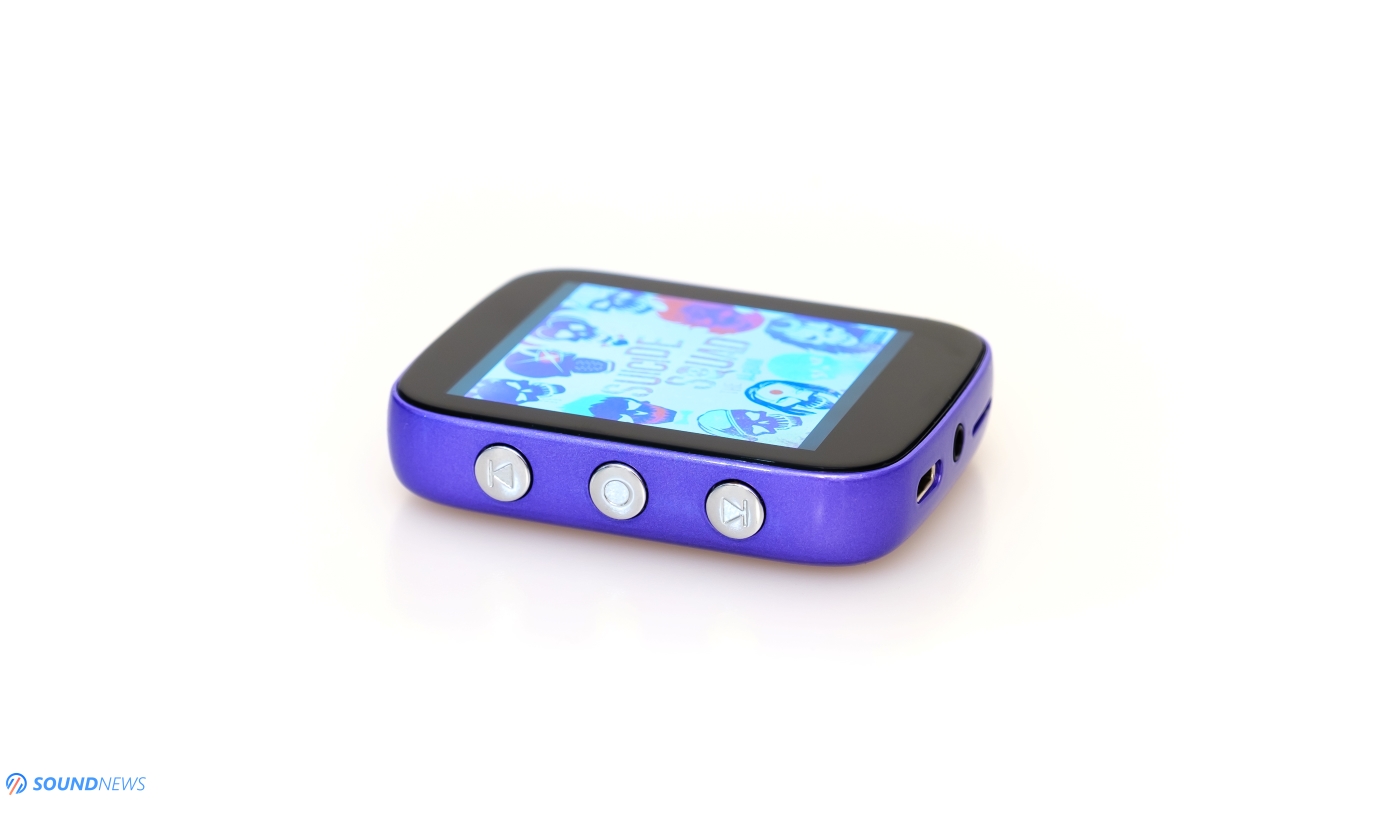
III. Connected to portable on-ear or over-ear headphones
There are still people who enjoy music on the go with simple wired headphones like I do so I thought: hey, I should test those with Q1, why not? I tested Sennheiser Momentum M2 (over-ear version), then Momentum 3 and later on a hand-crafted portable headphone called Erzetich Thalia.
With Momentum 2 (and Momentum 3 for that matter) on low gain I went straight up to 82 volume for the same sound pressure level (SPL) I had with IEMs. On high gain, volume dropped to 72. Erzetich Thalia needed 85 on low gain and about 75 on high-gain since it has bigger drivers than M2.
Volume wise Q1 is capable of driving any on-ear or over-ear portable headphones without a problem. There is not a single trace of hiss or noise obviously and those worked absolutely wonderful with it. Since Q1 is a bit fuller sounding (that is very unusual taking into accounts its all-in-one SoC), it worked great with a wider variety of headphones and with Momentum 2 and 3 it sounded even bassier and warmer then how I remember them, very pleasant in a way.
Driver control was there, so were those pleasant dynamics, they rose and dropped in an instant. Q1 has a punchy nature that slams great with modern or old music alike.

IV. Connected to desktop low sensitivity headphones.
This test was done mostly for fun since normally you wound not use a portable music player with some big and heavy open-back desktop headphones like Hifiman Arya or Quad Era-1. With Era-1 only high-gain worked and I was somewhere between 96 and 100 and maxed out on some classical pieces. Hifiman Arya underperformed and needed much more power than 80mW. Quad Era-1 sounded almost nice, everything was there except for speed, impact and driver control. Those sounded slower and a bit loose compared to desktop solutions.
A pleasant surprise was connecting it to Sennheiser HD660S, although I felt I am again losing a bit of speed, impact and some dynamics in crowded passages, those actually sounded pleasing and quite engaging. Volume wise I would sit somewhere between 90 and 94 on high gain and due to that warmer and punchy nature, the overall performance was pleasing, it sounded natural and quite deep when it comes to bass. HD660S performed like connected to an entry-level desktop Hi-Fi setup and that is a big compliment for the small guy. This was an interesting experiment but also a reminder that desktop planar-magnetic headphones should be only used at home because of their power requirements and open-back design.
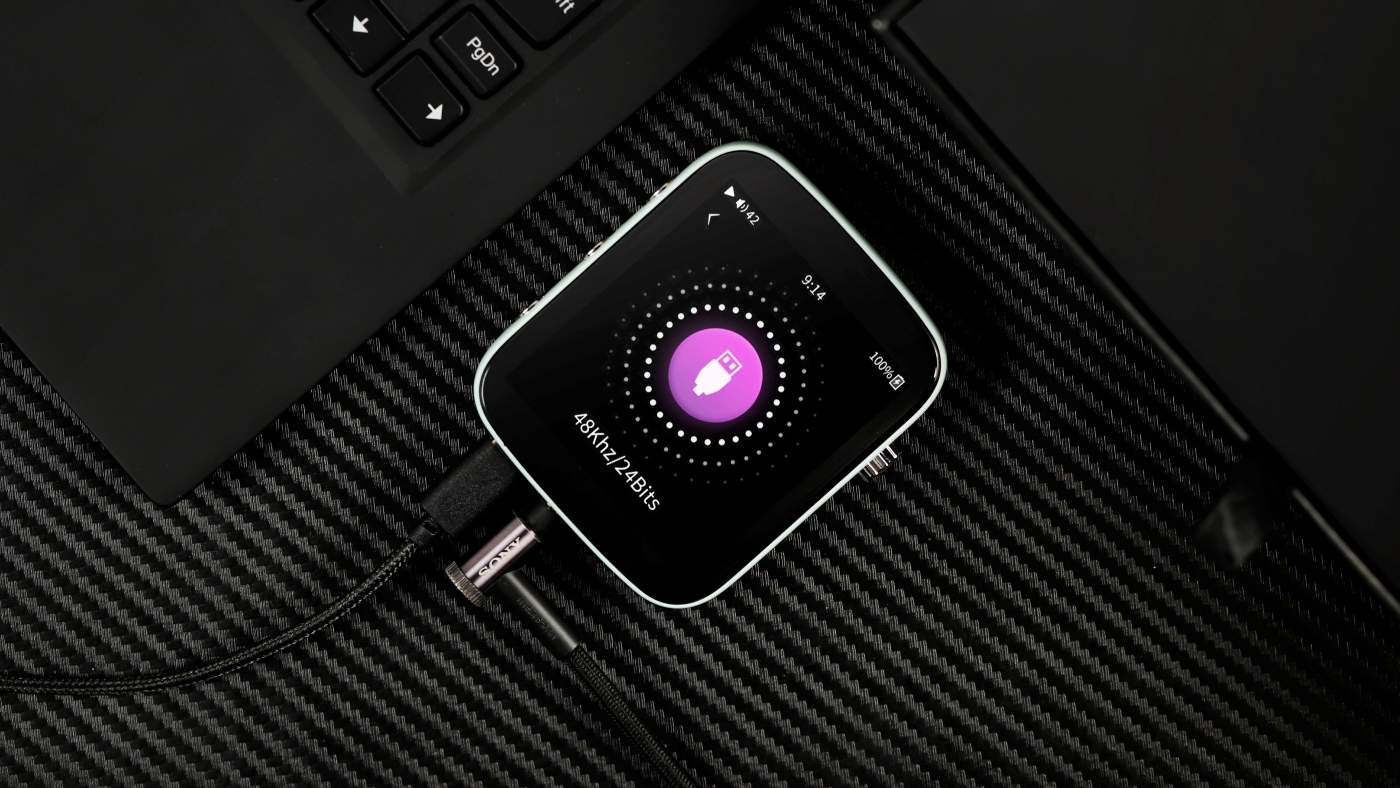
V. Connected to a desktop PC in the DAC mode
I was pleasantly surprised to see the DAC feature implemented in such a small device; I am not crazy about it but someone will surely find this feature interesting. Since Q1 is still an unreleased product I installed the DAC driver from the Shanling M0 and it worked wonderfully!
Shanling Audio Control Panel sees it as Q1 so everything is fine. I recommend leaving the Streaming Mode at Safe and Asio Bufer Size at Auto for the best results.
As I expected, it works perfectly, I listened to some Flac files via Foobar2000 and JRiver and it sounded basically the same as in the DAP mode. Even 24 bit files worked no problem and headphone volume could be controlled by it. If you select Line-Out before connecting it to a PC then Q1 will work as a standard desktop Hi-Res DAC, a nice touch!
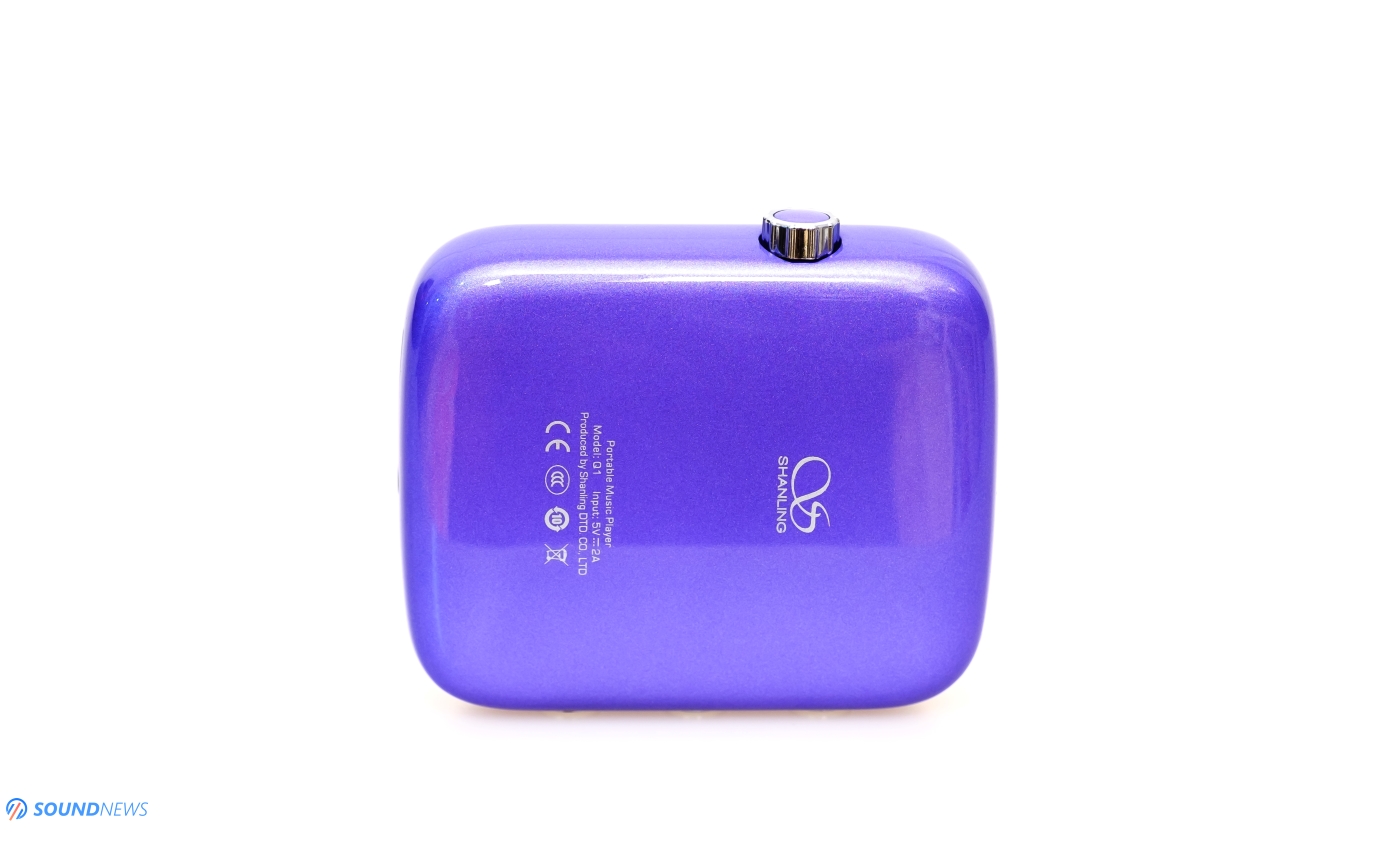
VI. Frequency Response
I will continue describing Q1 mostly connected to IEMs and portable headphones I mentioned before. I continued listening to Random Access Memories by Daft Punk and I couldn’t overlook that big, plushy, soft, bold and deep reaching BASS.
I believe Q1 has a good sub-bass performance and I have spotted it even on demanding tracks, I’m hearing it very clear, precise and deep reaching. I think Q1 has a right dose in terms of sub-bass, it is rumbling, engaging, has a good sustain and doesn’t overshadow anything else.
Mid-bass performance is even better, I consider it elevated by my standards, it is fuller and bolder sounding. It is also somehow softer sounding and transient response is not as good, speed and impact are not the best. Mid-bass notes are coming slower towards me and are going away slower than usual too, those created that warm feeling for me. Combine that with a warmer sounding headphone like Sennheiser Momentum 2 and it is like listening to some digital vinyl, a very smooth and easy-going performance. Because of that I tend to like it more with dry or treble enhancing headphones just to counter balance the musical performance without touching the EQ.
It is a bit odd (I’m probably saying it for the third time) having a smooth, musical and deep reaching midrange for this particular DAC chip and manufacturer. Mid-bass notes are spilling a bit over the midrange and again I am hearing the midrange fuller sounding, meatier and carrying a heavier tone than usual. Listening to older rock recordings and then moving to newer ones I felt like I am looking at a photo through a vivid filter or something like that. Everything is more colorful, it is just juicier sounding, guitars have a longer vibration, the voice is soothing and very deep reaching. Midrange performance is very good, it is still a bit elevated by my linear standards and this kind of midrange makes a lot of sense since most of current production IEMs are V-shaped in terms of frequency response.
Everything from Elvis Presley, The Beatles, Led Zeppelin to newer rock tunes sounded natural, engaging, deep and just a hair slower than how I remember them on my desktop equipment.
Treble is quite extended but because of that elevated mid-bass and midrange is it somehow put in the background. It never draws attention to it and most of the time will not sound bright or harsh. It is just there in right doses. Listening to some classical pieces I can still hear the start and the end of those bells and cymbals, drums are decaying at the right moment for me. It’s funny that all those mid-tones are slower sounding a bit but treble is not like that, it has a quicker tempo and a faster decay too.

VII. Detail Retrieval
Q1 is decent when it comes to how much information it can extract from your favorite tunes. It will extract a decent amount if you pair it with a nicer IEM or portable headphone. With FiiO FH7 I can hear the guitar amp being engaged at 3-minute mark on Bulls On Parade by R.A.T.M., I can hear feet touching the piano pedal on Moonlight Sonata. It will not extract ultimate micro-detail information like air mass moving around the room, or a car passing by the recording room but it doesn’t really need to. Young listeners will probably use it with some wireless headphones, maybe a decent IEM, most of us just want to have a relaxing musical experience and Q1 offers that in spades. If you want to hear the car passing by, you will need to use an upper-class DAP like the Shanling M6 for example.
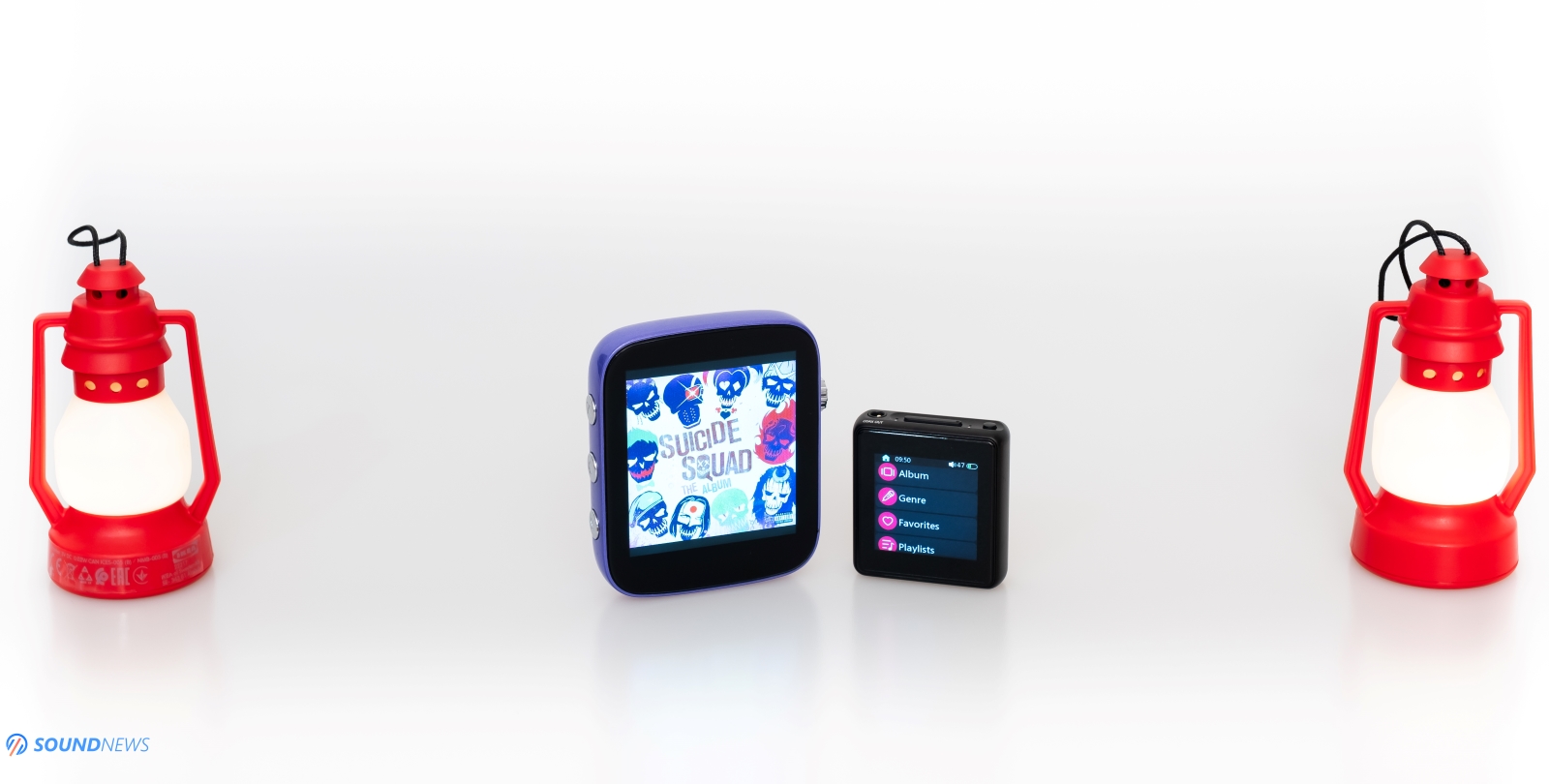
Comparisons
There is one device that has the same functionality, uses the same CPU and I consider it a competitor for Q1 and that is FiiO M5.
Shanling Q1 ($120) VS FiiO M5 ($100)
FiiO M5 is smaller in size, it is easier to carry, however that tiny 1.54” touch-screen is problematic when trying to select a song or changing some settings. It has glass on the front and on the back and a hard-plastic shell around it, Q1 is mostly metal made and feels much sturdier in hand. M5 wins in terms of portability but loses in terms of build quality and usability because of a smaller touch screen.
In terms of specs, FiiO went with an entry-level AKM chip, with a much smaller capacity battery of 550 mAh (half the size of Q1) and will play music up to 12 hours at half volume. M5 offers considerably less power, about 24mW into 32 Ohms, Q1 offers 80mW of power in the same impedance. You can basically use some desktop headphones with Q1 (like Sennheiser HD660S for example) but you can’t do that on M5.
When it comes to sound, FiiO M5 is even warmer sounding and hides a lot of treble information especially on cymbals and bells, so higher registers are not the cleanest or extended. Listening to high quality recordings I have always a feeling that something is not right, something is missing and that is mostly because of the mediocre treble detail. Q1 is clearer sounding with cleaner leading edges of the notes, treble can be sparkly, extended and detailed. Q1 is not messing somehow the tonal balance and doesn’t rush forward the musical performance. When M5 loses power in crowded moments, it also loses control and everything just happens closer me, it is more crowded and muddier sounding. Both have a pleasant sound to them but M5 is just plain sounding with very few Hi-Fi attributes. Q1 feels like a clear upgrade, it’s more powerful, more controlled, sounds wider and doesn’t mess around with that soundstage, if its wide - it will sound wide. In terms of speed, M5 offers longer decays and everything just lingers a microsecond more, transient response is just OK and not that impressive, Q1 is not a Ferrari by comparison, yet it’s a bit faster and slams harder with every single kick and note. Detail retrieval is much better on Q1, it’s not even a contest, it will reveal more nuance and just plain more information from your favorite tunes.
There is really not much to add about them, Q1 is just in another league when it comes to music listening and driver control.
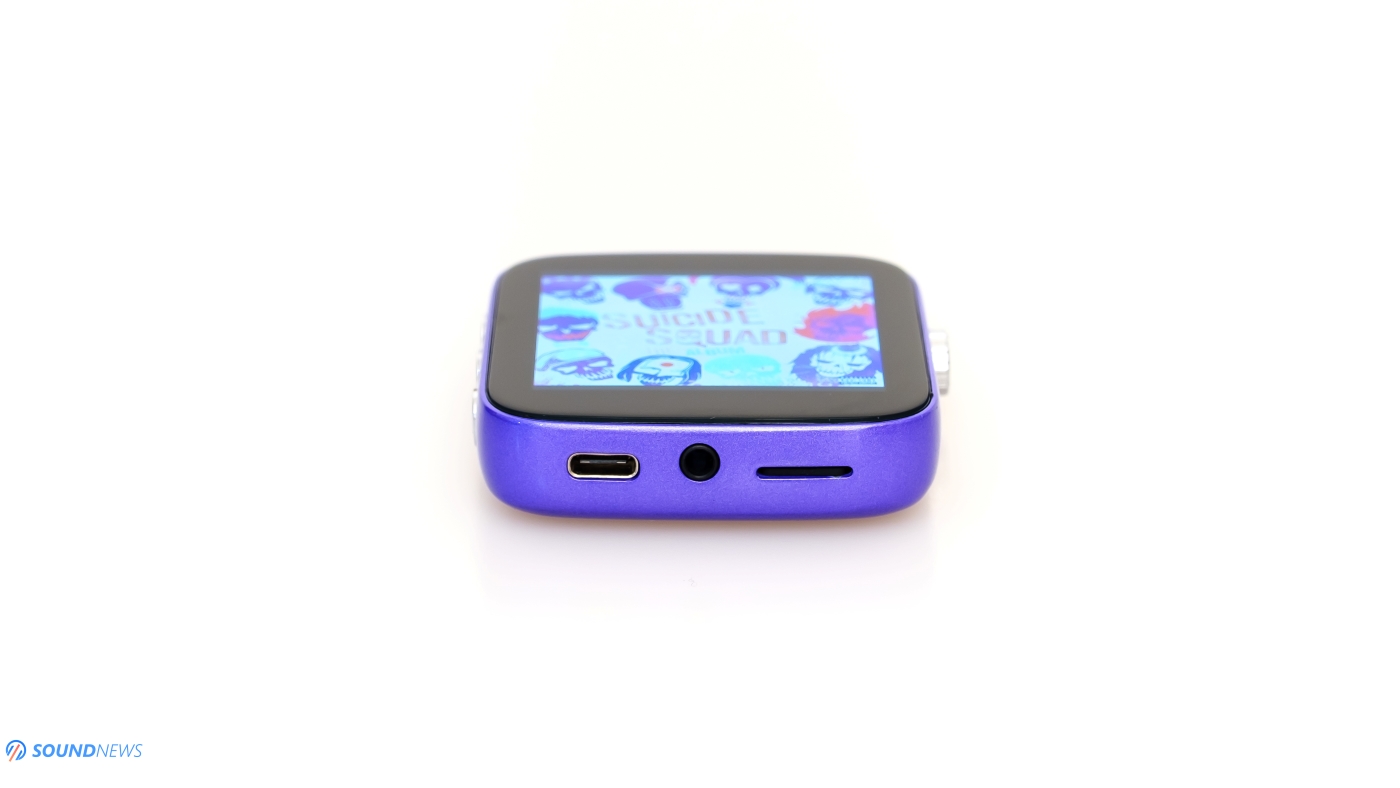
Conclusions
This was my first contact with a Shanling product and I’m glad I was given the honor for a prime review for this colorful beast. Q1 proven to be much more than what I expected and sounded way different than my expectancy level. It sounded clean, detailed, layered and wide spread as a digital music player. GUI is quite polished, easy to navigate and easy to remember where everything is located in the menu.
Portability factor is crazy good with this one, its small form factor, its pleasant shape and easy to use touch screen interface helped a lot in creating a fine user experience and this is what I would call a really portable digital-audio-player.
As I was saying from the start there is one thing that I loved them most about Shanling products – their price, at only $120 there is nothing really to complain about. To get things even sweeter, Shanling partnered with Santa and launched a Kickstarter campaign where you can get it even cheaper than that! Check it out here
PROS:
- Interesting and smoothly shaped design, lightweight and portable
- A quite natural sound signature
- Great tonal balance across the board
- Wide soundstage, deep and airy sounding too
- Great Bluetooth codec support
- Works as both a sender and as a Bluetooth receiver
- Impressive detail retrieval at this size and price
- Clean and transparent sounding
- Noise-less headphone out, works great even with sensitive IEMs
- Impressive price to performance ratio!
- No Bluetooth 5.0 support
- Sources: Xiaomi Mi9T Pro, Corsair One i160, Sony Bravia 65XE9005
- DACs: Matrix Audio Element X, KECES S3
- DAPs: Shanling Q1, FiiO M5, M11 Pro
- Headphone amps: Benchmark HPA4
- IEMs: FiiO FH7, Simgot EN700 Pro
- True Wireless earphones Creative Outlier Air, Hifiman TWS600
- Wireless headphones: Sennheiser Momentum 3 Wireless
- Portable headphones: Sennheier Momentum 2, Erzetich Thalia
- Full-sized headphones: Hifiman Arya, Quad ERA-1, Sennheiser HD660S
- Loudspeakers: KEF LS50W
- Interconnects: QED Reference XLR, Aune AL3 XLR
- Power Cables: Isotek EVO3 Premier (x2)
- Balanced Power Conditioners: PLiXiR Elite BAC 400, KECES BP-600

Overall score 87/100
PierreC
Hello, thanks a lot for this review!
Just wondering... I've seen that the Q1 can be connected to a Mac (or PC) as a DAC to send music to wired headphones for instance.
But does the following configuration work also:
Mac -> 'wire-linked' to Q1 (as DAC) -> 'LDAC-linked' to Sony Headphones?
Or in other hand, is DAC mode compatible with bluetooth transmission to headphones (especially LDAC)?
Thanks in advance for your help.
Just wondering... I've seen that the Q1 can be connected to a Mac (or PC) as a DAC to send music to wired headphones for instance.
But does the following configuration work also:
Mac -> 'wire-linked' to Q1 (as DAC) -> 'LDAC-linked' to Sony Headphones?
Or in other hand, is DAC mode compatible with bluetooth transmission to headphones (especially LDAC)?
Thanks in advance for your help.
OmniscientNihilist
does the eq make the volume drop when you engage it?
DarKu
Reviewer at Soundnews
Pros: Futuristic design, great material selection and attention to detail
- Fastest response times of any DAP
- Advanced GUI that is easy to use and navigate
- Widest soundstage in a DAP, amazing depth and airiness
- Great tonal balance across the board
- Great Bluetooth codec support
- Excellent micro-detail levels
- Super clean and transparent sounding
- Extended frequency-response
- Noise-less headphone out, works great even with sensitive IEMs
- Among the fastest transient response in a DAP
- Great price to performance ratio!
- Fastest response times of any DAP
- Advanced GUI that is easy to use and navigate
- Widest soundstage in a DAP, amazing depth and airiness
- Great tonal balance across the board
- Great Bluetooth codec support
- Excellent micro-detail levels
- Super clean and transparent sounding
- Extended frequency-response
- Noise-less headphone out, works great even with sensitive IEMs
- Among the fastest transient response in a DAP
- Great price to performance ratio!
Cons: Still no Google Play Store support
Without too much fanfare on 30 July of this year (2019), FiiO dropped the bomb and announced their latest and greatest M11 PRO DAP in a Facebook post. To this day, that one was the most commented post in FiiOs history and a clear message that people were genuinely excited about that one. Besides dual AK4497EQ flagship DAC chips, M11 PRO promised to be the world’s first DAP with dual THX-AAA-78 headphone amplifier modules. If you checked my latest reviews around here you probably know how much I love THX designs for their accuracy and honesty in delivering a clear and unaltered signal to every headphone. At the end of the day I am using daily a Benchmark HPA4 as my flagship desktop headphone amplifier and that says a lot about me and my tastes.
To say that I was genuinely interested in hearing one for myself would be a big understatement, I contacted multiple times the local distributor, the manufacturer itself and literally begged for a listening session. It seems that demand for M11 PRO was much bigger than the production time, FiiO was unable to keep up with the rising demand but it seems that everything calmed down lately and I’m glad I was given the opportunity to test this one for a longer period of time.
FiiO is not new to this game, they already developed the world’s fastest DAP, the M11 and have enough experience with THX headphone amp modules as they released the AM3D/C amp module for Q5, Q5S and X7 MKII that is based on THX circuitry. M11 PRO is an evolution of both M11 DAP and THX headphone amp modules and presents itself in a single, compact unit. I present to you the M11 PRO digital-audio-player.

Unboxing Experience
M11 PRO comes in a thick double box as an extra protection measure. Opening it up, the DAP screen is covered by a big FiiO Smart Hi-Res Music Player sticker, the same was applied on M11 and if I remember correctly I’ve seen similar stickers on other brands. Underneath it a small metal pin is located; this one will open the MicroSD card slot. In a smaller box you will find a USB Type-C cable and a 3.5mm to coaxial adapter cable. In a bigger box you’ll find all the paperwork like the user manual, a quick start guide and some notes on using Bluetooth enabled devices. I noticed that FiiO didn’t include a clear case with M11 PRO, that was included in the M11 box. According to FiiO, the clear case for M11 PRO was difficult to manufacture, their quality control level was not met and they just abandoned the idea of making one. However, some manufacturers moved quickly and released their own cases for the M11 Pro. DD HiFi released their C-M11 Pro leather case and if you care dearly about your investment, then I strongly recommend getting one. If you are against leather products, you can opt for a clear TPU case for it that can be found all over Ebay. I hope FiiO will release a case for it too, SK-M11 was quite nice and a SK-M11 Pro would heal the wounds of that clear case fiasco.
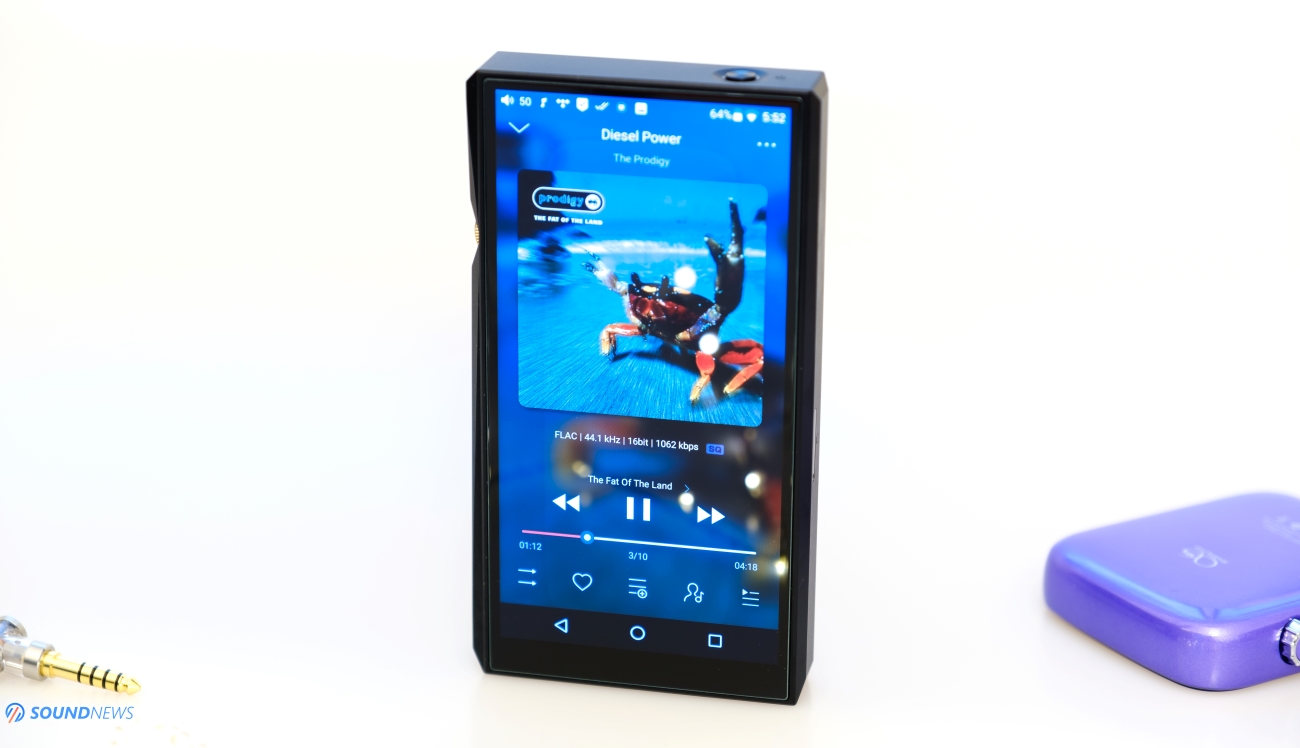
Design & Build Quality
I was already impressed by M11 so I am having the same feelings about M11 PRO. It is a beautiful machined aluminum device, it looks impressive and has that high-end feel to it. It has huge glass sheets on the front and back, very much in line with newest smartphone trends, I mean my phone also has glass on the back. M11 PRO has again that fiber glass look on the back and those small things like Hi-Res Audio, Hi-Res Audio Wireless, THX and AAA-78 laser engraved logos underneath the glass are adding a touch of proudness and they really deserve to be about this one. It’s a unique DAP in every single way. It feels great in the hand and it is quite balanced too. Compared to M11 it is just by 1mm thicker to accommodate a bigger battery inside, it has a golden PRO logo on its left side and has only a single MicroSD card slot instead of two slots on M11, more about this decision in a minute.
As with M11, M11 PRO has great tolerance numbers and nothing is wobbling around, all the buttons have a firm press, the golden volume wheel is turning smoothly, it doesn’t stick out and will not turn itself in a jeans pocket, I already tested that.
I like how it looks and I like how it feels in the hand, the build quality is really top notch and it left a great first impression on me.
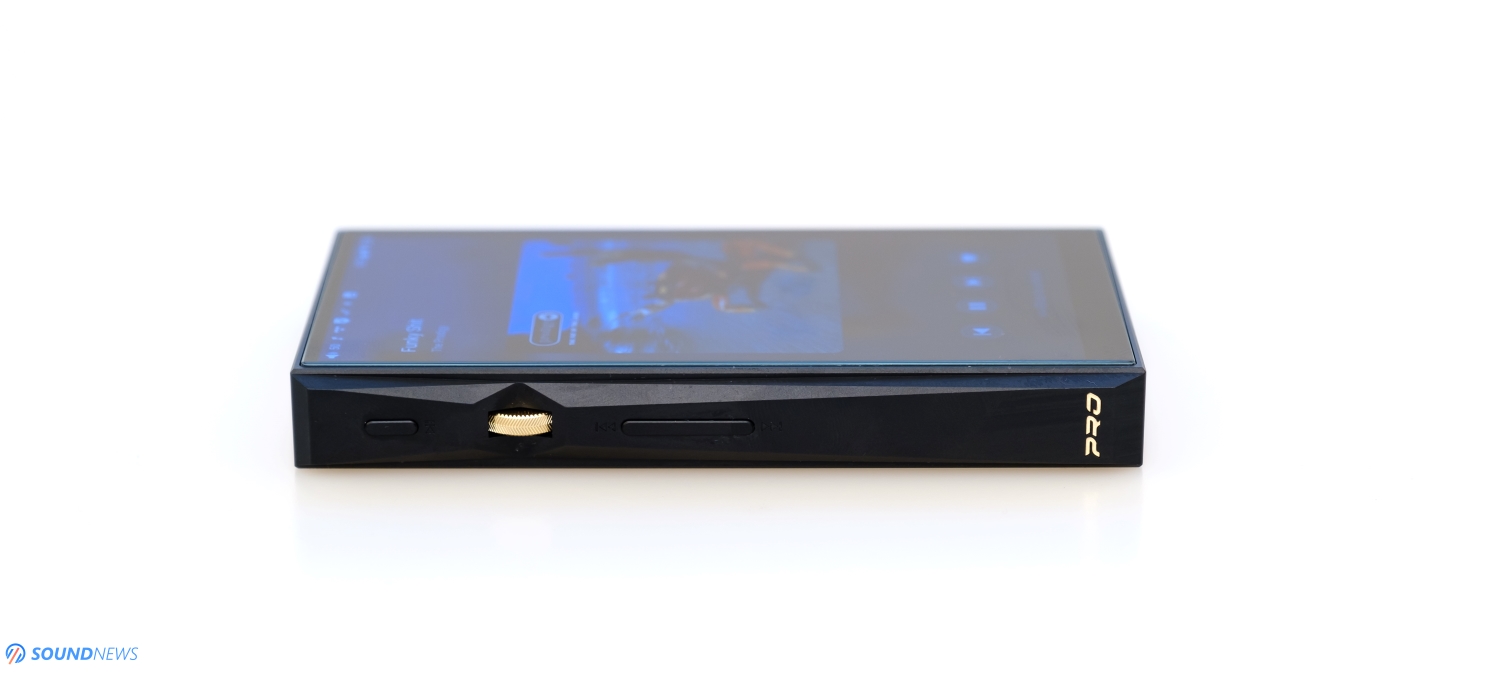
Buttons & Layout
FiiO didn’t ruin this one with buttons on every side (do you still remember first generation X7 and its buttons? I still have bad dreams about those) and you will find most of them on its left side. There’s a Play/Pause, Previous and Next track buttons and a volume wheel. On top is your standby/On/Off button and on the bottom, you will find a trio of headphone outputs: a normal 3.5mm single ended output and two balanced outputs coming in 2.5mm and 4.4mm flavors. The USB Type-C works for data transfer, for charging or for using it as an external DAC for your PC/MAC or even for your OTG enabled smartphone.
The biggest drawback of M11 PRO compared to M11 was the decision to drop the second MicroSD card slot. FiiO clearly stated that this SoC is not working perfectly with 2 MicroSD cards and decided to drop one of them. On the plus side, M11 PRO supports the biggest capacity MicroSD cards and in time it will support even newer generation of cards up to 2TB in size.
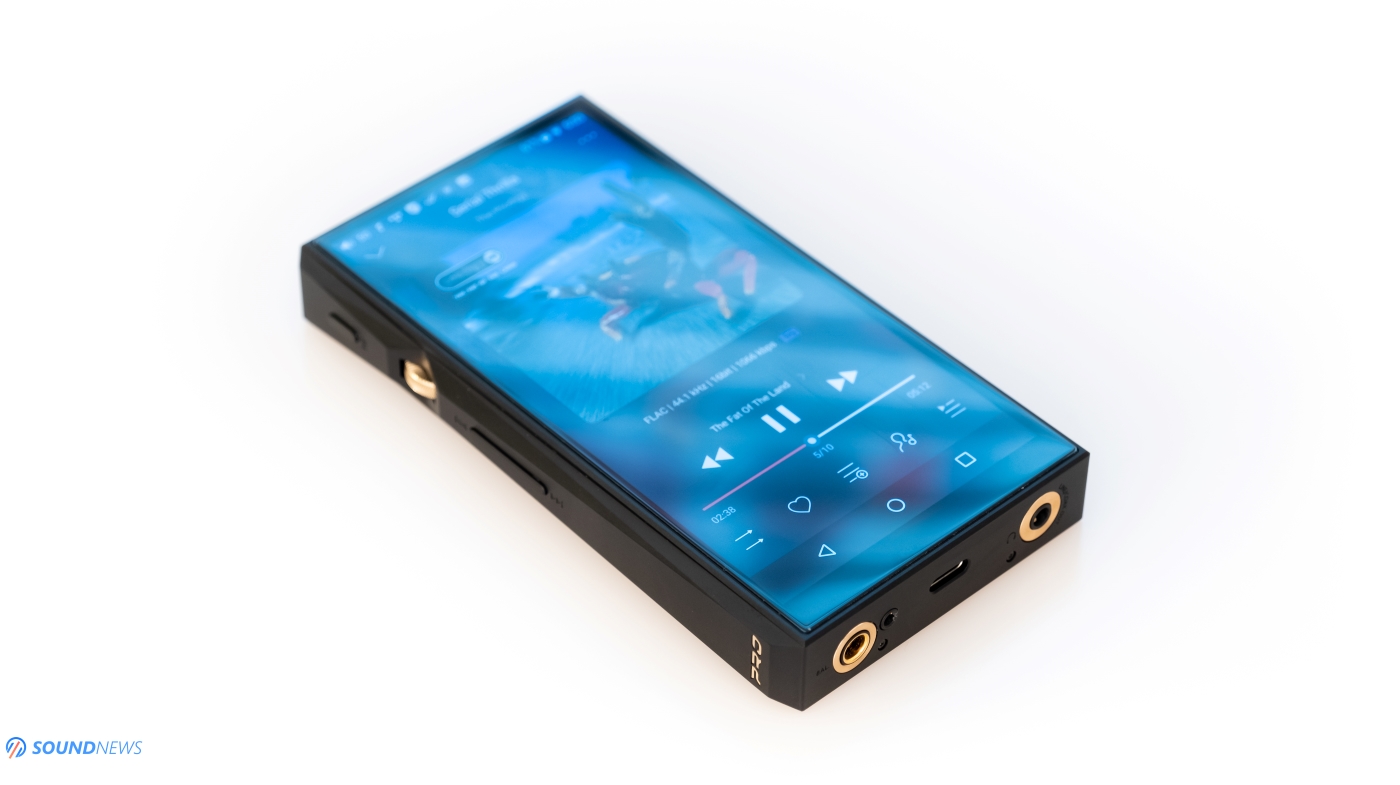
Display
FiiO used the same big 5.15” IPS multi-touch display that is almost bezel-less and very pretty to look at. Gone are those ugly chins and all that is left is a colorful and high-quality display. Contrast is quite good, blacks and whites are nice, so are those nice viewing angles. Image quality is nice thanks to that high pixel count and resolution. It is basically the same screen with the same 18:9 aspect ratio that M11 DAP has. Due to a high PPI, the final image is crisp and my cover albums are looking vivid and crystal clear.
I think a DAP doesn’t need a bigger display than this, I want its battery to feed that digital and analog circuitry, not a huge display size and pixel count. For gaming and Youtube needs I will always use my smartphone and M11 PRO will just remain for music listening only.
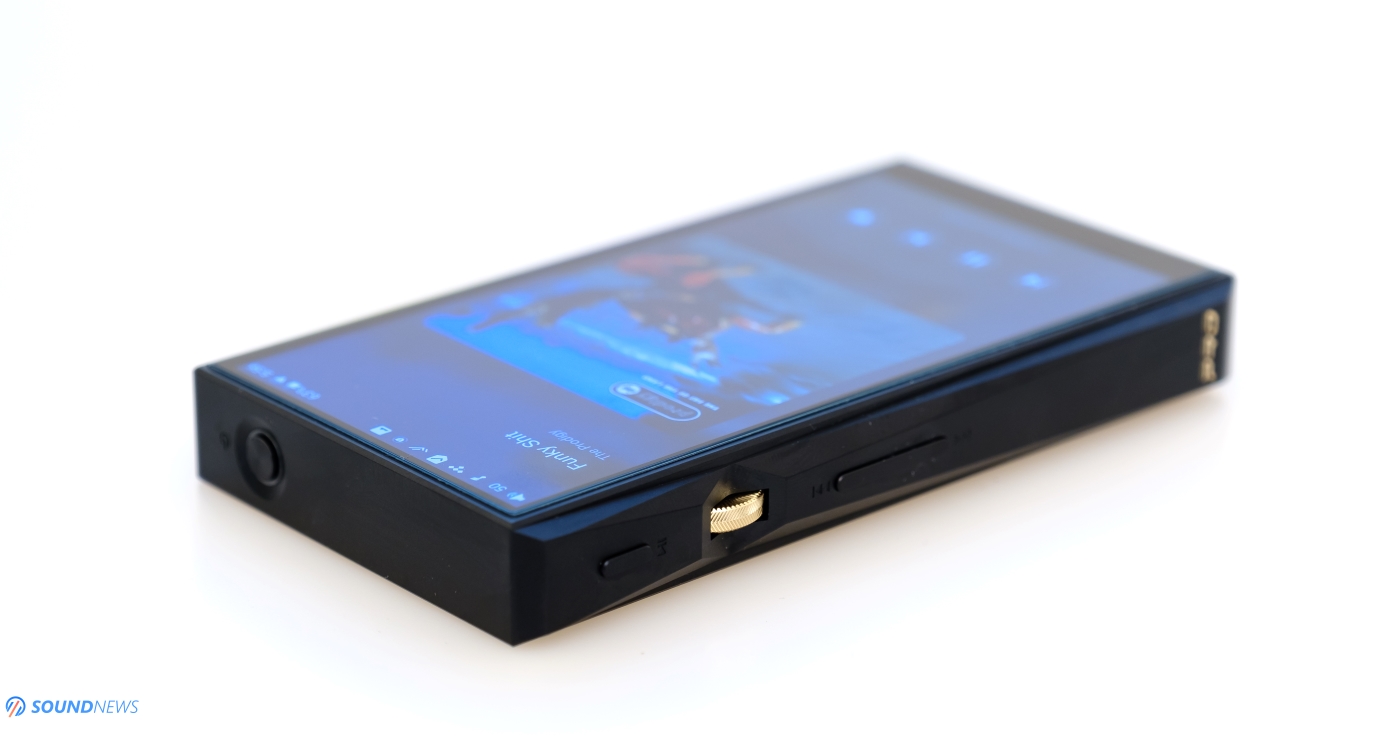
Battery
FiiO went with a bigger battery on this one. This is the sole reason it is thicker by about 1mm compared to the regular M11. Battery capacity increased from 3800 mAh to 4370 mAh but the actual battery life dropped from 13 to 9.5 hours on the 3.5mm jack because two AK4497 DAC chips and those THX-78 amp modules are using much more battery power compared to the ones inside the regular M11. With M11 PRO you are sacrificing a bit of battery life in exchange for higher quality sonics.
Do you still remember that M11 can go into deep sleep mode for 50 frickin’ days? M11 PRO by comparison goes lullaby for 55 days! Previous DAPs by FiiO slept much less than that so again we have a sleeping champ right here. Forgot your M11 PRO DAP for a month in your backpack? Wake it up and it will still have more than 40% battery left for few albums.

Under the hood of M11 PRO
It rocks the same fast and reliable 6-core Exynos 7872 CPU that currently is the fastest one in any DAP at any price. RAM memory remained at 3 Gb and the built-in ROM memory increased from 32 Gb to 64 Gb so even without a MicroSD card you can store a decent amount of music. FiiO went with a lightweight and custom Android OS based on version 7.0
M11 PRO doesn’t support Google Play Store but has an Applications bubble, by accessing it you can download all your music streaming services including other apps like Bandcamp and SoundCloud. FiiO also offers a possibility to install any other 3-rd party apps market like APKPure or CoolApk from where you can install almost any 3-rd party app like Youtube, games and so on.
I have already downloaded my usual stuff like Roon, Tidal, Qobuz, Spotify and Deezer, all of them are launching fast without hiccups. Some of those apps that support offline play will work perfectly fine with it, I tested Tidal and I can listen to my downloaded content.
From dual AK4493EQ DAC chips on M11, FiiO went straight to the top by choosing a dual AK4497EQ setup, that on paper will offer a much better signal-to-noise ratio, dynamic range and a lower THD. To properly implement those two, some changes needed to be made so FiiO used an independent volume control chip and dual crystal oscillators to squeeze the best out of those. M11 by comparison doesn’t have them and when critically analyzing both, the difference becomes very clear.
Going forward to the analog stage, FiiO went again with a top-of-the-line solution that will not bottleneck its DAC performance, the THX AAA-78 modules inside have absolutely impressive specs and leaving the DAC doing its job without altering that analog signal. Power wise, M11 PRO is slightly more powerful on the single ended output, it offers 200mW into 32 Ω and 550mW in the same load on both balanced outputs.
Adding all those improvements on the digital and analog side resulted in a much lower total-harmonic-distortion, M11 PRO has it 3.5 times lower on the 3.5mm jack and 2 times lower on balanced jacks compared to M11. Noise floor almost halved compared to M11 for an absolutely pitch-black background.
FiiO incorporated a full-MQA decoder, it unfolds MQA files in 8X mode, however MQA files as of right now are supported only in FiiO Music app, meaning you will need to store all those MQA files on your card or internal memory. Tidal Hi-Fi will stream those MQA files but the full MQA unfold process doesn’t work with Tidal as of right now. FiiO stated that future firmware updates will be released to support full-MQA decoding on other third-party apps. I am using a full MQA equipped DAC at home and if you ask me, full-blown Hi-Res files are sounding a bit better to me and DSD files are sounding clearly better, so MQA is not that important, at least for me.
Wireless capabilities remained the same, M11 PRO supports 2.4 and 5 GHz Wi-Fi bands, plus all those fancy Bluetooth codecs. It can still work as a Bluetooth sender or receiver, as a sender (say to a wireless headphone) it can output SBC, AptX, AptX-HD, LDAC and HWA and as a receiver (receiving data from a smartphone for example) it accepts SBC and LDAC. Bluetooth is still at version 4.2 and not the latest 5.0, but with a pair of Sennheiser Momentum 3 and FiiO EH3NC I didn’t lose a beat while listening to music on the go. It paired amazing even with my KEF LS50W speakers and with few TWS earbuds the signal always remained strong and stable.
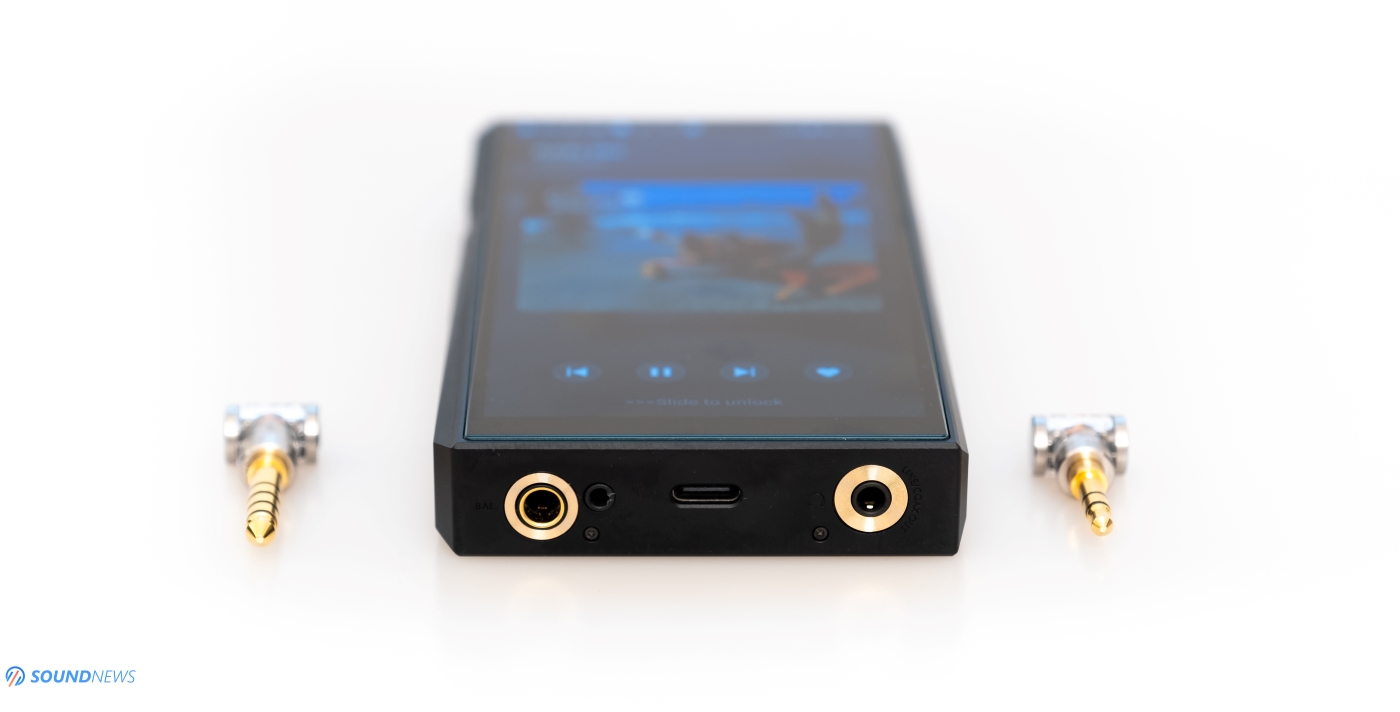
Graphical User Interface (GUI)
I already updated to the latest FW 1.0.1 and so far in a 2-week period it didn’t crash on me. In Android Mode it behaves like a typical Android device. Switching to Pure Music mode all apps will be automatically stopped, all background processes too and only FiiO Music app will remain open. This app was already updated multiple times and every singe time new features were added to it. I particularly like WiFi music transfer and FiiO Link which will let you control the M11 PRO (that sits in your pocket connected to some headphones) from the screen of your phone.
As with M11 and their previous DAPs, FiiO implemented a lot of shortcuts, lots of swipes in different directions will access some menus, will change its volume or other things, I recommend checking the Quick Start Guide that can be accessed from Technical Support bubble if you want to learn all of them. From there you can also check if a new firmware was released and for convenience, I recommended updating it via OTA (Over The Air).
On FW 1.0.1 GUI is polished and moves fast, I didn’t encounter stutters or slowdowns even when playing 32 bit Hi-Res files or DSD content. Streaming Hi-Res from Tidal Hi-Fi and then sending all that to a Bluetooth headphone is super simple and worked as a charm too, as much as I tried slowing it down, it didn’t happen so I have no complaints here.
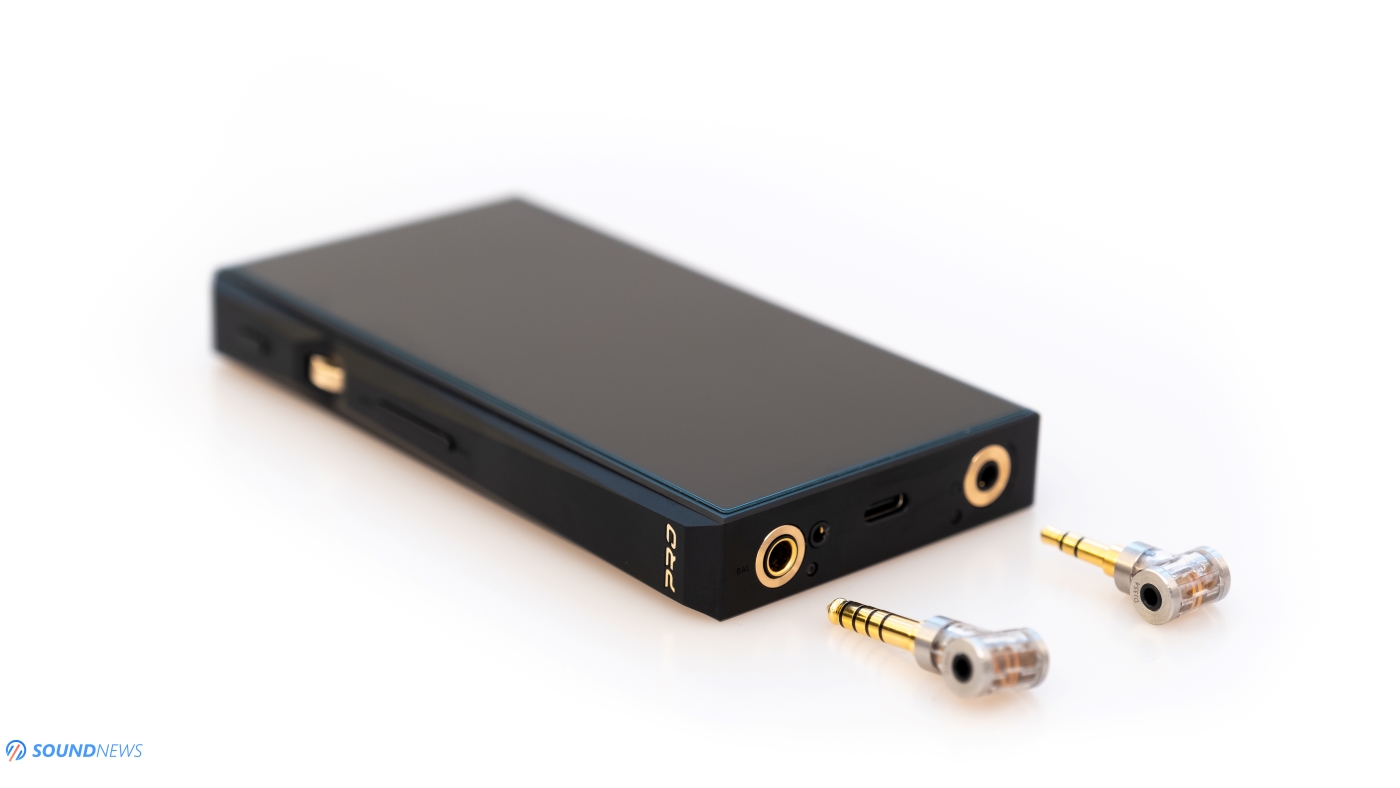
Sound Performance
I. Connected to sensitive IEMs
That super low THD and super low noise floor made a huge difference on M11 PRO. Every IEM I tested it with as FiiO FH7, FA7, Simgot EN700 PRO and many other lower tiered ones sounded ultra-crisp and grain-free. Background noise was nowhere to be spotted, just a pitch-black background even on high-gain with a maxed-out volume on both single ended and balanced headphone outputs! M11 in this regard was also silent, but not dead-silent like the newer one.
In terms of volume I never passed the 80 volume position out of 120 even on the 3.5mm jack on low gain with multi-driver IEMs. On the balanced jacks I cannot go higher than 65 volume position on low gain with the most inefficient IEMs. Headroom was huge and M11 PRO offered an incredible driver control. On some particular music the former M11 couldn’t offer a faster pace, an extended treble area and an ultimate diaphragm control. M11 PRO by comparison sounded like a really grown-up and serious device. Music is not only very detailed, crisp and precise, but also very tight, musical and engaging. Since all those IEMs don’t need that much power but an ultimate driver control to shoo away muddiness, M11 PRO sounded a lot like a stack of Topping D70 or Aune S6 PRO followed by a SMSL SP200 desktop headphone amp, I’m serious, M11 PRO sounds almost indistinguishable from a hi-fi desktop rig.
M11 had small quirks like a smoother than usual treble response and not the best slam and impact. M11 PRO is very different in this regard and will sound smooth only when the track is asking for this, otherwise it will be nimble, fast, articulated, with a good treble extension, it’s almost unreal that I am listening to a portable device.
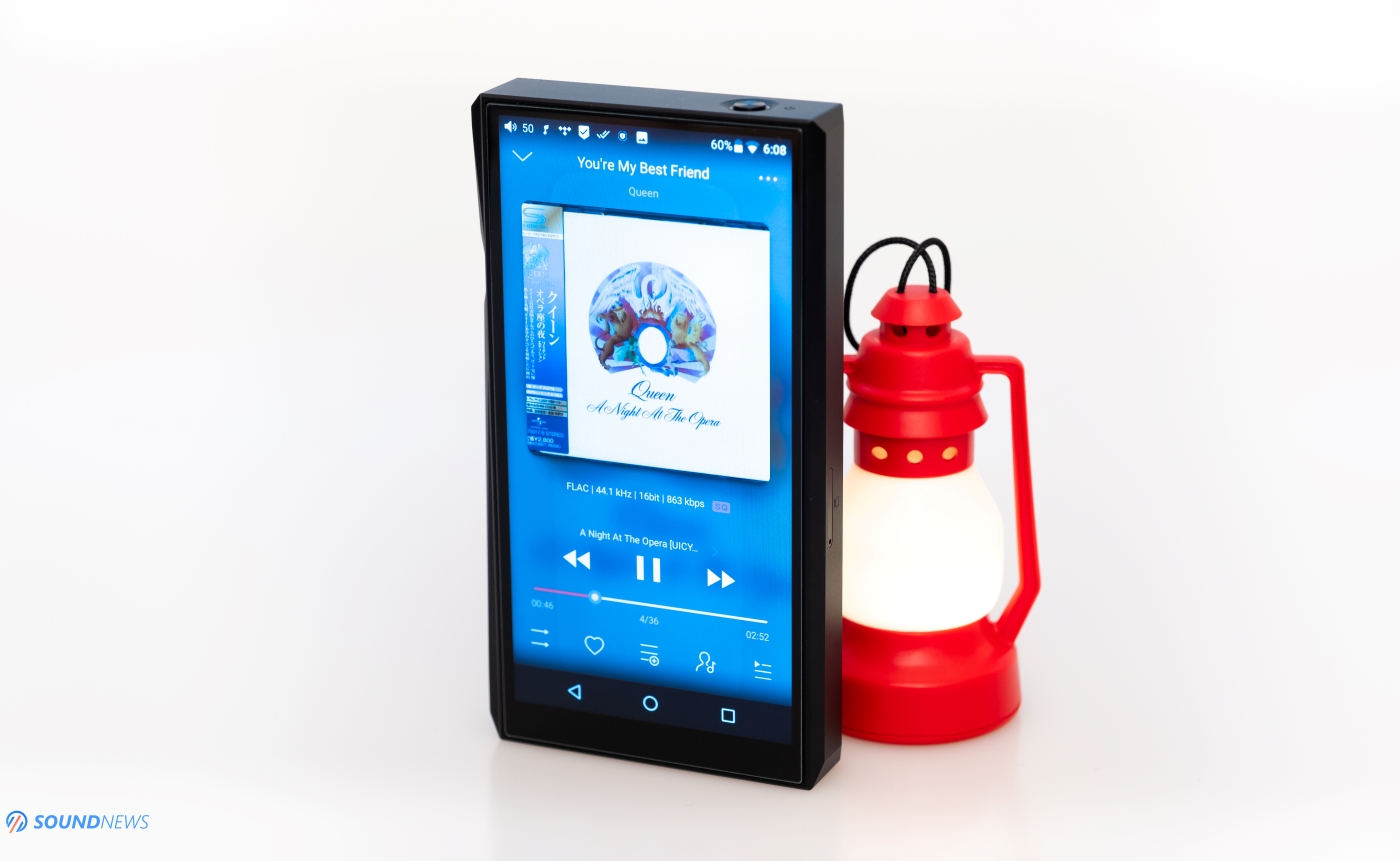
II. Connected to portable over-ear and on-ear headphones
You probably don’t use those anymore, but I’m old-school and I still love my portable and wired headphones. Especially Momentum range as Momentum 2 and 3 from Sennheiser, I recently included Erzetich Thalia in this section too, amazing headphones that sound great even from lower tier sources.
Some of you probably heard the Momentums by now and know that they have a “not quite my tempo” sound to them that is lean, slow, maybe even boring from low powered devices. M11 sounded quite fine with them and it didn’t really change them into something else. On M11 PRO on the other hand, I don’t really know what is to blame: that dual AK4497 setup, or those double crystal clocks or maybe those sexy THX modules, but Momentums opened-up and awoken from their deep sleep. They started sounding jumpy on me, fast and articulated, they sound like that mostly on desktop setups and yet here I am with M11 PRO in my hand looking surprised at it. Maybe everything as a whole made a bigger difference than all those things separately. M11 PRO improved Momentum 2 and 3 and made them faster, snappier and made them show more treble information.
Driver control was definitely among the best in a portable device, dynamics kicked-in in full-force and listening to some faster paced music a thought never left my mind: this sounds nor rushed, nor dragged, just right my tempo .
Volume wise, I never gone past 105 volume on the 3.5mm single ended output, even with harder to drive Erzetich Thalia, so again headroom was plenty enough even for -15 DR tracks.
Portable headphones, on-ears or over-ears, multi-driver IEMs and everything in between sounded as connected to a big, bad-ass desktop setup, so again, in my opinion M11 PRO sounds outstanding and above the rest.
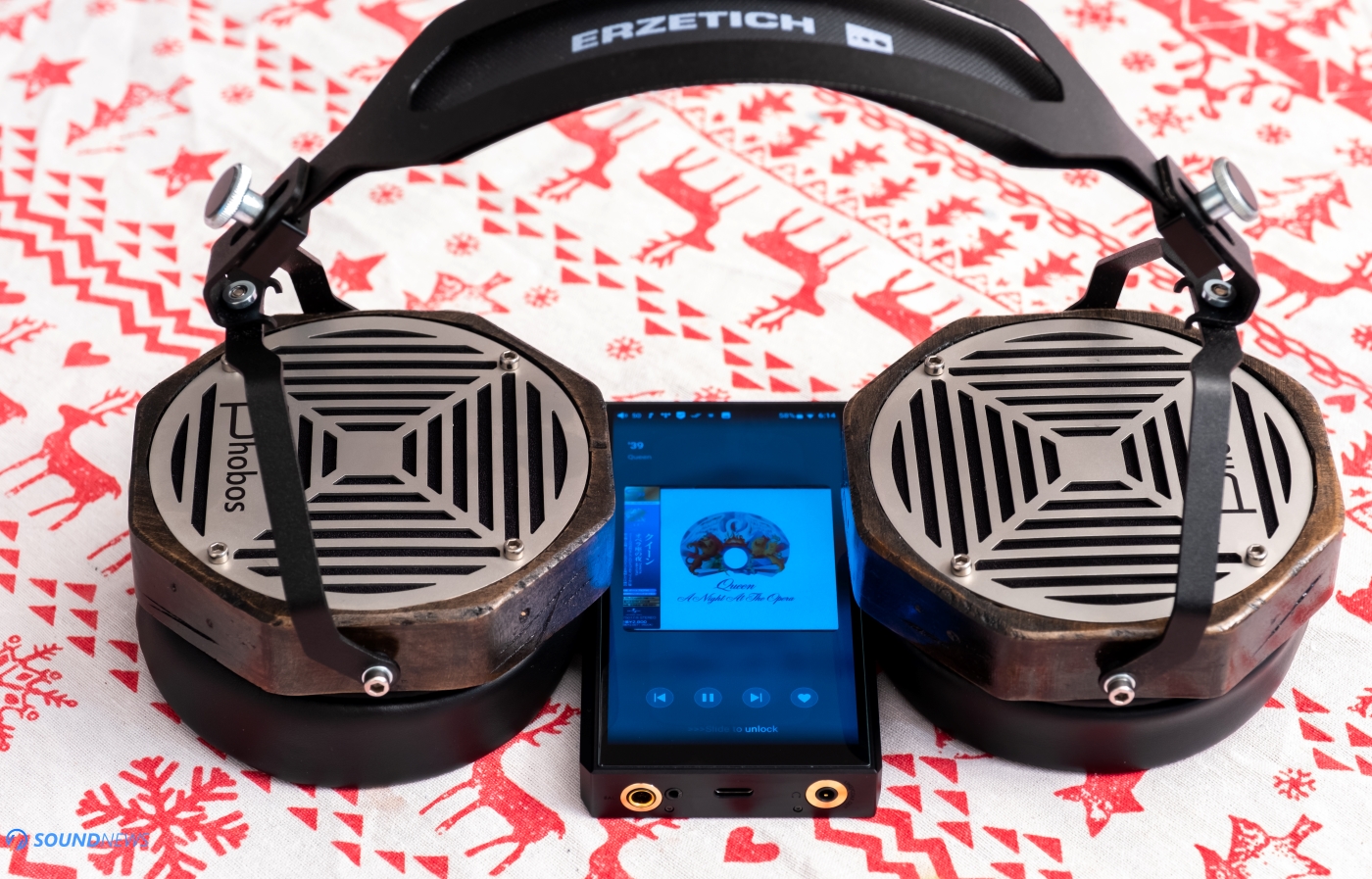
III. Connected to desktop low sensitivity headphones
First of all, M11 PRO wasn’t really made for desktop headphones but that doesn’t mean I can’t test few of them and I’m pretty sure this will be the funniest part of this review.
Instead of going with some simple dynamic desktop headphones, I thought: Hey, I should test some of the biggest headphones with the biggest ear-cups and drivers, so I plugged a pair of Erzetich Phobos into the single ended 3.5mm jack. This is a planar-magnetic headphone that eats current for breakfast, at only 45 Ohms and having a 106mm driver assembly, it needs some serious amperes to be driven even at normal listening levels. At 110 out of 120 volume levels, I am smiling and nodding my head, even on the 3.5mm jack M11 PRO was more than capable of driving them almost to their fullest. I said almost because it had everything from the home desktop rig except for that lightning fast transient response and control that only a wall-powered desktop headphone amp can provide. Anything else, like details, transparency, dynamics were pretty much there, even frequency extremes were very present and clean without a hint of dryness.
Moving on to another planar-magnetic headphone – Quad Era-1, those worked even better, at 105 volume they sounded much closer to my desktop setup and everything just clicked into place, dynamics were definitely better this time around and transient response as well. I am going to search for a 4-pin XLR female to 4.4mm Pentaconn male adapter so I could test all my desktop headphones on the 4.4mm balanced out of M11 PRO but I presume everything will sound even better and much closer to a reference desktop system.
Switching to Hifiman Arya it was clear that 3.5mm jack can’t provide enough power and those sounded fine but limited in terms of dynamics, those were right but not explosive as I like them to be, Arya under-performed on it.
Connecting a pair of HD660S from Sennheiser was an easy task for it since at about 100 and up to 105 volume those already sounded too loud even for my tastes. HD660S had enough headroom and sounded really holographic and open wide, almost indistinguishable from a desktop reference setup.
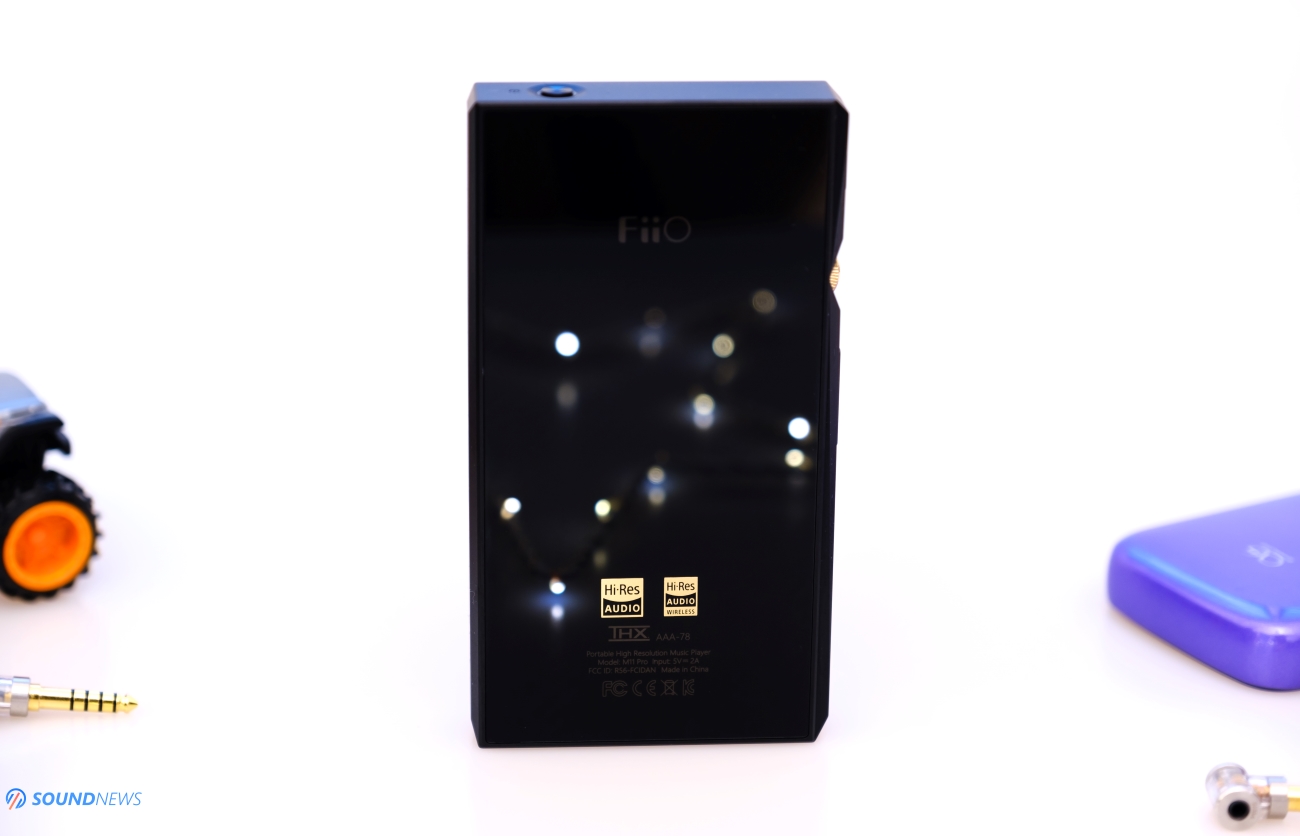
IV. Connected to Wireless headphones and speakers
My KEF LS50W worked wonderfully with it, I was streaming Tidal Hi-Res content from M11 PRO to LS50W at few meters away, even from another room BT connection always remained stable and strong. No complains here as my speakers sounded exactly how I know them.
Moving on to the EH3NC Wireless headphones by FiiO, that was an excellent pairing since in FiiO Music app there is a feature that is called Bluetooth Device Control, if you go there you will be unleashing the full potential of EH3NC and a lot of settings can be synced wirelessly to them as EQ, Power Off timers, battery and codec indicators and other things. EH3NC had a stable connection too, when I went outside for a 2-hour walk with M11 PRO in my pocket I never lost a beat with EH3NC and all I heard was just a stable and worry-free performance.
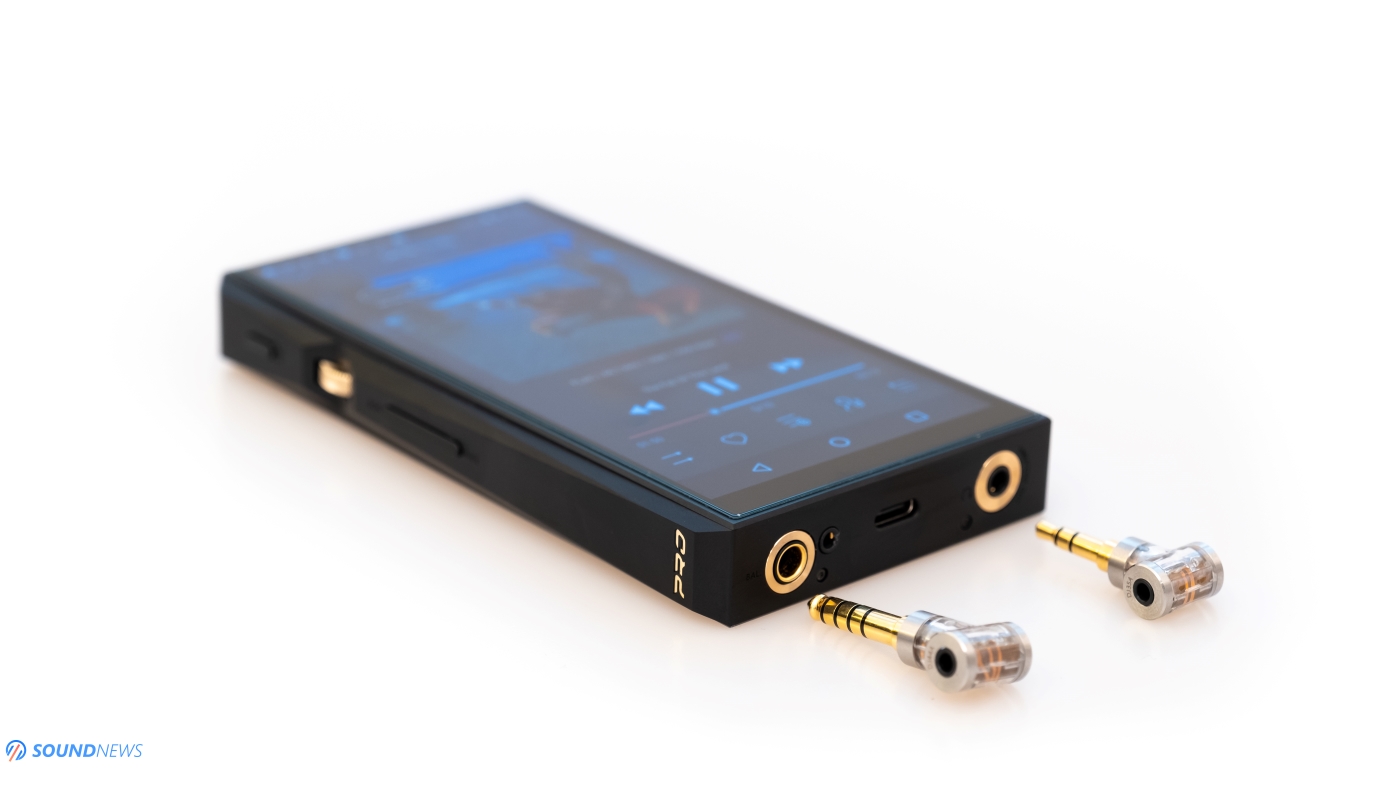
V. Soundstage size & Depth
I can’t hold this anymore so I will just mention from the start that up to this moment, M11 PRO presented for me the widest soundstage size I’ve heard in a DAP. M11 and X7 MKII (especially with AM5, AM3B and with AM3C) sounded quite open and wide but not on the same level with M11 PRO.
This big change was felt mostly with high quality IEMs and with desktop headphones. In this regard M11 PRO sounds really like a desktop DAC attached to a desktop THX amp, it sounds wide spread and open. Very much so, that some might find that distracting at times. It grabs my attention a lot and while listening to M11 PRO I can’t multitask in front of a computer, that air flying around is so easily spotted, as all musical notes are wrapped in bigger air bubbles and I feel like I’m drawn to them wondering between each and every note. M11 PRO is against forwardness, muddiness, up-front presentations and chooses to somehow unfold everything for the listener. I personally like this effect but I know few persons that don’t, so it really depends on the listener.
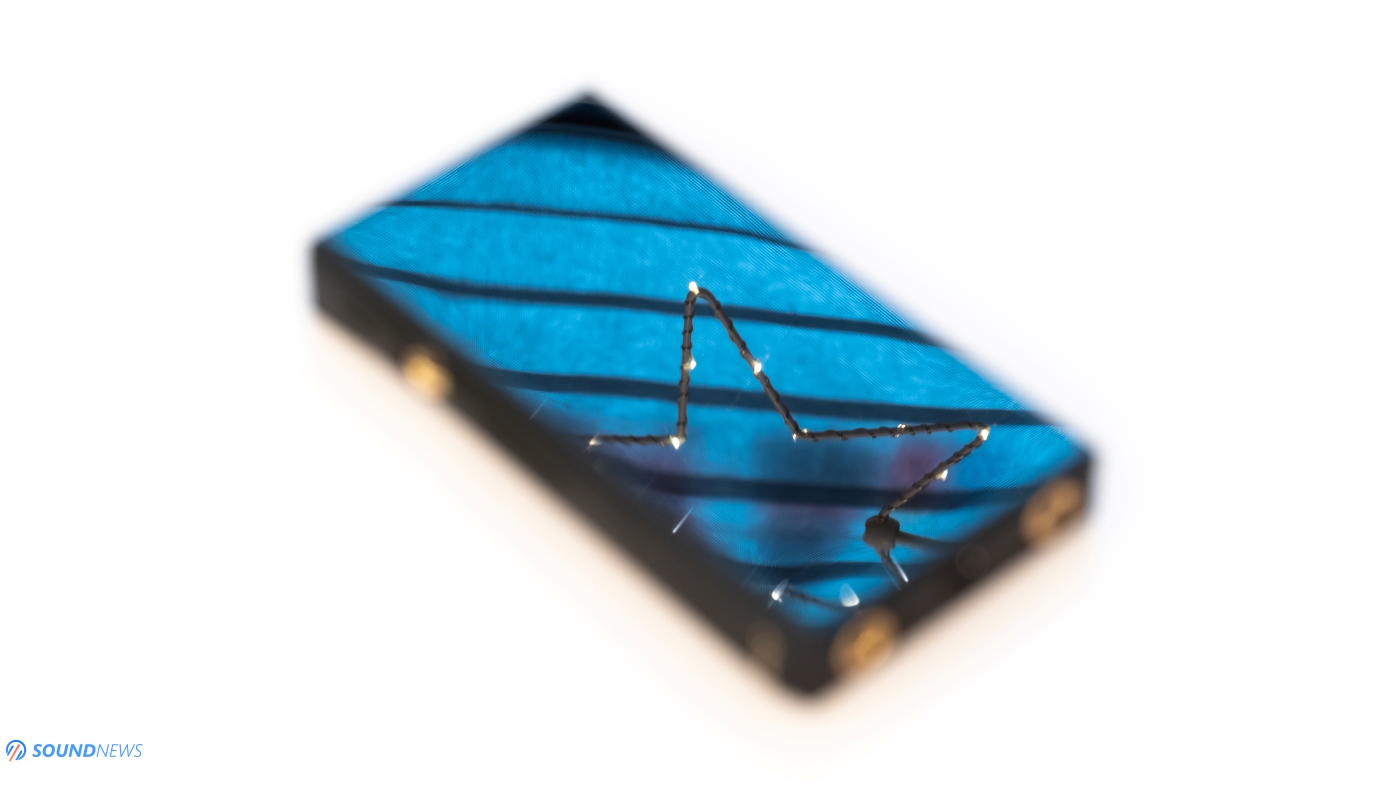
VI. Transient Response
I don’t want to sound overly positive with this one but if you ever heard a THX headphone amplifier (here’s a comparison between 3 desktop THX amps) you probably know that those are all about fast transients, about slam and impact and M11 PRO is really not that different.
The second biggest change to the regular M11 is actually the speed, impact or transients as I call them. M11 PRO is all about acceleration, speed, it wants to slam your eardrums like drumsticks onto your brain. If M11 was a bit laid back, calm, smooth and relaxed, M11 PRO is all about nerve, it can have an aggressive character (if the track is asking for it), it opted for a faster decay in detriment of a longer one.
When I think about it, M11 will be smooth sounding most of the times, even with faster paced or aggressive music. M11 PRO on the other hand can be smooth and gentle too, but also aggressive and mean if the track is like that, the latter one works with a wider variety of music and M11 is not.

VII. Detail Retrieval & Transparency
This is where I felt another improvement compared to the regular M11. I spotted additional micro-details not only in top-quality recordings but even with my older rock records I can spot an additional layer of information, there is just a bit more to hear and feel. I can walk easier between those notes with M11 PRO and I feel that with M11 there are more bumps down the road. M11 PRO is transparent sounding and offers and impressive level of detail retrieval. If am omitting the power limitations of M11 PRO compared to a desktop setup, it sounds like a grown up and serious DAC. It reminds me a lot about the DAC section of Aune S6 PRO and of Topping D70 - both are amazing units at their price points. Higher tiered DAC chips, those THX modules and higher quality crystal clocks surely helped a lot and I’m glad that M11 PRO can stand on its ground and be compared to desktop DAC units without a hitch.
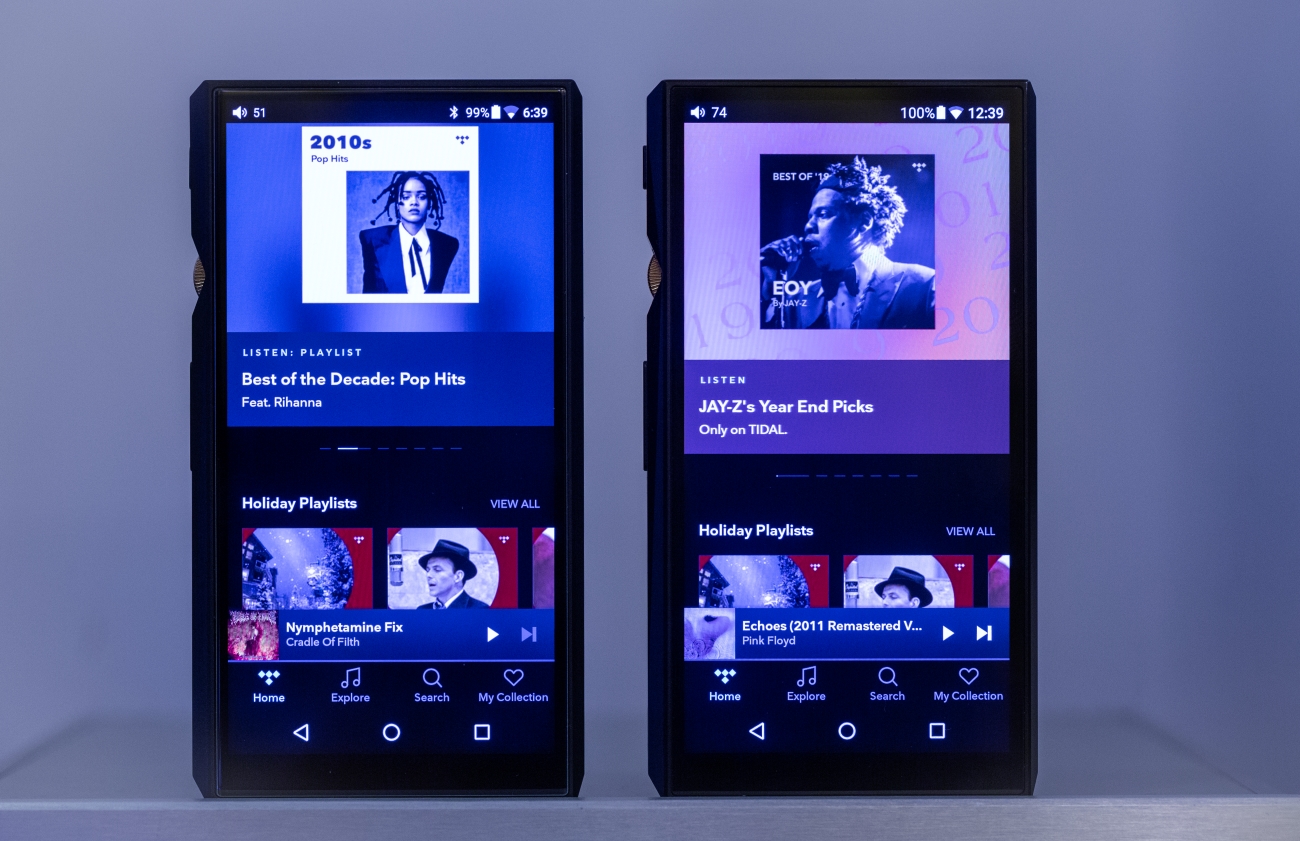
VIII. Frequency Response
FiiO achieved a good tonal balance on this one by marring a musical digital-to-analog converter with a super precise and revealing headphone amp. By doing that they actually solved the limited frequency extremes of the regular M11.
As a result, the biggest improvements on M11 PRO are the sub-bass and the upper treble region where everything is just tighter and better defined. M11 PRO has a really good sub-bass section and it can reveal information even down to 20 Hz. Listening to The Prodigy – Invisible Sun at the 0:41 mark the bass goes really low, it rumbled the drivers of FH7 and ERA-1 and that didn’t happen on normal M11. It goes deep, has a good sustain and slams quite well for such a small device. It is never overdone and doesn’t steal the show, this is still not bass-head material. This is a reference sound and as such M11 PRO is quite neutral from bottom to the very top. Mid-bass is very well defined, very present, quite pleasant and has an analogue-ish presentation. What I really liked about it, is that bass information presents itself as clean, layered and not as a super warm, boomy or overdone.
That toxic AKM midrange is still there and still has that up-lifting vibe to it. Is sounds full-bodied and maybe by a hair warmer than my reference setup. The only part of FR where I feel there is a longer decay is the midrange area. M11 PRO chooses to tickle my years with a soul-grabbing performance and everything from voices, pipes, strings and piano has a natural texture to them. I can feel those notes as carrying more air and more weight and sincerely I kind of like it this way as midrange is my favorite frequency area.
Treble was probably improved the most compared to regular M11 as I hear a much better outline of those hi-hats and a much clearer drum-pedal. On M11 those notes were softer and much shorter somehow and on M11 PRO you can feel their start and their end. I can easier analyze my music on M11 PRO and be confident that I am losing close to nothing on it as it has a much wider frequency response and a better control of every note.
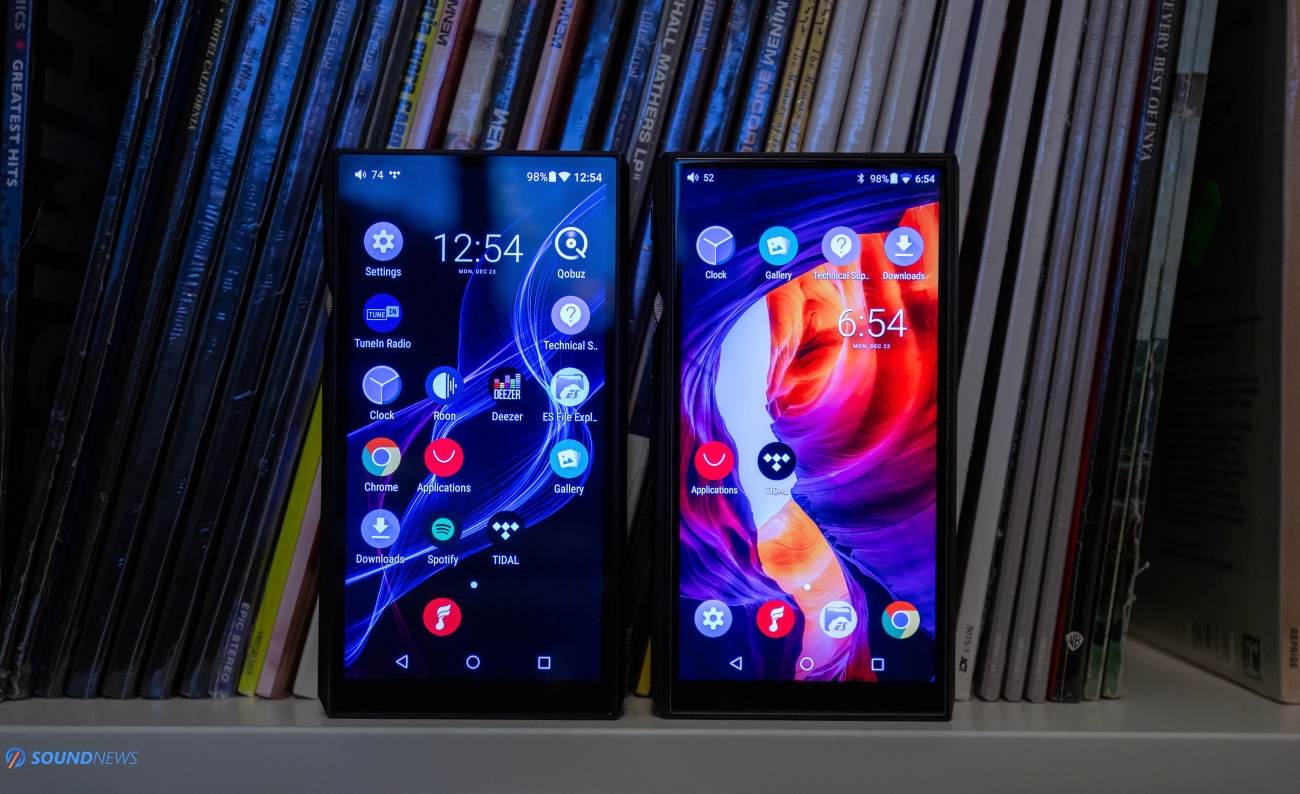
Comparisons
My whole review reads like a big comparison between M11 and M11 PRO so I will just summarize everything in a smaller chapter.
FiiO M11 ($449.00) VS FiiO M11 PRO ($649.99)
I will skip all the specs, features and so on as I already mentioned them before and will just go directly to the sound comparisons.
M11 is an amazing DAP and at that price point has little to no competition at all. It sounds great but sometimes can sound smoother, leaner and not that engaging. In terms of transient response M11 is Okay but not impressive, it will not slam a lot and will not deliver a quicker presentation. Double-drums are sounding like a single-drum setup, cymbals don’t have sustain and will not tickle your ears. M11 loses a bit of treble and sub-bass information. If you listen to higher quality recordings it becomes much more apparent and distracting at times. Bass is decently layered and goes pretty low too, but will never rumble and will never offer some goose-bumps.
M11 PRO sounds like an improved M11 in every single way. First of all, it is faster in its presentation, so everything will be delivered in an instant, it kicks and slams a lot better. Bass punch is back and will offer goose-bump inducing moments, it is very pleasing to hear an additional bass layer and more information down there. It just goes lower, has a better sustain and impresses a lot more.
Midrange is the only area where I felt that both devices are sounding very alike and both have a warm-ish tint to them, musical somehow, they carry more air and everything feels weightier and full-bodied. I love this part a lot on both devices. Treble is a BIG step forward on M11 PRO, as it’s more extended and even past 16 kHz it will show additional details (if you can pick them). Combine a faster pace with an extended treble area and it is clear that a double-drum will sound like an actual double-drum setup, cymbals crashes have the right amount of texture without becoming bothersome and bright. M11 PRO just offers me more and I see it as a complete package. I am very confident with it and I can rely on its performance every time I press play.
The biggest question: Are those extra $200 worth it? You should ask that yourself but to me it is worth every single penny. If you look at competing devices, $649.99 will offer you an entry level device or maximum a midrange device with a mediocre performance.
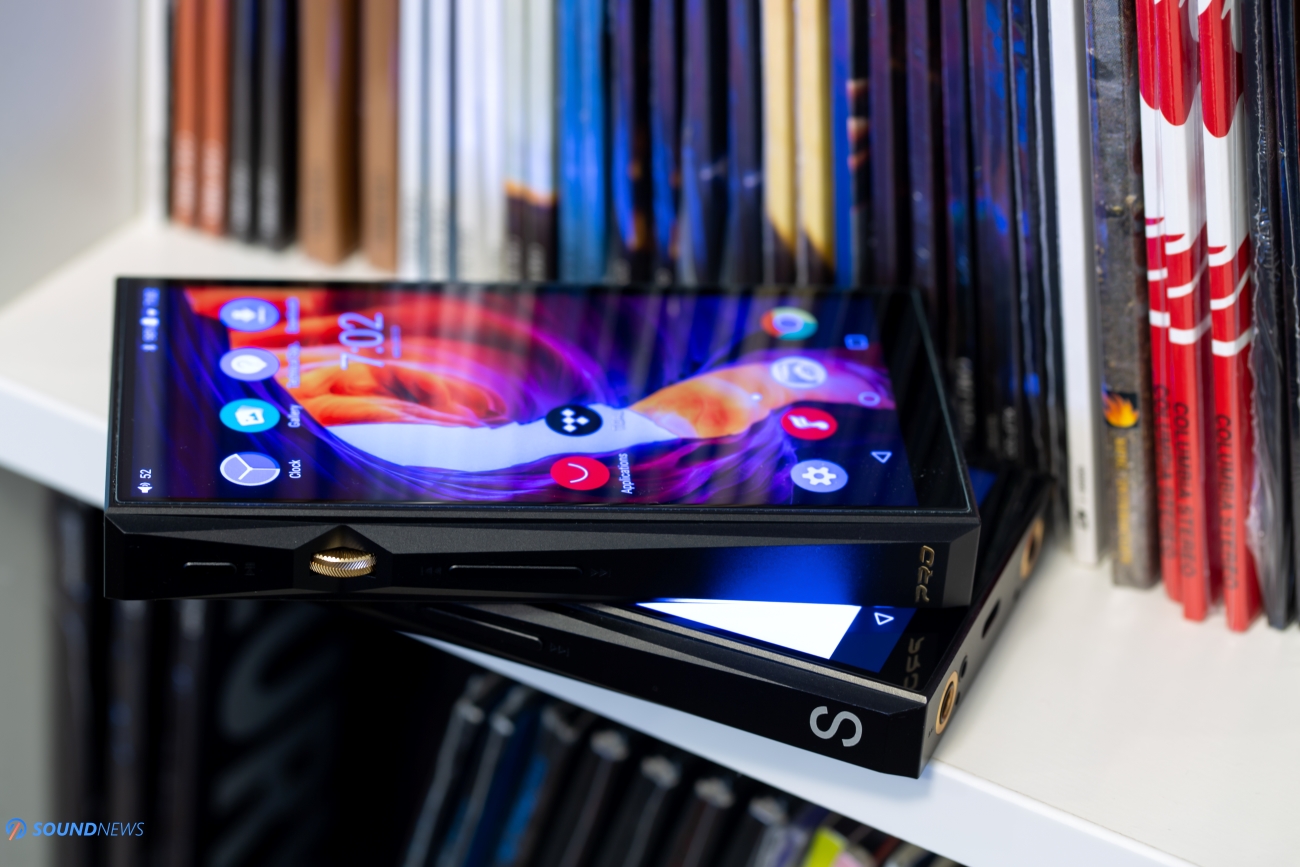
Conclusions
M11 PRO looks, performs and sounds like a high-end DAP to me. It has the fastest CPU at the moment of any DAP, has a beautiful machined aluminum body and some impressive specs to boot that only FiiO implemented so far. I’m glad that FiiO had the guts and courage to try new things as implementing those THX modules and I hope their extra-work will be repaid back. It’s time for FiiO to be a trendsetter and it’s time for others to observe how a DAP should move, sound and cost.
I know FiiO is really proud about this one as they just decided to make a limited run of M11 PRO Stainless Steel of just 1500 units worldwide so act fast if you want to reserve one for yourself.
Oh, one more thing, DAP days are not over yet, not yet!
PROS:
- Futuristic design, great material selection and attention to detail
- Fastest response times of any DAP
- Advanced GUI that is easy to use and navigate
- Widest soundstage in a DAP, amazing depth and airiness
- Great tonal balance across the board
- Great Bluetooth codec support
- Excellent micro-detail levels
- Super clean and transparent sounding
- Extended frequency-response
- Noise-less headphone out, works great even with sensitive IEMs
- Among the fastest transient response in a DAP
- Great price to performance ratio!
- Still no Google Play Store support
- Sources: Xiaomi Mi9T Pro, Corsair One i160
- DACs: Matrix Audio Element X, KECES S3, Burson Conductor 3
- DAPs: FiiO M11 PRO, M11, M5, Shanling Q1
- Headphone amps: Benchmark HPA4, Kinki Studio THR-1
- IEMs: FiiO FH7, FA7, Simgot EN700 Pro & others
- True Wireless earphones Creative Outlier Air, Hifiman TWS600
- Wireless headphones: Sennheiser Momentum 3 Wireless, FiiO EH3NC
- Portable headphones: Sennheier Momentum 2, Erzetich Thalia
- Full-sized headphones: Erzetich Phobos, Hifiman Arya, Quad ERA-1, Sennheiser HD660S
- Loudspeakers: KEF LS50W
- Interconnects: QED Reference XLR, Aune AL3 XLR
- Power Cables: Isotek EVO3 Premier (x2)
- Balanced Power Conditioners: PLiXiR Elite BAC 400, KECES BP-600
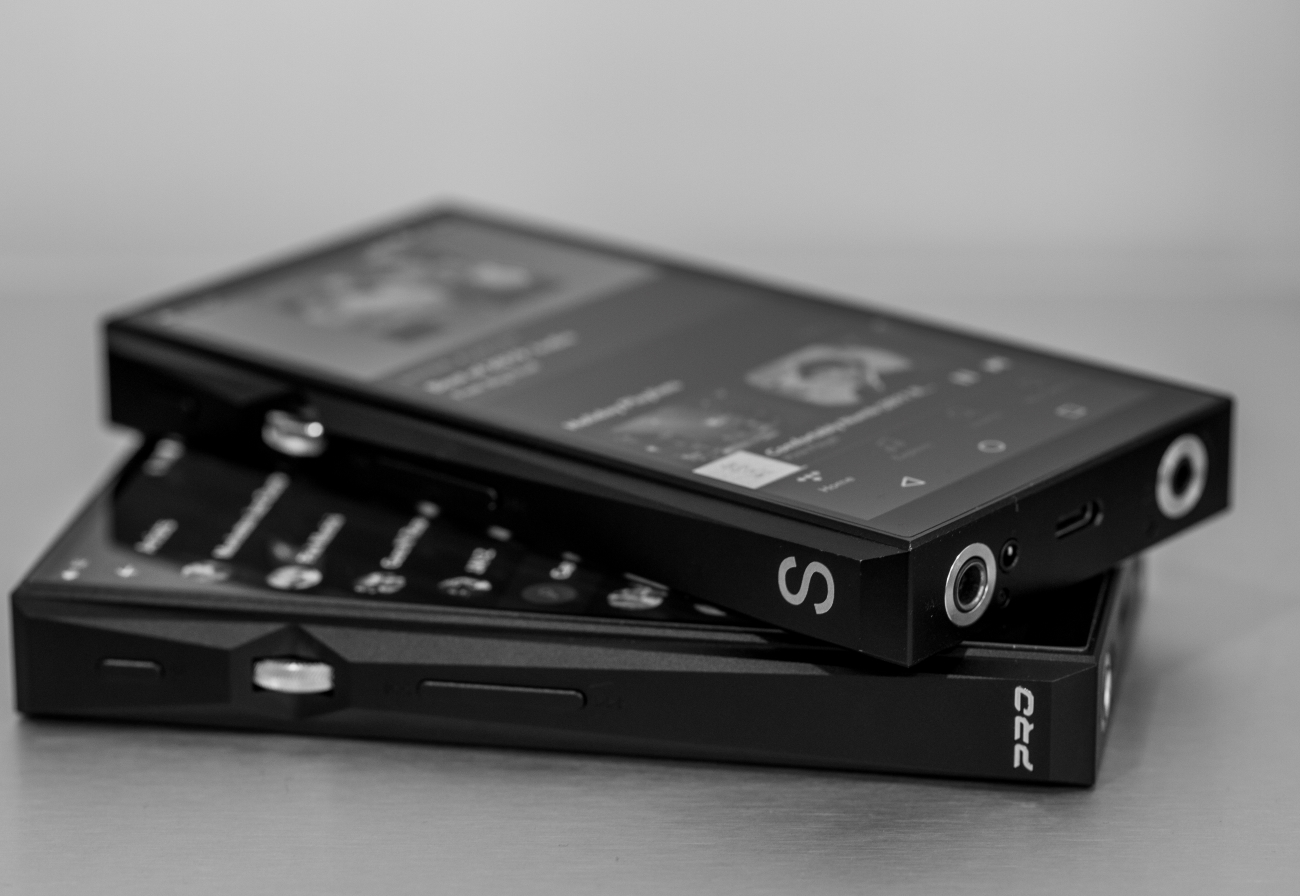
Overall score 95/100
Cat Music
It would be interesting to try the ibasso dx220 with amp8, to know the difference between both Daps in sound quality, thanks!
phara0hseye
I really appreciate your review. I like the focus on describing the sound signature as per your ear and tastes. While purely subjective, it is useful. Nicely done.
DarKu
Reviewer at Soundnews
Pros: Great build quality, fit & finish
- Extended frequency response
- Linear and straight as a line, zero coloration
- Deep and controlled bass, clean top-octave
- Ultra-low harmonic or any kind of distortion even at loud levels
- Lightning quick transient response, great slam
- Natural fluidity and smoothness
- Incredibly powerful headphone amp section
- Highest value in the headphone amp category as of today
- Extended frequency response
- Linear and straight as a line, zero coloration
- Deep and controlled bass, clean top-octave
- Ultra-low harmonic or any kind of distortion even at loud levels
- Lightning quick transient response, great slam
- Natural fluidity and smoothness
- Incredibly powerful headphone amp section
- Highest value in the headphone amp category as of today
Cons: Soundstage is not the widest
Probably the biggest hype I ever encountered in the headphone kingdom was the announcement of THX AAA 789 headphone amp by Massdrop. People called it as the Holy Grail of headphone amplification, as an End-Game, shift+delete your head-fi account type of amp. Everybody dreamed about it and everybody wanted one. That is not because it was expensive, not at all, at only $400 it was among the cheapest balanced and powerful desktop headphone amp I knew about. Everyone dreamed about it because of the availability of that particular amp, the first batch was sold-out in one hour I recon, second batch sale lasted few hours and only the third one lasted a day or so. I am not that lucky by nature so obviously I forgot to pre-order one and put my hands on it. People were selling it on the used marked at higher prices than MSRP! Its demand was much bigger than supply, the hype was real!
A year passed and people are still genuinely interested in it, it carries two THX AAA-788 stereo modules known for lowest distortion, high output power and close to zero coloration. If you wanted to go all-in for the best available THX chips available: the dual-mono only THX AAA-888, you needed to shelve some serious cash for the $3000 Benchmark HPA4 that I also reviewed and later on purchased for myself as I couldn’t sleep at night without one, that’s how good it sounded with all my headphones. Benchmark Media was the sole manufacturer with for the top-of-the-line THX modules but that soon changed with the introduction of the $289 SMSL SP200 headphone amplifier – It’s super affordable, it’s small, has RCA and XLR inputs and a gain switch, should it deliver impressive sonics? Let’s check that out!

Inside the Box
When I picked up the fairly small and lightweight box from the delivery courier, as usual my doubts started working me from the inside. A serious headphone amp should be big and heavy, carry toroidal transformers and should be carved from 20 kilo aluminum ingots, right?
Unboxing it I couldn’t believe how small and lightweight it was, it brought a smile to my face. In the same time, I remembered how good my former reference Gilmore Lite Mk2 from Headamp sounded, or the Burson Fun or even the cute Bacillus from Erzetich Audio, all were small but huge in terms of sonics.
Inside the foam protected box you’ll find: the SP200 unit, a power cable and some papers with its detailed specifications. No user manual to be found but sincerely this is only a headphone amp with no additional features, I don’t think a user manual is needed, just attach your source to it, select RCA or XLR on the front and listen to some tunes.

Design & Build Quality
What surprised me really, is that it doesn’t have an external switching power supply like how THX-789 by Massdrop is having, but has it inside the unit, if the audiophile in you wants to use some fancier power cables you can do that with SP200 and you can’t with THX-789.
Build quality is great, the case seems to be aluminum milled on a CNC machine, the case is thick and the back and front panel are even thicker. It has rubber feet underneath in small cut-outs so those will not wobble around. Its build quality is pretty much on the same level with THX-789 from my perspective, I have no complaints.
On the front panel you have two headphone outputs: a ¼” and a 4-pin XLR output, an On/Off switch, a RCA or XLR input selector, a High/Low gain selector and a volume wheel. No display, but it’s really not needed for a pure analog amp.
On the back you have a universal 100 to 240V AC input, so you can use it anywhere on the globe without changing a jumper or flipping a switch, you also have an RCA and an XLR input. It doesn’t have any analog outputs so it can’t work as a line-stage (preamp).
When I first looked at it, I wasn’t really sure I am looking from a right angle at it, but when I got to play with it in my hand, I observed the slightly angled case. I think it looks interesting, it’s not over the top and most importantly doesn’t have any sharp edges. The only thing that bothers me a bit is how easy I can turn the volume wheel, it has very little mechanical resistance and sometimes I just raise the volume way too easily to uncomfortable loud levels.

Technology Inside SP200
This is where it gets super interesting. HPA4 by Benchmark Media has a competitor now at just 1⁄10 of its price as SP200 is also using dual-mono THX AAA-888 circuitry inside. If you never heard about those, THX modules are reducing harmonic, intermodulation and crossover distortions by 20 to 40 dB compared to regular headphone amplifiers, offering a truer to life, a realistic and fatigue-free listening experience. All was possible by using patented feed-forward error correction to null conventional distortion and noise levels.
SP200 will deliver up to 6W of power into 16 ohms or 3W in 32 ohm loads on both ¼” and 4-pin XLR outputs, it doesn’t really matter if you have a balanced headphone cable or not, it delivers its full power on both outputs. With all those impressive numbers it should drive even the most demanding headphones as high impedance dynamics or current-driver planar-magnetics, we will of course test both instances.
It has an output impedance close to zero ohms so damping factor should not be affected at all and at only 2.8 micro volts of noise under load it should pair nicely even with extra sensitive IEMs. What I really like about THX AAA amps is that they have their noise floor undetected at any volume levels, but will see about that very soon.
It seems that SMSL designed a special 24Watt power supply for this unit to be very efficient, small and obviously an ultra-low-noise one. It is encapsulated inside a metal shell, that is always a good sign and hum or hiss should be undetected. As with all THX AAA designs, the electrolytic caps are not in the signal path but are used for power filtering.
The volume works in analog domain, this is an analog pot and at lowest volume there is a bit of channel mismatch, but going past 8 o’clock the channel balance comes back and is not something to be concerned about.
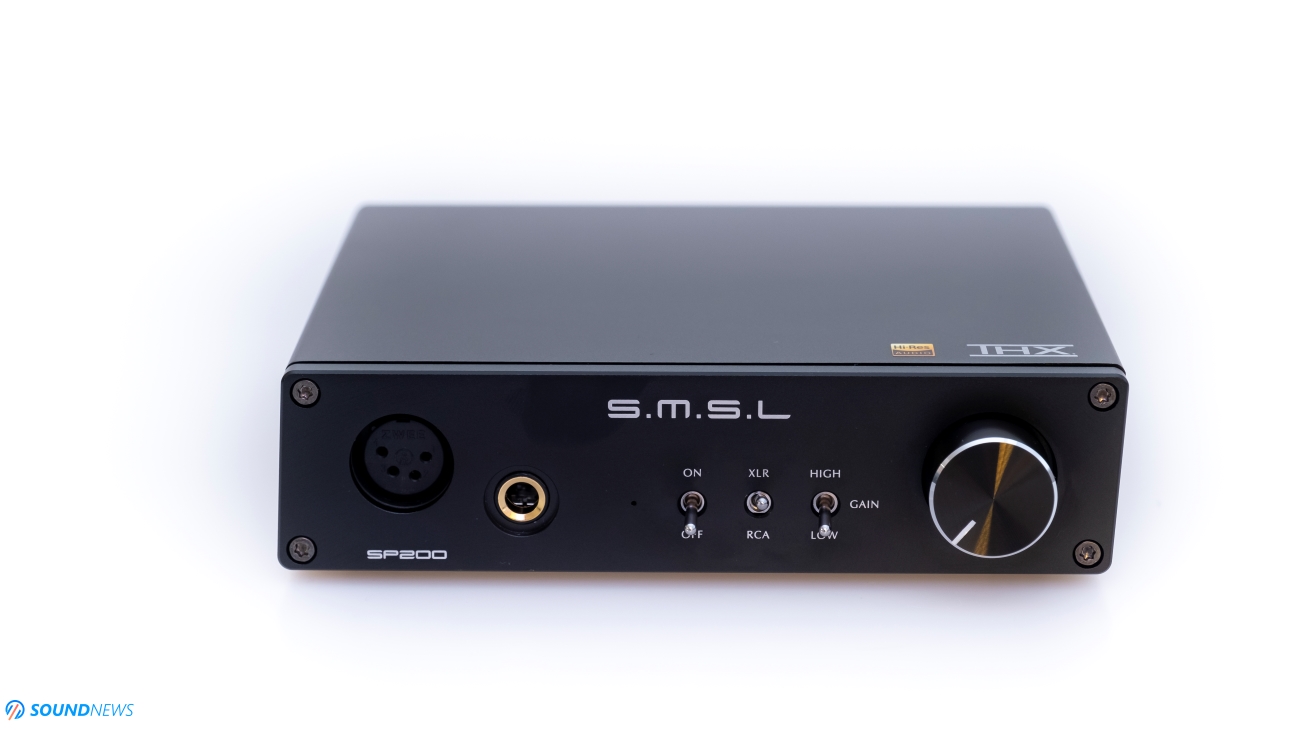
Test Equipment
To test SP200 at its maximum potential, a super linear and honest sounding source with close to zero colorations was needed, that is why I used a Matrix Audio Element X.
I will be testing the noise floor with FiiO FH7 and with Simgot EN700 PRO IEMs, transient response will be tested via Quad Era-1, power output, control and linearity tests would be done via Hifiman Arya and I’ve thrown a Sennheiser HD660s into the mix as well, just for fun.
I’m happy to report that in few days I will also be comparing it to Massdrop THX-789 and with a Benchmark HPA4, it will be a battle of the titans and I am looking forward to that one.
Ok everyone, time to hit some eardrums.

Sound Performance
I. Noise floor/Background noise
I connected my sensitive IEMs and I am glad to report that the noise floor is nowhere to be spotted in low gain mode. I was skeptical at first, since in low gain position it doesn’t have a unity gain of 0 dB, but a higher one at +6 dB that might induce a bit of hiss, but my fears are now gone. Background is black, all I hear is complete silence even at maximum volume. I tried High gain setting, I paused my music and I started hearing hum from about 10 o’clock position, however if I would press play, I would go deaf at that volume. In low gain mode it works exceptionally well and there is plenty of volume.
There is however a small issue with sensitive IEMs: it starts to be really loud really fast so take great care when you touch that volume wheel, I personally can’t listen at more than 8 o’clock position, at 9 it is way too loud for me. With portables like Sennheiser Momentum 3 and with Erzetich Thalia I can go higher, maximum to about 10 o’clock position and that’s it. Plenty of volume even on low gain. Funny thing is that except for one headphone, every headphone I tested worked great on low-gain position. I used high-gain only with Hifiman Arya for the best results.
In terms of noise floor, SP200 is indeed playing with the big boys like HPA4 and THX-789 and may put to shame some more expensive designs.

II. Tonality
SP200 stays true to the source it is fed by and true to the recording. It doesn’t add a lot from itself, it has close to zero colorations. I consider it linear sounding without putting an emphasis on anything. Its neither bright or warm, it sounds exactly like your source and your headphones. As such I can’t say it has a tonality, it is without one.
System matching is crucial with SP200, you really need to love your source as it will enhance all its sonics, including its flaws. With a great source the final result will be great and with a mediocre source the final result can be disappointing. I encountered this phenomenon multiple times even with HPA4 by Benchmark.
Some might say it even has an incredible fluidity and smoothness, due to a very low noise-floor you have a darker room and louder sounding musical notes that somehow are bonded to each other. This is a different kind of smoothness, SP200 doesn’t roll-off anything in the frequency range, this is just how your music is supposed to sound when you take out all the distortions and noise floor.
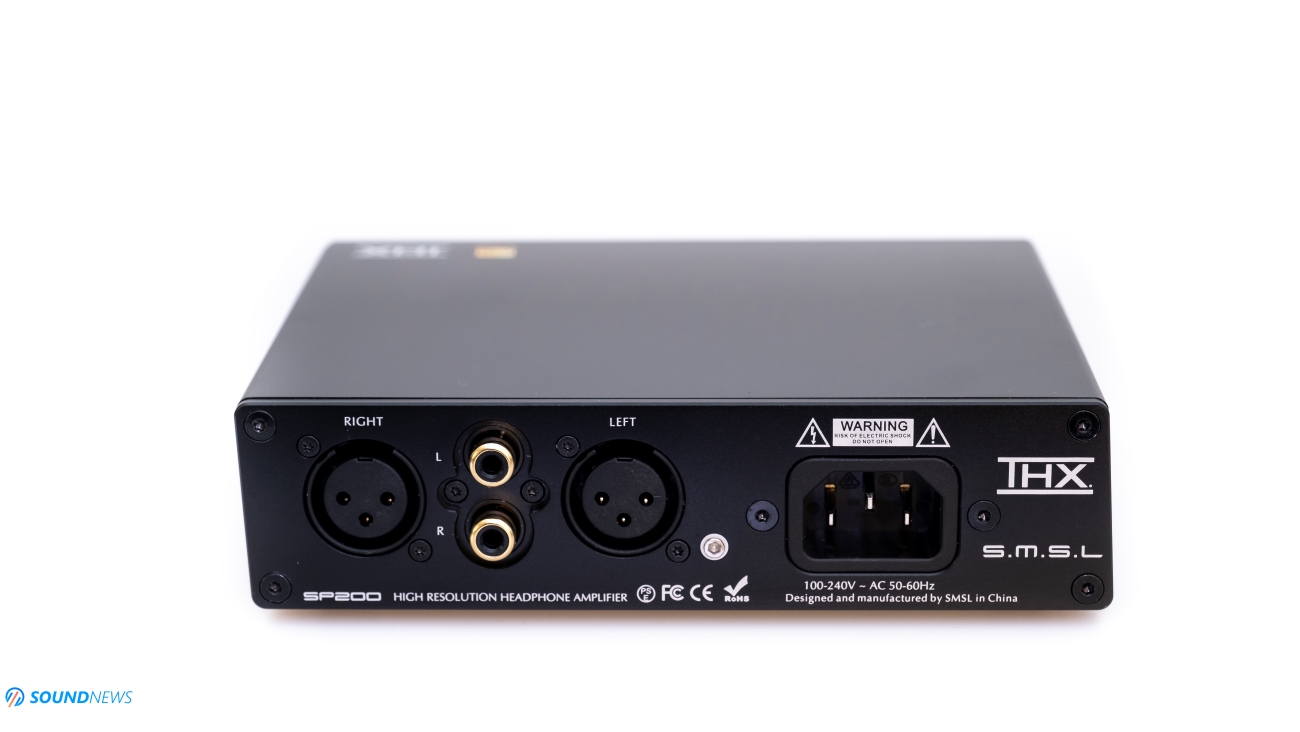
III. Transparency & Resolution
This is where SP200 is shining brighter than other headphone amps, it feels at home when it comes to resolution. When you lower down the noise, you hear everything else clearer, louder and more outlined. SP200 as the rest of THX family of products are excelling at recreating the original intent of the recording engineer, it will extract everything that the engineer intended us to hear. It is brutally honest – this could be a good thing or a bad thing. Bad mastered music becomes almost unlistenable, you hear all its flaws and you hear them very clear; some people don’t like that. As an owner of HPA4 I enjoy that a lot, I can review new records with this kind of gear and in the same time I enjoy those explosive dynamics it reveals in music that you never knew were there in the first place.
When noise and distortion lowers, I can now look at a bigger picture, I can appreciate the distance between few notes, between me and the singer, everything becomes so much easier. SP200 has a high transparency, all the flaws from my usual bass tracks to my rock tunes are easily spotted. If you want a revealing amplifier that will show all the strengths and cons of your source (digital or analog), SP200 will offer you that.
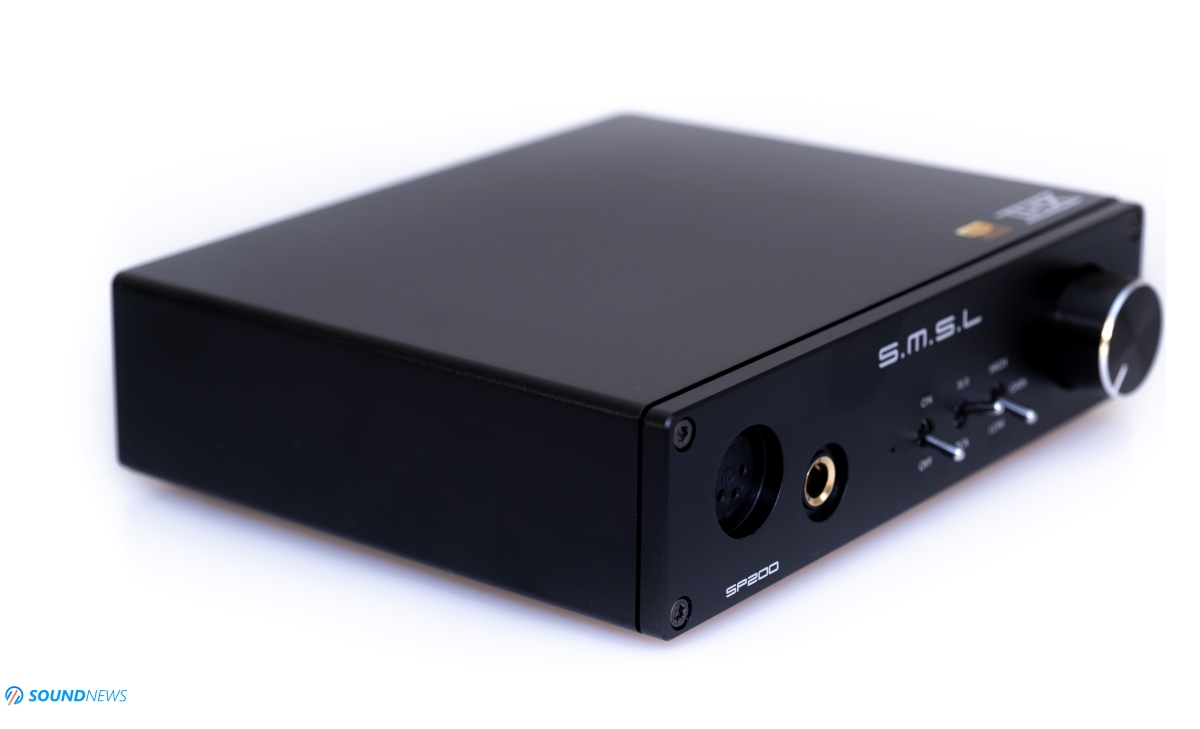
IV. Transient response
The best transient response I ever heard from a headphone transducer was heard on HPA4, if I move to faster paced music it will always put a big smile on my face. It just grabs you and pounds you with tons of energy, speed and impact, its spectral decay is perfect and diaphragm control as well. SP200 is the same but to a smaller degree.
My usual folk-rock tunes and my older electronica kicked some serious punch into my eardrums. It sounded grainy at first and treble was hotter than usual but just after few hours it didn’t sound that way anymore. Speed was back and the treble became detailed yet free of harshness as I remembered it.
With a close to zero impedance and a whopping 6W of power the damping factor is huge and transient response is on a very high level as well. Listening to Wolf Totem by The Hu at half way thought the song will present a strong kick in the treble and a lot of presence in the midrange with that magical throat singing and horsehead fiddle that switches places from time to time, that mix was always punchy and kept a faster pace than usual.

V. Soundstage & Depth
Probably the only thing that I don’t consider impeccable is the soundstage size, it is medium in size, sounds outside my head but doesn’t envelop my entire body how hybrid, all-tube designs or just bigger solid-state headphone amps are sounding. I don’t know what might be the culprit, maybe the power supply, maybe something else, THX-789 is sounding basically the same. Only the bigger and costlier HPA4 will present a bigger and more believable stage in front and around me.
In exchange, SP200 presented a really good see-thought depth where I can easily appreciate how far are all musicians and their location in a 3D field. Listening to Roger Waters you hear all those tiny sounds, tiny amounts of air moving around creating a feeling that I am not listening to headphones but to a cleverly positioned speaker system. With the right music, SP200 will present spatial cues and render all depth information.
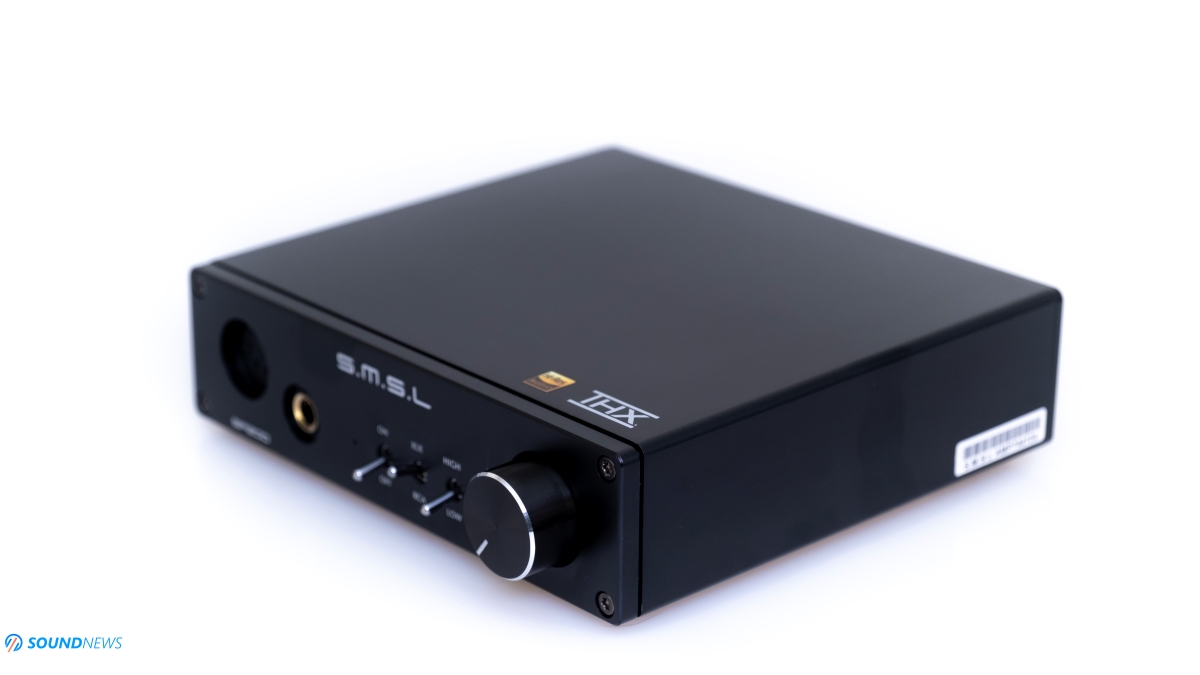
VI. Power Output
With Sennheiser HD660S I cannot go past 10 o’clock in low gain mode, with Quad Era-1 I can’t go past 11 and with Hifiman Arya I can’t pass 13 o’clock position. High gain is raising the gain to 18 dB – that is a 12 dB raise compared to low gain. With Erzetich Thalia or Sennheiser Momentum 3 it’s a child’s play, it will power them all easily without breaking a sweat. I presume it will do just fine will all planar-magnetic headphones with an exception or two (AB-1266 and Susvara came to mind).
Power wise it is basically on the same level with THX-789 and offers just a bit lower than HPA4 that has a higher voltage power-supply and as a result offers more power on tap and a better control.
SP200 is tiny, but the sound and the power that comes out of it is not. SP200 is incredibly powerful, I almost can’t believe it drives the Arya like it’s nothing. Impressive would be an understatement.

VII. Frequency Response
Sub-bass is incredibly tight, I think this is the right word, it is palpable and very detailed yet layered and deep. Bass control is not something a lot of headphone amps can be proud about and yet SP200 has it under a strict control. It is ultra-linear and will show its face only when its needed and will go back to shadows in an instant.
Mid-bass is not overdone or emphasized, the mid-bass hump is not present and will not color the overall performance. It’s there in a right dose and again it comes when it’s called for. What I really like is how tactile, fast and instant it can be. It’s lightning quick, strikes immediately with a huge force and impact. If you prefer a bass that lingers a bit more, with a longer and smoother decay then this will not be for you. SP200 is brutally honest, it can be slow only when the song asks for it, otherwise expect some impressive dynamics.
Midrange is again neutral to a point that at first it might sound as dry or uninvolving but the more I listen to it the more it impresses me and the more I understand why it changes its character so often and so easily. Sometimes it will sound wet, smooth and involving, sometimes dry or even bright or unbearable. A true chameleon of an amp. You have amps that are sounding warm, smooth and involving with their milk with honey approach, then you have linear or bright sounding amps and then you have THX amps that are sounding like all those of the above plus a bit more, a new breed of amps, that will alter their sound signature depending on the quality of the recording, of the source, source material and of the headphones.
Treble is extended and top-octave can be spotted without even closing my eyes, it extracts treble information so easily and so amazingly vivid and clear. In terms of overall frequency response SP200 is dead neutral and straight as a line. It stays true to its source and doesn’t add a hint of coloration.

VIII. Headphone pairings
This is an easy one. If you really love your headphones and your source be it digital or analog then you will be in love with SP200, I have no doubts about that. If you have a mediocre sounding source and you expect that a headphone amp will somehow magically make it sound much better, that will never happen with SP200, it will expose all the flaws of the source and of your recordings.
Since it doesn’t have its own character and doesn’t leave a stain, it will pair nicely with every headphone you will throw at it, dynamic or planar-magnetic doesn’t really matter. I personally enjoyed all my headphones with it and they sounded exactly how I remembered them on the bigger HPA4.
Comparisons.
In two days, I will publish my comparative in-depth comparisons between SMSL SP200, Massdrop THX-AAA-789 and between the Benchmark HPA4. I’m very excited about that comparison, stay tuned for that!

Conclusion
At $289 this is currently the most affordable THX-AAA amp that sounds stunningly close to its bigger brother. In the past I believed that a top performing headphone amp with top specs and sonics can be only achieved at past $1000.
SMSL proved me wrong on so many levels with its SP200, it offers a balanced sound across the board and delivers truly high-end sonics without murdering your wallet.
Did it impress me? You bet it did, it wiped the floor with some higher priced amps and this is why it gets my highest recommendation.
You know what its best feature yet? It is available right now, you don’t need to wait for the next batch and you don’t need to preorder anything.
PROS:
- Great build quality, fit & finish
- Extended frequency response
- Linear and straight as a line, zero coloration
- Deep and controlled bass, clean top-octave
- Ultra-low harmonic or any kind of distortion even at loud levels
- Lightning quick transient response, great slam
- Natural fluidity and smoothness
- Incredibly powerful headphone amp section
- Highest value in the headphone amp category as of today
- Soundstage is not the widest
- DACs: Matrix Audio Element X, Burson Audio Conductor 3
- Headphone amps: SMSL SP200, Benchmark HPA4, Massdrop THX-789
- IEMs: FiiO FH7, Simgot EN700 PRO
- Full-sized headphones: Hifiman Arya, Quad ERA-1, Sennheiser HD660S
- Portable headphones: Sennheiser Momentum M2, Erzetich Thalia
- Wireless headphones: Master&Dynamic MW65, Sennheiser Momentum 3 Wireless
- Interconnects: QED Reference XLR (x2), Aune AL3 XLR
- Power cables: Isotek EVO3 Premier (x2)
- Balanced Isolation Power Conditioners: PLiXiR Elite BAC400, KECES BP-600
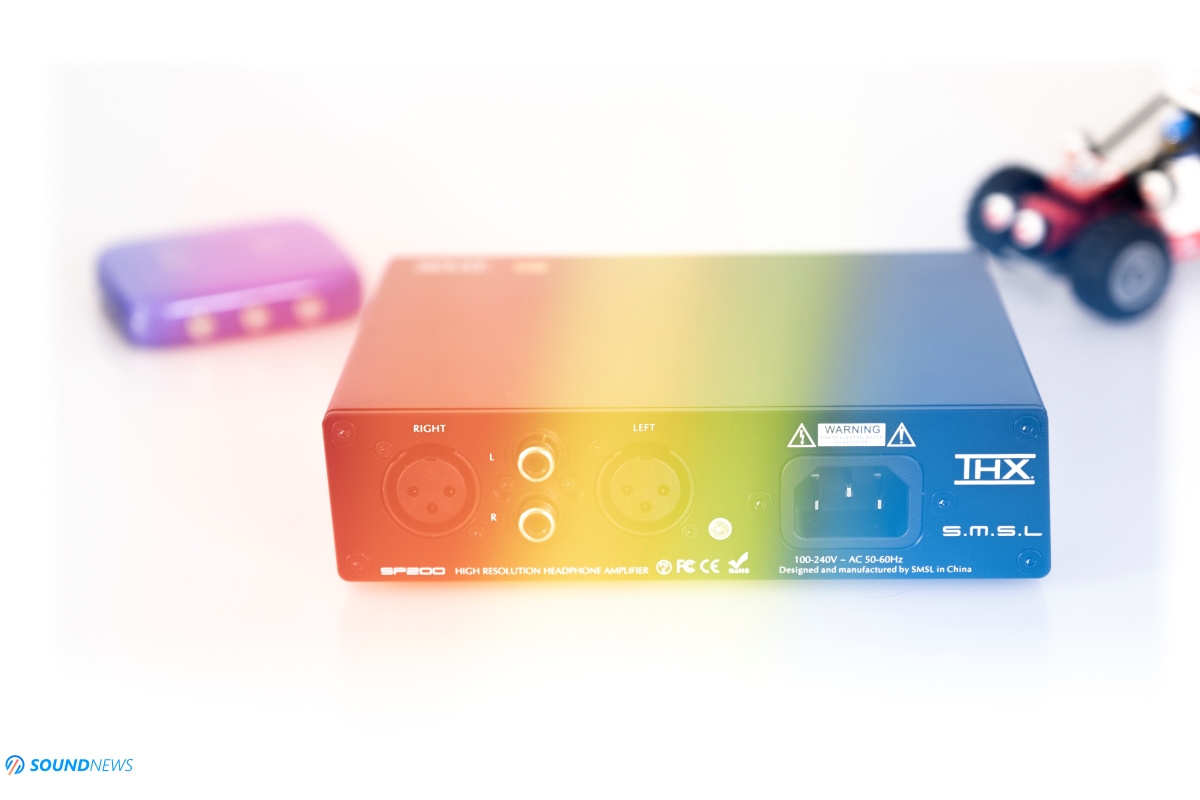
Overall score 95/100
DarKu
@nishan99 Here it is: https://soundnews.net/amplifiers/he...x-789-vs-benchmark-hpa4-battle-of-the-thx-es/
@Currawong just reloaded my review, every image shows up for me.
@Currawong just reloaded my review, every image shows up for me.
mRaaghava
How does LCD2C, LCDX and Focal Clear fare with this Amp? DAC i am looking to get along with this is D90.
DarKu
Reviewer at Soundnews
Pros: Solid build quality, unique casework that doubles as a giant heat-sink.
- A feature-packed 4-in-1 device
- Extended frequency response, detailed and transparent sounding
- Presents an open wide soundstage and an amazing depth
- Very precise pin-point imaging
- Probably the best pace, rhythm and timing I’ve heard in an all-in-one unit with an excellent transient response
- An amazing headphone amp and preamp section: hard grip, control and tons of headroom left on tap
- Sounds natural and has a great tonal balance
- Leans towards an engaging performance, adds color and nuance to your music
- A feature-packed 4-in-1 device
- Extended frequency response, detailed and transparent sounding
- Presents an open wide soundstage and an amazing depth
- Very precise pin-point imaging
- Probably the best pace, rhythm and timing I’ve heard in an all-in-one unit with an excellent transient response
- An amazing headphone amp and preamp section: hard grip, control and tons of headroom left on tap
- Sounds natural and has a great tonal balance
- Leans towards an engaging performance, adds color and nuance to your music
Cons: Not the most linear sounding DAC (can also be a plus for somebody)
- Slight hiss with ultra-sensitive IEMs (solved by adding an iEMatch or Ear Buddy from iFi Audio)
- Slight hiss with ultra-sensitive IEMs (solved by adding an iEMatch or Ear Buddy from iFi Audio)
My unboxing video:
My video Review:
It all started about 2 years ago when I sent an email to Burson Audio asking when Conductor 3 would make an appearance and I sent them a longer wish-list of what I would like to see implemented in it. All I got back was a wink, a smiley face and a “please hold the door” response – a clear sign that Conductor 3 is undergoing heavy development.
Before telling you more about Conductor 3, you first should know about its roots and where it is coming from. When I’ve heard about Burson Audio more than 10 years ago they were making discrete op-amps in single or dual configurations, those small little things led to other much bigger things and soon a dedicated DAC, a headphone amp and a combo of the two followed. Burson implemented their discrete op-amps in those units and obviously my curiosity couldn’t hold me too much and I purchased a Burson HA-160D DAC and headphone amp combo and later on I published my first ever review on soundnews.ro (our sister website). Two years later Burson improved that one, implemented a top-of-the-line ES9018 DAC chip, added even more power on tap and released their first Conductor 1, few more years and Conductor 2 (CV2 and CV2+) followed with a remote control that everyone requested, having a unique see though display, it had some advancements on the digital and analog side as well.
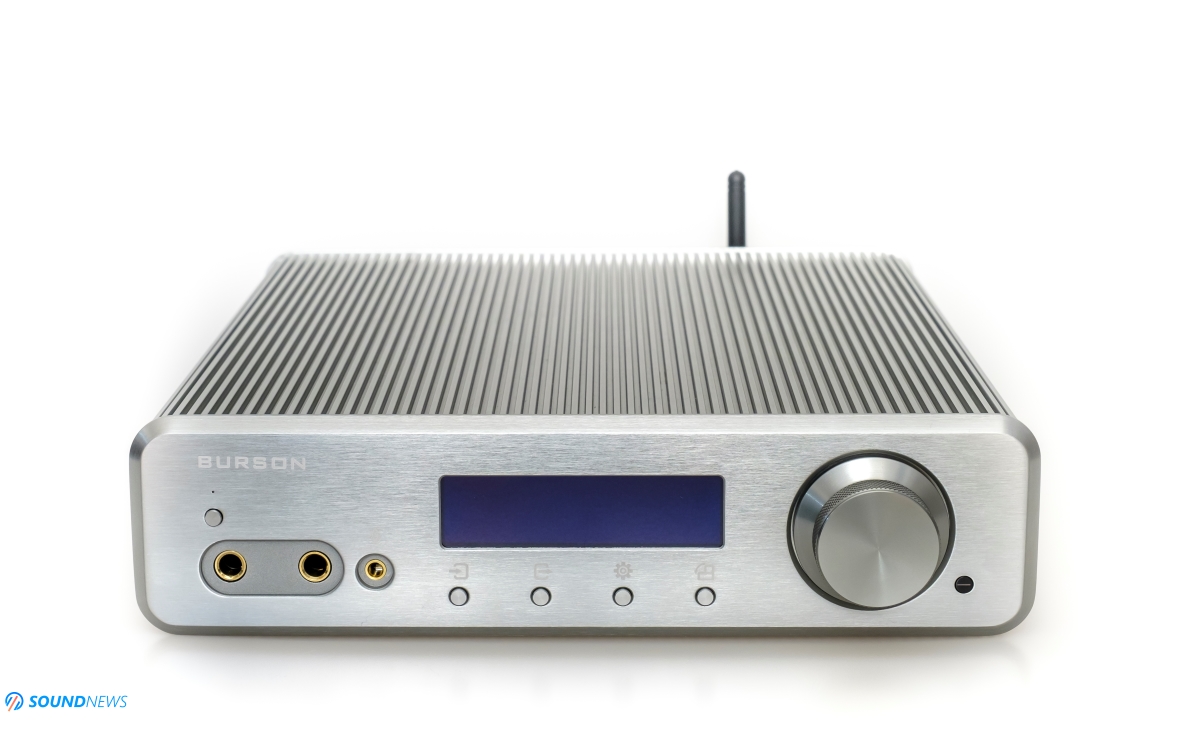
As you can see, Conductor 3 Reference (I will be calling it C3R from now on) is their fourth generation DAC/Preamp/Headphone amp all-in-one unit and if you are wondering what exactly was changed or improved, I think it’s time to have a closer look:
- One of the biggest changes is The Cool Case, it has that name not because it looks cool and unique, but for the reason that it is actually 300% more efficient at heat dissipation, the aluminum body that wraps it is actually a huge heat sink, I’m glad that this one has rounded edges so you will not cut yourself with those. You can read more about it here
- The second biggest change is that it lacks a big and heavy toroidal transformer inside. Before you raise your eyebrow looking at that external switching power supply you should know that - that one is only a very small part of the actual power supply and power filtering Burson Audio implemented in it. Inside the unit the self-developed 5 MCPS (Max Current Power Supply) will raise the voltage frequency from 50 Hz to 170 kHz pushing noise beyond human hearing. It has a low impedance that assures instant energy delivery for output transistor. No more tens of fat electrolytic capacitors in the signal path, no more killing dynamics and transient response. You can read more about Burson’s MCPS right here
- Third one is going from a single ES9038Q2M DAC chip to dual DAC chip configuration to extract the best channel crosstalk and SNR/Dynamic range out of it.
- C3R is futureproof as it uses socketed op-amps, more exactly two singe-V6 Vivid and two dual-V6 Vivid. When Burson Audio will release their next generation op-amps and you’ll want to upgrade to those, just use the included torx screwdriver, open-up the case and change those manually. it’s that simple!
- C3R has now a fourth feature: Bluetooth receiver! Burson implemented the best Bluetooth capable chip on the market: CSR8675 from Qualcomm – it features Bluetooth 5.0 a wide codec support as SBC, AAC, AptX, AptX-HD plus the included BT antenna will provide a strong and stable BT signal even with few concrete walls between the sender and C3R.
- There are many other improvements: like using 5 crystal clock-oscillators instead of just one on Conductor2, higher power delivery for higher impedance headphones, redesigned circuit board with the newest analog and digital circuitry from Burson, a big and bright LCD screen, USB Type-C on the back and the list goes on.
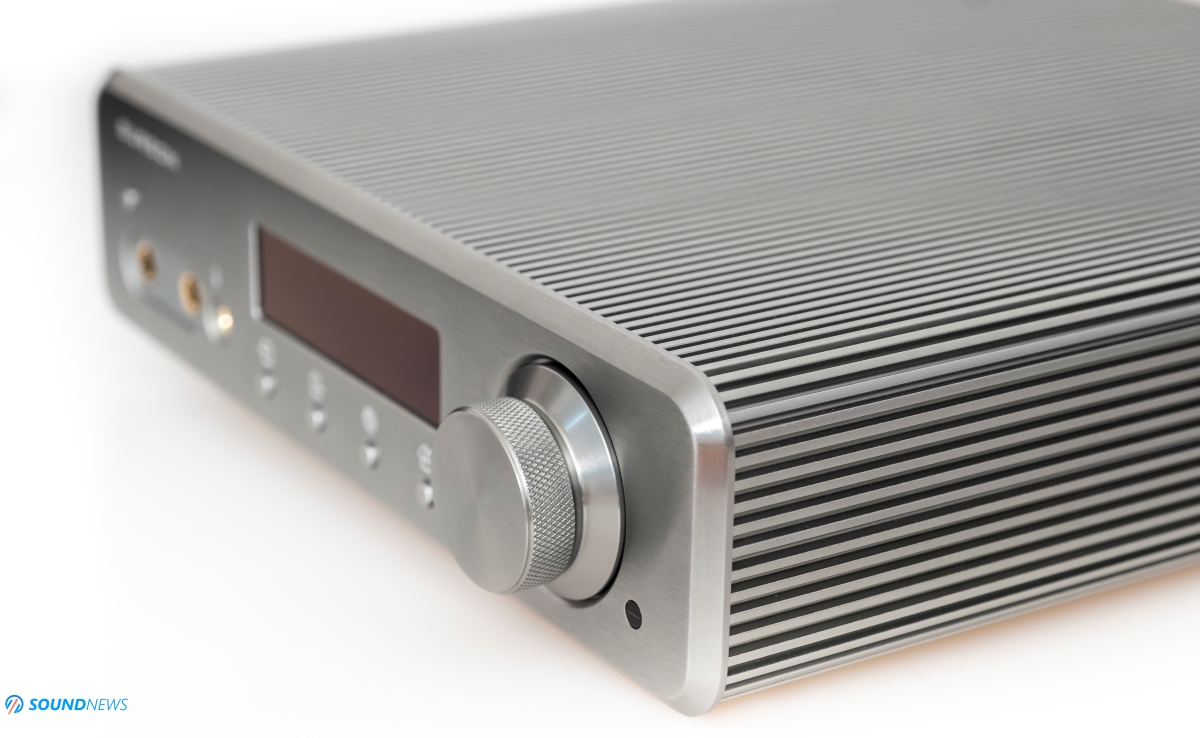
We prepared some questions for Burson Audio regarding C3R months ago when its web-page was not live, even the final specs were not revealed to me and I think we got some really interesting answers, let’s check them out.
Soudnews Q1: Is it obvious you have a strong collaboration with ESS Technologies as they are the only DAC supplier at the moment for you. ES9038Q2M is already implemented in the Play, Playmate and Swing and two of those chips are being used in the C3R, is there a reason you didn’t go for the desktop class PRO version instead?
Burson: In the Conductor 3 Reference, we use 2 pieces of ESS9038Q2M and achieved a desirable sonic performance. Furthermore, in our particular design, using ESS9038PRO brings no additional improvements.
Q2. This is the first Conductor that uses swappable op-amps, we think this its best feature yet, as it means it can be improved in the future. Can C3R use V6 Classic Single or Duals as well? Will future discrete op-amps from Burson Audio also be compatible with it?
Burson: The C3-Ref encourages op-amp rolling. You can certainly plug in our Classic op-amps or any other audio op-amps to tune the Conductor to your preference. We believe it is a great way for audiophiles to experience different sound without spending big on new equipment.
Q3. I think your Max Current Power Supply (MCPS) is a very interesting aspect that no one else adopted yet, the way it is implemented in C3R is on a much higher level compared to Playmate / Swing / Fun as it should be. If some of your potential customers will complain that it doesn’t house a big toroidal transformer inside how will you defend your clever design?
Burson: The big transformers + linear power supply were weaknesses, not strengths of our previous designs. They resulted in very high impedance and very slow delivery of current which meant big power caps were needed to smooth out current delivery. Our MCPS has no impedance and delivers energy directly into the power transistors. On paper the C3 delivers the same output as the C2 but because of the MCPS, the C3 feels like a much more powerful, responsive and accurate amplifier.
Q4. Here’s a tricky one: Since C3 is called Reference and not just C3, it means we have a chance to see another version of C3 in the future?
Burson: The C3-Ref is called Reference because we are throwing the kitchen sink at this one. It has all the power anyone ever needs. It has all the latest tech, specs, inputs and outputs so no one feels left out : ) Furthermore, it comes with our V6 Vivid op-amps which is the most accurate audio op-amp we have built. If we ever introduce other variations, we’ll first listen carefully to the wishes of fellow audiophiles and your readership. : ) Maybe you could organize a survey for us on this particular topic.
Q5. Headphone aficionados are very much into balanced drive, especially the ones that uses high- end headphones. Since C3R is a high-end design, did you ever considered implementing balanced drive as well via the 4pin-XLR or via 4.4mm Pentaconn connector?
Burson: The C3-Ref is a high-end design that is convenient to use. You can be a gamer with gaming headsets or you can be an old school audiophile with headphones purchased many years ago. The C3-Ref is designed to work with you instead of asking you to work with it. We like to think of it as the people’s Conductor.
Q6. I really appreciate that newest C3R is 300% more efficient at dissipating heat, can you explain a bit how it was possible? Conductor Virtuoso 1 and 2 already had thick aluminum cases but were always quite hot after an hour or so.
Burson: The Cool Case has a much bigger surface area when compared to the previous Conductors. Furthermore, due to a completely new structural design, heat transfers more efficiently from the power transistors to the rest of the case.
Q7. Does USB type-C on the back tries to tell something? Will the C3 Reference work with smart devices as well (smartphones, tablets)?
Burson: Yes, the C3-Reference works with just about any source components from iOS to Android devices to many Linux based devices. Furthermore, it has a top-quality BlueTooth receiver that features the Qualcomm CSR8675 receiver chip. Which means you can connect just about anything to it via Bluetooth or USB.
Q8. We never seen a DAC/Amp device that can be flipped with a dedicated button to flip the display as well. Was this decision made to save space on the desk or to better cool it down?
Burson: The C3-Ref is designed to fit into any living space. As such, you can even put the C3-Ref vertically if necessary. We don’t believe that buying a piece of Hi-End audio equipment should require you to rearrange your space or tolerate inconvenience.
End words: First review I ever did many years ago was for my own Burson HA-160D (that in few years was reborn as Conductor), as you might expect C3R awakened some nostalgic memories and I am looking forward to having a longer listen to it. Thanks for your time and I wish you good luck!
Burson: Thank you for your very long-term support. The HA-160D was introduced in a time when most audio equipment, even head-fi equipment were big, heavy and pretty harsh on the eye. Those qualities were marketed as necessary trade-offs for Hi-End audio performance. The HA-160D has shown fellow audiophiles that something that sounds great should also look alright and easy to use. We hope the Conductor 3 Reference can once again prove that point.

I didn’t know Conductor 3X with balanced inputs and outputs, including a 4pin-XLR headphone out is around the corner but I smelled something is cooking (again) in their labs so my question No.5 is invalid at this point.
Unboxing a Beauty, Unleashing a Beast
Of course, it came double boxed but what really caught my attention was that first bigger box has also foam inside to protect the smaller one. The product box has some heavy-foam inside to maximum protect all the contents. Inside the package you’ll find: The C3R unit, a high quality metal remote, an extra fuse, a torx screwdriver to open the case, a USB Type-C cable, a pair of RCA cables – that is always nice to have, an external power supply and the power cable that attaches to it, a certificate of compliance, two JRC 5532 and two JRC 5534 op-amps from New Radio Japan – Burson doesn’t recommend using those as they are worse sounding compared with V6 Vivid. However, you will need them to test the op-amp sockets if something goes sideways.
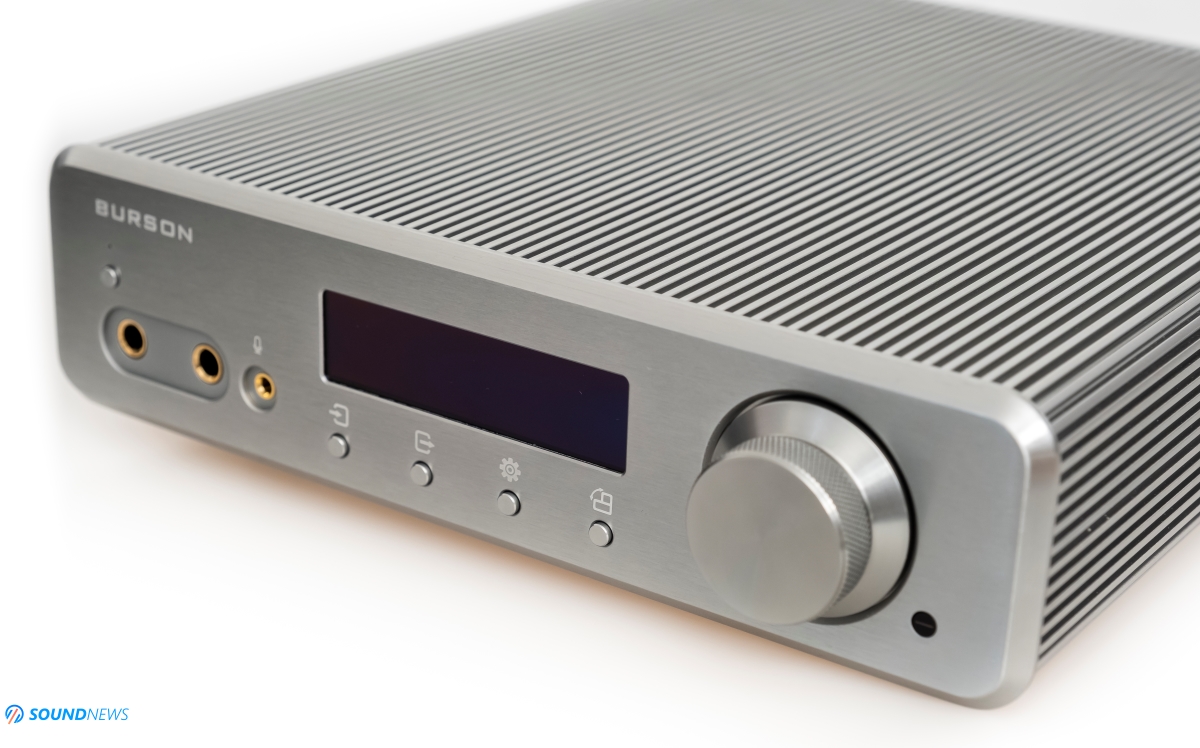
Design & Build Quality
Almost 10 years passed and finally Burson updated their good-looking case with a newer one that is much better at cooling the unit since those aluminum fins around it are doubling the contact surface to properly cool it down. The C3R as all previous Conductors is working in Class-A and moves to AB around the end of the volume wheel and as such it generates a lot of heat. Even at lowest volume setting it gets warm to the touch quite fast.
I think it looks unique, I always liked the raw aluminum look of previous Conductors, I really like the threaded volume wheel, it reminds me a lot about my tactical flashlights (another hobby of mine) and in general the whole unit seems really well made and put together. I’m glad the screws on the bottom can’t be misaligned and I’m glad those are hidden and can’t be spotted for a much cleaner look. The cleverly designed case is obviously milled on a CNC machine and first impressions it left on me are quite positive.
The case itself is quite big and heavy, at 255 x 270 x 70 mm and weighting app. 5 kg (11 lbs.) arranging it on a desktop table or in the living room can be a challenging. Burson came with a marvelous solution for that and put a button on the front plate that flips the screen 90 degree, flip the unit vertically and suddenly desktop space is not a problem anymore and by doing that the air flow will be even better, I think I will leave it this way.
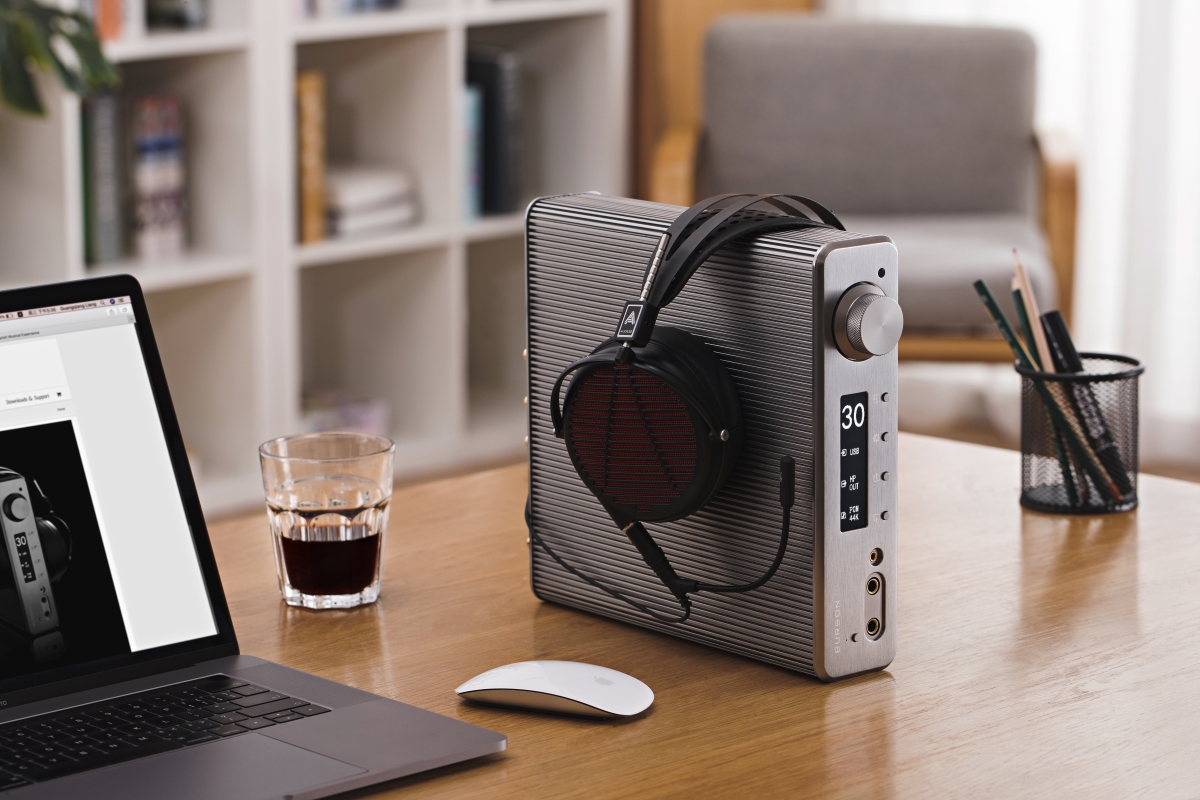
Controls & Connectivity
On the front panel I am welcomed by two ¼” headphone outputs, both are capable of driving simultaneously two pairs of headphones – that is great especially while comparing two headphones or listening together with a friend. There is also a 3.5 mm microphone input, gaming headsets should pair nicely with it. As for buttons, from left to right there is the On/Off button, input selector, output selector, settings and flip the screen button. The volume wheel works in digital domain and has 100 steps, so no more guessing how much power is left on tap.
On the back, it has a trio of digital inputs: a USB type-C, Coaxial and Optical inputs. On the analog side it has two RCA analog inputs – it means it can also work as a dedicated preamp or headphone amp, it also has two analog outputs, a standard 2V line-out and a volume-controlled line-out.
As you can see C3R is super versatile, it can work as a stand-alone DAC, headphone amp, preamp or a combination of two.
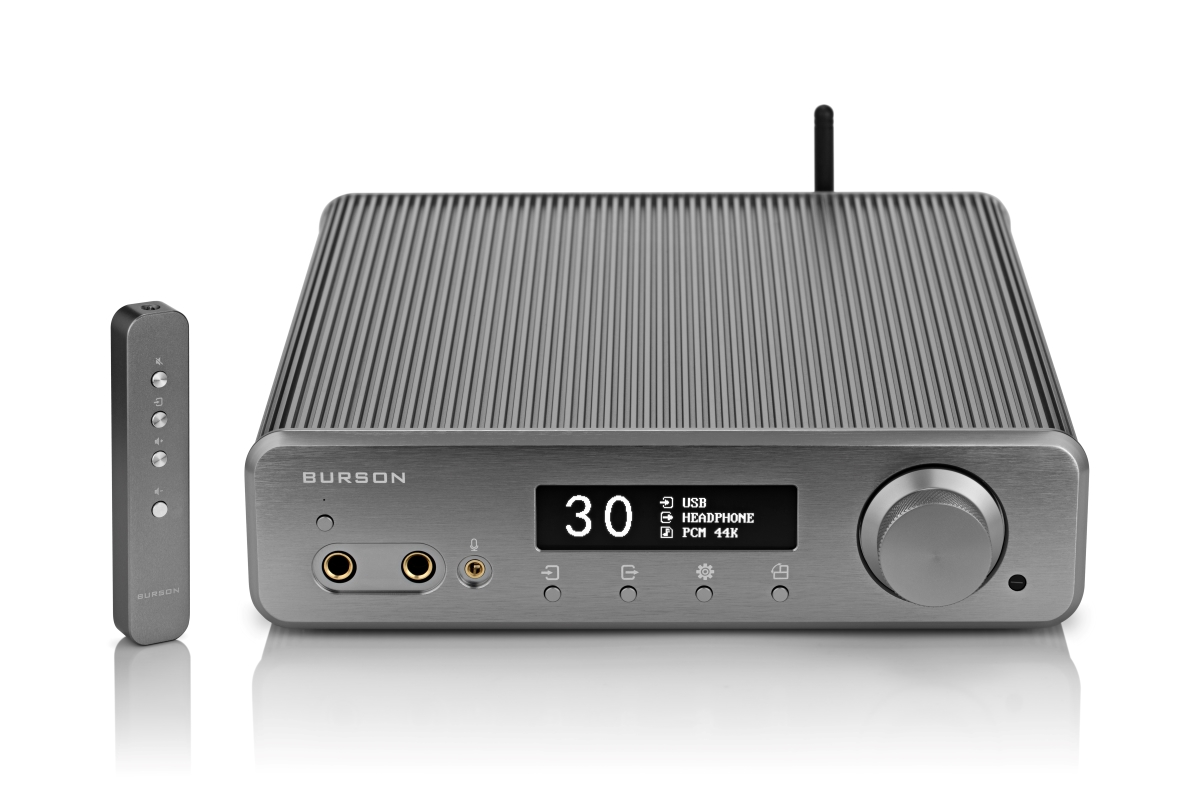
Display settings
With the included metallic remote you can change its volume level, mute/unmute it or change the selected input, rest of the settings are controlled only by the buttons on front. First two buttons will help in selecting the desired input and output. Pressing the settings button enters the main menu where a lot of settings can be accessed as:
- Headphone level - High or Low, this is your headphone gain setting
- FirFilter – you can select a digital filter that are built-in directly in the ESS Sabre DAC chip, there are 7 filters to play with
- DPLL (DSD) – OFF, Low, Mid and High (default) – the higher this setting is the higher the jitter rejection will be for DSD files
- DPLL (PCM) – Off, Low, Mid (default) or High – the same but for PCM files
- Emphasis – Off (default), On – ON position rolls-off the treble by about 5db at 10 kHz and by about 8 db at 20 khz. I strongly recommend leaving it on OFF position.
- OLED Level – Low (default) or High – changes the brightness of the OLED screen
- Reset Set: No or Yes – resets to factory settings
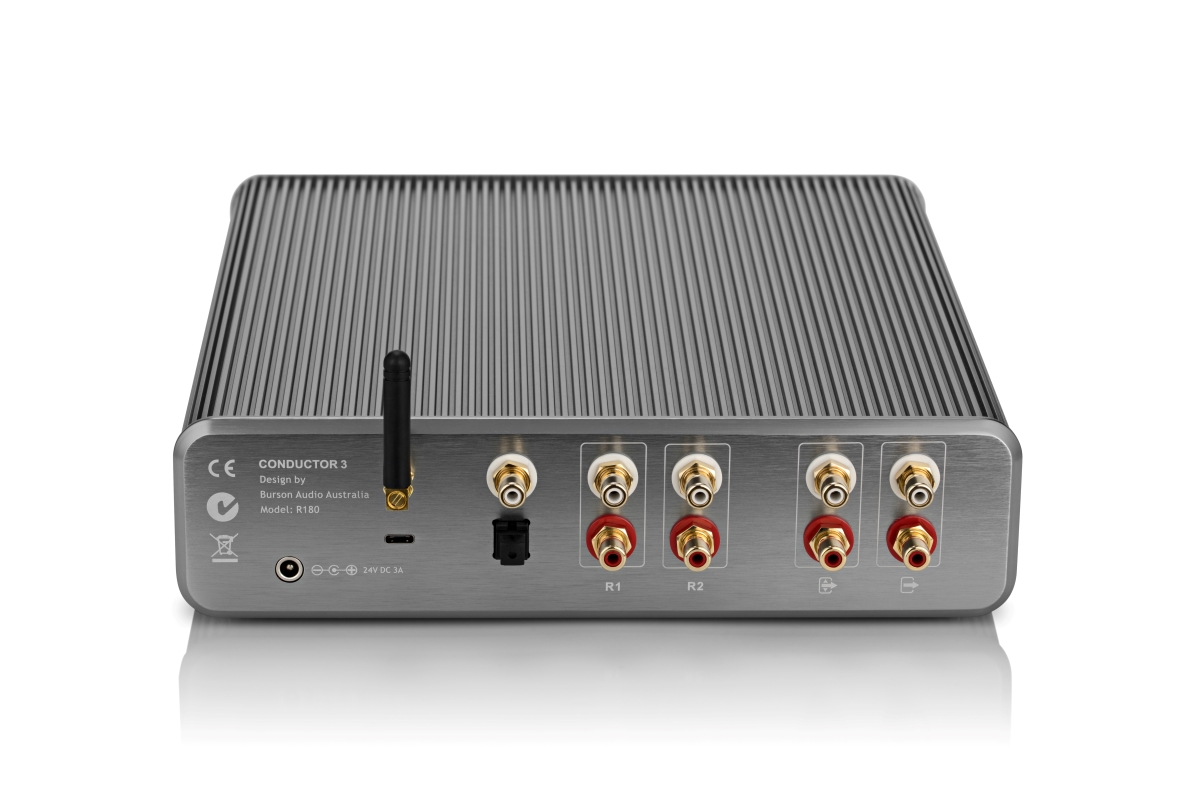
Sound Performance
I. Using sensitive In-Ear-Monitors (IEMs)
I used two super sensitive IEMs to test the noise levels of C3R. Both Simgot EN700 PRO and FiiO FH7 have an impedance of just 16 Ohms and FH7 has a sensitivity of more than 110 dB/1mW of power – very easy to drive and both work as a magnifying glass testing the noise floor of any headphone amplifier.
At max volume C3R is outputting exactly 7.5 Watts of power into 16 Ohms, out of all those 7500 mW of power, just one single mW is needed to reach the ear-bleeding level of 110dB so obviously extra care is needed while handling them since C3R can easily damage their drivers or worse, my hearing.
Putting it on low gain and staring with lowest volume settings there is a faint, barely audible hum, pausing the music and raising the volume the low intensity hum is not increasing at all. The High gain setting had absolutely the same result, no matter the gain or the volume level the hum remained at the same intensity but mind you I can barely hear it. It needs to be said that C3R was not developed for such super sensitive loads, it was made to drive heavy weight category of headphones, current driven planar-magnetics or just plain high-impedance and low sensitivity headphones.
With all that said, when I’m starting playing the music the hum can’t be detected anymore with IEMs and is not bothering me. The good thing is that Burson dropped the power a lot in the low gain mode, so I actually had about 30 steps of volume until it starts to be really loud, that is enough number of steps for me to find the best balance between loudness and relaxation.
Powering it by a Plixir Elite BAC400 passive power conditioner and then by a KECES BP600 power conditioner didn’t solve the low intensity hum, so I presume that the output stage is just too powerful for such an easy load like FiiO FH7.
Before you raise your pitchforks, I have a simple an elegant solution that will solve the hiss problem by the name of iFi Audio Ear Buddy or even better, their iEMatch (3.5mm version) is fabulous. Insert it and forget about you ever heard hiss on C3R, it is really that simple. It works with every IEM or ultra-sensitive dynamic headphones.
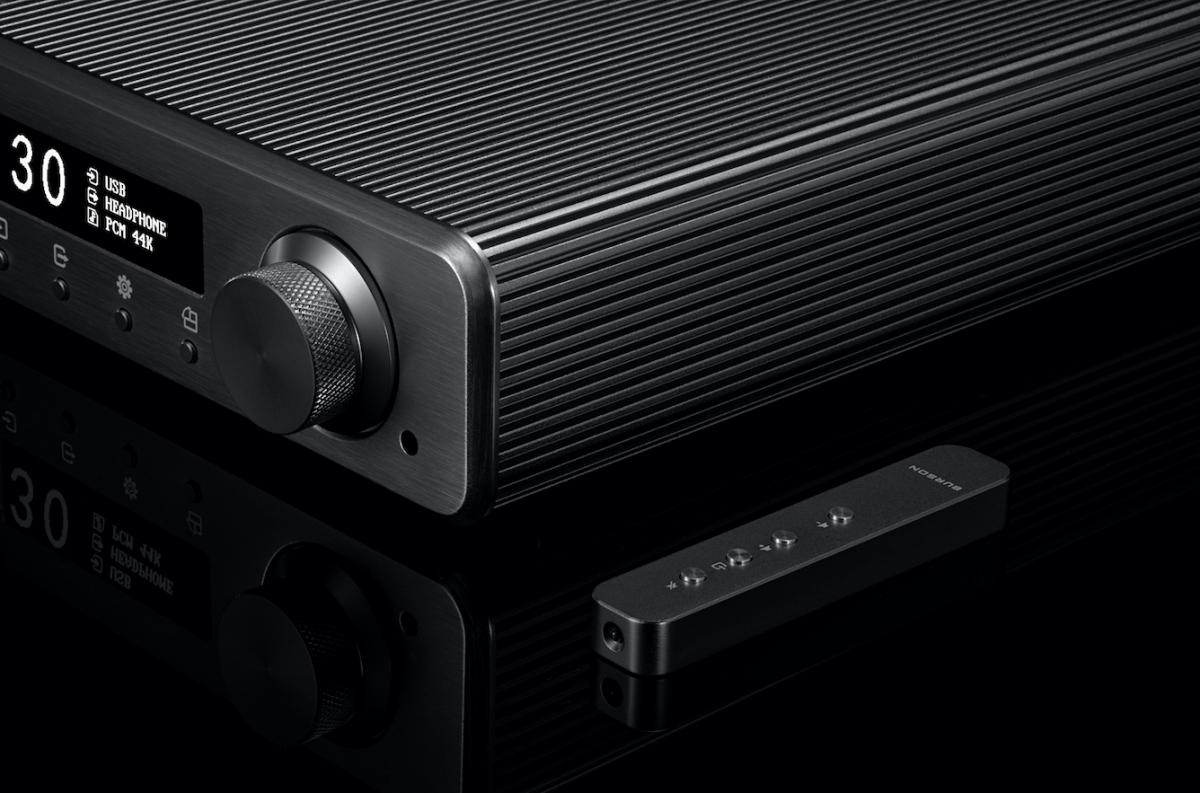
Now, powering my 20 Ohm Quad Era-1 was completely another story as the hum is nowhere to be found and the same story repeated itself with Sennheiser HD660S or with Hifiman Arya, the hum is completely gone and the noise floor can’t be detected even after pausing the music and completely maxing out the volume level.
What I observed on C3R is that no matter the volume level, the noise floor never increases, even on maximum volume. Not a single headphone amp I ever reviewed until now did the same, even the super technical $3000 Benchmark HPA4 increases the noise floor a tiny bit at maximum volume, yet C3R didn’t and stayed the same at all volume levels. I tend to believe the Burson’s MCPS is doing all this magic and kicks the noise away.
What was obvious to me while listening to IEMs is that on C3R those sounded technical, precise but also incredibly engaging and musical, had an impressive kick no matter the song I played. It was weird tapping my feet while listening to Celine Dion and having a wild smile like I was listening to some energetic rock tunes. It was like pumping energy not into my ears but directly into my brain. C3R awakened some serious impact in those IEMs and the control of the driver was just perfect. When the drum kick stopped, the sound stopped in an instant too, when dynamics rose high, I felt goosebumps on my hands. I am very glad that the energy, that incredible slam and impact Burson Audio is notorious for is still present in C3R and is pumping a lot of positive energy into any music I would listen to. Me gusta!

II. Using full-sized headphones
After listening for a while to a super revealing system like Matrix Element X and Benchmark HPA4 combo, the jump to Burson C3R is like eating some exotic food for the first time, it is exciting and pleasant in the same time. C3R is sounding similar on some things to the aforementioned system, yet it is so different, it has a unique character and it’s not shy showing it off. C3R sounds really vivid, very dynamic, explosive even on some tracks, it carries so much air, slam and impact that I’m not recognizing some of my music. Everything was just dialed up to eleven, I am hearing more body, more texture, more meat to the bone, more spatial cues, more dynamics, it pumps some serious power under its belt.
Conductor 3 Reference as a headphone amp only has clearly more power than Benchmark HPA4, more power than KECES S3 – that to this day was the most powerful and impressive all-in-one unit I tested at my place, it is even more powerful than Mytek Brooklyn DAC+, it has the most powerful headphone amp of any all-in-one units I tested of late. If you a really into headphones and consider yourself an enthusiast, at least give this one a listen, you will not regret it.
Powering Quad ERA-1 on high gain I couldn’t get past 45 volume position, I still had more than 50% power on tap, headroom was limitless, control was just outstanding.
When properly driven ERA-1 are literally transforming themselves into some brutal bass and midrange monsters. No only that, at optimal power ERA-1 will challenge even the fastest and the hardest kicking headphones in the business, forget dynamics those can’t achieve such slam, impact and speed. On faster paced music C3R with Quad Era-1 will sound like taking a beating, an enjoyable, dynamic, visceral and very natural beating. I am personally like this kind of approach and I am against slow, boring and overly smooth presentations.
Moving up to the hardest to drive headphone from my stable, the Hifiman Arya I could raise the volume up to 60 and that was by listening to Roger Waters, if I’d listen to some modern pop, I would lower the volume to 55 due to excessive loudness in newest recordings. I was pleased to hear Arya properly driven at their fullest potential, everything would just happen outside my head and I would pick notes from around me. The same visceral and impressive transient response was heard on Arya and I even observed some additional bass layers that were never present on past headphone amps I tested them with.
More than ever I felt that Burson Audio is somehow combining the technical and revealing nature of the dual ES9038 with the natural, visceral, open wide and airy presentation of their discrete class-A output stage and amplification of V6 Vivid. If you would listen to C3R with your eyes closed you would never guess this is an ESS Sabre based design, it sounds very different to one. I’m glad to report Burson managed to implement a very good balance between technical and musical, between detailed and natural sounding. Is it all of the above plus a lot more.
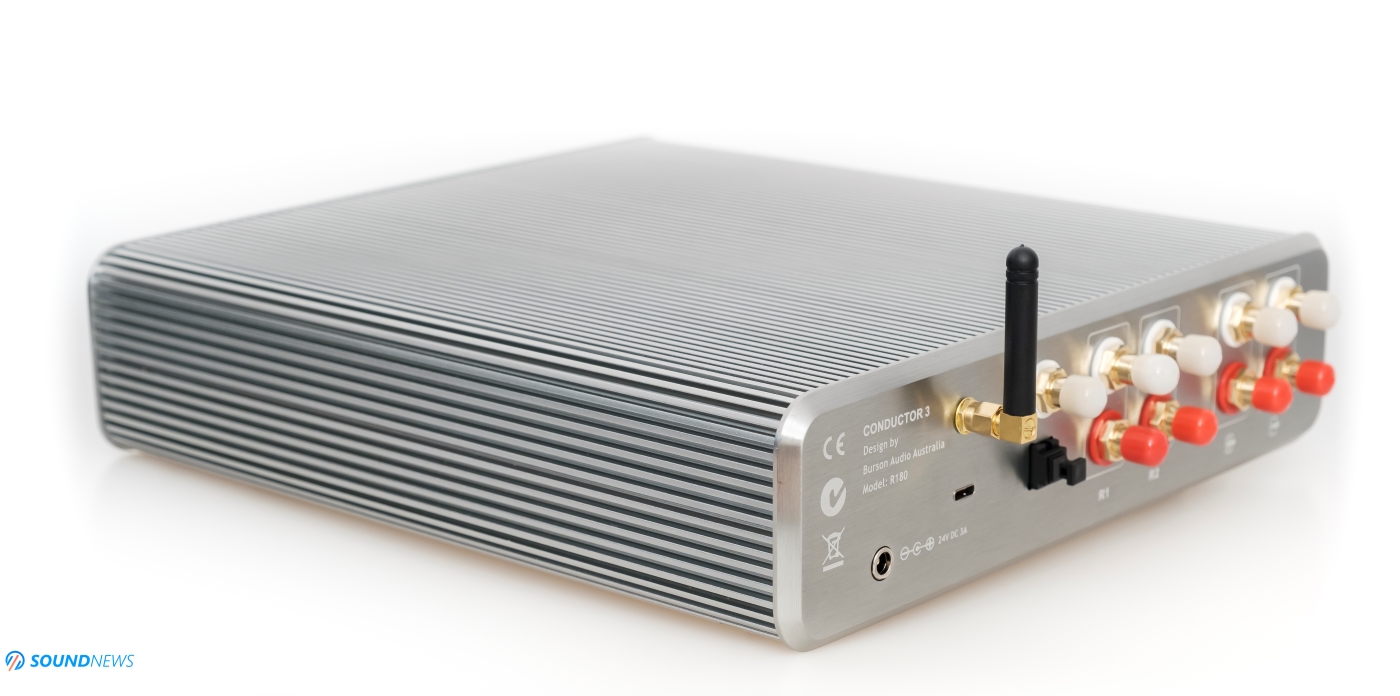
I will continue describing how C3R sounded on headphones and in a speaker-based setup using few tracks.
Rage Against The Machine – Calm Like a Bomb
This song exposes its true nature, its basic instincts, its unique character. It sounds easy going and calm until it explodes like a bomb with huge dynamics, it can be jumpy at times, especially the crowded chorus with that raw bass, electro guitar with tons of cymbal crashes and some additional electronic sounds around. Tom Morello’s amazing guitar skills hidden in the background are so clear and so outlined, I’m hearing them loud and clear in front of me to dissect without being hidden anymore.
I head-banged, I smiled, I shouted, I enjoyed every second of it. This is the most anti-boring approach I’ve tested in an all-in-one unit.
Roger Waters - Is This the Life We Really Want?
Even starting with Déjà Vu, this record shows how holographic and bigger than life a digital source can sound. There are so many things buried inside those songs that you need to listen to them several times to hear the all those micro-details thrown to your left, to your right or even behind you. This is a holographic experience, almost feels like a 3D binaural recording, sounds are born out of thin air and fly far away, they come from different angles and they fade away pleasantly smooth.
Radiohead – OK Computer
Starting with first seconds of Karma Police you hear those small hisses, like vinyl noises that were put there on purpose, beautifully rendered without bothering the listener. The mix between piano and guitars sounds life-like and pleasant. Listening to Lucky from the same album I felt how bass guitar was particularly outlined, sounded deeper that how I remember it to be. The more I listen to different tracks the more I feel C3R chooses to have a deep, layered and open wide presentation, it sounds weird saying it but it is like borrowing the good parts of a good tube amplifier and the good parts of a solid-state amplifier. C3R sounds decompressed and refuses to put you on-stage with the band, it puts you few rows deeper, so you can see a bigger picture and the full energy of the band.
Marcus Miller – M2
I especially enjoy Red Baron track, such an amazing recording, it is just perfect and captures all the strengths of C3R and highlights them. All those tiny details coming from all directions are so cleverly put around me that the more I listen to it, more tiny details I’m discovering, it’s like rediscovering this song every single time. It sounds super groovy, very pleasant and I’m glad that C3R can capture the material of each musical instrument, I’m feeling this is a wooden texture, this is a metallic one, those are some digital mixes and so on, so easy to spot and so enjoyable to discover them all.
Vivaldi - Recitative And Aria From Cantata from 2L Reference Recordings is probably the best recorded song I tested today. This is the most open and deep song as well. I know this one pretty well and on lower quality sources the notes just don’t fly too far away and don’t envelop me and can’t grab my soul. With C3R everything is just grand, transparent and emotional. This track has a single con – it’s too short, I am listening to it at least 2 times in a row and right now I want to listen one more time. Such an interesting and soul grabbing performance.

Wireless Performance
My smartphone is BT 5.0 and AptX-HD enabled so I could test the best codec C3R can offer. Connecting to it was much simpler than you might think, just select the BT input with the included remote or by pressing the input button, search for it with your phone, connect to “Burson BT” and this is basically it.
I fired Tidal Hi-Fi and streamed few songs from my phone to C3R and it worked perfectly. The wireless range was huge and more or less in line with Topping D50s and DX7 PRO that also had a BT antenna to boost the signal.
The signal was rock steady in my flat even with 2 concrete walls and 10 m distance between us, only in the last room about 15 meters away and with 3 concrete walls between the signal would drop few beats. In an open area I presume it will perform excellent even for more than 20 meters away.
In this regard it performed better than FiiO BTR1, BTR3 or Q5S, I’m sure the external antenna is doing a fine job in boosting the signal.
As for music listening, firing Tidal Hi-Fi and listening to regular CD-quality lossless files (16 bit, 44.1 or 48 kHz) I couldn’t make a difference between the wired and wireless performance. It sounds maybe just a tiny bit smoother, easy going and relaxing while in wireless mode, but the difference is really small. Going up to 24 bit and 32 bit files mostly in 192 kHz and 384 kHz and the difference grows in favor of wired.
While wireless, listening to 32 bit lossless files the performance is even smother and maybe I am not hearing the best driver control or the last word in resolution and detail retrieval especially in the treble area, but overall those are small gimmicks and many would probably not hear a big difference. It sounded great even with Hi-Res PCM files so no complains here. I just wish it could be updated with a LDAC codec in the future, CSR8675 supports it and it sounds better to me compared to AptX-HD.
All in all, C3R looks like a very good bed-side or living-room wireless receiver, just take you phone out of your pocket and press play, it’s that easy.
Comparisons
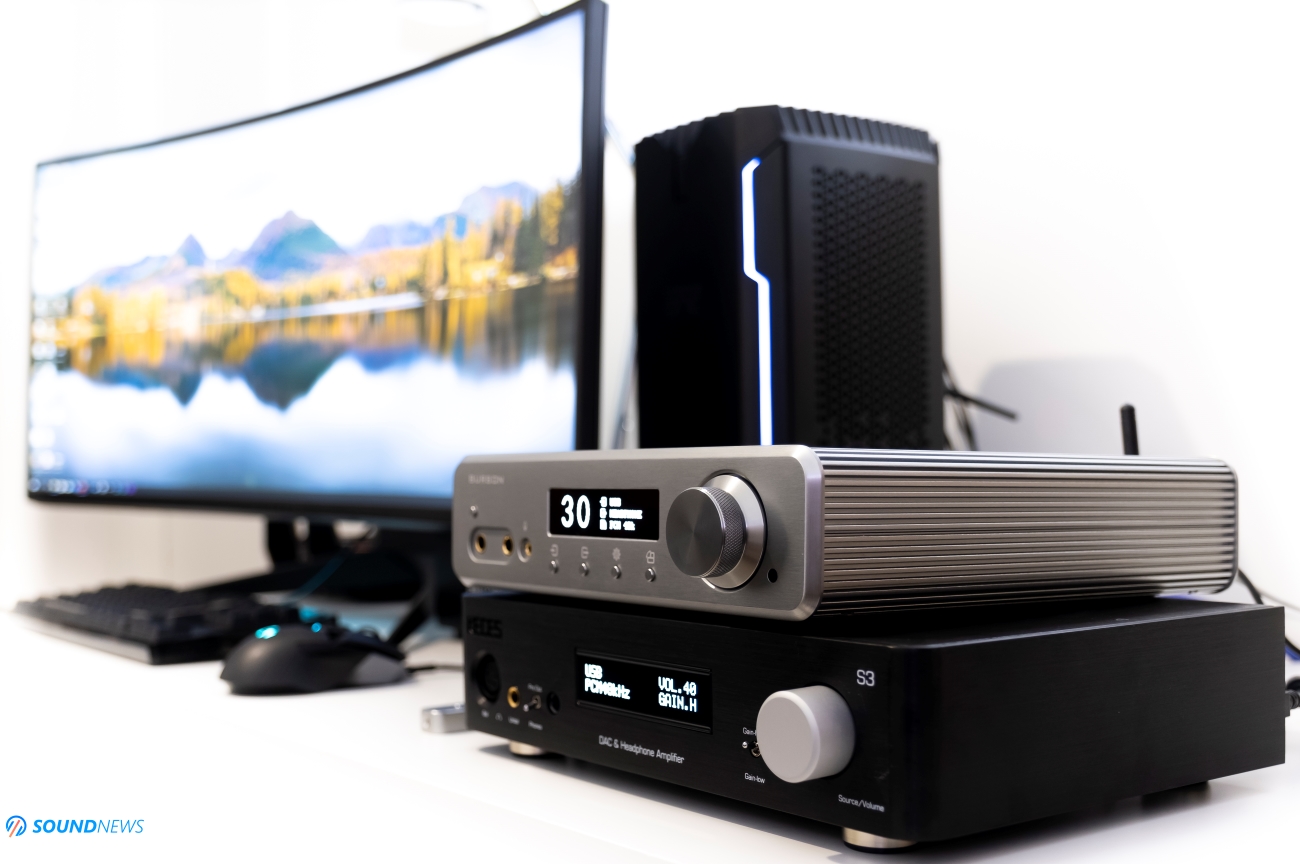
KECES S3 ($1400) VS Burson Conductor 3 Reference ($1800)
Spec wise S3 uses a lower grade DAC chip (ES9026), has less power on tap, about 2W into 32 Ohms, by comparison C3R offers 5W in the same load. S3 has a balanced headphone out, one balanced input and output.
On the other hand, C3R can also be a wireless BT receiver, offer much more power, has a beefier preamp, the same number of inputs and outputs and obviously uses famous Burson discrete op-amps. Build quality and spec wise C3R is already ahead.
When I reviewed the S3 I was actually surprised of how powerful its headphone section is, but unplugging it from my balanced power conditioner resulted in a higher noise floor with sensitive IEMs. C3R has it lower and has it constant, S3 is increasing it a lot at higher volume.
C3R has a better diaphragm control, it sounds faster and snappier, slams harder with the right music and every note just flies deeper into the mix. C3R is also clearly more natural, warmer sounding somehow, it has an impressive presence and a right tonal balance. S3 by comparison can sound a bit drier especially in the midrange and brighter in the treble. The low end doesn’t go as deep and doesn’t slam as hard. Nonetheless, I really enjoyed my time with S3 since it is quite linear sounding, so basically colorless.
C3R is vivid, natural, has a slight warmish tint and it’s never shy showing it, yeah C3R is colored sounding, but it’s a pleasant one.
In terms of detail retrieval and transparency, C3R breathes air a tad more and everything just flies further away, with it I have a little more time appreciating every note. Detail wise I would say both are almost on the same level, I’m hearing nuance and small micro-details pretty easily on both units. S3 has a small emphasis in the treble area and gives an (artificial) impression that it is more detailed sounding, but that is just a clever trick and I don’t like when manufacturers are doing it. C3R has the same treble information if not even more of it, it is not pushing it forward and as such never enters the spotlight, it is always there but is never screaming for attention.
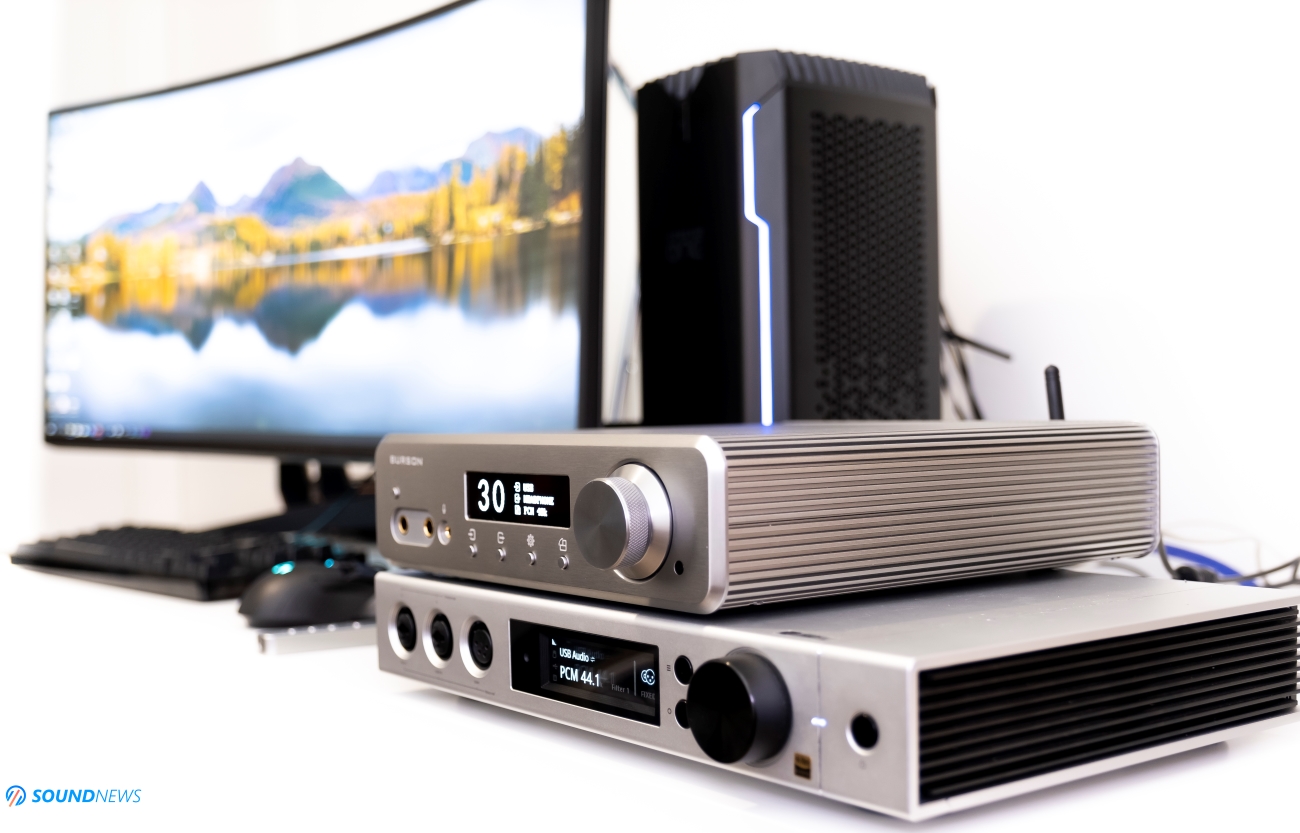
Matrix Audio Element X ($3000) VS Burson Conductor 3 Reference ($1800)
Spec wise, Element X uses a single PRO version of ES9038, C3R uses the two chips of ES9038 but not the PRO version. Power filtering on Element X is done by a Noratel transformer and tens of voltage regulators, C3R is relying on its interesting MCPS. Besides being a DAC, Preamp and headphone amp, Element X has also a real Wi-Fi streamer inside controlled by a smartphone app, it has also an internal music player – just plug an external HDD or flash drive and listen to music directly from it. C3R has a BT receiver in its defense, uses discrete rollable op-amps, offers a lot more headphone power and costs a lot less.
Although Element X has a balanced headphone out, its power rating is shy, it can offer up to 1.7W in 32 Ohms, C3R has 5W in the same load. I can’t properly listen to Hifiman Arya on Element X because the volume is maxed out and I still want some more, headroom is week, dynamics as well. As a headphone amp this one will not work with proper headphones, an external headphone amp will be needed and this is exactly what I did by adding a Benchmark HPA4 on top of it. Element X does an OK job with Quad ERA-1 and a good job with Sennheiser HD660S. Using headphones it is not very punchy, nor too wide or holographic, it is quite up-front and lacks dynamics when needed.
Conductor 3 Reference is obviously a king in this department, carrying control, crazy dynamic swings, sounding wide open with its chin up, super detailed and yet musical and engaging. It will drive any dynamic or planar headphones to authority, slam and control, I can’t ask for more.
When testing their DAC only modes, I found that Element X extracted a bit more information out of my tunes and presented them straight as a line without adding character, it’s more detailed up top and has few sub-bass layers as well. It is currently the most detailed sounding source I tried at home.
C3R as a DAC only device, sounds a bit more imposing in the bass and midrange, it has them pushed forward a bit, it sounds more natural, carries more weight with every note and delivers a greater slam. It is however not as detailed, as transparent and not as linear sounding. Two different approaches to music reproduction. Both are not bright sounding so both units passed my DAC tests with flying colors.
I enquired for a Conductor 2+ (CV2+) from the local distributor, I don’t know if they still have one, if they do, I will borrow it for a week and compare it to Conductor 3 Reference. If that happens, I will update my article with a detailed comparison.
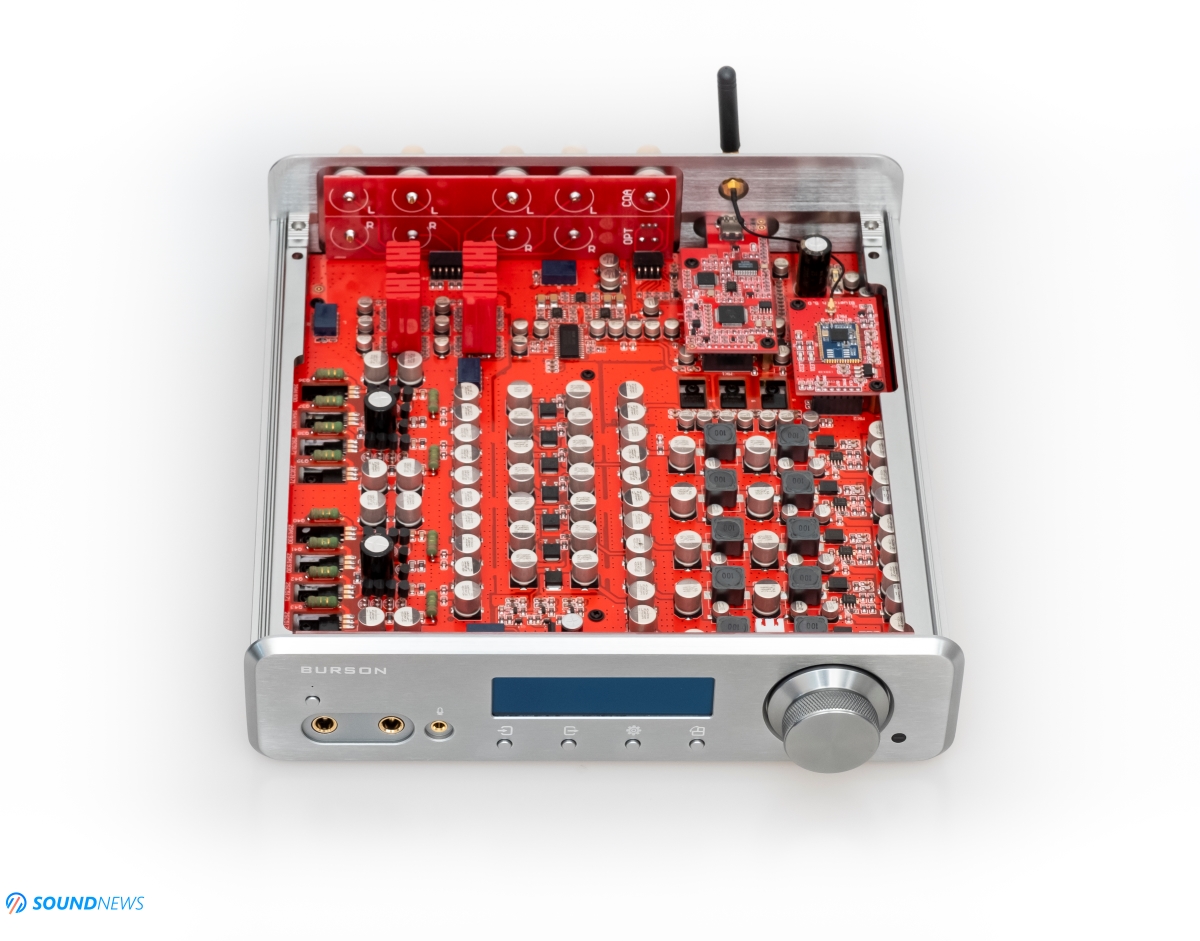
Conclusion
Here is a small hint for you, if Burson Audio guys are not very active on the forums or on social media it means something is cooking in their labs, if you get winks or smileys from them, run away as fast as you can or smashing piggy banks will surely follow. This is exactly what happened with C3R, on one hand I’m glad I asked about their future plans, on another hand my piggy bank doesn’t want to be smashed again.
I’m happy I was given the honor to present a premier review for Burson Conductor 3 and in the end I think it delivered everything I wanted it to be. All my fears I had when I sent those questions are now dust in the air. I am pleased to recommend the Conductor 3 Reference for headphone enthusiasts that are seeking for a great all-in-one unit and for speaker lovers who wants to spice thing up with some hard-kicking dynamics and fast transients.
Burson Conductor 3 Reference can be purchased directly from Burson Audio at $1800 by following this link or you can contact your local distributor for one or for a listening session.
PROS:
- Solid build quality, unique casework that doubles as a giant heat-sink.
- A feature-packed 4-in-1 device
- Extended frequency response, detailed and transparent sounding
- Presents an open wide soundstage and an amazing depth
- Very precise pin-point imaging
- Probably the best pace, rhythm and timing I’ve heard in an all-in-one unit with an excellent transient response
- An amazing headphone amp and preamp section: hard grip, control and tons of headroom left on tap
- Sounds natural and has a great tonal balance
- Leans towards an engaging performance, adds color and nuance to your music
- Not the most linear sounding DAC (can also be a plus for somebody)
- Slight hiss with ultra-sensitive IEMs (solved by adding an iEMatch or Ear Buddy from iFi Audio)
- DACs: Burson Audio Conductor 3 Reference, Matrix Audio Element X, KECES S3
- Headphone amps: Benchmark HPA4, SMSL SP200, Erzetich Bacillus
- IEMs: FiiO FH7, Simgot EN700 PRO
- Full-sized headphones: Quad ERA-1, Hifiman Arya, Sennheiser HD660S
- Loudspeakers: KEF LS50W
- Interconnects: QED Reference XLR (x2), Aune AL3 XLR
- Power Cables: Isotek EVO3 Premier (x2)
- Balanced Isolation Power Conditioners: PLiXiR Elite BAC400, KECES BP-600

DarKu
Reviewer at Soundnews
Pros: Sleek design, high-end materials
- Long battery life
- Extended frequency response with good transparency
- Rich tonality, sounds natural and easy going
- No harshness/brightness whatsoever
- Good detail retrieval
- Simple but intuitive Smart Control app
- Open wide and deep sounding
- Very good at making calls
- Can be used with a wide variety of devices (Smart TVs, laptops, desktop PC, tablets, smartphones and so on)
- Long battery life
- Extended frequency response with good transparency
- Rich tonality, sounds natural and easy going
- No harshness/brightness whatsoever
- Good detail retrieval
- Simple but intuitive Smart Control app
- Open wide and deep sounding
- Very good at making calls
- Can be used with a wide variety of devices (Smart TVs, laptops, desktop PC, tablets, smartphones and so on)
Cons: Lack of aptX-HD and LDAC codecs
- Not the best ANC I have tested
- Not the best ANC I have tested
Sennheiser Momentum 3 debuted at IFA Berlin 2019 and since then everybody is talking about them. Are they better than the 4-year old Momentum 2, will they dethrone the ANC kings Sony WH-1000XM3, the futuristic looking Bose 700 or the all metal Master&Dynamic MW65?
When Sennheiser debuted first generation of Momentum over-ear wired headphones in 2012 it felt like a fresh start for the company, it entered a new era in terms of portables. Up until that time, the all-plastic and industrial looking HD-25 were their best portable headphones. Fast forward in 2015 Sennheiser upped their game and released not only a fresh Momentum 2.0 but an entire collection of headphones like Momentum On-Ear, Momentum In-Ear, Momentum Wireless and the Urbanite product line.
I cannot deny the huge advancements Sennheiser achieved in terms of sound reproduction and in terms of design. I mean a HD-25 pales in comparison near a beautiful all metal construction with a leather headband and earpads Momentum, it is completely on another level of refinement and visual excitement.
Four years passed and again Sennheiser is ready to Wow the crowd, first product in their line-up is the beautiful Momentum 3 Wireless headphones that we will be testing today.

Getting Momentum!
M3 Wireless came in a nice matte box. Opening it up revealed a white thick headphone box with a simple Sennheiser logo stamped on it. Opening it up reveals the carry case completely wrapped in huge amounts of foam for a good protection. Inside the soft carry case there is a USB type-C cable, a USB type-C to Type-A adapter, the analog headphone cable and the headphones themselves. A safety guide and a quick start guide will help you understand everything and set them up properly.
Looks & Build Quality
You know what’s funny? I tested multiple portable headphones from all serious manufacturers, lots of headphones are coming and leaving my home. Yet, there is one headphone that didn’t left my home for the past 4 years and that is Sennheiser Momentum 2 (Wired, Over-Ear), I just love their tonality, their liquid midrange, those soothing voices and that easy-going top end for long and relaxing listening sessions.
What caught my attention when I purchased the Momentum 2 was that their ear-pads were bigger than those on Momentum 1 and as a result the sound was also bigger and airier. With Momentum 3 I am having a Déjà vu moment because again M3 has huge ear-pads compared to M2 and I again expect a wider soundscape, more air around the notes and less heat ‘n sweat in the summer days.
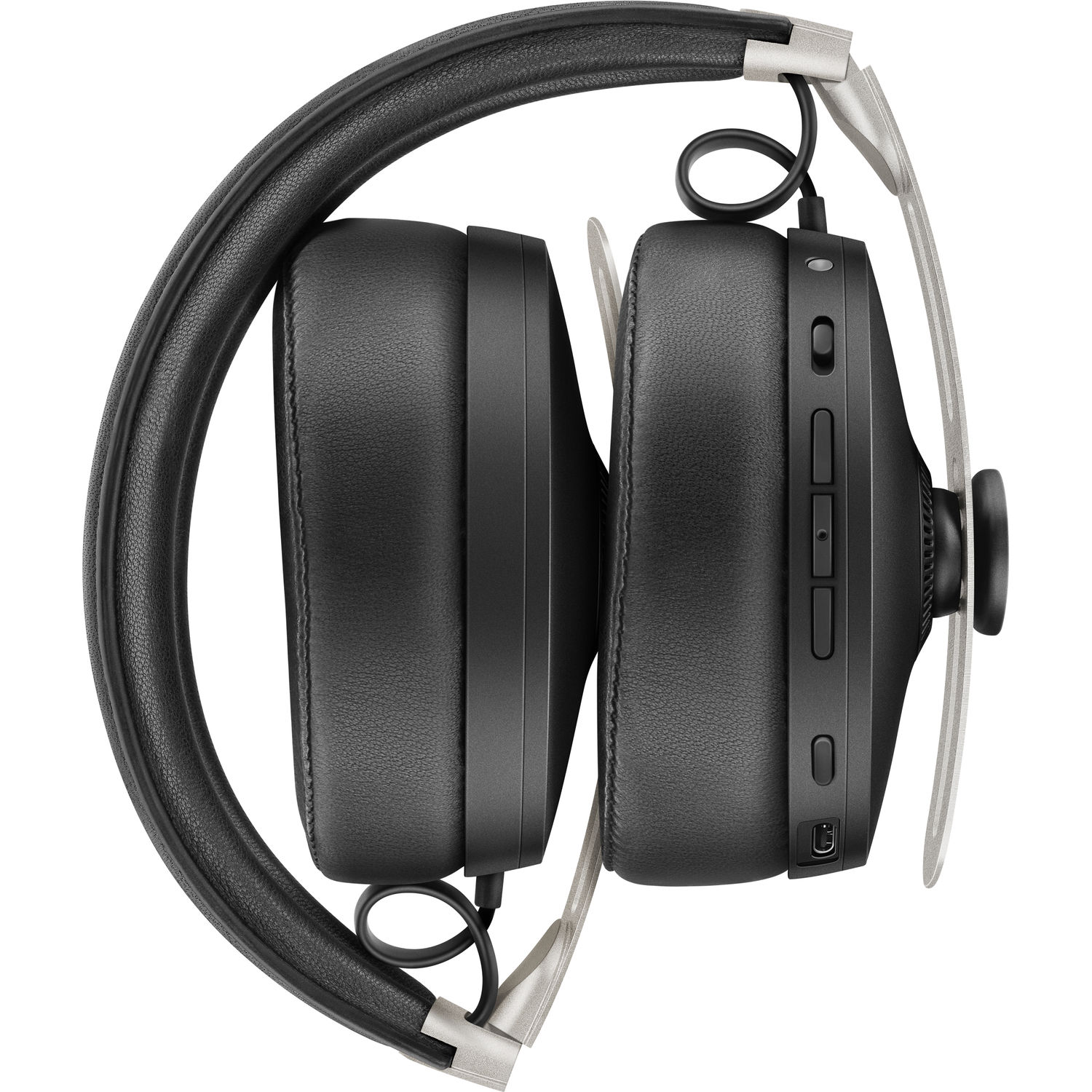
My biggest gripe with M2 was the super thin leather headband that after about 30 minutes of playtime became really problematic due to high pressure on top of the head and little to do padding from the leather itself.
I’m really happy to see Sennheiser improving the padding, the part that touches the top of my head is much softer and fluffier, I can wear them much longer with close to zero pressure on my head or around my ears.
My biggest two complaints were solved with this one, if the sound remains unchanged, I’ll be super happy.
As expected, the entire headphone structure is made out of metal, headband is covered with genuine leather so are those big, deep and super soft ear-pads. Only the ear-cups are plastic made for a good wireless transmission, it all makes sense. The analog headphone cable is detachable of course and the ear-pads as well. Sennheiser is even selling those separately in case you’ll lose or damage them.
The adjusting mechanism is exactly like that of Momentum 1 or 2, just put them on your head and they will automatically adjust to your head size. M3 can be folded and easily transported with their carry case, I wish it was a hard case for extra protection but the included one it’s doing an Ok job at that.
Every feature of M3 Wireless can be controlled from the right ear-cup or from the Sennheiser Smart Control app. Starting with the bottom on the right ear-cup you have the locking type headphone jack, the USB type-C connection that will not only charge the headphones but can also be used as a wired connection with your smartphone, PC or laptop. Next is the pairing button, press it longer to enter the pairing mode. The next 3 buttons will decrease the volume, pause the music or increase the volume. Those three can also be used to skip a tune, go back a tune, they also work for answering or ignoring a call. The last button on top is the ANC button that has 3 positions: ANC Off, ANC Off and engaging Transparent Hearing basically boosting the environmental sounds in case you’ll want to speak to somebody without taking them off your head.

Tech inside Momentum 3
M3 is a closed-back dynamic driver headphone and as such uses a lightweight cellulose driver. The driver size is a huge 42 mm one, some desktop class headphones are using smaller drivers, of course bigger is always better (ladies would agree).
Using them passively (without engaging ANC) the impedance is at 100 Ohms, engaging ANC it rises to 470 Ohms, that is quite a lot, but don’t you worry since the headphone is sensitive and quite easy to drive, they can reach ear bleeding levels of 118 dB only with 1Vrms of power and up to 99 dB via Bluetooth to preserve the hearing.
In terms of Bluetooth capabilities M3 is having the latest BT version 5.0 for a wide BT range and when it comes to codecs, it supports SBC, AAC (for iOS users), aptX and aptX-LL (low latency), sadly no aptX-HD and since this is not a Sony headphone LDAC is not present as well.
Sennheiser wanted to go all-in with the active-noise cancelation they used 4 pick-up microphones and another 2 beamforming array microphones in case you want to make a call with them.
With BT and ANC enabled M3 will have an operating time of 17 hours on medium volume, I think that is plenty for a trans-Atlantic flight, if you are running out of battery life a full-charge will take approx. 3 hours to finish.
Sennheiser is quoting a 0.3% Total-Harmonic-Distortion (THD) at 100 dB, I will test and measure those claims myself really soon.

Comfort
With those thick and soft ear-pads with lots of cushioning inside plus that soft headband improved the comfort levels a lot. I can now easily use for few hours without feeling a pain around my ears or on top.
Since there is even bigger space inside the ear-pads my ears are not sweating and I hope they won’t in the summer days too. I find them just a tad more comfortable than Master&Dynamic MW65 and maybe just a little more than Sony WH-1000XM3.
Test Setups
I used them in three different setups:
- Connected to my desktop Corsair One i160, playing first a youtube video and then playing a game
- Connected to my smart TV and watching a movie
- Connected to my Android smartphone and streaming Tidal Hi-Fi
I fired two YouTube videos and to my surprise there isn’t any lag so lip-sync in just perfect, they work as intended. I then played a short 15-min match of Heroes Of The Storm and again the sound was loud and clear and most importantly there wasn’t an audio lag whatsoever. Be warned that an older PC or laptop with Bluetooth version 4.0 or lower might have a bit of lag. The clarity was good but I knew they can offer something more than the SBC connection with my PC.
I moved them to the living room and watched a short 20-minute episode on Netflix and they worked even better, I think. Absolutely zero lag and I can control the volume by pressing the buttons on the right ear-cup. I really like this feature since after my kid goes to sleep, I tend to watch a movie or a late-night TV show and with wireless headphones I can have the volume I want without disturbing anyone in the house, super neat!
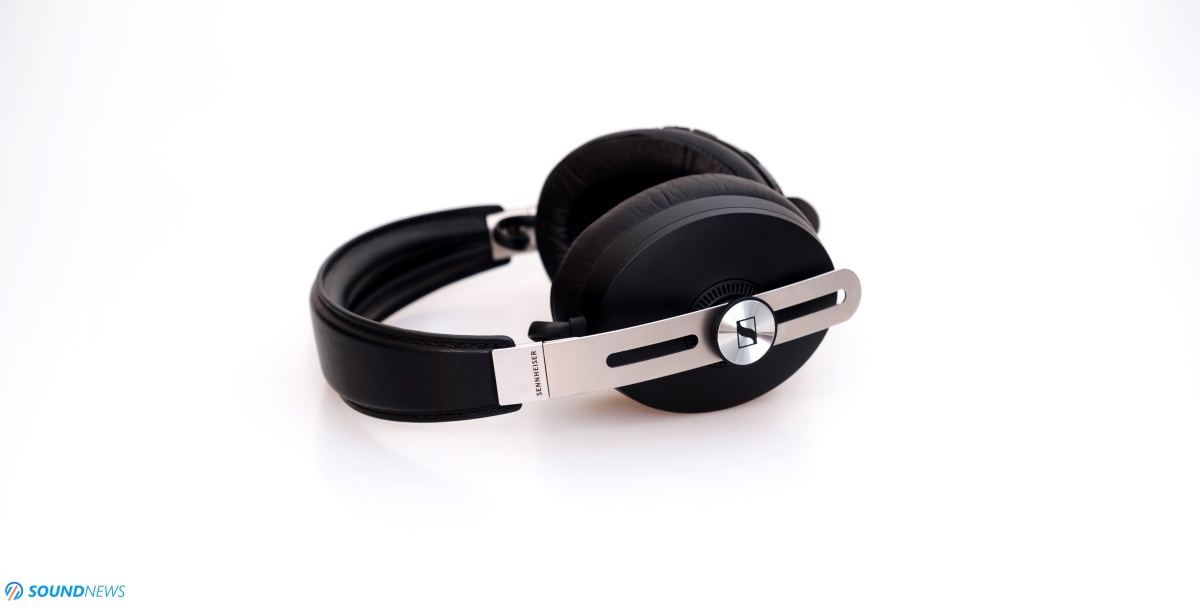
Sound Performance
I. Wireless Performance
The last test that remained to do is to attach my smartphone that is Bluetooth 5.0 and aptX compatible to M3 and play a lot of music.
Before going deep with my tests, I want just to point out that at launch Momentum 3 Wireless had a pretty serious issue that not a single online publication or review reported about. When there is A LOT of noise around you and you would listen to a bass-heavy track with ANC engaged, the music and especially those bass notes will be heavily distorted. Again, this occurs only when ANC is enabled and the environment is super noisy (Subway, crowded place, malls, plazas and so on).
Few days ago, Sennheiser released a new firmware update for them, where they stated improved ANC without giving too many details. I just updated them, I put myself in front of my active speakers, I played a very loud song on them in front of me, I connected M3 to my smartphone, engaged ANC and played Infected Mushroom – Guitarmass that has some heavy bass riffs and solos. I’m glad to report that newest firmware update completely solved the distorted bass issue M3 had for few months already.
Please note that you can update the firmware of M3 only via Smart Control app you can find on App Store or on Google Play Store! I recommend doing that immediately after the purchase.
With all issues solved I think it’s time to relax and listen to some tunes.
Sub-bass was incredible starting with the first song I played. Guitarmass carries a lot of bass information and some of that goes lower than 40 Hz. M3 was not only capable of rendering all those bass lines but it also put them on layers, like piling them on, on top of each other. You hear fist bass note, then comes another layer and another one. Momentum3 as was the case with Momentum2 has a very good, textured and very outlined sub-bass. It was slightly boosted but only by a little, just to spice things up with the right music.
Mid-bass performance is even better outlined and takes the spotlight. In you listen to modern pop or in general new music that is quite full in terms of mid-bass information, M3 will just shine bright and reward you with an enveloping bass performance. This is the only frequency area that I feel is boosted by up to 5dB, I will measure them soon and we will see about that. Momentum3 has a colorful and playful sound signature. I am a big adept of linearity but even I need some cheerful musical moments where I would not analyze but just enjoy my music.
Momentum 3 is exactly that type of headphone, it brings emotions to your songs, it is lifting you up and adds a bit of charisma and shows its character. Yep, Momentum 3 has one and is never shy showing it off.
Midrange performance is my personal favorite thing about this headphone. Midrange was my first love when I listened to my Momentum2 about four years go. This magical and natural midrange is still there and still pumps a bit of soul and smoothness into my songs. What is really amazing is that midrange is not boosted, I hear it lifelike and natural so in the end I find it linear and straight as a line.
I switched listening to some alternative rock and Alternosfera – Arhitectul din Babel popped on my playlist. I know the vocalist as we had multiple chats in the past, I know the vibration and the tone of his voice, when I am listening to same songs on Momentum3 I remember the voice and its tonality, it is the same person I know. Probably, the best thing Momentum3 does is leaving the natural tonality unchanged, if that is a heavy voice it will render it like that, if its thin and dry it will do the same. Some will disagree with me but I believe the midrange part is the best part of Momentum 3 and I love them for that. This is my favorite frequency range.

As for the treble I feel that Sennheiser tuned them for a relaxing experience without artificial treble enhancers. M3 has it pretty detailed, I hear all the bells hidden in the background of Duende by Bozio Levin Stevens. All the percussion work and those buried cymbals are still there, I can hear them loud and clear. Just their raw energy is not so rough on the ears. M3 are not bright/harsh and don’t have peaks in the most sensitive part of our hearing (4 -7 kHz). Nonetheless, I don’t consider them rolled off or that some important sub-sonic treble information is missing north of 15kHz, nothing like that. M3 is just not poking its fingers on this area and doesn’t force your attention on this area. But if you want that, you can definitely have your focus on the treble as the overall performance is not crowded and is breathing some air.
Their transient response is actually quite good, they have a really good kick especially in the bass department. If you drive them past 90 dB (close to maximum volume in wireless mode) you will feel how fast the drivers are moving and how easily the air is hitting the eardrums. With some heavy bass riffs this is almost intoxicating, I love this effect and sadly MW65 from Master&Dynamic and even WH-1000XM3 don’t have the same effect on me.
Soundstage level is good, it sounds almost like an open-back. I was worried a bit since all the tech inside makes the damping material harder and the headphone driver would sit much closer to it, but my fears are gone. M3 are sounding quite airy and I can pick up individual sounds from a crowded track pretty easy. If I listed to a really good recording, then it becomes a child’s play and I don’t need closing my eyes anymore to disentangle everything.
Tidal recently got updated with 360° Reality Audio (360RA is available with a HiFi membership on iOS or Android devices only) and I was very glad to find one of my all-time favorite Jazz quartets in this format, the amazing Dave Brubeck Quarter. I fired Take Five and I immediately felt the 360° effect and the enhanced soundstage levels. Everything flew farther away; some songs would come like behind me and some of them like on different layers not just at different distances from me. If you have a Tidal subscription, I recommend trying it out. Momentum3 is capable of rendering a wider soundscape and a much smaller one as well, if it was recorded that way of course. M3 can’t match a completely open-back design but compared to other closed ones, M3 plays big, wide and open, no complaints here.
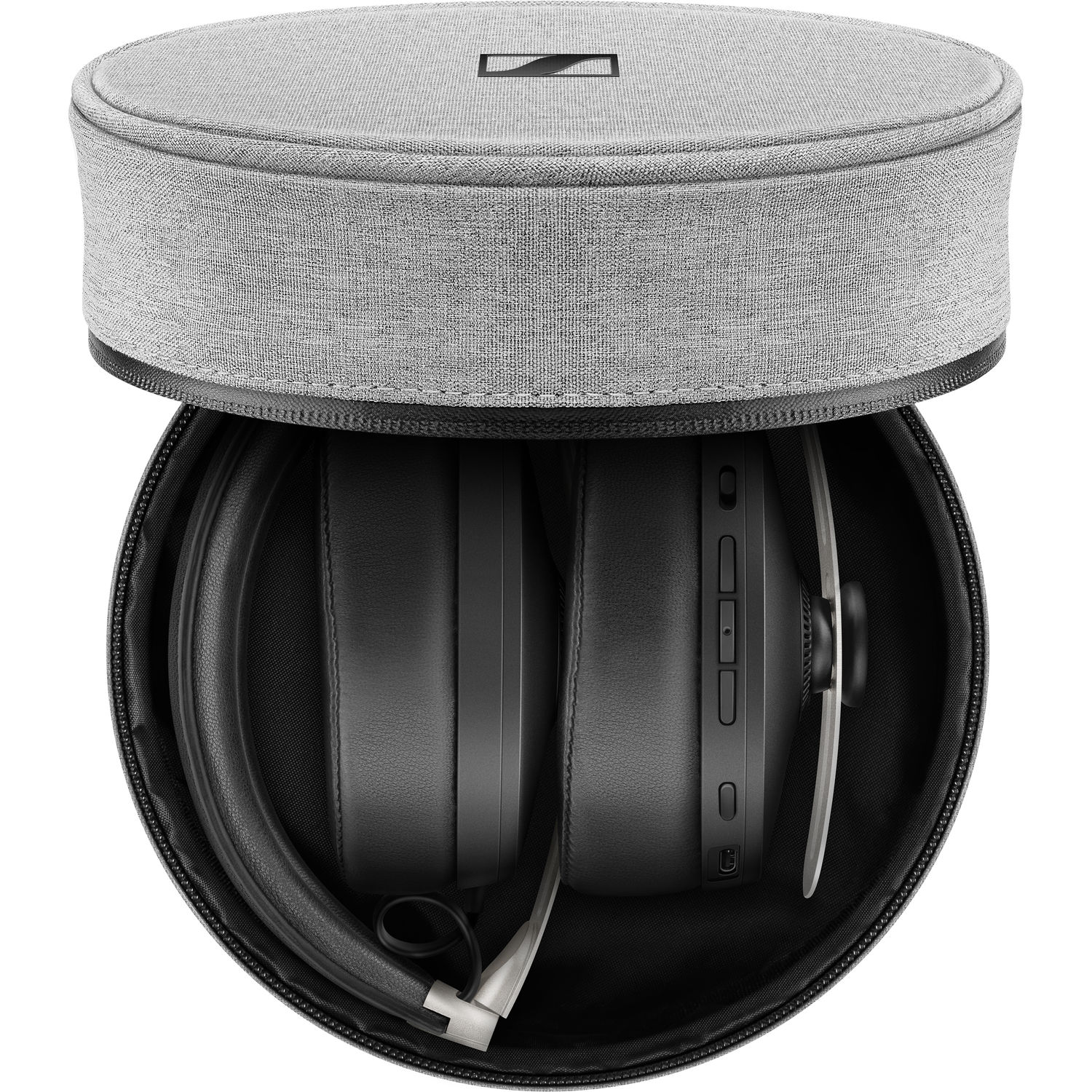
II. Wired Performance
A. Via the 3.5mm headphone cable
I ditched my phone, 360RA files and moved to an old-school wired desktop setup. I wanted to squeeze the maximum performance out of these drivers so I plugged them into the reference Benchmark HPA4 headphone amp which was amping the signal coming from a Matrix Audio Element X DAC. I used the internal player of Element X and its internal streamer since it sounds better this way.
In wired mode I can push those drivers to higher limits, not just at 99dB (their volume limit on BT) and obviously the best those drivers can offer will be achieved only in wired mode.
I listened to the same songs and I heard an additional layer of information, since aptX is still not lossless quality. Momentum3 sounded even more detailed, more holographic and enveloping. The missing layer of information that was felt in wireless mode came back and everything just clicked into place.
Bass notes sounded the same in quantity but more controlled this time around, the kick was better, it sounded clearer, in the end bass quality improved a lot. Without a doubt the speed of delivery improved the most, this is a better experience, especially if you crave for some faster beats.
Just for fun I plugged them into multiple desktop headphone amps and few desktop sources and with every one of them I didn’t hear the noise floor of the source, I believe the 100 ohm output impedance plays a bit role here.
The overall impression M3 left on me in the wired mode is that is sounds exactly the same as wireless, just a bit more detailed, more open, more controlled, faster, better in every way if you connect them to a high-quality audio source and amplification.

B. Wired via the USB type-C cable
What is quite interesting is that you can have them wired via their simple headphone cable or via the USB type-C cable. I tested the USB connection with my smartphone and with my desktop PC and both worked extremely well with them.
Since my PC recognizes it as an external audio device, it is obvious M3 has a DAC (Digital to analog converter) chip inside - an audio card (for noobies).
I dug deeper and using System Information tool > Sound Device I wanted to find the DAC chip or at least the manufacturer. It came up with Vendor ID 1377 and Device ID 6004. Disappointed that the DAC manufacturer was not found I dug even deeper and found that vendor ID 1377 was registered on Sennheiser Electronic GmbH that and that in the past Sennheiser registered Device ID 4000 for their high-performance HDVD800 DAC and headphone amp combo. Device ID 6004 from Momentum3 was still not listed online. Since Sennheiser moved from a Burr-Brown PCM chip from the HDVD800 to an ESS Sabre chip on their latest HDV820 DAC and headphone amp combo I will just throw a wild guess that Momentum3 is also using an ESS Sabre DAC chip, a mobile low-power one most likely.
I was very pleased to hear a very good performance via USB Type-C that in my book stays somewhere between their wireless performance and their wired performance (connected to a high-end rig). I’ve heard subtleties, diaphragm control, a good speed, a tremendous impact, I have close to zero issues here. I recommend at least trying once the wired USB-C performance, you might be impressed.

III. Active Noise Cancelation (ANC)
We have some nasty weather outside, its cold and windy, this is basically the best environment for testing the ANC capabilities of M3.
I used the Smart Control app that offers 3 ANC settings: Anti Pressure – read it as a Low intensity ANC, Anti Wind – self explanatory and Max.
I used Anti Wind outside and Max in really crowded places. ANC works pretty well and attenuated a lot of background noise but obviously not everything. M3 has already thicker ear-pads so the passive attenuation is already better and I tend to believe than the ANC tech improved as well.
Entering a crowded mall, low and mid-pitched sounds dropped the most and only higher pitched treble was attenuated to a smaller degree, all ANC headphones I know of are basically doing the same.
Max setting is the best, but it also has the biggest impact on battery. I recommend using the ANC only when it’s needed to preserve battery and in general, I think they sound just a tad better with ANC turned off. I think their ANC tech is good but still not on the same level with the best, personally for me Sony WH-1000XM3 had the best ANC and it killed more environmental sounds than any other headphone.
Here comes the great part: those two beamforming array microphones are actually pretty good and very usable, I made two phone calls and the person talking to me heard me clear, he just added that he can hear all the noises around me, those microphones are picking up everything around them. By comparison Sony WH-1000XM3 were almost unusable when making calls, MW65 from Master&Dynamic were better but still not in the same level with Momentum3. For making calls, M3 takes the crown.
IV. Measurements.
A. Wired performance measurements
As usual I connected M3 via the headphone cable to the Element X + HPA4 combo, this is the most linear and honest sounding setup so I know the measurements will come closer to reality of what I am hearing. For measurements I used a MiniDSP E.A.R.S (Earphone Audio Response System), of course with calibration files for HEQ (headphone compensation for flat EQ) and for HPN (original headphone compensation) but I felt that HPN compensation gave me the best results of all.
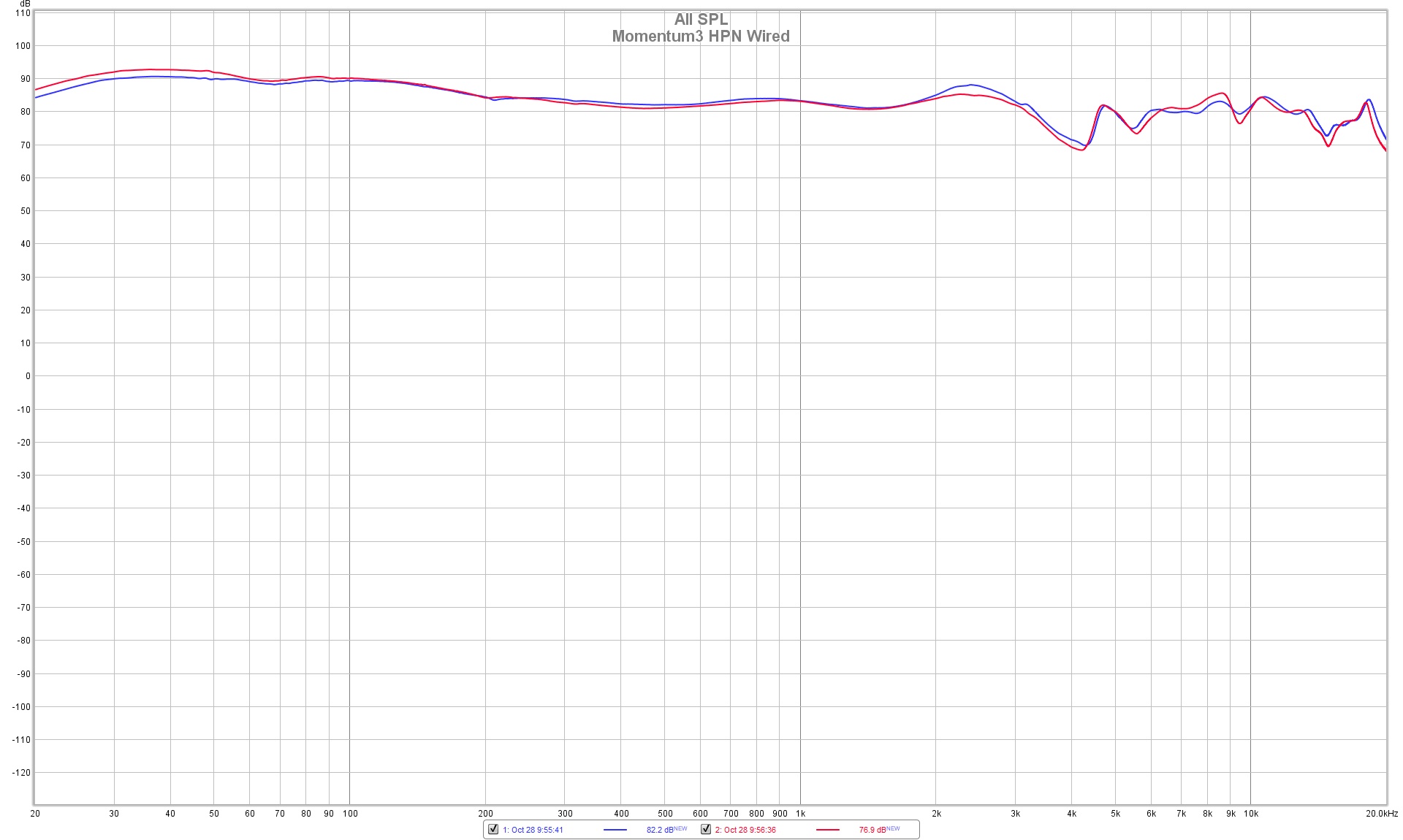
As you can see from the graph their measured performance is very good with little to no deviations, now take into consideration that this is a closed-back design and a wireless headphone and suddenly this graph becomes even more impressive.

Applying a 1⁄12 smoothing changes little to nothing as their raw performance was already impressive.
As I suspected there is just a small boost in the sub-bass area and a bigger one in the mid-bass area by about 5dB (I sent a 85dB signal to E.A.R.S) As expected, midrange performance is excellent, I really like that straight line and it reflects what I’ve heard, linear but natural midrange performance.
The 5dB dip in the 4kHz area was put there to calm down the treble a bit and add a bit of smoothness. The rest of the treble is quite good and there aren’t serious dips or rises so the overall treble performance is on a high level.
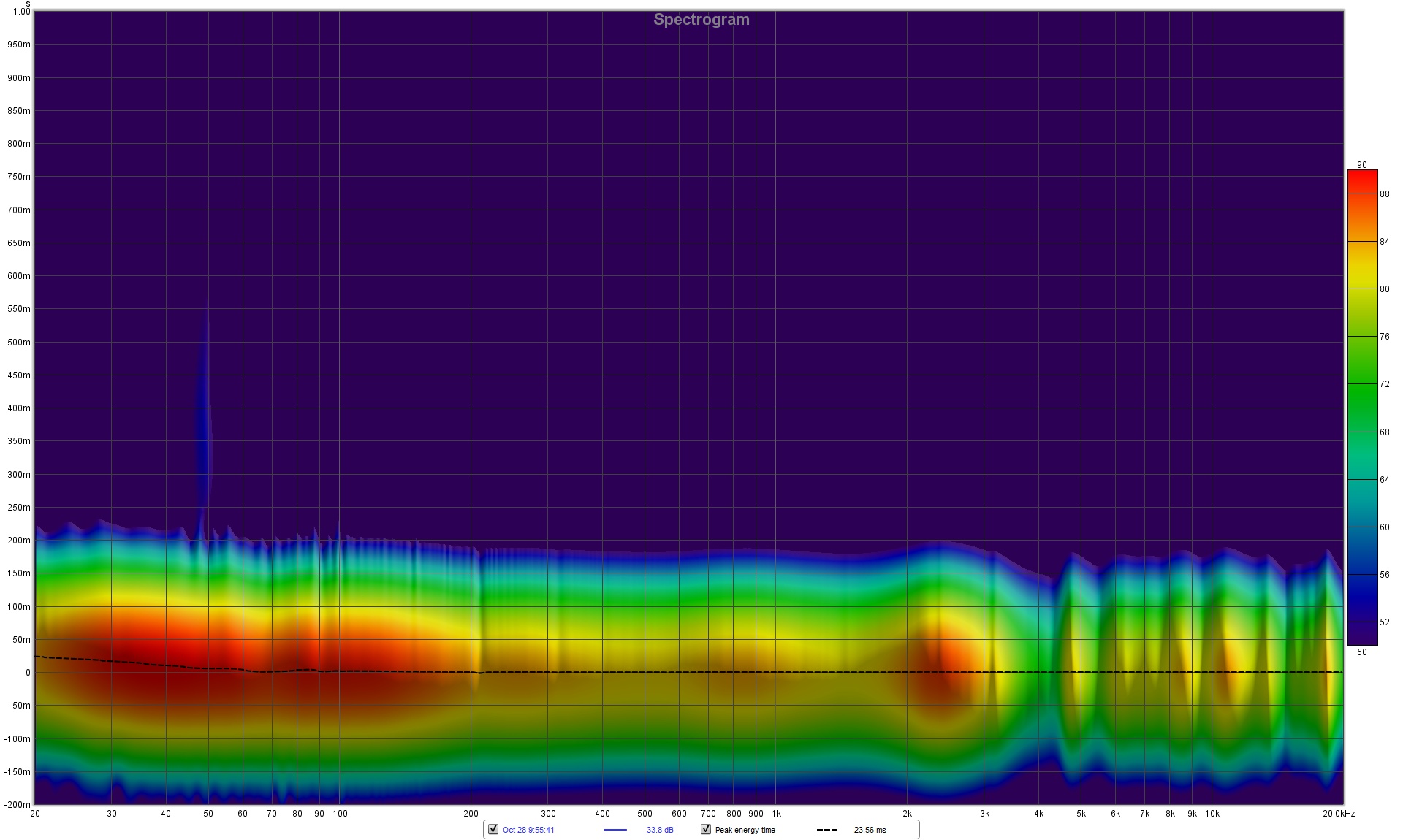
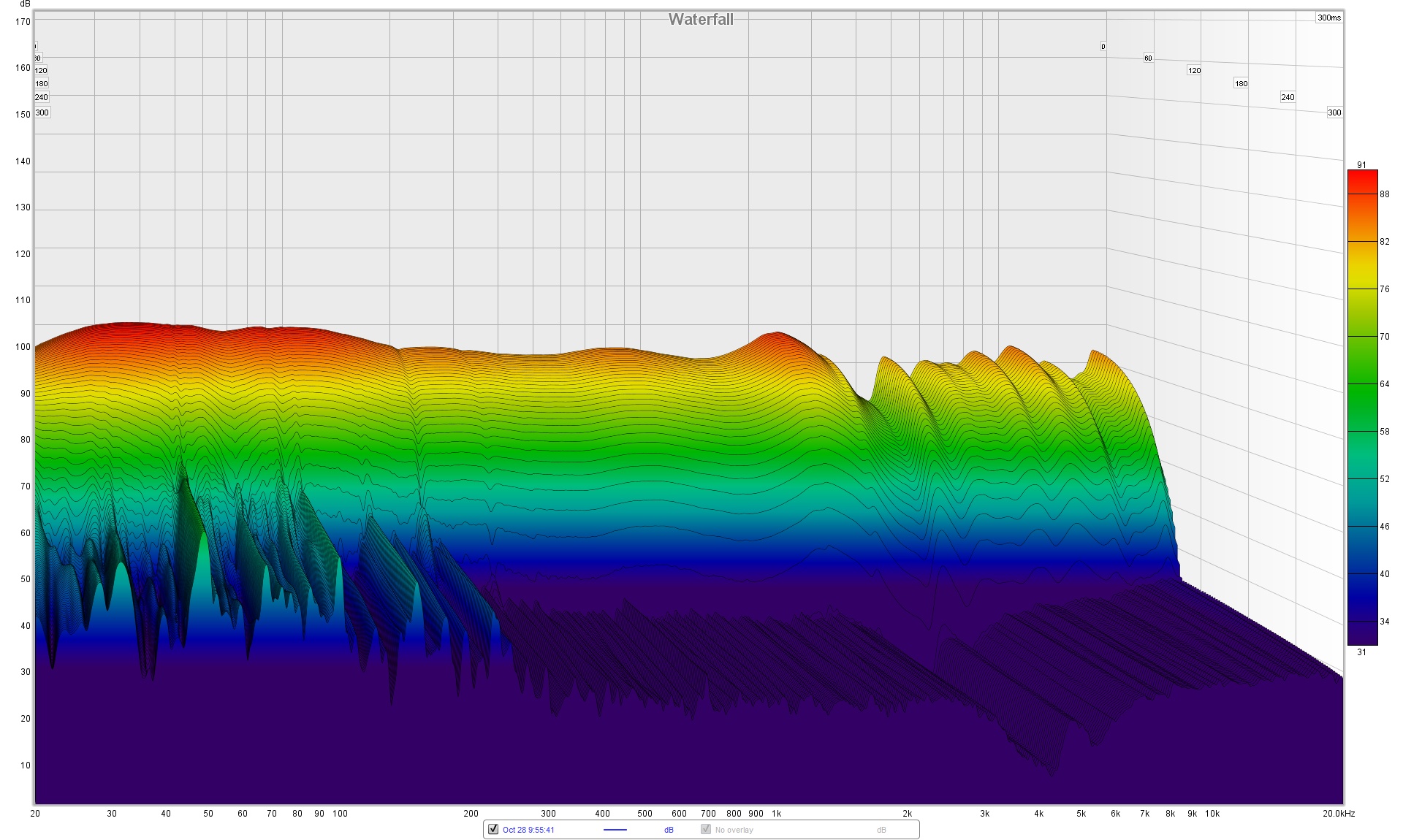
Checking its spectrogram and waterfall reveals close to zero leaking and a boost in the mid-bass area. The overall performance is super stable and nothing is leaking all over the place.

The spectral decay reading shows that sub and mid-bass have a slightly longer decay but that is understandable for a dynamic driver.
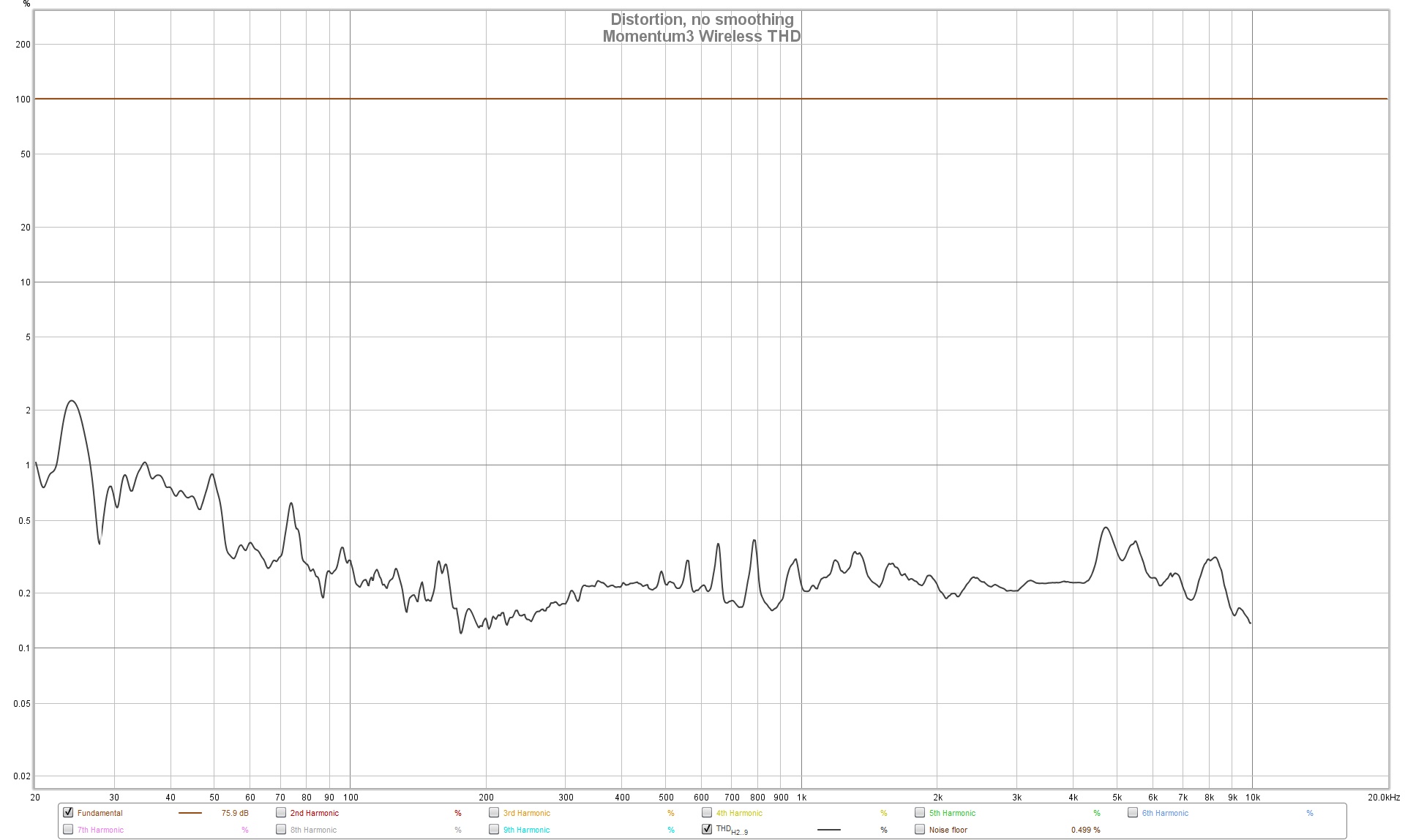
Probably among the most interesting measuring is the total harmonic distortion (THD) and indeed as Sennheiser specified in the manual it mostly stays in the 0.3% area, but the naughty sub-bass is rising the THD up to 2% and mid-bass up to 0.6%. Those are safe numbers by my standards, you should see those 10% THD of Grado headphones…
B. Wireless performance measurements.

Wireless performance is actually very good and quite unexpected they measure almost as good as in wired mode. The only difference I see is some granulation and higher distortion numbers in the treble area.

Even decay increased, exactly how I felt when I listened to them, the spectral decay reading shows a rise in decay (a slower driver movement) especially in the mid and higher treble.
Their overall wired and wireless measured performance is really good and my listening tests proved they sounded good with close to zero issues whatsoever.
V. Sennheiser Versus Sennheiser
If you still own a Momentum 2 like I do and if you are wondering if an upgrade to Momentum 3 is worthwhile, I think it’s time to make the jump.
Comfort wise M3 is miles ahead, more cushioning, deeper and softer ear-pads, bigger space inside the ear-cups make them very comfortable and the padding on the top helps listening to them for hours and hours. M2 can’t be used for longer listening sessions…
Since my M2 is the wired version I will compare the two in the wired mode.
The difference between them is not really that big but there are some notable changes that I will mention. The more I listen to them on the same rig the more I feel M3 has a snappier and faster sound, the decay is definitely shorter and each note will not linger too much.
Treble on M2 is quite good but not really extended. When I am listening to a treble heavy song, I hear more information on M3, they have definitely a better extended top-end and they sound just more detailed up top.
When I am going past 90 dB on both models, M3 doesn’t break up and has really good THD numbers, its distortion is super safe up to 100 dB volume wise. M2 is not that cool and starts clipping much faster and a result has higher THD numbers and overall sounds a bit more distorted at low level listening and much more at higher volume levels.
Soundstage size is almost the same, it is just a tad deeper sounding on the M3, I presume bigger ear-pads said the final word and that basically wraps my comparison.
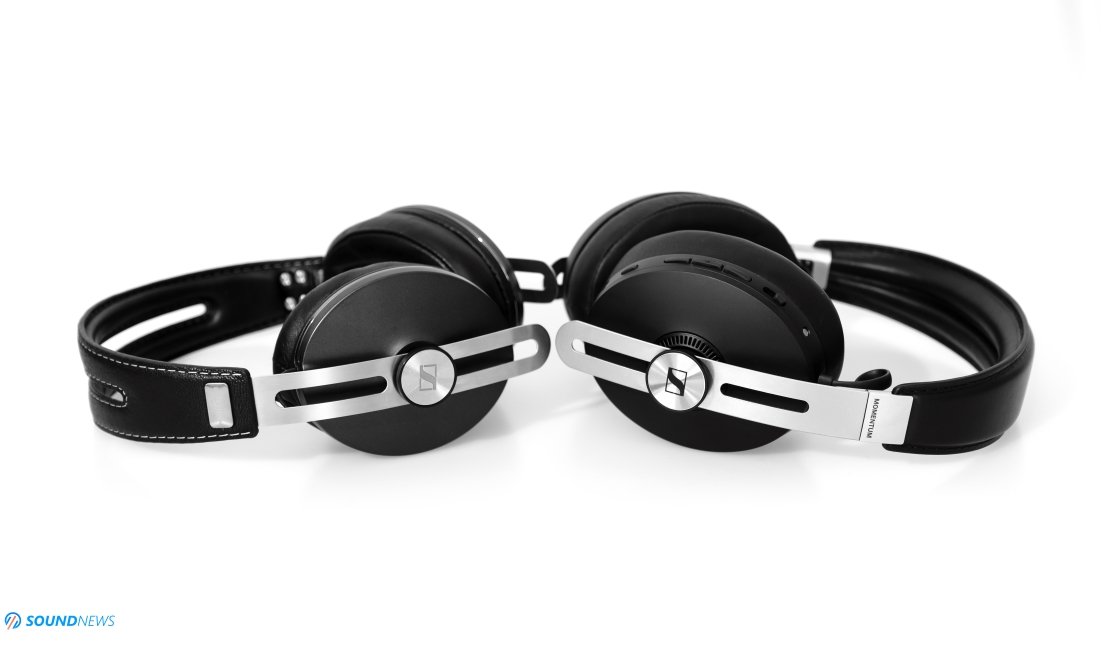
Conclusion
The latest addition to the Sennheiser premium headphone range caught my attention immediately after its announcement as I still have a soft spot for my Momentum 2 and for Sennheiser in general. I booked a longer testing period for M3 and I’m glad I did that.
Few months ago, I compared the top 3 wireless headphones in a dedicated review and then a Master&Dynamic MW65 in-depth review followed shortly.
If I would rewrite my 3-in-1 wireless headphone comparison with Momentum 3 in it I would probably have a different conclusion. When it comes to pure sound reproduction, M3 would come on top and would be a toss-up with Master&Dynamic MW65.
Wired or wireless, Sennheiser Momentum 3 looks, feels and sounds as a really good closed-back headphone and at $400 in the US or €400 here in Europe I think they are worth it and are getting my recommendation.
PROS:
- Sleek design, high-end materials
- Long battery life
- Extended frequency response with good transparency
- Rich tonality, sounds natural and easy going
- No harshness/brightness whatsoever
- Good detail retrieval
- Simple but intuitive Smart Control app
- Open wide and deep sounding
- Very good at making calls
- Can be used with a wide variety of devices (Smart TVs, laptops, desktop PC, tablets, smartphones and so on)
- Lack of aptX-HD and LDAC codecs
- Not the best ANC I have tested
- Sources: Xiaomi Mi Mix 2S, Corsair One i160, Sony Bravia 65XE9005
- DACs: Matrix Audio Element X, Keces S3, Topping DX7 PRO
- Headphone amps: Benchmark HPA4, Erzetich Bacillus, Headamp Gilmore Lite Mk2
- IEMs: IKKO OH1, Simgot EN700 PRO, FiiO FA7
- Full-sized headphones: Hifiman Arya, Quad ERA-1, Sennheiser HD660S, Momentum 2.0
- Wireless headphones: Sennheiser Momentum 3 Wireless, Master&Dynamic MW65, Sony WH-1000XM3
- Loudspeakers: KEF LS50W
- Interconnects: QED Reference XLR (x2), Aune AL3 XLR
- Power Cables: Isotek EVO3 Premier (x2)
- Balanced Power Conditioners: PLiXiR Elite BAC 400, KECES BP-600

DarKu
Thanks, I'm thinking of upgrading my M2 as well. Love the looks and the sound of M3 more.
jupitreas
Just FYI, if you're using Windows 10 with a recent version on your PC, it is very likely that it is in fact streaming aptX to the headphones, and not SBC. You'll probably need a thrid-party app to confirm this though. Furthermore, people usually complain about SBC being used, but it should be noted that in ideal conditions (good BT connectivity and high-performance hardware) SBC can actually reach a higher bitrate than aptX.
gargani
Great review. I also share your enthusiasm for the mid range, although I do find the vocal and instruments other than the bass, a little laid back, but I really enjoy the tonality of the midrange.
I also like the treble. It's not sharp or piercing, just right for me.
But definitely the bass is the main focus of the sound. I think bassheads will really like that.
I also like the treble. It's not sharp or piercing, just right for me.
But definitely the bass is the main focus of the sound. I think bassheads will really like that.
DarKu
Reviewer at Soundnews
Pros: Great build-quality with impressive tolerance numbers
- A wide selection of digital inputs and analog outputs
- The remote control is a nice addition for loudspeaker listeners
- Great tonal balanced across the frequency response
- Has an impressive kick and impact leading to a great transient response
- Clear leading edges, pin-point imaging and layering
- The headphone amplifier section was not an afterthought and properly drives dynamic and planar-magnetic headphones
- Full-MQA decoder inside is a great addition
- Crazy value at this price point
- A wide selection of digital inputs and analog outputs
- The remote control is a nice addition for loudspeaker listeners
- Great tonal balanced across the frequency response
- Has an impressive kick and impact leading to a great transient response
- Clear leading edges, pin-point imaging and layering
- The headphone amplifier section was not an afterthought and properly drives dynamic and planar-magnetic headphones
- Full-MQA decoder inside is a great addition
- Crazy value at this price point
Cons: Not the most relaxed sound
- Faint hiss (at more than half volume) on sensitive IEMs
- Lacks a gain control
- Faint hiss (at more than half volume) on sensitive IEMs
- Lacks a gain control
This is my first contact with SMSL but it doesn’t mean I didn’t know about them. What is kind of amazing is that SMLS Audio just hit 10 years on the market but their presence on the West market is quite fresh, they seen a boom and a high interest once they started working with Drop (formerly Massdrop) and released affordable but good sounding equipment. SMSL Audio is mostly specialized in the desktop-fi area (portable and desktop DACs, headphone amps and combos) but they offer few integrated and power amps for loudspeaker aficionados.

Meet the Family
The coolest product line in the SMSL family to us is their M line of desktop DACs. I’m quite sure you’ve seen at least once their latest designs with an elongated and colorful body. The super tiny and bus powered M100 DAC to this day is praised as a very good entry-level DAC in the sub $100 category. M300 DAC added balanced outputs on the back and a much higher-end AKM4497 DAC chip was used for a better performance.
M500 that we are testing today is their top of the line DAC, SMSL added a powerful headphone section in case you’ll want to use it in front of your PC.
Unboxing & Package Contents
Unboxing experience was excellent for me! It came double-boxed for extra care; the product box is fairly small and once I opened it up, I was pleased to find lots of foam for additional protection. Inside it you’ll find: the M500 unit, a nice looking and SMSL branded remote control, a USB type-B cable, a power cable, a warranty card and a user manual. That is basically everything you need to start your listening session.

Design & Build Quality
I was actually stunned by the size of M500, it looks big in pictures but in reality, it is really small. At only 8.5 x 8.8 x 19.7 cm and weighting only 0.91 Kg (that is with its internal power supply and thick aluminum body) this is basically the smallest DAC and headphone amp combo with balanced outputs on the back that carries a desktop class DAC chip inside.
I’m actually digging its looks and taking into consideration that it has a dual PCB stacked on each other, its design makes a lot of sense.
The entire body is made out of thick anodized aluminum, I have the silver version, there is also a black and a red option if you would like to add a bit of color. The front panel is really thick, at about 8 mm thickness inserting heavy duty headphone plugs will not move the unit from the table. Underneath it 4 rubber feet will make sure it will not move around when changing volume settings or making adjustments in the menu.
Controls & Connectivity
On the front panel there is a very easy to read and a really bright LCD screen provided by LG. At only 2.2” it doesn’t attract a lot of attention and I like that it has 9 display brightness modes. I am often listening to music late night and don’t like to be bothered by lights.
On the front you have just a single ¼” (6.35mm) headphone jack and a small volume wheel that also works as a stand-by button, a long press on it will put the unit in stand-by mode.
The back-panel looks stuffed with lots of inputs and outputs: you have one coaxial input, two optical inputs (I used those with a TV and with a PS4 PRO) and an MQA-enabled USB input. It has single ended and balanced outputs on the back via RCA and XLR. I’m glad M500 is not bus-powered, it uses 2 pole AC cable, so I am pretty sure it will have better dynamic swings compared to M100 and M300.

Under the hood of M500
The more I delve deeper and research about it, the more I am impressed and I am questioning myself how did they put so many tech inside such a small body.
First of all, M500 uses the top-of-the-line and desktop class ES9038 PRO DAC chip, it is among the best commercial made DAC chip on the market. To let the DAC section breathe and work at normal parameters, SMSL incorporated the ES9311 high-performance power supply voltage regulators that actually were developed to work in tandem with ES9038 PRO to squeeze the best of it. It is a low-noise, low-dropout regulator specifically designed for high-performance audio systems.
I consider its USB input as being its best sounding digital input, adopting the newest XMOS XU-216 the M500 never lost a beat or its connection and it sounds absolutely great on the USB input. This particular USB receiver supports PCM material up to 32 bit / 768 kHz and can natively decode DSD up to DSD512, via DoP it will do only DSD64, even coaxial and optical inputs will play DSD64 files.
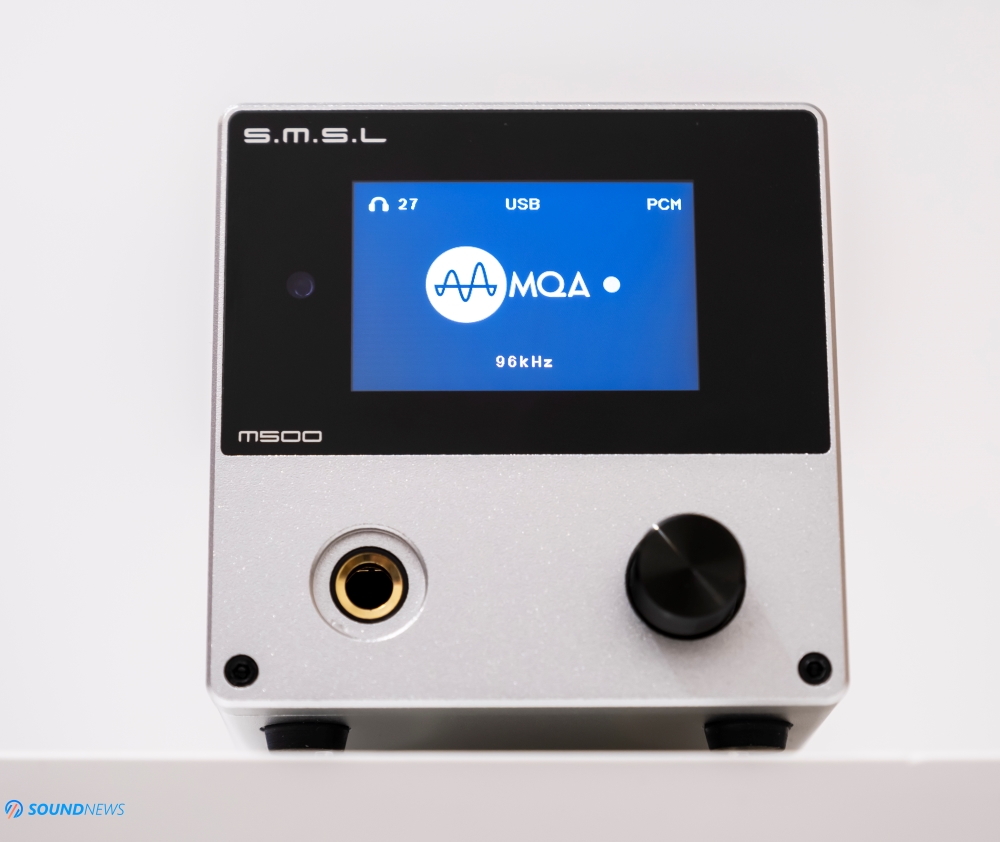
What is kind of unique to M500, especially at the price of $399 is the inclusion of a full-MQA decoder, I am not talking about an MQA Renderer like Audioquest implemented in their Dragonfly Red and Cobalt units, I am talking about a full blown MQA Decoder.
Its internal headphone amp circuit was developed using discrete components, I was assured it has enough current even for power hungry headphones so the damping factor should be always high. In terms of power M500 will deliver up to 570mW into 32 Ohms and 65mW into 300 Ohm loads.
M500 also has an independent headphone and preamp volume control, you can use one or another.
Last but not least SMSL developed its own ultra-low noise power supply encapsulated inside a metal shell, it is basically shielded away from analog circuitry for the best results.
SMSL actually provided some brief measurements, as you can see from the graph the total harmonic distortion to noise ratio (THD+N) is sitting just at 0.00014% and SINAD approaches the 117 dB mark, those are quite impressive measurements especially at this body size and price point.

Menu Options
The LCD screen will show important information such as your selected input and output, volume level, bitrate and what kind of material is being played (PCM, DSD or MQA).
Gently pushing on the volume wheel enters the setup menu where additional setting can be accessed such as:
- You can select 4 digital inputs: USB type B, Optical 1 and 2 and Coaxial. I used USB the most, followed by both optical inputs that worked excellent with a game console and with a TV.
- Select the output: Line-out or the headphone out
- Select your desired digital filters that are built-in directly in the ESS DAC chip. I personally like the Fast Minimum and Fast Linear (default one), they do make a difference but a really faint one.
- Dim the LCD screen, it has 9 brightness levels
- Check the SW and HW version and the manufacturing date, this particular unit was made on 27.07.2019
Let’s get to the most interesting part of the review, shall we?

Sound Performance
I. Using it as a DAC and headphone amp combo.
1) Using M500 with sensitive IEMs
There is just a single feature that I wish was implemented in the M500 and that is the gain control. Sadly, M500 doesn’t have a gain switch or a digital implementation of it. On the headphone out M500 has 40 volume levels controlled by a stepped volume wheel.
The volume increases exponentially, meaning it starts rising really fast somewhere above the 14-volume position. With sensitive IEMs like Simgot EN700 Pro, IKKO OH1 or FiiO FA7 I couldn’t go higher than 15 volume, for IEM users it has power to spare, lots of grunt and an impressive diaphragm control.
There were only two things that I didn’t particularly enjoy when I paired it with IEMs: there were times when I would like to have my volume level somewhere between the 15 and 14 position and to do that I need to change the volume setting in the OS of my PC, otherwise it would sound louder at 15 and lower than my listening level at 14. Second thing is that above 20 volume position and only with sensitive IEMs there is a little bit of residual noise, a faint hum can be heard when pausing the music. If I do that on the actual volume level I listen to music, then the noise is gone and cannot be spotted. There are few background noise junkies out there that are very sensitive to hum, in this regard M500 is not the quietest unit I tested. Its noise is basically on the same level with the $500 Headamp Gilmore Lite Mk2 and with the $500 Erzetich Bacillus headphone amps, both of those units do not have an internal DAC section, so in the end I think M500 does a pretty good job with IEMs, just don’t expect the cleanest background and you will be fine.
With all the music I listened to, but especially with faster paced, I had the impression that M500 has a very good grip over the headphone drivers and has little to no coloration in terms of frequency response. In the first 24 hours I noticed that it sounded a bit on brighter side and the midrange but especial vocal performance took a hit, it is now past 48 hours and doesn’t sound as such anymore. M500 has more than enough power for any multi-driver IEM and a result it shown me that it has a good slam, great energetic bass and can be even gentle with the right music. Past 48 hours of burn-in I am not detecting any changes and the overall impression it left on me is that it sounds clean, quite spread out around the listener, sounds linear with just a little of extra topping in the bass and treble area.

2) Using M500 with desktop headphones
I first decided to listen to the fun Quad Era-1 planar-magnetic headphone. Ok, now we’re talking and what a change it is!
Era-1 is a difficult load for portable devices and even for some desktop units, M500 drives them fully at their full potential. Era-1 has a sensitivity of 94dB per 1mW of power and can handle a maximum input of 100mW. With M500 I can’t pass the 28-volume position (out of max 40), my comfortable listening level is at 25 and I feel I am not sacrificing anything with them.
I can definitely say its internal headphone amplifier was not put there just for convenience; it can really drive some serious headphones.
When I moved to Sennheiser HD660s it was a child’s play for M500, my volume level lowered to 23 and I couldn’t go louder past 26 position. Sennheiser HD6XX family of headphones will be fully driven and I wouldn’t worry about that too much.
Moving on to the hardest to drive headphone from my stable - Hifiman Arya, with its lower sensitivity and higher impedance the volume jumped to 30 for a normal listening session and I could go maximum to 34 for some really loud tunes.
Even with Hifiman Arya I’ve heard great dynamic swings, an impressive kick into eardrums and a high fun factor. It surprised me since there aren’t a lot of headphone amps (mostly single ended ones) that can properly drive the Hifiman Arya. M500 shown great control over the headphone drivers, it actually sounds quite fast, articulate, mean and imposing with the right set of cans.
I managed to connect M500 to Benchmark HPA4 via a balanced interconnect cable so I could compare the headphone amp section of both units and properly evaluate the headphone amp section of M500.
In my opinion there isn’t a better headphone amp right now on the market like the amazing Benchmark HPA4 and with it I can easily pick up the sound signature of any audio source and I can easily compare it to other headphone amps.
Compared to HPA4, M500 headphone amp section is fairly neutral with just a small emphasis in the upper treble area and in the mid-bass section. It sounds V-shaped a bit, I presume there is a boost of about 2 to 3 db in those areas just to make it feel airier and more vibrant somehow. M500 looses a bit of holography and spatial cues, but that is understandable given the much higher power reserve HPA4 is having.
Nonetheless, the power reserve of M500 was quite obvious with the Quad Era-1 and with Sennheiser HD660s and it actually never transformed those headphones into something else. M500 is quite honest sounding, without leaving a big stain on the musical performance.
When I compared the M500 with Erzetich Bacillus the difference between those units became much smaller as it was with Benchmark HPA4. By comparison Bacillus sounded meatier and even more dynamic, but it lost refinement, easiness and sparkle up top that M500 is offering in return. I think both units are fine, M500 is just closer to reality and linearity, whereas Bacillus is colored with a strong fun factor attached to it.

II. Using M500 as a DAC only in a speaker-based system.
My active KEF LS50W loudspeakers are already veterans as every DAC that goes through my hands will be tested with those speakers as well. I like everything about LS50W, except for their mediocre internal DAC section that I wish was better.
With SMSL M500 added to the chain I am feeling a big family resemblance with KECES S3 and even with my Matrix Audio Element X. M500 borrows a lot of good parts from those units and adds just a bit of its own character into the mix. My reference unit at the moment is Element X and I am not kidding when I say that M500 sounds like a baby-Element X. They even have the same color scheme.
There were already many times when the internal DAC of LS50W was outperformed by external DAC units and M500 did that as well and quite easily I might add.
This past few months some of my favorite rock and metal bands released new albums and I had a lot to catch up. Lacuna Coil just released 3 new songs, Tool, Slipknot and Korn all released new albums, since I know them pretty well already, I decided that M500 needs to listen (or should I say play) them as well.
What I really like with almost all ESS Sabre designs, it’s their ability to have a faster pace, to kick harder and in general they have greater dynamics no matter the song. M500 is exactly like that and to some degree it even outperforms units like Topping D70 and other AKM based DACs. M500 was made for faster, engaging music. Sure, it can play slow music as well, but with its faster decay and little to no smoothness it might impact your listening pleasure.
In terms of frequency response, I still stand by the impression that M500 has a great sub-bass and mid-bass performance. It is just a little overdone to infuse a little bit of fun and character. Bass lovers will be impressed by the M500 ability to bring the bass fast in the room, to hit you hard in the chest and run away in an instant.
I consider its midrange performance linear, never overdone or overshadowed, M500 has a perfect dose of naturalness and technical prowess. Vocal performance is great once it hits the 48 hour burn-in time. Voices have a great sustain and are sounding deep. What I really like is that all the acoustic instruments are quite outlined and detailed. The blurriness is never present and M500 is mostly leaning towards a sharp and detailed image.
Treble is probably among the best aspects of it, it sounded a bit hot in the first two days of my evaluation, but it was tamed in the following days and it is much more approachable. It is also impressively extended in the sub-sonic area without having a natural roll-off. Past 16 kHz and M500 still shows traces of micro-information, I consider it having a very good treble response. When I am listening to bad mastered music the treble will not be rendered as a huge treble blob or like a harsh mess, there is some void space between all those sound and M500 is like decompressing the treble and placing everything at its right place in the mix.

III. MQA Experience
I’ve come back to PC listening since the full MQA renderer will work only on its USB input. I fired some Tidal Masters and on the M500 screen the MQA logo appeared. I played a bit with the Tidal settings just to be sure it has a full MQA Rendered inside. If I enable the software decoding of MQA, then M500 will see those files as simple PCM lossless files, if I disable the software decoding and enable the hardware decoding on M500 it switches automatically to MQA mode. So, yes, it has a full MQA decoder inside and that can be spotted immediately after pressing play. Besides hearing a little bit more of everything and rendering additional details and few additional notes, it somehow sounds more natural this way, smoother and not as mean or aggressive. I am also seeing a clearer picture and more spatial cues around me. Soundstage expanded and the notes are flying further away. If you want the best experience streaming can offer, M500 will got your covered with a full MQA experience.
In the living room just make sure to use some Hi-Res or DSD material and those two will surpass even the MQA experience.
IV. Comparisons
Burson Playmate ($399) VS SMSL M500 ($399)
Both units are at the same price, both are made from anodized aluminum, but the M500 uses thicker plates and is better finished. Playmate looks a bit rough around the edges and not as refined.
In terms of specs Playmate uses the mobile version of ES9038Q2M, M500 uses the more expensive and higher spec PRO version instead. Playmate also lacks any balanced outputs, M500 will give you one and it is a fully balanced one. Display quality is much better on M500, with better visibility, resolution, not to mention colors. M500 has two additional digital inputs and an extra analog output.
Playmate standard doesn’t come with a remote, you will need to pay extra for it, M500 has it and it is really convenient especially in the living room.
M500 is also having a full-MQA decoder inside and Playmate lacks any of that.
In terms of sound performance, the Playmate sounds fuller and warmer, even darker at times with a clear roll-off. Playmate sounds rounded and is cutting some of the sub-bass and upper-treble information. It is not super revealing or detailed, it just sounds fun and dynamic. It cares more about the musical experience more than anything, you don’t want analyzing your music with it.
M500 sound like a clear step-up, more detailed, more spread-out, more micro-information, without any roll-offs in the bass or treble area. It has basically more of everything, not to mention a better XMOS chip on the USB and a full blown MQA decoder. It is better on every front and as such it sounds better.
The only thing I consider Playmate does a little better is the headphone amp section, but only with hard to drive headphones. It has higher power on tap and will drive Hifiman Arya with even greater authority and slam. When it comes to sensitive IEMs, Playmate has more hum and background noise, even with volume at zero position. M500 has a bit of hum only at half volume and upwards, so in terms of IEM listening M500 wins another round.

Conclusion
This is my first foray into the SMSL Audio land and I’m glad it changed drastically my perceptions about affordable balanced all-in-one units. Build quality wise there is nothing to complain, its uses thick aluminum plates, its nicely build, it’s sturdy and looks unique, if you see an elongated body it must be surely a SMSL Audio device.
As a DAC and headphone amp combo it is a dream come true, if you are a streaming head, even better! Tidal Masters sounded amazing and any faults I’ve heard on usual 16-bit tracks were cured with Hi-Res, DSD or MQA content.
As a DAC only device, you have everything you need: an RCA and XLR output and it is volume controllable, meaning it can also work as a digital preamp and the remote control at your fingertips is a very nice addition too.
A full MQA decoder at less than half a grand is something new and slowly but surely SMSL Audio is paving its way in the great sounding equipment category at very affordable prices.
SMSL M500 is unquestionable an excellent performing unit in a speaker based or in a headphone-based setup and only at $399 you cannot go wrong with it.
PROS:
- Great build-quality with impressive tolerance numbers
- A wide selection of digital inputs and analog outputs
- The remote control is a nice addition for loudspeaker listeners
- Great tonal balanced across the frequency response
- Has an impressive kick and impact leading to a great transient response
- Clear leading edges, pin-point imaging and layering
- The headphone amplifier section was not an afterthought and properly drives dynamic and planar-magnetic headphones
- Full-MQA decoder inside is a great addition
- Crazy value at this price point
- Not the most relaxed sound
- Faint hiss (at more than half volume) on sensitive IEMs
- Lacks a gain control
- DACs: SMSL M500, Burson Playmate, Keces S3, Matrix Audio Element X
- Headphone amps: Benchmark HPA4, Erzetich Bacillus, Headamp Gilmore Lite Mk2
- IEMs: FiiO FA7, IKKO OH1, Simgot EN700 Pro
- Full-sized headphones: Hifiman Arya, Quad ERA-1, Sennheiser HD660S, OLLO Audio S4
- Loudspeakers: KEF LS50W
- Interconnects: QED Reference XLR (x2), Aune AL3 XLR
- Power Cables: Isotek EVO3 Premier (x2)
- Balanced Power Conditioners: PLiXiR Elite BAC400, KECES BP-600

M
MarcialPairola
First of all, excelent review!!!!!!!! SEcond, i bought a Sennheiser 6xx (650) that has 300 ohms, the double of the 660s that are 150 ohms. So i beleive for handling those the volume should be betwen 27 and 32 right, more o less????? Again, great job!
DarKu
Reviewer at Soundnews
Pros: Sleek looking device, solid build quality
- An impressive feature-packed 4-in-1 device (DAC/preamp/headphone amp/BT receiver)
- Linear and super extended on both ends, lacks any sound coloration
- Impressive levels of transparency and resolution
- Precise pin-point imaging
- Wide soundstage, deep sounding as well
- Excellent pace, rhythm and timing with crazy dynamic swings
- Linear and uncolored headphone amp section with lots of power to spare
- Lacks any noise or distortion
- Widest selection of digital inputs
- An impressive feature-packed 4-in-1 device (DAC/preamp/headphone amp/BT receiver)
- Linear and super extended on both ends, lacks any sound coloration
- Impressive levels of transparency and resolution
- Precise pin-point imaging
- Wide soundstage, deep sounding as well
- Excellent pace, rhythm and timing with crazy dynamic swings
- Linear and uncolored headphone amp section with lots of power to spare
- Lacks any noise or distortion
- Widest selection of digital inputs
Cons: High output impedance on all headphone outputs limits the damping factor of low impedance IEMs/Headphones
In January 2019 Topping announced that they are almost finishing their flagship DX7 PRO DAC and everybody prepared their wallets and some romantic stories for their wives, fast forward in April it was revealed that they are still tuning the DX7 PRO and are assuring a polished device with good specs and impressive measurements will come out of their labs. In September we are assured no other delays will happen and that it entered final production stage. At long last, after a long 9-month wait time of adjustments and tuning DX7 Pro sees the light of the day. I personally don’t mind waiting for a mature and polished product, I’ve seen multiple flawed devices (especially smaller portable ones) at their launch and nobody was happy with those.
We already tested their D70 DAC and were impressed by its build, specs and measurements, but most importantly by its sound performance and incredible value. Want it or not, Topping is growing fast and as far as I can tell their D90 will be the first commercial DAC with the flagship AKM4499 DAC chip inside.
DX7 PRO is an updated version of the acclaimed DX7S that at that time replaced the DX7, as you can see DX7 PRO is the third iteration of the all-in-one DAC/Preamp and headphone amp combo, DX7 PRO has now even some powerful Bluetooth capabilities, should it also be called as a streamer? Not really, since both AptX-HD and LDAC are still not capable of delivering bit-perfect Hi-Res data streams, but in time with new tech that will surely happen.

So, if you are wondering what exactly was improved or changed or maybe left unchanged? Let’s take a closer look.
- It seems that DX7 Pro uses a slightly smaller and thinner case losing a bit weight in the process, it is now at only 1.4 Kg
- DX7 Pro has an additional digital input – I2S input, from my listening tests this is the best digital input, closely followed by USB
- DX7 Pro has also an additional Bluetooth receiver, actually the best Bluetooth receiver as of right now (CSR8675 from Qualcomm), this one is capable of receiving AAC, SBC, aptX, aptX-LL, aptX-HD and LDAC for up to 990 kb/sec wireless transmission. Bluetooth version 5.0 and the included antenna help a lot in maintaining a clear and stable wireless signal even with 3 concrete walls between the sender and the DX7 Pro
- Probably the biggest change is moving from a dual 2-channel ES9038Q2M mobile DAC chips to a single but more advanced 8-channel and desktop class ES9038 PRO
- DX7 PRO moved to 3 high-performance Accusilicon AS318-B femtosecond crystal oscillators, combined with a better DAC chip the total-harmonic-distortion (THD) was lowered by 5 times compared to DX7S! It sits at only 0.000084%, SINAD improved as well and on the XLR out it shows an impressive 121 dB, that is world class performance by my standards.
- Another great improvement is the headphone amp section, DX7s was no slouch with headphones and could drive almost all of them except for current hungry headphones like low sensitivity planar-magnetic headphones. From a full 1 Watt of power on DX7s, newer device upped the game and delivers a whopping 1.7W in the same 32 Ohm impedance. This power increase was targeted mostly at planars that are mostly current and not voltage driven (as opposed to dynamic driver headphones)
- There are other smaller improvements, like higher SNR on the balanced out and on the headphone out (by 3dB) and fewer things that only an Audio Precision APx555 will show you (IMD hump is almost gone).
- Of course, all those improvements come at a price, DX7 PRO costs $599 and DX7s $499, however only those 3 femtosecond crystal clocks are costing more than $100 so I consider the higher price fully justified.

Unbox Therapy
Unboxing experience is very positive, no complains here. Double boxed? Check! Thick card-board box? Check! Lots of foam for extra protection? Triple Check!
Inside the box you’ll find: DX7 Pro unit itself, a power cable, a USB type-B cable, a headphone adapter, a screwing type Bluetooth antenna, a much-needed remote control, a warranty card and a very in-depth to the smallest details user manual. What I really like about this user manual is that Topping actually published actual audio performance measurements recorded by world’s best audio analyzer: Audio Precision APx555. Basically, everything from FFT Spectrum, harmonic distortion ratio, Inter-modulation distortion ratio (IMD) and RMS levels for both the RCA and XLR out, everything is included in there. Want to use the i2S input but don’t know the exact phase settings of the external S/PDIF interface, the manual has all those i2S phase settings too. They did exactly like that with the D70 and with newer devices. I also like that all the usual audiophile marketing snake-oil is not present in the manual, just pure specs and facts. They earned my respect with the release of D70 and same story repeats itself with DX7 PRO. I think other manufacturers should take notes, I would always prefer specs and measurements than audiophile marketing nonsense like others are doing.

Design & Build Quality
From the first glance it is very clear to me that Topping further improved it in terms of aesthetics and design. There isn’t a single visible screw on the face plate, on the side plates or underneath the device. Only on the back few screws can be spotted, but those are hidden from the human eyes.
DX7 Pro is very clean, simple and elegant looking. I really like the use of the black and white OLED screen; I think for a simple black or silver box it adds a bit of class and coolness factor.
The case is beautifully crafted & CNC milled from aluminum, it feels and looks impressive. From my perspective this is their most beautiful design, don’t you agree?
Underneath it those 4 rubber feet are actually positioned in 4 individually carved spaces on the case itself and will never move around, this small thing is actually a big plus for headphone listeners. I am touching and changing volume settings, I’m plugging and unplugging my headphones multiple times per day and if a device is lighter the rubber feet might move or worse fell down due to poor gluing, not the case with DX7 Pro.
Size wise it is a bit smaller than DX7S and D70 DACs, but just barely. I put it on top of the Benchmark HPA4 and these two are like made for each other – they have the same width and both cases have rounded side plates.
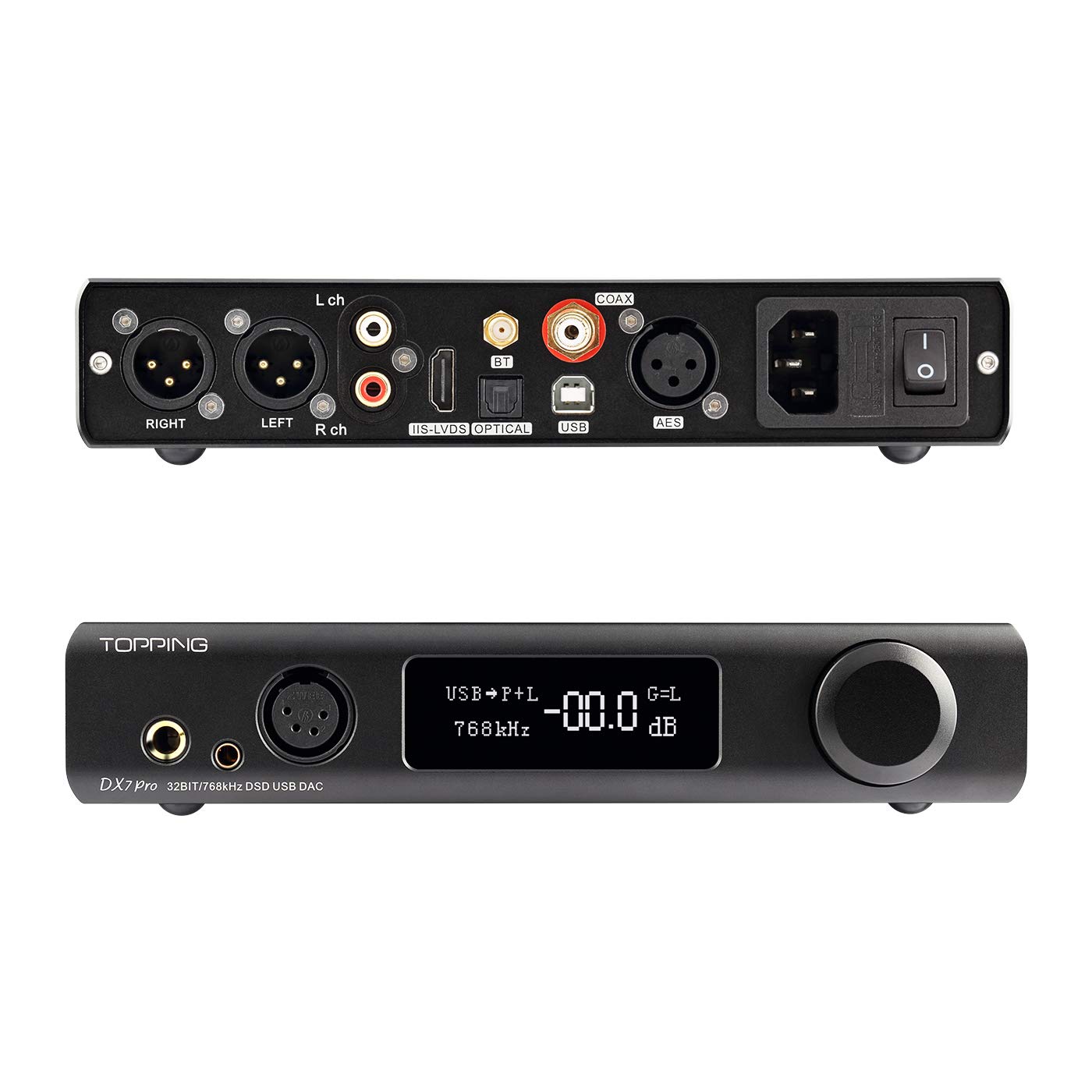
Controls & Connectivity
Front panel looks clean and tidy, the sneaky volume pot also works as a standby On/Off button
I really like the positioning of all those 3 headphone outs and I’m glad besides a 4-pin XLR and ¼” headphone jack they also used the best-balanced headphone jack of the moment: 4.4mm Pentaconn. Volume knob is super smooth to the touch and has 99 physical steps. However, the volume control is 100% fully digital and at 99 steps it is so easy knowing how much volume is there left for my headphones.
OLED screen has 3 brightness levels and at the highest setting it is not too bright, it shows all the important information like the selected digital input, analog output, the gain settings, the sampling frequency (for PCM material) or the DSD rate and the volume position from -99 to 0 dB.
Taking a glance on the back is clear that DX7 Pro targets high-profile and knowledgeable audiophiles, the i2S and AES inputs are a rare sight nowadays and I’m welcoming those, of course there is also a USB type-B input, a coaxial and an optical (Toslink) input. Since this is a fully balanced input to output DAC it has RCAs and XLRs on the back.
One important aspect is that with the volume pot that works as a menu navigator can be accessed only basic features of DX7 Pro, if you want to fully customize it to your liking, I recommend using the remote control from the package. With it, you can select from 7 digital filters that are working on the hardware level from the ES9038 PRO itself, you can select 3 brightness levels, you can select your desired analog output: RCA, XLR, RCA+XLR, PO (phone out) or LO (line out) + PO, a setting for every needs. DX7 Pro has also a small memory buffer and it will remember the volume settings for every selected output, you can have 0 dB on the line-out and just -20 db on the phone out, quite convenient!
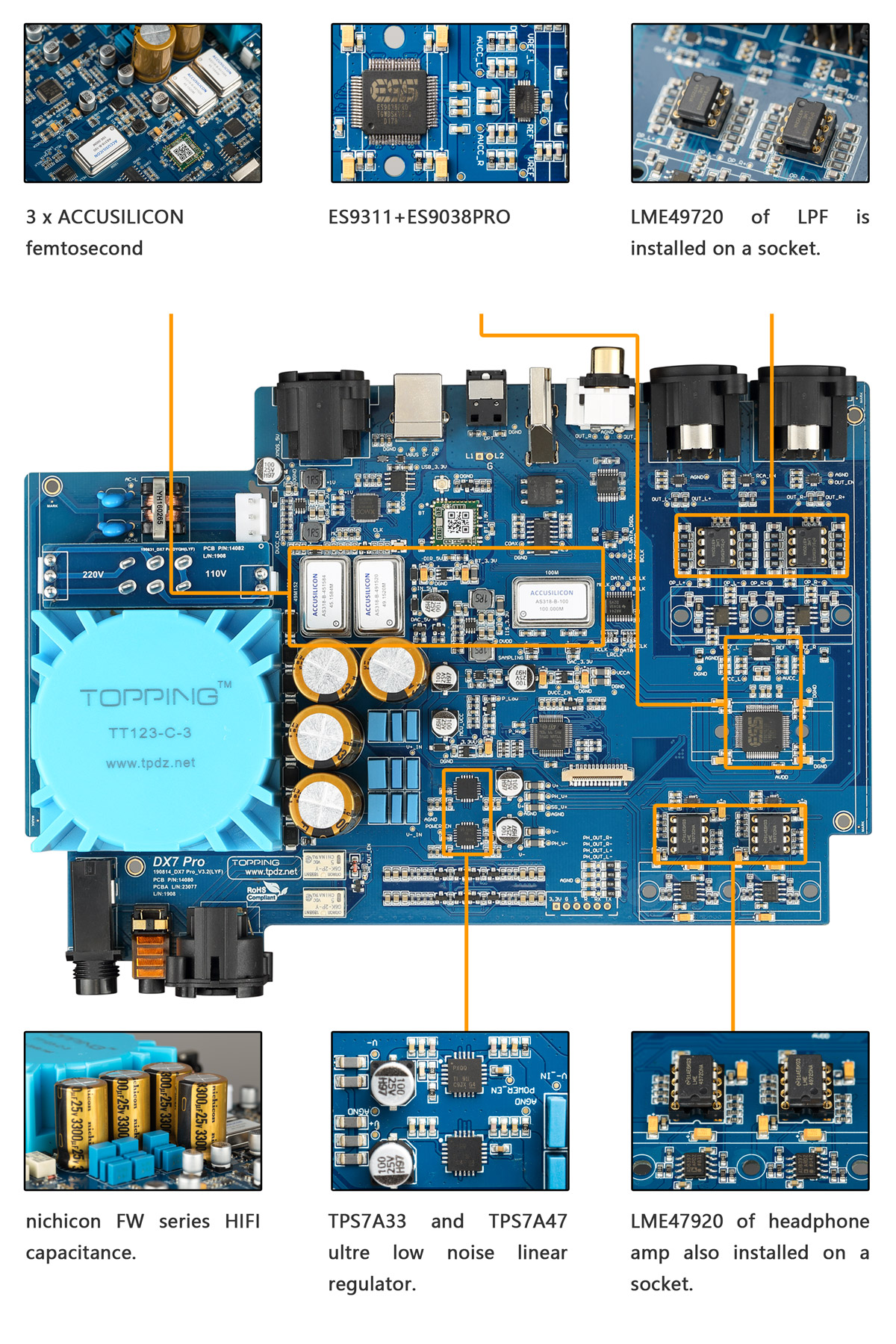
Tech Specs & Detailed information
I will just briefly summarize all the important specs as I already mentioned some of those.
ES9038 PRO DAC chip + 3 Accusilicon femtosecond clocks are doing all the digital work, the USB decoder is the famous XU208 from XMOS and custom drivers from Thesycon will ensure a good stability. DX7 Pro can natively decode DSD512 and PCM up to 768 kHz at 32 bits on the USB, only I2S input is capable of decoding DSD1024.
DX7 PRO is using a proprietary toroidal transformer along with some audio-grade Nichion capacitors. From my point of view this is an advanced power supply with multiple levels of isolation for an accurate sound reproduction. DX7 Pro ditched the TPA6120A2 headphone amplifier circuit in favor of the cleaner sounding LME47920 dual op-amps. Since Topping is using two of them it means the headphone amp circuit is fully balanced as is the DAC part.
What is kind of interesting is that both op-amps are socketed, so in theory if you wish to roll some dual op-amps and maybe use something fancier like Burson V6 or SparkoS Labs dual op-amps, you can do that. Even the DAC output stage consisting of two LME49720 are also put on DIP-8 sockets, but sincerely I do not recommend changing those. Those are already very good, have been tested for good performance and thermal stability and other ones might not sound as good, the output stage is quite a sensitive part, leave it as it is.
The 1.7 Watt headphone amp section is really powerful, didn’t expect those numbers at this size and weight. What is not so impressive and a bit worrisome especially for low impedance IEM/headphone users is the output impedance of the headphone outputs. The SE 1/4” one has it at 4.7 Ohm and both balanced outputs at 9.4 Ohm, meaning the balanced out might not have the best damping factor for low impedance headphones.
OK everyone, I think it is time to have a long listening session.

Sound Performance
I. In a headphone-based system
A. Using sensitive In-Ear-Monitors
Before going deep into its performance two things needs to be mentioned.
First one is the output impedance of both HP outputs, for a good damping factor the headphone impedance should be at least 8 times higher than that of the source, this is called the “rule of eights”.
SE output has 4.7 Ohm x 8 = means a headphone with impedance of at least 37.6 Ohm should be used for the best results. Of course, it doesn’t mean lower impedance ones will not sound fine, it’s just that the damping factor will be decreased and the diaphragm control will be affected.
Both balanced HP outputs have it at 9.4 Ohm x 8 = a headphone with at least 75.2 Ohms should be used for the best results.
I presume that Topping increased the HP impedance so that the headphone amp circuit will never be over-driven into clipping, but this is just a wild guess and not a fact.
I personally don’t recommend using sensitive IEMs on the balanced out and only on the low gain setting for safety reasons, on high gain it can go loud really fast.
Second thing that needs to be mentioned is that all three headphone outs have the noise under a strict control so I’m pleased to report DX7 Pro is completely noise free on all three headphone outputs, on Low or High gain, it doesn’t matter, the background is free of any gremlins or mains hum. Isolation circuit plays a big role here and DX7 Pro is among the most silent units I tested of late. As a brief comparison it has much less mains noise than $2195 Mytek Brooklyn DAC+, a bit less than $1500 KECES S3 and of course lower than that of $500 Gilmore Lite Mk2, $400 Burson Playmate, $500 Erzetich Bacillus and about on the same level with $599 Aune Audio S6 PRO and with my reference $3000 Matrix Audio Element X. So, IEM users rejoice, on the SE out this thing rocks pretty hard.
I also observed that Low gain has a really slow volume rising curve, even with super sensitive stuff I was sitting comfortably at about -30 dB, so plenty of headroom and volume doesn’t increase very fast. High gain is of course another story, right there DX7 Pro will show its biceps especially on the 4-in XLR.
I decided to listen to the lowest impedance IEMs in my possession and those were the 16 Ohm Simgot EN700 PRO and following the rule of eights I should have a lower damping factor, but sincerely at a sensitivity of 101 dB I didn’t feel a slower transient response or some weaker dynamics. They sounded as good as I remembered those on my big rig. DX7 Pro has lots of authority, a hard grip and a good diaphragm control and if needed IEMs can be easily used no problem with it.
Basically, the same happened when I moved to the 23 Ohm 4-way balanced armature driver FiiO FA7, with a sensitivity of 110 dB/1 mW the damping factor was not affected and those sounded the same as I remember them on high-performance headphone amps.
What was very obvious from the start is that DX7 Pro chooses to have a super linear and honest sounding signature. It doesn’t want to add or hide something from the recording, if it’s there it will show it, be it good or bad. DX7 Pro is not a forgiving type of DAC and headphone amp combo. It was tuned towards a revealing nature like a magnifying glass for your music.
I personally like this kind of performance, for me any EQ or DSP will hide part of the truth or will beautify the ugly truth, honest and linear is only way to go. If you want to add a bit of character, spark or warmth, you can do that with an amplifier (pre/integrated/power) of your choice.

B. Using full-sized headphones
I was very curious how DX7 Pro headphone amp section will behave with current-driven low impedance planar-magnetic headphones.
I decided listening first to the 20 Ohm Quad ERA-1, at about 94 dB/1mW these are neither easy to drive nor very power hungry. On the 4-pin XLR output and engaging High gain I could go up to -18 dB volume and my comfortable level would be at -20 dB. So, in the worst-case scenario I would have another 18 dB of headroom and dynamic range left on tap, DX7 PRO is incredibly powerful but the final decisive test is yet to come.
Quad ERA-1 was the only case when I felt the 9.4 Ohm balanced HP out impedance took away part of the magic ERA-1 are known for: speed and impact! It was not a night and day difference compared to say a Benchmark HPA4 but it was quite obvious especially with faster paced music.
ERA-1 lost that nimble and light on feet approach to music reproduction, that kick that instantly rises the mood and the very clear outline of the notes (the leading edges). It sounded like it lost a bit of pace and can’t keep up with faster transients. I believe the diaphragm was just not controlled to its best and this is what happened.
When I moved to the lowest sensitivity and hardest to drive headphone from my stable things improved a lot. Hifiman Arya at 35 Ohms and at 90 dB/1 mW is not an easy task to move around and control, yet at -15dB I was comfortable driving them and my hearing threshold would stop at -12 dB. As a result, in the worst-case scenario I would have 12 dB of headroom left, that is plenty even for Chesky or Reference Recordings.
I was pleased to find DX7 PRO capable at driving this particular pair of headphones and I know a lot of dedicated headphone amps that can’t do that.
Weirdly enough, damping factor was not a problem anymore, they kicked, they punched and they delivered incredibly dynamics and I was basically listening to them at their fullest potential. Even soundstage size didn’t suffer at all, its internal headphone amp section is really capable and can move a lot of air if needed.
Moving on to the 150 Ohm Sennheiser HD660S was an easy game for it, at -25 dB I was sitting in the middle of a rock gig and at -28 dB that would be my comfortable listening level. As expected, HD660S were fully driven to their fullest. What I enjoyed a lot was the driver control, an instant start and stop of the headphone driver, HD660S sounded like being on steroids and more power than what’s on tap would be just overkill.
From my longer headphone listening sessions I learned a few things:
- On the balanced 4.4 mm/4-pin XLR you should use 35 Ohm or higher impedance headphones and all the kick and impact will be yours to have
- On the SE ¼” use any IEM or portable headphones that has more than 16 Ohms for the best results
The rest is history, headphone listeners were not overlooked this time around and DX7 PRO delivered everything I wanted it to be.

C. Wireless Performance
Luckily my smartphone is BT 5.0 enabled and LDAC/AptX-HD compatible. Connecting it to DX7 PRO was easier than expected: you just need to select the BT input on DX7 PRO, search for DX7 PRO on your phone and connect to it. DX7 PRO was connected to my KEF LS50W all this time so I could hear if the signal drops or not and I started moving around my flat. At a short distance with 3 concrete walls between us the signal was still going strong, at 10-meter distance with 2 concrete walls it was still good, only in the last room with 3 concrete walls between us I was losing the signal and it would drop few beats and stutter in the process.
However, compared to other Bluetooth receivers that I have tested not too long ago, like FiiO BTR3 and Q5S, DX7 PRO had a stronger and steadier signal, its Bluetooth antenna was put there exactly for that purpose.
I fired some Tidal Masters (192 kHz) on my phone and DX7 PRO played all that without a problem. The overall performance took a small hit. Everything sound good, just minor flaws like detail retrieval was not the same as going wired via USB or I2S. When I moved to simple CD quality content from Tidal (16 bit 44.1 kHz) the sound quality gap shrunk to a point of being almost indistinguishable from the wired performance. In the end LDAC is transmitting data at up to 990 kB/sec, that is already lossless quality and I almost couldn’t tell which one is which. DX7 Pro seems to be the perfect bed-side wireless receiver for some late-night jazz sessions.

II. In a speaker based system
The active KEF LS50W that I’m using already have an internal DAC, streamer and dual mono amps. I like a lot of things about them but there is one thing that definitely lacks in terms of resolution and pin point imaging: their internal DAC section.
Luckily, LS50W have an additional analog input so I can use external sources with them bypassing their digital processing. When I connected the DX7 PRO to LS50W I was sincerely not shocked hearing more hidden details, more little nuances, the internal DAC of LS50W can’t possibly render or show me those. It happened many times already and it wasn’t something new to me.
What was quite unusual is how fast coaxial drivers transformed into something else. They suddenly started throwing punches at me with incredible kicks into my chest, bass notes suddenly reached lower octaves, I didn’t particularly understand, how was that possible?
I connected a ChromeCast Audio enabled TV to DX7 PRO and again fired some Tidal Masters, but this time I focused on the transient response and on the decay of the notes.
Listening to Moonlight Sonata 3rd Movement was an almost aggressive performance, multiple notes hit from different angles, decaying in an instant and striking me again and again. I believe this particular coaxial driver loves this kind of control and speedy transient response. DX7 PRO shown not only brute power but also finesse and a very well-polished presentation. When I am using only its DAC part, I can hardly find any complaints at all.
Listening to Mozart Violin Concertos it started pushing all the notes away from me, the air moving around the room was so obvious. Without a doubt, DX7 Pro possesses a well-defined pin point imaging and all the spatial cues were easily spotted, I don’t even need to close my eyes anymore to see them flying around me. Picking up individual sounds from a crowded track is like playing a game on Easy Mode.
Vivaldi – Che Giova II Sospirar – I’ve heard the widest soundstage size of the evening and what an open wide presentation it was! At one point it resembled the performance of a bigger stand-floor speaker. Sound was always far and wide, bold and imposing, with impressive dynamics and fast decays of the notes.

Moving further to something more aggressive sounding like the newest album by Lacuna Coil – Black Anima was an wait a sec moment for me. DX7 Pro was just created for faster paced music, where all the frequency range is needed. Bass notes started waving my ears and all that drive and energy was instantly felt inside me, turning me to the dark side. The voice of Cristina was like avoiding the crowd around her and paving its way towards more. This is a mediocre mastered album but the raw energy is there in spades and DX7 PRO is not shy showing off all those traits.
In terms of frequency response DX7 PRO is super linear and plays with the big boys, it is not rounding the frequency extremes and nothing will hide from its sight, I didn’t spot even a glimpse of roll-off.
All my usual bass tests were passed with flying colors. Sub-bass is deep reaching, has a good sustain and it is always clean sounding. The grainy & blurry bass notes are never present, even on bad mastered music and of course multiple layers of bass can be spotted on the right music. Mid-bass is not overdone like how others are doing nowadays.
Midrange is on the same level, never enters or leaves the spotlight, always in the middle of the mix. Voices carry emotions and are never dry sounding, nor too wet and warm. I think in terms of midrange performance it is like disappearing without adding a hint of color. If you are looking for a warmer and charismatic sounding DAC, this one will not be for you.
DX7 PRO is brutally honest with everything and shows all that is hidden in a natural manner.
Treble is exceptional, always clean, sparkly up top without making me lower the volume. It bites at times, has a really good texture and I can feel the cymbals hitting my eardrums. It is extremely transparent and very detailed to a point that I started questioning myself If I needed to spend 5 times more for a slight improvement.
In terms of detail retrieval and transparency, DX7 PRO is staying in the top 3 for me at any price point.

Comparisons
Topping DX7 PRO ($599) vs Topping D70 ($499)
I will skip the specs, design, weight, functionality aspects and will focus only on the DAC part of both devices.
The moment I listened to D70 I knew it rolls-off a bit in the sub-bass and upper-treble area. As a result, D70 is not super linear and will not show crazily vivid the lowest octaves or the sub-sonic trebles. DX7 PRO on other hand is brutally honest and has it all from the lowest to the highest notes. D70 is not aggressive, speedy or very articulated. D70 will not hit hard, has a weaker impact and is not very impressive with faster paced music, it’s good but not impressively good. D70 is a bit romantic and slower sounding, crazy good with blues and jazz and passable with rock and electronica. DX7 PRO is opposed to that, it’s mean, kicks hard and doesn’t care if you like that or not.
Where D70 wins hands down is the localization of all the sounds around the listener, all those notes are also pushed a bit farther away into the mix, you hear them far away on D70 and closer on DX7 PRO. Soundstage size is wider on D70 to a point of being distracting at times, DX7 PRO is closer but more precise somehow, you feel everything with your body.
D70 puts a small emphasis on midrange and makes it warmer, sexy and inviting, you just want to listen more of that guitar, violin or of that soothing and inviting voice. DX7 Pro has nothing like that, just a linear and honest midrange and nothing more.
Topping DX7 PRO ($599) vs SMSL M500 ($399)
People who expected M500 to crush all the competition to oblivion will be crushed to know that DX7 PRO is even better on almost everything. Biggest change is in terms of frequency response. M500 puts an emphasis in bass and upper treble, as a results midrange takes a hit and sounds a bit dry and lifeless. It sounds V-shaped and not as linear as I hoped it to be.
DX7 PRO by comparison doesn’t emphasis anything, just a straight line from point A to point B. Few might like the extra energy in the bass and treble of M500, I’m however not that impressed by that. Linearity is my target and DX7 PRO is much better at that. DX7 PRO also has an overall better control and a wider stage across the board. It is deeper and wider sounding as well. It may lack the MQA capability, but everything else is better on it.
Topping DX7 PRO ($599) vs Matrix Audio Element X ($3000)
I will again skip all the functionality and features since Element X incorporates a true streamer and an internal USB-drive player controlled by a simple smartphone app.
When it comes to pure DAC performance, I was actually quite surprised by how close both units sounded. DX7 PRO is kind of like a baby Element X to me. Linearity and frequency response wise both are neck and neck on the same level. Element X is slightly better in the bass department, by better I mean not just going lower but by having it even clearer, I guess the Noratel transformer said its word.
Soundstage wise both are good, still Element X pulls ahead and shows few additional layers and a deeper presentation, I can look easier into my recordings with it.
Detail retrieval is basically the same, both will show any nuance without breaking a sweat. At only 1⁄5 of the price of Element X, DX7 Pro looks like a crazy value to me, I’m impressed…
I can go on and on with my comparisons by I’m already on the 9th page and it seems that without wanting it, this is my longest written review to date.

Conclusion
Topping DX7 PRO seen a long development time and optimization process, it is already at its third iteration, I know and I feel while listening to it all the care it went through in terms of design, specs and measurements. I can’t deny the awesome specs and measurements it possesses.
It delivers a solid performance on all fronts; it has everything a knowledgeable audiophile would desire and as result I consider it an incredible all-in-one device packed with features that came as a bonus for a close to perfect audio performance. At just $100 more compared to the older X7S I believe DX7 Pro fully justified its price and at $599 this is currently my best recommendation.
PROS:
- Sleek looking device, solid build quality
- An impressive feature-packed 4-in-1 device (DAC/preamp/headphone amp/BT receiver)
- Linear and super extended on both ends, lacks any sound coloration
- Impressive levels of transparency and resolution
- Precise pin-point imaging
- Wide soundstage, deep sounding as well
- Excellent pace, rhythm and timing with crazy dynamic swings
- Linear and uncolored headphone amp section with lots of power to spare
- Lacks any noise or distortion
- Widest selection of digital inputs
- High output impedance on all headphone outputs limits the damping factor of low impedance IEMs/Headphones
- DACs: Topping DX7 PRO, Topping D70, Matrix Audio Element X, KECES S3, SMSL M500
- Headphone amps: Benchmark HPA4, Erzetich Bacillus, Headamp Gilmore Lite Mk2
- IEMs: FiiO FA7, Simgot EN700 PRO
- Full-sized headphones: Quad ERA-1, Hifiman Arya, Sennheiser HD660S
- Loudspeakers: KEF LS50W
- Interconnects: QED Reference XLR (x2), Aune AL3 XLR
- Power Cables: Isotek EVO3 Premier (x2)
- Balanced Isolation Power Conditioners: PLiXiR Elite BAC400, KECES BP-600

Erfan Elahi
really great write-up, enjoyed every sentences  also seeking your further sound comparison (if possible) with the D90.
also seeking your further sound comparison (if possible) with the D90.
 also seeking your further sound comparison (if possible) with the D90.
also seeking your further sound comparison (if possible) with the D90.
Audiophile2019
Thank you very much for detailed review.. Good choice on testing with Hifiman Arya.. One day I'll get this DAC /amp.. Beautiful design - love that 4.4mm balanced port..
JerryHead
can anyone comment how this would sound with Sony's ier-1zr iems plugged into the 4.4mm?
DarKu
Reviewer at Soundnews
Pros: Built to last and beautifully CNC-ed case, has a simple design as well
- Widest selection of digital inputs! Love the I2S and AES inputs
- The remote control is a God-sent for loudspeaker listeners
- Mostly natural, liquid and smooth sounding with a great tonal balance
- Has an open wide soundstage and very good depth
- Precise pin-point imaging and layering
- Among the most enveloping and relaxing sound performance I experienced of late
- A silent and black background
- Impressive value
- Widest selection of digital inputs! Love the I2S and AES inputs
- The remote control is a God-sent for loudspeaker listeners
- Mostly natural, liquid and smooth sounding with a great tonal balance
- Has an open wide soundstage and very good depth
- Precise pin-point imaging and layering
- Among the most enveloping and relaxing sound performance I experienced of late
- A silent and black background
- Impressive value
Cons: Not the fastest or punchiest sound
If I would ask you few years ago about Topping you would raise your shoulders, however nowadays it is a different picture as this brand also rhymes with good sound quality at very affordable prices. Topping took by storm the affordable audio market by releasing interesting desktop and portable units, their DX and D line are still very popular among audio enthusiasts.
When Topping released their highest performance D70 DAC not too long ago, it sent shock-waves in the audiophile community, it again raised the bar of what can achieved with a modest sum of $500/€500.
Grab a glass of wine, lean back and continue reading as our detailed D70 DAC review is incoming shortly.

Unboxing & Package Contents
Unboxing experience is really good, I already see signs of safety, care and attention to detail. D70 came double boxed for extra protection. Second black box is surprisingly thick and is surrounded by lots of foam. Inside the package you’ll find: the D70 unit, a simple but nice-looking remote control, a USB type-B cable, a power cable, a warranty card and the user manual, all the usual stuff.
What really caught my attention was the user manual. It is a rare sight when an audio manufacturer is publishing actual audio performance measurements in the user manual. From harmonic distortion, to FFT Spectrum and RMS levels, everything is included in the manual. Even I2S interface phase settings are specified and DSD channel settings as well. I like that all the usual audiophile marketing snake-oil is not present in the manual, just pure specs and facts. They got my attention with the release of D70, now they got my respect.
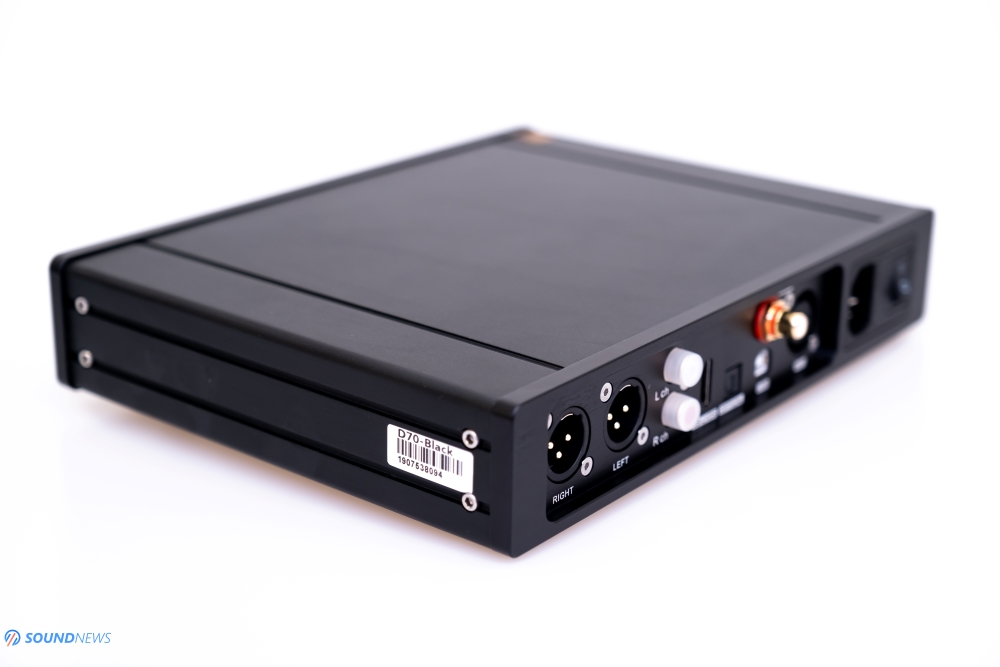
Design & Build Quality
As opposed to D50 and DX7, D70 is offered only in black. I was actually quite stunned by the clean look of D70, how nicely it is put together and how solid it feels in the hand.
Fit and finish is excellent, I think it looks really simple and will not attract a lot of attention to it. As a result, the WAF (wife-acceptance-factor) is really high. The display is dimmed by default so the cat eyes of our bellowed ones will hardly notice it.
Size wise it is basically identical to that of Benchmark DAC3, Mytek Brooklyn DAC+ or to the Denafrips Ares and has almost the same footprint with the Benchmark HPA4, I think these two look good together. Black on black is my kind of beauty.
D70 is nor too heavy or lightweight, small or huge, at 2 Kg (4.4 Lbs) and with a case that measures only 25 x 20 x 5 cm it can be easily integrated in any office or home setup.
What stood up from the moment I picked it up was the case-work, it is much thicker than I anticipated. The whole case is a milled CNC aluminum case, only the front and the back-plate were attached separately by some screws. The front panel looks sandblasted, which should resist scratches in the long run.
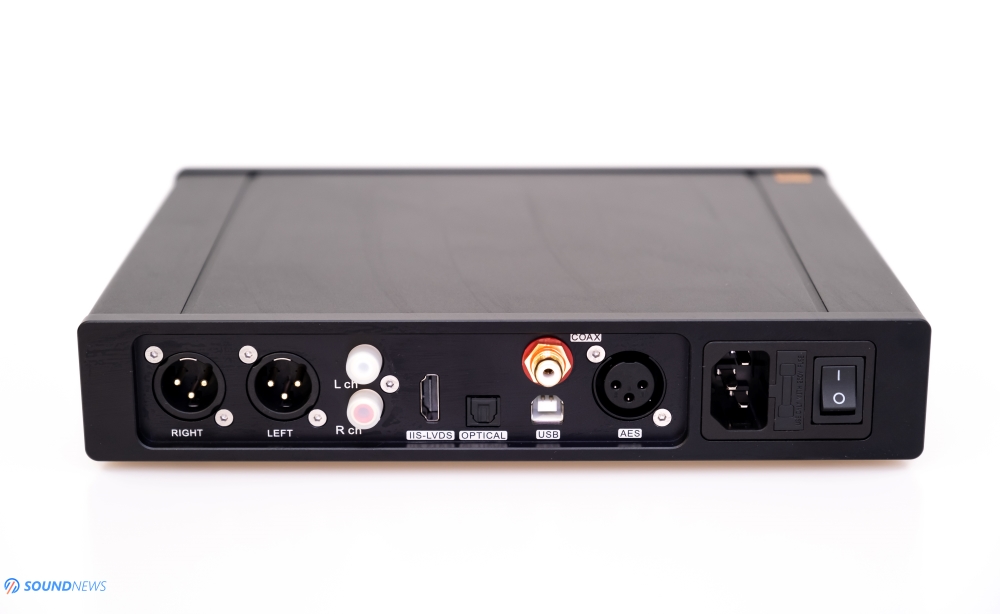
Controls & Connectivity
On the front panel a standby On/Off button can be spotted, a big and easy to read OLED screen, two volume buttons and a select button that will browse through all the digital inputs. Speaking about those, on the back D70 has an impressive number of digital inputs: the usual USB, Coaxial and Optical is the norm nowadays, AES and especially I2S (LVDS) are a rare sight and are considered extremely good digital inputs, I will be testing all those shortly.
D70 is a fully balanced DAC, so it is normally to have an XLR balanced out and a single ended RCA out.
You should know that the buttons on the front panel will control only the basic features of D70, only the remote control will unleash the full potential of D70. With it, you can select the desired analog output, they are both working together by default; however, I do recommend shutting down the output which you will not be using for a cooler case. You can select 6 digital filters that are integrated inside the DAC chips themselves, they do make a change but a really small one, most of them are playing with the sub-sonic treble area. I personally feel filter 3 sounds the most technical and musical in the same time and offers the best of both worlds.
The remote will also offer 3 brightness levels and the usual stuff like volume adjustment and selecting the digital input.
The volume control of D70 reminds me that it can also be used as a pre-amp for a power-amp or for some powered active speakers.

Tech Specs & Detailed information
First and foremost, Topping D70 is relying on the velvety sounding AKM AK4497EQ DAC chips, two of them for a 100% dual-mono balanced operation. AK4497 is part of the Verita Velvet Sound architecture of the Japanese manufacturer. Up until few months ago this was their flagship chip, dethroned only by the newest AK4499EQ.
The USB decoding chip is the famous XU208 from XMOS, together with custom drivers from Thesycon, D70 can natively decode DSD512 (basically a sample rate that is 512 times that of CD) and PCM up to 768 kHz at 32 bits.
The S/PDIF receiver chip is again a high-performance AK4118 chip, that was actually developed to work in tandem with AK4497 for the best results when Optical, Coaxial or AES digital inputs are used.
D70 uses two high-performance Femto-second crystal clocks from Accusilicon, one works at 45.1585 Mhz and one at 49.1520 Mhz for best results. Both clocks are part of the AS509 Professional Series that are offering very low phase noise, long term stability and of course low jitter.
D70 uses lots of audio grade capacitors from Nichion, few of them are Nichion Muse – highly regarded by the audio enthusiasts.
Power filtering is done by a very stable toroidal transformer, followed by few ultra low-noise power regulators to provide clean power to the sensitive analog and digital circuitry.
On the D70 official page, Topping is also offering few measurements, same can be found in the user manual. D70 is having a linear frequency response and a low harmonic distortion of -108 dB and an impressive channel cross-talk of -137 dB. The line outputs are following the international standard of 2Vmrs on RCA and 4Vrms on XLR out.

Sound Performance
Since D70 has the same depth as Benchmark HPA4 and almost the same width, I decided to use it not only with my KEF LS50W active loudspeaker system but in a headphone-based setup as well. I will not split my listening tests into how it sounded with headphones or speakers, because it sounded the same in all of those instances so I will just continue describing what I’ve heard.
If you ever tested a Benchmark AHB2 or HPA4 you probably know how transparent and colorless are both units, with them you will be listening to your source and to the speaker or headphone diaphragm, with them I am picking the sound signature of any source quite easily.
I am listening to it for about 2 weeks and it stayed powered On all this time to burn-in all those capacitors and warm-up the rest of the circuitry.
D70 was used in a balanced configuration for the best results. I first connected it to Benchmark HPA4 followed by two pairs of very sensitive IEMs and later on was used driving 2 planar-magnetic headphones.
Listening to Moonlight 3rd Movement (Presto Agitato) in Hi-Res by Yundi revealed an incredibly black and noiseless background. Even my FiiO FA7 IEMs didn’t pick the background noise of the source. There is a big empty space between those piano notes. This track moves so much air around and D70 actually captured the weight and the heavy tone of the piano, not a lot of digital sources will have a life-like piano reproduction like this one.

When I moved to big cans, but especially to very linear sounding Hifiman Arya revealed that D70 was doing a lot of justice to the resolution levels of Arya but induced just a hint of warmth and naturalness that Arya can lack at times. D70 is matching really well with linear or cold sounding equipment and adds just a little bit of character and charisma to spice-up the whole presentation.
On the wrong setup Arya will sound cold and lifeless, it can be even forward and cramped with the wrong source. D70 is brightening the day a little bit for them, it adds some midrange magic, a weightier tone, a little bit of substance and opens up the window for a wider soundstage and for a deeper sound.
Dual AKM designs always impressed me in terms of scale, however dual AK4497 in a desktop form is a first for me.
I appreciate that Topping went with an open wide and holographic experience, even crowded music like modern rock or metal can be disentangled and analyzed with ease.
Listening to Deep Purple - Lalena (Remastered, Hi-Res) everything was put in front on different layers for me to dissect. The smoky and easy-going presentation remained intact and every note was heard heavier compared to their newer records. The track still sounds old and unchanged and impressively deep. Moving on to Why Didn’t Rosemary from the same record revealed how much air D70 is capable of moving around, the bass guitar sounds especially good and really groovy. I started immediately tapping my foot as D70 is doing a lot of justice to classic rock tunes.
D70 somehow manages to show the outline and the texture of musical instruments but without over sharpening them, how for example older ESS Sabre designs are doing. I still hear people smoking, breathing and laughing in the background but without it being too distracting from the main act of music listening.

In terms of detail retrieval D70 is good, however it never drove attention to all those micro-vibrations and micro-details, it never tries to show its muscles.
For absolute levels of detail retrieval D70 is not enough, but it will show the difference between a 16bit PCM file and a 32 bit one so don’t worry too much about this.
Having an open wide kind of sound and a really good depth I can easily pick and listen individually to any musical note I want; the so-called pin-point imaging is one of its strongest points. I started listening to some local folk-rock and the jumpy performance almost thrown me out of my chair, D70 is really engaging sounding, with few particular songs I just feel the urge to move my limbs and air-guitar a song or two.
D70 is not a super-relaxing type of DAC, it is not smoothing out the dynamics and transient response but it also not a hard slamming and fatiguing type of DAC.
This is a very gentle part, balancing out the overall performance without making it too fast or too slow sounding. A hysterical sounding DAC will mess too much the slow and relaxing type of music and vice versa a slow sounding source will kill all the energy and dynamics of a fast kicking song.
I feel D70 is staying somewhere in the middle, as it is neither too fast nor too slow. On rare occasions I wanted my music slamming me harder and on other occasions to slow it down a bit. D70 can change its pace, rhythm and timing depending on the music it is playing.
In all honesty, D70 is having among the widest and deepest presentations I’ve tested in a DAC, no matter the cost. In this respect, D70 is fighting with the best I’ve tried.
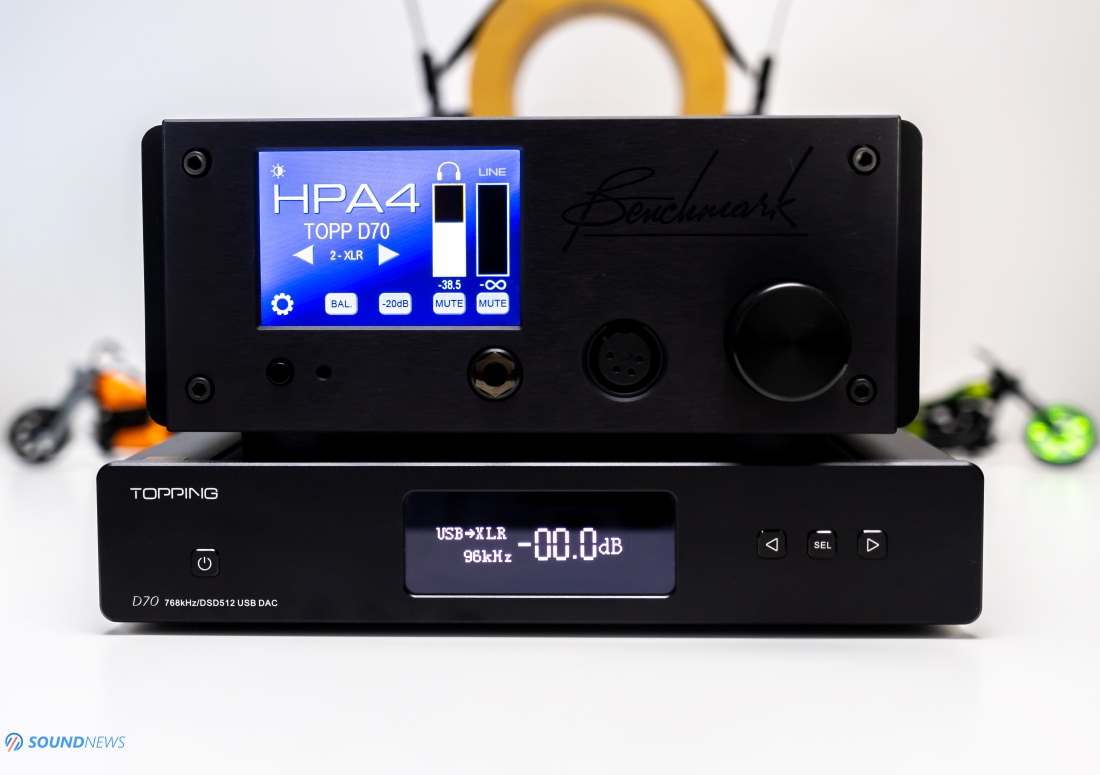
When it comes to the frequency response D70 doesn’t show deviations from linearity, it is an honest sounding DAC without rising or lowering a particular range too much.
Listening to some faster electronica tracks revealed a nice sub-bass performance. Noon by Infected Mushroom sounded very punchy, it slammed quite hard, especially with the Quad Era-1 headphones. Sub-bass notes went low but didn’t linger too much. D70 has a speedy presentation when it comes to bass, it hits fast and hard but doesn’t vibrate more than needed. Almost the same happened when I listened to Invisible Sun by The Prodigy (Keith, you are not forgotten!), at 0:37 but especially at 0:41 mark sub-bass rumbled and was felt instantly. It is deep, but controlled and detailed.
Mid-bass performance is again on a high level, deep reaching, punchy and very outlined. D70 is not overdoing it too much, you will hear it only when it is called for. All in all, there is nothing to complain about its sub or mid-bass performance.
Midrange, Ah! The magic velvety midrange. It always grabbed my attention with a slight warmish tint. D70 is impressive mostly in this region, no matter the music you will be listening to, it will always sound natural, having a very good flow. D70 is somehow bonding all the notes together and caries all those to the listener in a very non-Delta/Sigma kind of way.
On some older recordings it sounds as it might be hiding a small vacuum-tube somewhere inside, people that appreciate the soul of the recordings and their technical aspect will surely appreciate the D70 performance. All in all, D70 is having a heavier and a meatier tone than regular Delta/Sigma DACs.
For a life-like presentation was important to have a grain-free treble performance. Treble is sounding extended up to subsonic levels but without putting on the fire the upper treble. Treble is not harsh or bright sounding by any means, it is quite defined but not a lot, it has substance but doesn’t attract a lot of attention to it. You can make it even more defined and extended in the treble area by using a different digital filter, filter 5 will give you that, but it somehow shifts its performance to a colder and brighter side.

A word about digital inputs
A decided testing all the digital inputs of D70 looking for the best one.
Optical/Coaxial
When I connected D70 to the Chromecast Audio embedded into my TV via the Optical input I was actually quite surprised by the clean signal out of D70 directly to my KEF LS50W loudspeakers. There gap between optical and USB is not that big anymore, how I felt it on different digital sources. I listened even to some Hi-Res files streamed directly from Tidal Hi-Fi with great results. There were no stutters, hiccups or weird noises. Just a clean, wide spread and musical performance.
Since coaxial and optical inputs are sharing the exact same decoding chip, coaxial should really sound the same.
USB
The XMOS chip on the USB type-B input is a really nice chip, combined with two femto-second Accusilicon chips the sound was ever clearer, more detailed and really focused. There is nothing to complain about its performance via USB, connected to my desktop PC I head zero problems with it. I consider the USB inputs among the best digital inputs on this unit.
I2S (LVDS)
Luckily, I have at home a really advanced S/PDIF interface, called Matrix X-SPDIF2 and I could actually test the I2S-LVDS input via a super short HDMI 2.0 cable.
Well, how should I put it…this is the best digital input D70 is having. Forget USB, it sounded even more impressive, it actually kicked a tad harder, carried just a bit more air with every note. It sounded even livelier and life-like, the last bit of performance was squeezed from it via I2S. If you have the cash and really love your D70, you still can improve its performance.
AES
AES input sounds about on the same level with USB or lower a bit, hard to tell, it sounded less tight and focused than USB but more natural and smoother. It is a preference thing, but I liked USB more.
I would rank I2S as being the best, followed by USB, very closely by AES and then by coaxial and optical. Your mileage may vary as I am not using fancy digital cables.

Comparisons
Topping D70 ($500) VS Matrix Audio Element X ($3000)
If you are laughing, this is not a joke, since D70 can really compete with pricier units.
Both are nice quality units, Element X is wider, deeper and taller, it is much heavier as well. This does not come as a surprise since Element X besides being a DAC, it is also a balanced headphone amplifier, a digital player (via a smartphone App) and a wireless streamer with some impressive networking capabilities. It is doing a lot more and as such is costing a lot more. Element X is offering 4.4 Vrms on the balanced output, D70 is offering 4 Vrms. Benchmark HPA4 has 2 XLR inputs and the power of any input can be increased or decreased individually (Love this feature a lot!) so both were volume matched in no time, with a press on the HPA4 touch-screen I would choose one or another. To measure and perfectly match both I also needed a MiniDSP EARS system.
If you are newcomer around here, I will just remind you that Element X for me is among the best sounding ESS Sabre-based DAC I had the pleasure of listening, it is quite a different animal compared to other ESS Sabre designs, it is technical and musical in the same time.
I was really pleased to hear that Element X is not losing to D70 in terms of flow and musicality and both were literally on the same page and very close to each other.
Since D70 is impressive in terms of soundstage size, I was a bit scared it would dethrone the Element X but that was not the case. Both were shoulder to shoulder in the scale department, they sounded big and bold. Pin point imaging was better on Element X since it will pick-up smaller nuances easier, it will also deliver a better detail retrieval but D70 was never too far behind. Funny thing is that D70 is exactly 6 times cheaper, yet on some aspects both sounded very close to each other.
On faster paced music Element X will be always the winner with its hard-hitting nature and great slam, it sounds too engaging at times. D70 is somewhat calmer and smoother that worked better with slower paced music.
Switching to Pink Floyd, Topping D70 would always grab me emotionally and would whisper to me: look at how well I am playing this guitar, look at this deep reaching voice, look how smooth everything sounds. Element X was not as catchy sounding, it was more linear and maybe too serious at times. For this type of music, I think D70 is more appropriate.
Detail retrieval is better on Element X, there is no contest about that, it will show more nuance, more treble information, an additional layer in the bass department, basically more of everything.

Conclusion
There is no denying that Topping D70 is a nice looking, built to last and impressive sounding DAC. This is my first contact with Topping but I am hopping it will not be my last. I liked their technical approach by putting measurements and by staying aside from audiophile marketing talk.
At just $500 I consider it a really nice unit that can compete with much pricier designs and I have no complaints in terms of its sonic performance.
PROS:
- Built to last and beautifully CNC-ed case, has a simple design as well
- Widest selection of digital inputs! Love the I2S and AES inputs
- The remote control is a God-sent for loudspeaker listeners
- Mostly natural, liquid and smooth sounding with a great tonal balance
- Has an open wide soundstage and very good depth
- Precise pin-point imaging and layering
- Among the most enveloping and relaxing sound performance I experienced of late
- A silent and black background
- Impressive value
- Not the fastest or punchiest sound
- DACs: Topping D70, Matrix Audio Element X, Burson Swing
- Headphone amps/Preamps: Benchmark HPA4, Erzetich Bacillus, Headamp Gilmore Lite Mk2
- IEMs: FiiO FA7, IKKO OH1
- Full-sized headphones: Hifiman Arya, Quad ERA-1, Sennheiser HD660S, OLLO Audio S4
- Loudspeakers: KEF LS50W
- Interconnects: QED Reference XLR (x2), Aune AL3 XLR
- Power Cables: Isotek EVO3 Premier (x2)
- Balanced Power Conditioners: PLiXiR Elite BAC400, KECES BP-600

wizzman121
Great review. I am curious why your D70 screen is so much brighter and whiter than mine. Even on the brightest setting mine is very dull and nowhere close to white.
Interceptor69
I have this DAC >Drop THX AAA 789. I have read the various inputs can decode varying bit rates. Which input provides the greatest amount of information output to the amp? I've noticed optical limits to 192 kHz and USB will jump to 384 kHz. My PC doesn't have a HDMI output that actually outputs a signal ( that I can determine ) so I am limited to those 2 inputs. They both sound great but I'd like to get the most out of this combo I can.
DarKu
Reviewer at Soundnews
Pros: Great build-quality with impressive tolerance numbers
A wide selection of digital inputs and analog outputs
The remote control is a nice addition for loudspeaker listeners
Great tonal balanced across the frequency response
Has an impressive kick and impact leading to a great transient response
Clear leading edges, pin-point imaging and layering
The headphone amplifier section was not an afterthought and properly drives dynamic and planar-magnetic headphones
Full-MQA decoder inside is a great addition
Crazy value at this price point
A wide selection of digital inputs and analog outputs
The remote control is a nice addition for loudspeaker listeners
Great tonal balanced across the frequency response
Has an impressive kick and impact leading to a great transient response
Clear leading edges, pin-point imaging and layering
The headphone amplifier section was not an afterthought and properly drives dynamic and planar-magnetic headphones
Full-MQA decoder inside is a great addition
Crazy value at this price point
Cons: Not the most relaxed sound
Faint hiss (at more than half volume) on sensitive IEMs
Lacks a gain control
Faint hiss (at more than half volume) on sensitive IEMs
Lacks a gain control
Apos Audio kindly provided the review sample to me and introduced to the SMSL family of products. This is our first contact with SMSL but it doesn’t mean we didn’t know about them. What is kind of amazing is that SMLS Audio just hit 10 years on the market but their presence on the West market is quite fresh, they seen a boom and a high interest once they started working with Drop (formerly Massdrop) and released affordable but good sounding equipment. SMSL Audio is mostly specialized in the desktop-fi area (portable and desktop DACs, headphone amps and combos) but they offer few integrated and power amps for loudspeaker aficionados.

Meet the Family
The coolest product line in the SMSL family to us is their M line of desktop DACs. I’m quite sure you’ve seen at least once their latest designs with an elongated and colorful body. The super tiny and bus powered M100 DAC to this day is praised as a very good entry-level DAC in the sub $100 category. M300 DAC added balanced outputs on the back and a much higher-end AKM4497 DAC chip was used for a better performance.
M500 that we are testing today is their top of the line DAC, SMSL added a powerful headphone section in case you’ll want to use it in front of your PC.
Unboxing & Package Contents
Unboxing experience was excellent for me! It came double-boxed for extra care; the product box is fairly small and once I opened it up, I was pleased to find lots of foam for additional protection. Inside it you’ll find: the M500 unit, a nice looking and SMSL branded remote control, a USB type-B cable, a power cable, a warranty card and a user manual. That is basically everything you need to start your listening session.

Design & Build Quality
I was actually stunned by the size of M500, it looks big in pictures but in reality, it is really small. At only 8.5 x 8.8 x 19.7 cm and weighting only 0.91 Kg (that is with its internal power supply and thick aluminum body) this is basically the smallest DAC and headphone amp combo with balanced outputs on the back that carries a desktop class DAC chip inside.
I’m actually digging its looks and taking into consideration that it has a dual PCB stacked on each other, its design makes a lot of sense.
The entire body is made out of thick anodized aluminum, I have the silver version, there is also a black and a red option if you would like to add a bit of color. The front panel is really thick, at about 8 mm thickness inserting heavy duty headphone plugs will not move the unit from the table. Underneath it 4 rubber feet will make sure it will not move around when changing volume settings or making adjustments in the menu.
Controls & Connectivity
On the front panel there is a very easy to read and a really bright LCD screen provided by LG. At only 2.2” it doesn’t attract a lot of attention and I like that it has 9 display brightness modes. I am often listening to music late night and don’t like to be bothered by lights.
On the front you have just a single ¼” (6.35mm) headphone jack and a small volume wheel that also works as a stand-by button, a long press on it will put the unit in stand-by mode.
The back-panel looks stuffed with lots of inputs and outputs: you have one coaxial input, two optical inputs (I used those with a TV and with a PS4 PRO) and an MQA-enabled USB input. It has single ended and balanced outputs on the back via RCA and XLR. I’m glad M500 is not bus-powered, it uses 2 pole AC cable, so I am pretty sure it will have better dynamic swings compared to M100 and M300.

Under the hood of M500
The more I delve deeper and research about it, the more I am impressed and I am questioning myself how did they put so many tech inside such a small body.
First of all, M500 uses the top-of-the-line and desktop class ES9038 PRO DAC chip, it is among the best commercial made DAC chip on the market. To let the DAC section breathe and work at normal parameters, SMSL incorporated the ES9311 high-performance power supply voltage regulators that actually were developed to work in tandem with ES9038 PRO to squeeze the best of it. It is a low-noise, low-dropout regulator specifically designed for high-performance audio systems.
I consider its USB input as being its best sounding digital input, adopting the newest XMOS XU-216 the M500 never lost a beat or its connection and it sounds absolutely great on the USB input. This particular USB receiver supports PCM material up to 32 bit / 768 kHz and can natively decode DSD up to DSD512, via DoP it will do only DSD64, even coaxial and optical inputs will play DSD64 files.

What is kind of unique to M500, especially at the price of $399 is the inclusion of a full-MQA decoder, I am not talking about an MQA Renderer like Audioquest implemented in their Dragonfly Red and Cobalt units, I am talking about a full blown MQA Decoder.
Its internal headphone amp circuit was developed using discrete components, I was assured it has enough current even for power hungry headphones so the damping factor should be always high. In terms of power M500 will deliver up to 570mW into 32 Ohms and 65mW into 300 Ohm loads.
M500 also has an independent headphone and preamp volume control, you can use one or another.
Last but not least SMSL developed its own ultra-low noise power supply encapsulated inside a metal shell, it is basically shielded away from analog circuitry for the best results.
SMSL actually provided some brief measurements, as you can see from the graph the total harmonic distortion to noise ratio (THD+N) is sitting just at 0.00014% and SINAD approaches the 117 dB mark, those are quite impressive measurements especially at this body size and price point.

Menu Options
The LCD screen will show important information such as your selected input and output, volume level, bitrate and what kind of material is being played (PCM, DSD or MQA).
Gently pushing on the volume wheel enters the setup menu where additional setting can be accessed such as:
- You can select 4 digital inputs: USB type B, Optical 1 and 2 and Coaxial. I used USB the most, followed by both optical inputs that worked excellent with a game console and with a TV.
- Select the output: Line-out or the headphone out
- Select your desired digital filters that are built-in directly in the ESS DAC chip. I personally like the Fast Minimum and Fast Linear (default one), they do make a difference but a really faint one.
- Dim the LCD screen, it has 9 brightness levels
- Check the SW and HW version and the manufacturing date, this particular unit was made on 27.07.2019
Let’s get to the most interesting part of the review, shall we?

Sound Performance
I. Using it as a DAC and headphone amp combo.
1) Using M500 with sensitive IEMs
There is just a single feature that I wish was implemented in the M500 and that is the gain control. Sadly, M500 doesn’t have a gain switch or a digital implementation of it. On the headphone out M500 has 40 volume levels controlled by a stepped volume wheel.
The volume increases exponentially, meaning it starts rising really fast somewhere above the 14-volume position. With sensitive IEMs like Simgot EN700 Pro, IKKO OH1 or FiiO FA7 I couldn’t go higher than 15 volume, for IEM users it has power to spare, lots of grunt and an impressive diaphragm control.
There were only two things that I didn’t particularly enjoy when I paired it with IEMs: there were times when I would like to have my volume level somewhere between the 15 and 14 position and to do that I need to change the volume setting in the OS of my PC, otherwise it would sound louder at 15 and lower than my listening level at 14. Second thing is that above 20 volume position and only with sensitive IEMs there is a little bit of residual noise, a faint hum can be heard when pausing the music. If I do that on the actual volume level I listen to music, then the noise is gone and cannot be spotted. There are few background noise junkies out there that are very sensitive to hum, in this regard M500 is not the quietest unit I tested. Its noise is basically on the same level with the $500 Headamp Gilmore Lite Mk2 and with the $500 Erzetich Bacillus headphone amps, both of those units do not have an internal DAC section, so in the end I think M500 does a pretty good job with IEMs, just don’t expect the cleanest background and you will be fine.
With all the music I listened to, but especially with faster paced, I had the impression that M500 has a very good grip over the headphone drivers and has little to no coloration in terms of frequency response. In the first 24 hours I noticed that it sounded a bit on brighter side and the midrange but especial vocal performance took a hit, it is now past 48 hours and doesn’t sound as such anymore. M500 has more than enough power for any multi-driver IEM and a result it shown me that it has a good slam, great energetic bass and can be even gentle with the right music. Past 48 hours of burn-in I am not detecting any changes and the overall impression it left on me is that it sounds clean, quite spread out around the listener, sounds linear with just a little of extra topping in the bass and treble area.

2) Using M500 with desktop headphones
I first decided to listen to the fun Quad Era-1 planar-magnetic headphone. Ok, now we’re talking and what a change it is!
Era-1 is a difficult load for portable devices and even for some desktop units, M500 drives them fully at their full potential. Era-1 has a sensitivity of 94dB per 1mW of power and can handle a maximum input of 100mW. With M500 I can’t pass the 28-volume position (out of max 40), my comfortable listening level is at 25 and I feel I am not sacrificing anything with them.
I can definitely say its internal headphone amplifier was not put there just for convenience; it can really drive some serious headphones.
When I moved to Sennheiser HD660s it was a child’s play for M500, my volume level lowered to 23 and I couldn’t go louder past 26 position. Sennheiser HD6XX family of headphones will be fully driven and I wouldn’t worry about that too much.
Moving on to the hardest to drive headphone from my stable - Hifiman Arya, with its lower sensitivity and higher impedance the volume jumped to 30 for a normal listening session and I could go maximum to 34 for some really loud tunes.
Even with Hifiman Arya I’ve heard great dynamic swings, an impressive kick into eardrums and a high fun factor. It surprised me since there aren’t a lot of headphone amps (mostly single ended ones) that can properly drive the Hifiman Arya. M500 shown great control over the headphone drivers, it actually sounds quite fast, articulate, mean and imposing with the right set of cans.
I managed to connect M500 to Benchmark HPA4 via a balanced interconnect cable so I could compare the headphone amp section of both units and properly evaluate the headphone amp section of M500.
In my opinion there isn’t a better headphone amp right now on the market like the amazing Benchmark HPA4 and with it I can easily pick up the sound signature of any audio source and I can easily compare it to other headphone amps.
Compared to HPA4, M500 headphone amp section is fairly neutral with just a small emphasis in the upper treble area and in the mid-bass section. It sounds V-shaped a bit, I presume there is a boost of about 2 to 3 db in those areas just to make it feel airier and more vibrant somehow. M500 looses a bit of holography and spatial cues, but that is understandable given the much higher power reserve HPA4 is having.
Nonetheless, the power reserve of M500 was quite obvious with the Quad Era-1 and with Sennheiser HD660s and it actually never transformed those headphones into something else. M500 is quite honest sounding, without leaving a big stain on the musical performance.
When I compared the M500 with Erzetich Bacillus the difference between those units became much smaller as it was with Benchmark HPA4. By comparison Bacillus sounded meatier and even more dynamic, but it lost refinement, easiness and sparkle up top that M500 is offering in return. I think both units are fine, M500 is just closer to reality and linearity, whereas Bacillus is colored with a strong fun factor attached to it.

II. Using M500 as a DAC only in a speaker-based system.
My active KEF LS50W loudspeakers are already veterans as every DAC that goes through my hands will be tested with those speakers as well. I like everything about LS50W, except for their mediocre internal DAC section that I wish was better.
With SMSL M500 added to the chain I am feeling a big family resemblance with KECES S3 and even with my Matrix Audio Element X. M500 borrows a lot of good parts from those units and adds just a bit of its own character into the mix. My reference unit at the moment is Element X and I am not kidding when I say that M500 sounds like a baby-Element X. They even have the same color scheme.
There were already many times when the internal DAC of LS50W was outperformed by external DAC units and M500 did that as well and quite easily I might add.
This past few months some of my favorite rock and metal bands released new albums and I had a lot to catch up. Lacuna Coil just released 3 new songs, Tool, Slipknot and Korn all released new albums, since I know them pretty well already, I decided that M500 needs to listen (or should I say play) them as well.
What I really like with almost all ESS Sabre designs, it’s their ability to have a faster pace, to kick harder and in general they have greater dynamics no matter the song. M500 is exactly like that and to some degree it even outperforms units like Topping D70 and other AKM based DACs. M500 was made for faster, engaging music. Sure, it can play slow music as well, but with its faster decay and little to no smoothness it might impact your listening pleasure.
In terms of frequency response, I still stand by the impression that M500 has a great sub-bass and mid-bass performance. It is just a little overdone to infuse a little bit of fun and character. Bass lovers will be impressed by the M500 ability to bring the bass fast in the room, to hit you hard in the chest and run away in an instant.
I consider its midrange performance linear, never overdone or overshadowed, M500 has a perfect dose of naturalness and technical prowess. Vocal performance is great once it hits the 48 hour burn-in time. Voices have a great sustain and are sounding deep. What I really like is that all the acoustic instruments are quite outlined and detailed. The blurriness is never present and M500 is mostly leaning towards a sharp and detailed image.
Treble is probably among the best aspects of it, it sounded a bit hot in the first two days of my evaluation, but it was tamed in the following days and it is much more approachable. It is also impressively extended in the sub-sonic area without having a natural roll-off. Past 16 kHz and M500 still shows traces of micro-information, I consider it having a very good treble response. When I am listening to bad mastered music the treble will not be rendered as a huge treble blob or like a harsh mess, there is some void space between all those sound and M500 is like decompressing the treble and placing everything at its right place in the mix.

III. MQA Experience
I’ve come back to PC listening since the full MQA renderer will work only on its USB input. I fired some Tidal Masters and on the M500 screen the MQA logo appeared. I played a bit with the Tidal settings just to be sure it has a full MQA Rendered inside. If I enable the software decoding of MQA, then M500 will see those files as simple PCM lossless files, if I disable the software decoding and enable the hardware decoding on M500 it switches automatically to MQA mode. So, yes, it has a full MQA decoder inside and that can be spotted immediately after pressing play. Besides hearing a little bit more of everything and rendering additional details and few additional notes, it somehow sounds more natural this way, smoother and not as mean or aggressive. I am also seeing a clearer picture and more spatial cues around me. Soundstage expanded and the notes are flying further away. If you want the best experience streaming can offer, M500 will got your covered with a full MQA experience.
In the living room just make sure to use some Hi-Res or DSD material and those two will surpass even the MQA experience.
IV. Comparisons
Burson Playmate ($399) VS SMSL M500 ($399)
Both units are at the same price, both are made from anodized aluminum, but the M500 uses thicker plates and is better finished. Playmate looks a bit rough around the edges and not as refined.
In terms of specs Playmate uses the mobile version of ES9038Q2M, M500 uses the more expensive and higher spec PRO version instead. Playmate also lacks any balanced outputs, M500 will give you one and it is a fully balanced one. Display quality is much better on M500, with better visibility, resolution, not to mention colors. M500 has two additional digital inputs and an extra analog output.
Playmate standard doesn’t come with a remote, you will need to pay extra for it, M500 has it and it is really convenient especially in the living room.
M500 is also having a full-MQA decoder inside and Playmate lacks any of that.
In terms of sound performance, the Playmate sounds fuller and warmer, even darker at times with a clear roll-off. Playmate sounds rounded and is cutting some of the sub-bass and upper-treble information. It is not super revealing or detailed, it just sounds fun and dynamic. It cares more about the musical experience more than anything, you don’t want analyzing your music with it.
M500 sound like a clear step-up, more detailed, more spread-out, more micro-information, without any roll-offs in the bass or treble area. It has basically more of everything, not to mention a better XMOS chip on the USB and a full blown MQA decoder. It is better on every front and as such it sounds better.
The only thing I consider Playmate does a little better is the headphone amp section, but only with hard to drive headphones. It has higher power on tap and will drive Hifiman Arya with even greater authority and slam. When it comes to sensitive IEMs, Playmate has more hum and background noise, even with volume at zero position. M500 has a bit of hum only at half volume and upwards, so in terms of IEM listening M500 wins another round.

Conclusion
This is my first foray into the SMSL Audio land and I’m glad it changed drastically my perceptions about affordable balanced all-in-one units. Build quality wise there is nothing to complain, its uses thick aluminum plates, its nicely build, it’s sturdy and looks unique, if you see an elongated body it must be surely a SMSL Audio device.
As a DAC and headphone amp combo it is a dream come true, if you are a streaming head, even better! Tidal Masters sounded amazing and any faults I’ve heard on usual 16-bit tracks were cured with Hi-Res, DSD or MQA content.
As a DAC only device, you have everything you need: an RCA and XLR output and it is volume controllable, meaning it can also work as a digital preamp and the remote control at your fingertips is a very nice addition too.
A full MQA decoder at less than half a grand is something new and slowly but surely SMSL Audio is paving its way in the great sounding equipment category at very affordable prices.
SMSL M500 is unquestionable an excellent performing unit in a speaker based or in a headphone-based setup and only at $399 you cannot go wrong with it. SMSL M500 can be purchased in the Apos Audio store following this link
PROS:
- Great build-quality with impressive tolerance numbers
- A wide selection of digital inputs and analog outputs
- The remote control is a nice addition for loudspeaker listeners
- Great tonal balanced across the frequency response
- Has an impressive kick and impact leading to a great transient response
- Clear leading edges, pin-point imaging and layering
- The headphone amplifier section was not an afterthought and properly drives dynamic and planar-magnetic headphones
- Full-MQA decoder inside is a great addition
- Crazy value at this price point
- Not the most relaxed sound
- Faint hiss (at more than half volume) on sensitive IEMs
- Lacks a gain control
- DACs: SMSL M500, Burson Playmate, Keces S3, Matrix Audio Element X
- Headphone amps: Benchmark HPA4, Erzetich Bacillus, Headamp Gilmore Lite Mk2
- IEMs: FiiO FA7, IKKO OH1, Simgot EN700 Pro
- Full-sized headphones: Hifiman Arya, Quad ERA-1, Sennheiser HD660S, OLLO Audio S4
- Loudspeakers: KEF LS50W
- Interconnects: QED Reference XLR (x2), Aune AL3 XLR
- Power Cables: Isotek EVO3 Premier (x2)
- Balanced Power Conditioners: PLiXiR Elite BAC400, KECES BP-600

Overall score 91/100
DarKu
Hi mate, thank a lot! Appreciate it. I visually don't like their older designs, but their newest M line is quite interesting and good sounding.
Light - Man
Indeed, thanks Bro for some very insightful and useful info!
R
Rabidrat50
Hi really thorough review, I currently have a SMSL SAP II pro Headphone amp & am thinking of getting a SMSL M100 DAC (or a Toping D30 Dac) to connect to my iPad via OTG USB adapter. Do you think that’s a good enough combo with my Sennheiser HD660S or would it be better to wait & save up for the M500 & sell my Sap II pro ?
DarKu
Reviewer at Soundnews
Pros: Amazing build quality, hand-built with lots of care for the environment
Great tonal balance! Almost flat frequency response
Good speed, impact and slam
A high level of detail retrieval
Good transparency, low distortion levels
A sharp outline of the notes, good texture as well
A very attractive price point, Recommended!
Great tonal balance! Almost flat frequency response
Good speed, impact and slam
A high level of detail retrieval
Good transparency, low distortion levels
A sharp outline of the notes, good texture as well
A very attractive price point, Recommended!
Cons: Up-front sounding
There is a dip at 9 kHz but at a short frequency range
There is a dip at 9 kHz but at a short frequency range
Researching headphone manufacturers from Europe I stumbled upon OLLO Audio, a fresh Slovenian company that is making hand-made headphones. As of right now they have only two dynamic driver models: HPA S4 (S4 from now on) – the open back one and HPA S4R (S4R from now on) - the same headphone but with a closed-back design and if you would like to have a one-of-a-kind S4R, OLLO can put a custom laser-engraved logo on them.
My curiosity levels, as usual skyrocketed, I told myself I need to hear those. One month later and I had the open-back S4 on my desk.
I am quite impressed by the Slovenian tinkering skills, I already made a review for a boutique headphone amp manufacturer from the same country called Erzetich Audio and I already know that music is somehow passing though their veins, this is surely not a coincidence.
OLLO Audio is describing their S4 and S4R as studio monitoring headphones that should have a linear performance from the lowest bass to the upper treble and is ensuring that no DSP or EQ corrections are needed when listening to them. I will of course test all those claims, will measure them myself and will compare them to other candidates.

Unboxing Experience
OLLO S4 came in a small card-board box, upon opening the box a fresh smell of wood and paper hit me straight away. It was clear to me that OLLO is using only environmentally-friendly materials. The box is free of any styrofoam or any type of plastics, S4 came wrapped in a wide sheet of paper, the cable was wrapped in paper as well, you are greeted with a nice message from the company.
What was really unexpected is that every single pair of S4 or S4R is coming with its own measurement chart, even very expensive headphones nowadays do not include measurements in the box and that is sad. Way to go OLLO, I really like your approach!

Build Quality and appearance
Design wise I find them a little bit unusual and they will surely stand out from the crowd. I find them on the heavier side since the ear-cups are entirely made from thick walnut wood. The headphone structure is made out of stainless steel and the headband is made our faux-leather. Their adjusting mechanism is exactly like that of Meze 99 Classics and Empyrean and this kind of system is the easiest to use. Just put them on your head and it will automatically adjust to your head size. The head-pressure is a bit higher than normal, as a comparison think of fresh out-of-the-box Sennheiser HD650 or HD660S, well S4 is almost like that, but clamps your heard just a little bit more.
The ear-pads are made out of faux-leather as well with a red colored acoustic foam that was put there to absorb excessive treble energy.
The ear cups are just moderately big, so S4 and S4R can even be used as a portable headphone or traveling around since it is not that big or hard to drive.
The exact ear-cup diameter is 90mm, inside them a 50mm dynamic driver is mounted by hand that was tuned for a wide frequency range of 20 Hz to 22 kHz with a flat response design, will see about that really soon.
I have normal sized ears and yet for me S4 can be barely considered over-ear since there is close to no space inside the cup. Folks with rabbit sized ears could have a problem with them as they might transform into On-Ear headphones, add a higher clamping force and not a single carrot can save your listening session.
S4 is of course using a detachable cable that looks very DIY to me (in a good way), to the ear-cups it will attach using 2.5mm plugs and it is terminated with a 3.5mm jack, inside the package there is also a 3.5mm (1/8”) to 6.35mm (1/4”) adapter. The cable is free of any microphonics and has a sturdy mesh on the outside that should resist few good years.
In terms of build quality S4 is just screaming high-quality, as every single piece of it is made out of stainless steel, walnut wood and faux-leather and the best part is that every single part of S4 is replaceable with home tools. When I am holing S4 in my hands I feel them really sturdy, think Beyerdynamic sturdy, I know dropping them occasionally should not damage anything inside since I already stepped on the cable and the headphone flew and hit the floor pretty hard – they worked flawlessly after this incident, nonetheless kids please don’t try that at home.
There is also a very nice faux-leather pouch, carrying them to work and back should not be a problem, with or without the pouch S4 is made to last a life-time and I already feel the love and soul OLLO Audio put into making these.
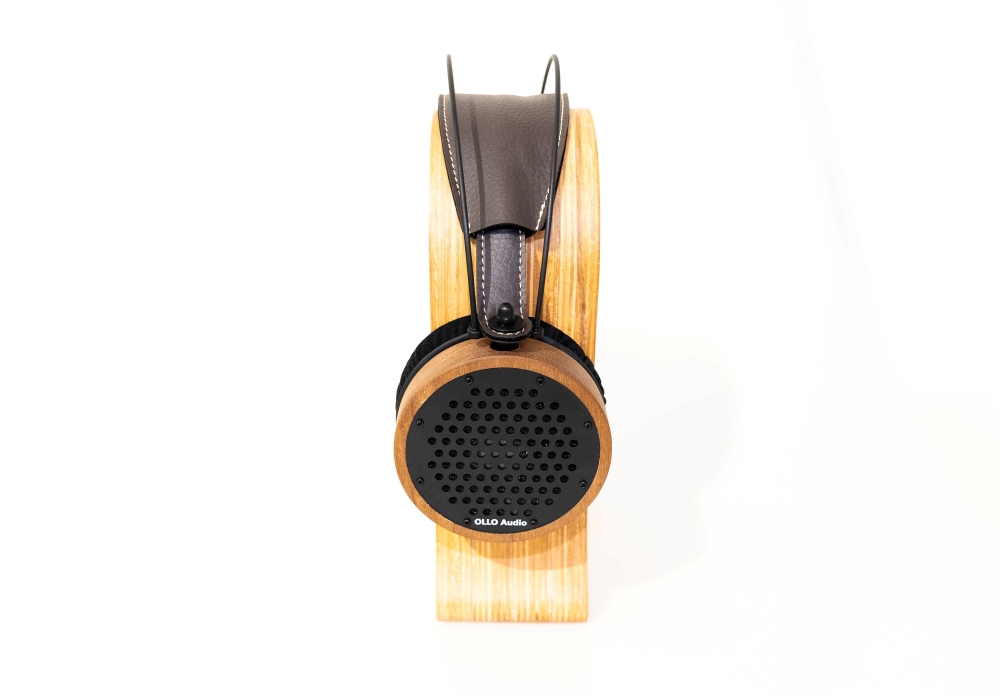
Technology Inside OLLO S4
Creating S4 and S4R OLLO Audio used matched pairs of 50mm dynamic drivers. The impedance is a low 32 Ohm, but no sensitivity numbers were given. From my own experience S4 are not that easy to drive and definitely needs a bit more power than the 32 Ohm Meze 99 Classics or the 32 Ohm Sennheiser Momentum 2.0 Over-ear. Power requirements are about 4 db lower than the Sennheiser HD660S, doing my math I presume a sensitivity of around ~99 to 100 dB per 1mW of power, it means it can be driver by portable sources as well.
I really like that OLLO choose this 100% symmetrical design, any ear-cup you want can be your left or right earcup, the only L and R markings are on the cable itself. The same symmetrical design approach I’ve seen on the full-sized Meze headphones, I personally dig it.
I think it is time to have a long listening session.

Sound Performance
I. The Good
To fill some of my void I listened to Staid – The Singles, the last four live tracks from the recording are special to me and a very good example of how a live recording should sound.
From the first notes of Everything Changes I knew I am listening to an airy presentation with a good layering. I am impressed by the very clear cymbals, by the hit of the drum sticks and by the voice that flew far away fading just at the right time. I really like that nothing from the mix is fighting for the prime-time, nothing particularly stands from the crowd, yet everything is at its place never outdone or overshadowed. Overall, HPA S4 sounded transparent on this track without a hint of veil or muddiness that is present on the Momentum M2.0 and even on Meze 99 Classics that costs a little bit more.
Switching the pace to a faster S.O.A.D – Toxicity I was pleased to find a really good timing of the driver. The “mashing effect” and an unpleasant resonance of the Momemtum M2.0 on faster music is nowhere to be found, S4 has speedy transients and overall quite good information retrieval.
The more I listen to acoustic music on the S4 the more I realize they have just a small emphasis on the upper bass and over the midrange area as more often I feel this slight warmish tint with an uplifting musical performance.
OLLO Audio is supplying a frequency measurement but is applying a 1⁄6 smoothing to the chart. I on the other hand I measured their raw performance, their waterfall and later on I applied a 1⁄12 smoothing that I feel is representing their true nature.

Measurements
I used a Matrix Audio Element X as the source and Bechmark HPA4 as amplification, MiniDSP E.A.R.S as the measurement rig for the OLLO S4.
I used the headphone compensation for flat EQ (HEQ) for this particular EARS serial number, I ran multiple measurements tests and here are my final results. The first chart is the RAW measurement.
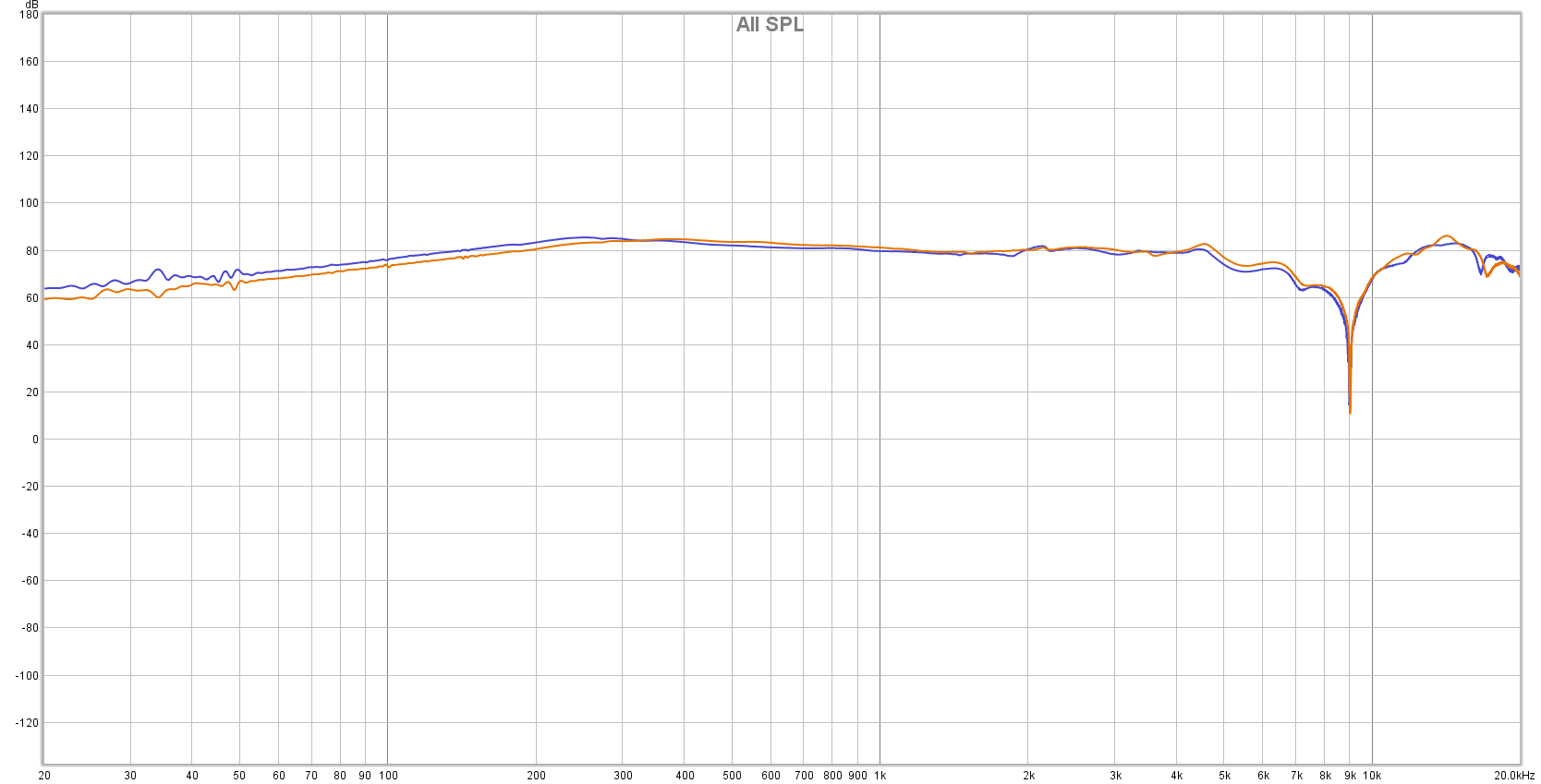
There is a very small deviation of about 1 to 2 dB between the drivers up to 200Hz, that is more than OK, all-in-all the right and left driver is matched and even on the treble area the matching is quite impressive. As I presumed the upper-bass and the midrange is slightly boosted for this natural and life-like presentation. Our own brain is boosting the midrange so we can hear it clearly, so I think OLLO S4 are quite flat with a small drop in the sub-bass area and a very short but nasty drop at 9 kHz.

Applying a 1⁄12 smoothing is looking very similar with the measurements of the OLLO Audio and if I am applying a 1⁄6 smoothing, they both look identical. I don’t know what OLLO used but I presume an MiniDSP EARS measuring rig as well, they just look impressively close to each other.
Waterfall plot shows a longer decay of the sub and mid-bass, for a dynamic driver that is normal behavior, closed-back dynamic designs are looking much worse in this department. As it can be seen the biggest emphasis is in the midrange department that will infuse just a little bit of joy and naturalness while listening to music. Of course, the 9kHz dip is also visible, a very short 10dB deviation in terms of frequency range.
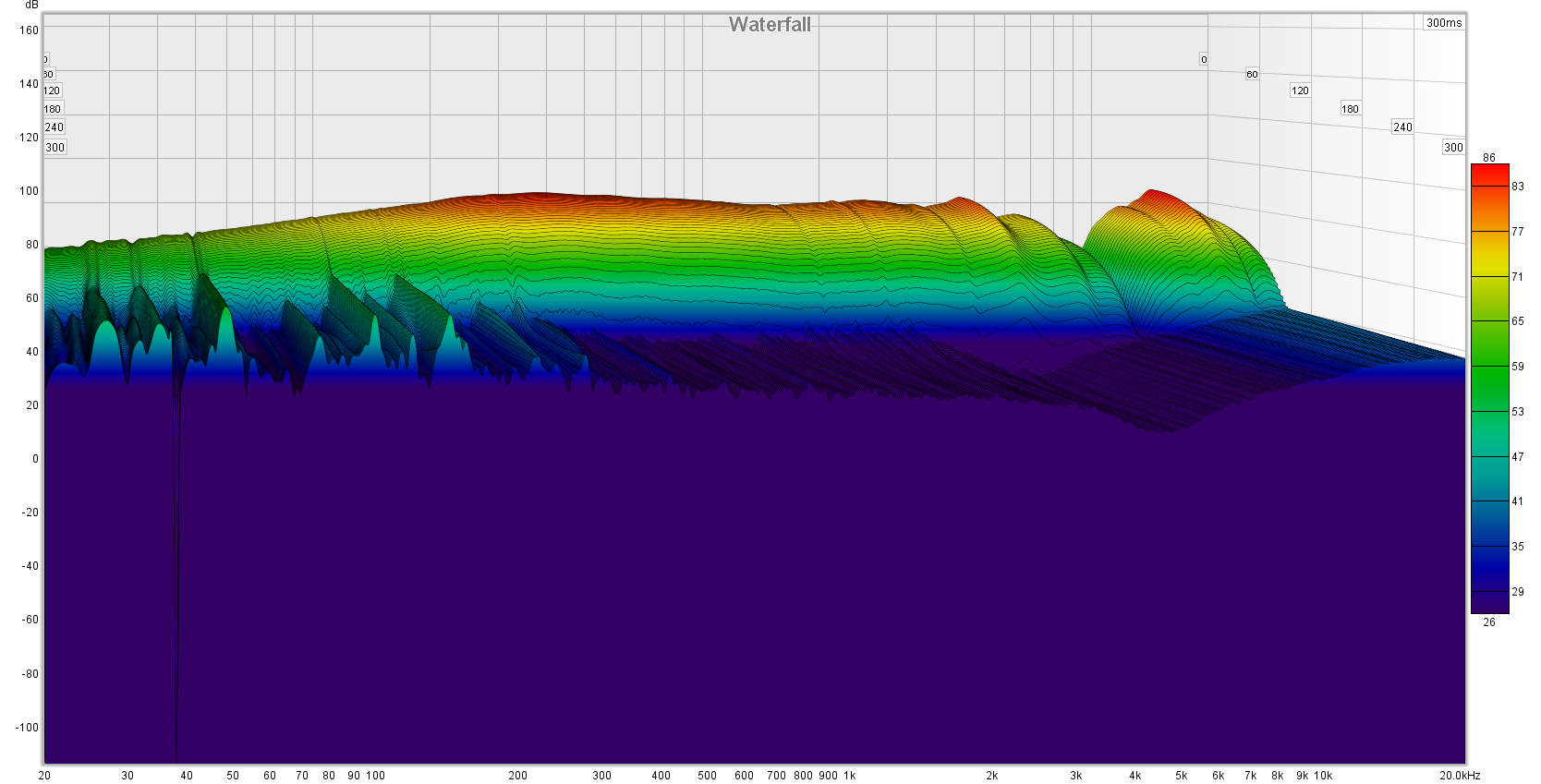
All in all, OLLO S4 are measuring much better than my own Sennheiser Momentum 2.0 and Meze 99 Classics and about on the same level with $500 Sennheiser HD660S. I think they are already showing great potential of how they might sound. Measurements can’t really tell how clean, detailed, transparent or how wide they might sound, so from this point on my subjective opinions will follow.
S4 have a seductive and inviting character, somehow calling for another track. Musical sounding some might say, as a result S4 can be listened for a very long time without listening fatigue.
As another result, dryness is never present, S4 choose to be full sounding with some meat to the bone. Listening to simple orchestral or acoustic music with lots of musical instruments around me it is clear as the blue sky that S4 was just made for this kind of music. Everything sounds clear, very outlined, having a sharp texture. The voice in the background sounds really smooth. Even Jazz and classical is a delight on S4. If acoustic, classic, jazz or folk is your thing then S4 should be a good musical companion.

II. The Bad
S4 have a pretty good left to right separation but I don’t consider them really open-wide sounding. Soundstage size is almost on the same level with HD600/650/660S family of headphones and will not Wow you with out-of-your-head experiences. S4 has a small to medium size soundstage and on some aggressive rock can be even up-front sounding. Some might like this kind of performance, some might not.
Depth performance is directly tied to the soundstage and airiness, so again depth is pretty good but it isn’t impressively deep reaching and the notes are decaying sometimes faster than how I’d want to.
Mid-bass is impressively deep, layered, sounds pretty clear too but the sub-bass area is just moderately good. This is really normal behavior for open-back dynamic driver headphones, not a single one is offering a better sub-bass performance. Anyway, it should be mentioned, the 20 Hz hits on The Prodigy – Invisible Sun are not tickling my ears like how much more expensive Sennheiser HD820 or Hifiman Arya are doing. I hear a weaker energy in this area and a weaker slam as well.
Although there is just a very short dip at 9 kHz – the high treble region, some tracks that are emphasizing exactly this area will not sound as impressive and as biting, sharp or outlined. It is like a tiny portion of your treble energy is missing. I am air guitaring around and I am expecting those triangles, cymbals, hi-hats and tambourines to hit me with layers of information but that is not really happening. Again, this happens only on some tracks and it was done for a relaxed music listening.

III. The Great!
Oh man, people know that at around $500 is hard dethroning the legendary Sennheiser HD600/650/660S, as anybody who is asking me for a musical headphone in that price range more often exactly those headphones will be my recommendation.
However, I will add another headphone to that list as S4 is having some additional traits that HD6xx is just not doing as good.
First of all are the leading-edges of the notes, the outline of every note. On Sennheisers you hear them but not impressively clean or outlined, a little bit fuzzy somehow. S4 is having those clearer, more outlined, sharper start and end of a musical note if you will. As a result, the overall presentation is a bit clearer on OLLO S4, sounds are sharper and every note is really more outlined. Switching back and forth between them this is the first thing that will hit you.
Another cause and effect are of course the timing and transient response as every note will hit you a tad harder with a bigger force. S4 out of Benchmark S4 are punchy sounding and have the right amount of slam, speed and impact. At this price point they perform admirably in this department. Did I hear a better slam? Hell yes. At this price point? Hell no!
To counter balance the sub-bass deficiency OLLO gently boosted the mid-bass that is doing its magic on the right music. For the past few weeks I am quite impressed by the Infected Mushroom – Guitarmass track that is impressive in terms of sub-bass, mid-bass, layering, slam and speed of delivery. All of those points are impressive on S4, except for the sub-bass area that loses a bit of oomph and slam. OLLO S4 will sound incredibly good with electronica and rock tunes, actually I listened mostly to this type of music on S4, can’t get more of it.
Powering them with Benchmark HPA4 I have about 45 dB of headroom left, on the mighty KECES S3 I am left with about 60 dB of headroom. Even portable sources are performing admirable with them.
The low power FiiO M6 sounded fine (but not mighty fine), after some proper evaluation, portable sources are losing a bit of driver control, speed and impact but overall enjoyment level remains intact. People are driving their HD660S with portable sources so S4 should not pose a problem to those folks.
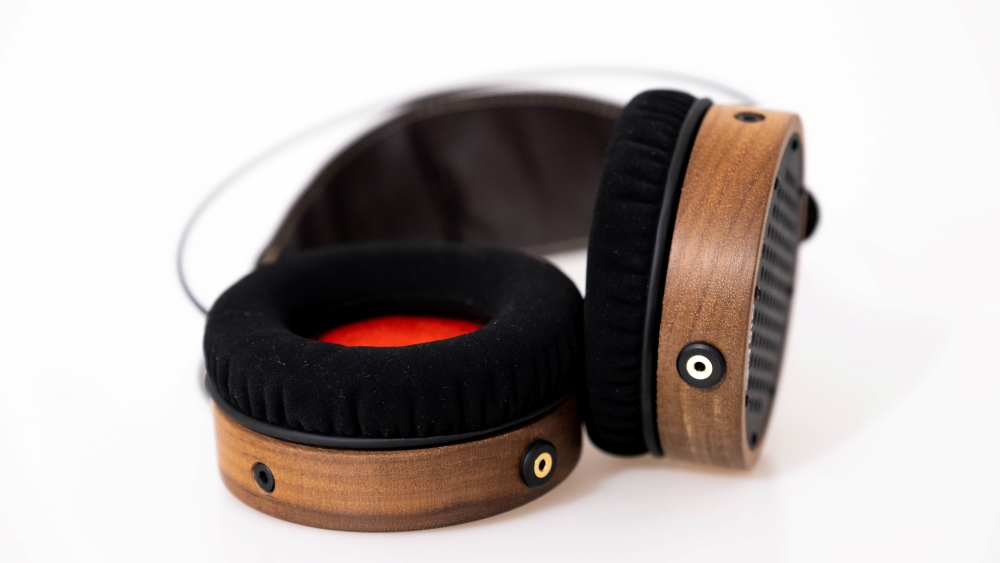
Comparisons
Meze 99 Classics (€309) VS OLLO S4 (€290)
Both have the same symmetrical design, both have walnut ear-cups and stainless-steel headphone structure, Meze have bigger ear-cups and a lower pressure on my head. 99 Classics is a closed design and S4 is open-back.
In terms of sonics Meze have a bigger emphasis on mid-bass and midrange in general, so it will sound warmer, fatter and even juicier. However, the tonal balance is not ideal since a flat FR is out of the question. Meze are also a bit easier to drive and can be powered even by smartphones.
S4 has a better grip, faster speed, impact and the slam is tighter, not as loose sounding as the Meze. S4 also has a better outline of the notes, every sound is just sharper on it. For pure musical enjoyment and relaxation Meze is doing that better. S4 is flatter but also truer to the recording, with better diaphragm control.
Hard to tell which one is better; they both have their magic moment.

Sennheiser Momentum M2.0 (€300 at first, €200 right now) VS OLLO S4 (€290)
Build quality wise both are fine, Momentum have leather headband and ear-pads, S4 has them from faux-leather, Momentum are not as heavy and even easier to carry due to their folding mechanism. In terms of looks I like them both. Momentum 2.0 is a closed-back design, S4 is open-back.
When it comes to sonics Momentum has a big emphasis on midrange and mid-bass and sacrifices a lot of treble energy. Momentum is warm, full bodied sounding. They are never tiresome in the long run and are sounding quite engaging and fun. Their biggest problem is the soundstage that is very in your head, on-stage presentation. They are also loose sounding, especially with fast electronica.
S4 is better on almost all key aspects: they offer a higher detail retrieval, a better pin-point imaging. The sound is more transparent, bigger as well. S4 don’t have an impressive stage, still they sound grander and wider spread. S4 is of course more controlled, has a better grip over the drivers and hits harder as well.
S4 is in a higher league and that was felt from the start

Sennheiser HD660S (€499) VS OLLO (€290)
HD660s are made entirely from hard plastic with a metal structure and mesh, however uses much bigger ear-pads so the conform level is higher as well. HD6xx have their legendary status already, so no introduction is needed.
In terms of frequency response both are very close and I can’t fault any of the two. Both are quite engaging from a powerful headphone amp. S4 is easier to drive, HD660S can be used only with powerful mobile solutions (a powerful DAP, portable headphone amp and so on).
HD660S are sounding airier and just a hair wider and deeper and that is apparent mostly with high-quality live recordings. With HD660S you can follow a note from its inception to its decay, S4 is doing that faster. As a side effect the notes have a bigger void space between them, so overall HD660S in an airier sounding headphone.
On the other hand, S4 is a hair faster, slams harder and you can clearly hear the leading-edge, the outline of the note that is sharper. It is like boosting the resolution of in image. In terms of detail retrieval both are on the same level, on the right system both will reveal small nuances and micro-details.
Sometimes S4 has a little bit more treble energy, sometimes HD660S tickles my ears with more treble detail, so it’s a tie on the treble area.
Overall, I am splitting hairs since both are great sounding headphones, HD660s are just wider and deeper and S4 has a better driver control and a better slam. Pick your poison.

Conclusion
If a narrower soundstage and smaller ear-cushions will not put you off, OLLO S4 will reward you with a flat frequency response, just a tad towards a natural and musical presentation with a very good grip and control over the headphone drivers. I enjoyed my time with them starting with classical music and finishing with some metal tunes, everything sounded fine to me without obvious flaws.
The headphone construction is built to last and just in case something fails, don’t worry too much as any part is replaceable with home tools and you will be back to music listening in no time.
For a first attempt, OLLO Audio did a remarkable job and at that price is hard complaining about anything at all. The best part of this incredible package is the price, they were €349 at full price, but you can get them right now at a discounted price of €290 from here. For this environmentally friendly, build to last construction and linear sound-performance I think it is a no-brainer purchase.
PROS:
- Amazing build quality, hand-built with lots of care for the environment
- Great tonal balance! Almost flat frequency response
- Good speed, impact and slam
- A high level of detail retrieval
- Good transparency, low distortion levels
- A sharp outline of the notes, good texture as well
- A very attractive price point, Recommended!
- Up-front sounding
- There is a dip at 9 kHz but at a short frequency range
- DACs: Matrix Audio Element X, Matrix Audio X-Sabre Pro, KECES S3, Burson Swing
- Headphone amps: Benchmark HPA4, Aune S7 PRO, Erzetich Bacillus, Headamp Gilmore Lite Mk2
- Full-sized headphones: OLLO S4, Hifiman Arya, Quad ERA-1, Sennheiser HD660S, Momentum M2.0, Meze 99 Classics
- Loudspeakers: KEF LS50W
- Interconnects: QED Reference XLR, Aune AL3 XLR
- Power Cables: Isotek EVO3 Premier
- Balanced Power Conditioner: PLiXiR Elite BAC 400, KECES BP-600

iBo0m
Great review!! So, are these on-ears or over-ears. From the pictures the size of the cushions seem to be somewhere between 

DarKu
Thanks! You've said it better than myself, somewhere in between. They are just barely over-ear for me and on-ear for one of my friends. The internal cup space is a bit bigger than that of Sennheiser Momentum 2 and a little bit smaller than that of Meze 99 Classics (hopefully that helps)
DarKu
Reviewer at Soundnews
Pros: Solid build quality with an impressive simple design
A feature-packed 3-in-1 device
Sounds neutral, layered and extended, lacks a sound coloration
A high resolution and transparency level
Sounds wide and very well spread around the listener
Very precise pin-point imaging
Among the best pace, rhythm and timing with fast kicking dynamics I had the pleasure of hearing
Linear and uncolored headphone amp section with power to spare
Lacks any noise or distortion
Wide selection of digital inputs and analog outputs
A feature-packed 3-in-1 device
Sounds neutral, layered and extended, lacks a sound coloration
A high resolution and transparency level
Sounds wide and very well spread around the listener
Very precise pin-point imaging
Among the best pace, rhythm and timing with fast kicking dynamics I had the pleasure of hearing
Linear and uncolored headphone amp section with power to spare
Lacks any noise or distortion
Wide selection of digital inputs and analog outputs
Cons: Background noise with IEMs, could be lowered with a balanced power conditioner.
KECES Audio is proudly making Digital to Analog Converters for more than 10 years already. I still remember researching for affordable DACs at that time and KECES DA-131 and DA-151 would always pop into that list. They were always very serious about power filtering and sonics as they used only high-quality toroidal transformers and musical performing Burr-Brown PCM chips. Time have passed, lessons were learned, technology evolved and that is how KECES S3 came to be. Today I will write about their latest 3-in-1 device that KECES proudly designed and is making in Taiwan and that is S3 - their latest high-performance DAC, Preamp and Headphone amp.
Meet the Family
You might think that nowadays KECES is mostly making linear power supplies and balanced isolation power conditioners like their BP-600 that we reviewed recently but their product portfolio is much wider than that.
KECES is also offering an integrated amplifier, a top-notch phono preamplifier with a separated power supply, a big and imposing 225 Watt per channer power amp and the all in one S3 DAC/ Preamp/ Headphone amp. If you look closely at all their products you will soon realize how much importance KECES is putting into the power filtering as more often than you might think a performance bottleneck will start exactly from there. The need for clean power expanded their portfolio and at this moment they are offering 6 different products that will deliver clean power to your precious audio equipment.
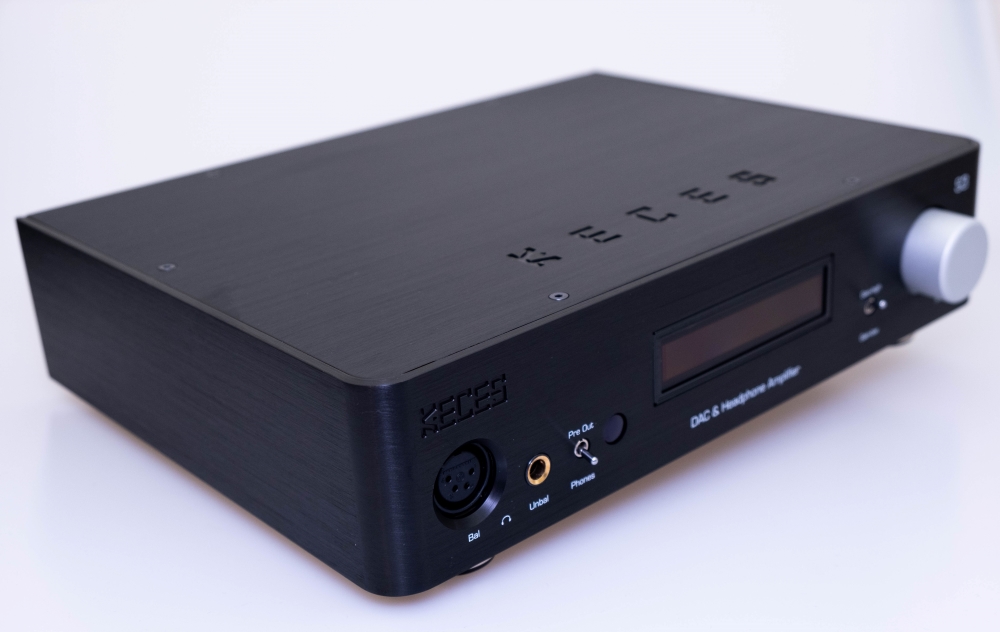
Beauty in Black
Unboxing experience is quite good, it came double boxed. Since the S3 unit is not that heavy, at about 4 Kg there isn’t a ton of foam inside. Nonetheless S3 is well protected from outside world. Inside the package you’ll find the S3 unit, a power cable, a high-quality metal remote, a battery for it, a warranty card and a 15-page user manual.
Design & Build Quality
I think S3 is a beauty in black, the side and front panels are free of any screws, most of the ugly screws are underneath the device so I’m ok with that. The top and front panel have a sculpted CNC-ed KECES logo which I really dig. S3 is a clean looking device and will not draw a lot of attention from our ladies, the WAF (Wife-Acceptance-Factor) is really high, two weeks passed and I was never asked what is this black box on my desk, the ultimate test was passed!
The case is entirely metal made, the body uses a 4mm thickness aluminum sheets, even the remote control is having a thick aluminum construction. The back-plate has 2 open-wide ventilation holes that will dissipate all the heat accumulated inside. S3 is always warm to the touch but never too hot, even in hot summer-days it should not pose a problem stacking with other electronics.
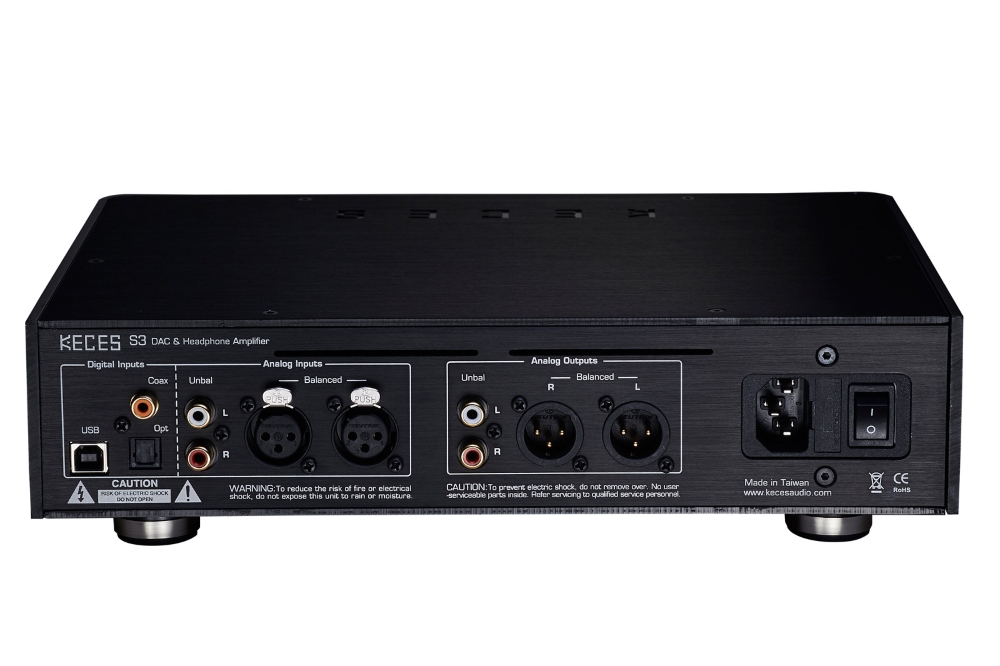
Features & Display settings
The front panel houses a very clever 128-step fully balanced relay-controlled volume pot. This is a very special volume pot, it is very similar to what I’ve seen in Benchmark HPA4 and better than this is probably only the $1400 Alps RK50 pot. The volume pot has three different functions: it will control the volume for the preamp or headphone amp, pushing it once will change the digital or the analog input and a long press will put it or wake it up from the stand-by mode. There is also a gain switch, a pre-out/phones switch and two headphone outputs: a 6.35mm (1/4”) and a 4-pin balanced headphone out that already put a smile on my face. KECES opted for a big and bright OLED screen on the front panel that shows all the important stuff like the selected gain, volume level, input (digital or analog) and the sample rate for PCM and DSD material.
On the back panel you will see a trio of digital inputs: Async USB, Optic and Coaxial, two analog outputs: XLR out and RCA output. There is also two XLR and RCA inputs meaning S3 can be used a dedicated Pre-amp for your speaker-based system or as a dedicated headphone amp in case you want to use another DAC but I doubt that will be the case with it, more about that in a minute. The power of the analog outputs can be controlled of course, RCA out goes up to 2V and XLR out goes up to 4V at unity gain of 0dB.
As you can see, S3 can be a dedicated DAC, Preamp, Headphone amp or a combination of two in a single beautiful black case.
Using the remote it is super easy controlling the unit as you can wake it up or put in stand-by mode, select the desired input or change the volume setting, muting it is also an option.
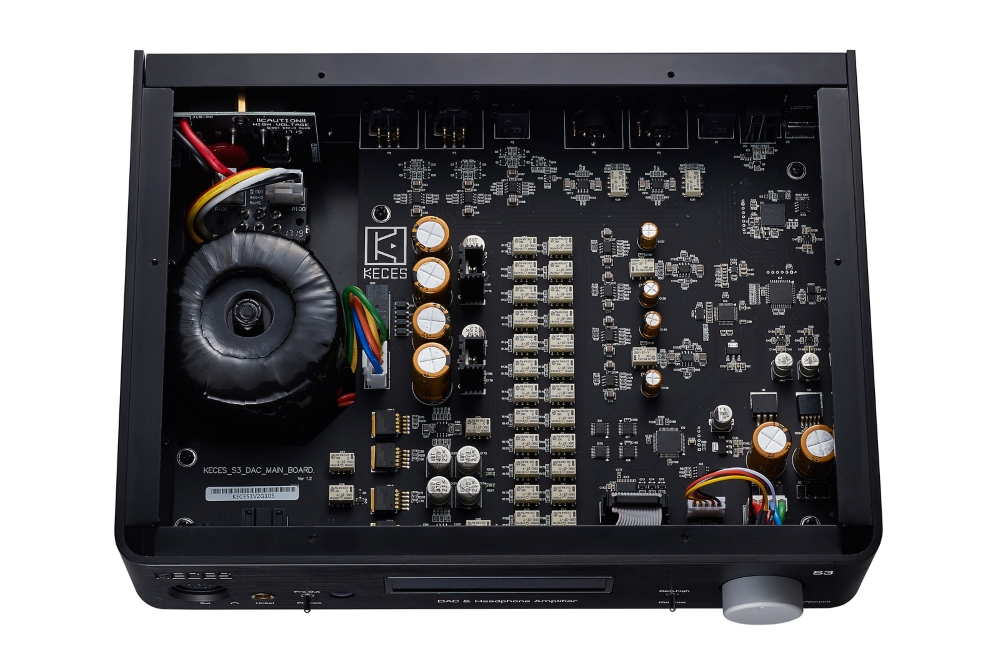
Under the Hood of S3
S3 looks incredibly clean and very well put together. Notice the high-quality toroidal power transformer inside, audio grade capacitors, an ultra-short path between the input connectors and input gain op-amps, lots of high-quality relays for a precise volume matching done in the analog domain without losing precious bits of resolution.
S3 is rocking the latest ESS Sabre family of DAC chips, it is using the desktop class 8 channel ES 9026 PRO chip. It wouldn’t be a KECES device if would not have an isolation circuit inside that completely separates the grounding of the digital and analog sections. In terms of power filtering this is as good as it can get.
The headphone amp section can offer up to 2 Watts of power into 32 Ohms on the balanced out and about 1.2 Watts on the SE output, that is plenty even for harder to drive headphones. Luckily, I do have 3 pairs of hard to drive headphones and will put S3 thought some heavy testing. I can tell you in advance that both headphone outs were not put there for convenience as S3 can be used as a powerful stand-alone headphone amp and my listening tests proved that.
S3 will consume up to 30 Watts, for a DAC, preamp and headphone amp unit that is quite a lot. My feature packed Matrix Audio Element X consumes less that 25W and X-Sabre Pro uses less than 10W. S3 is already showing me patterns and signs of how it might sound.
S3 is moderately big and weighs about 4 Kg, it is super easy using it as an all-in-one unit, in a stereo system please don’t place it on top of your power amp for a better heat dissipation.
The best digital input is of course USB as it can decode up to 32bit/384kHz of PCM and DSD up to DSD256, optical and coaxial inputs will decode up to 24bit/192 kHz and just DSD64 (via DoP).
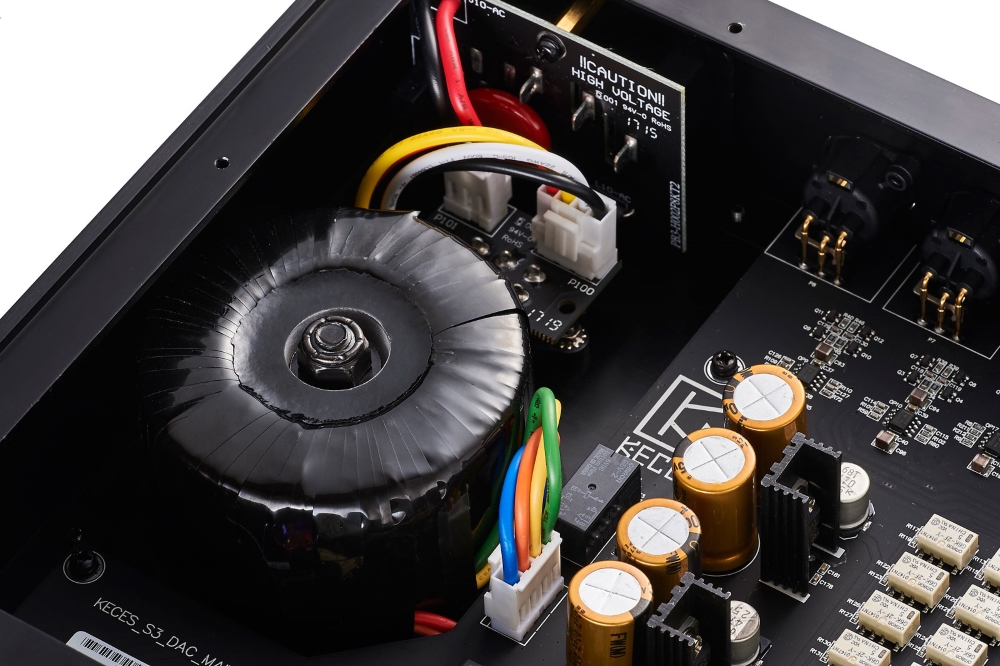
Sound Performance
I. In a headphone-based system
A. Using S3 with sensitive IEMs
I was already leaving small hints like the 30W power consumption (much higher than typical DAC and headphone amp units are having), big toroidal transformer inside, an isolation circuit that completely separates the grounding of the digital and analog sections, a dedicated balanced headphone amp and a very advanced relay-controlled volume pot. All of those already hinted at very good performance but I wasn’t prepared for the performance that followed in my listening tests.
I plugged on the 6.35mm jack my very sensitive FiiO FA7 and IKKO OH1 IEMs, I selected low gain, put my music on pause and almost maxed the volume and was impressed to find a black silence and a clean background even with a pair of super-sensitive IEMs. In terms of how clean its internal headphone amp section is you need to know that it easily outperformed the Mytek Brooklyn DAC+, my reference Headamp Gilmore Lite Mk2, the Burson Playmate and the Erzetich Bacillus. In terms of cleanness it is on the same level with Aune S6 PRO and S7 PRO and just barely under the top-performing Benchmark HPA4.
UPDATE (25.07.2019)
Unplugging both balanced power conditioners from the acoustic chain resulted in a higher noise floor to a point where I can hear it with IEMs, that was unexpected. I will be changing my final ratings right now.
I call it already impressively clean, free of any nasty gremlins, having a black background that will please headphone enthusiasts. Both headphone outputs have a super low-Z 0.6 Ohm output impedance so any IEM, earphone or headphone you will plug-in the diaphragm will have absolute control and grip, to me S3 sounded as the most effortless All-in-one unit I tested at my place. Combine a super low output impedance with a very low total harmonic distortion and with a powerful headphone amp section and you can probably guess how S3 might sound.
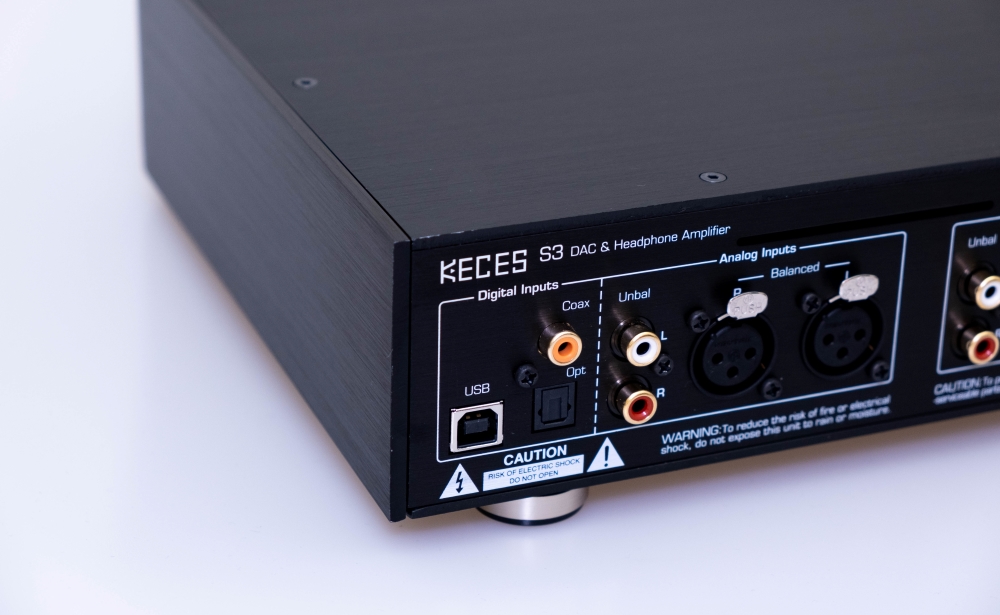
I listened to some old folk-rock and was curious if I will hear any coloration of the internal headphone amp and frankly its sound reminded me a lot about the Benchmark HPA4 with its linear and colorless performance. To me KECES S3 sounds linear without putting an emphasis on any particular frequency range. What really stood-out is how strongly it punched and kicked those headphone drivers, very effortless sounding. It pumped a lot of engagement and joy into my IEMs as they sounded livelier, faster and kicked much harder compared to a portable device.
All that raw power, speed of delivery and control will be completely wasted if there wasn’t a hint of finesse and refinement, that is why I decided to listen to some Enigma – Sadness followed by Principles Of Lust. The smoother and musical character of both songs was perfectly rendered by S3, all those small bells firing on left and right, those angelic voices and the super controlled bass created a complete relaxation of body and mind. That is right, when needed S3 can sound refined and smooth and when thunder is being called for, it will be unleashed with an incredible slam and kick.
In terms of IEM and earphone listening there is nothing wrong and I sincerely can’t see any real faults of this unit. This engaging sound signature reminds me that without a high dynamic range all this will not be possible, so in terms of dynamics S3 is very good and goes shoulder to shoulder with high-performance desktop headphone amps.
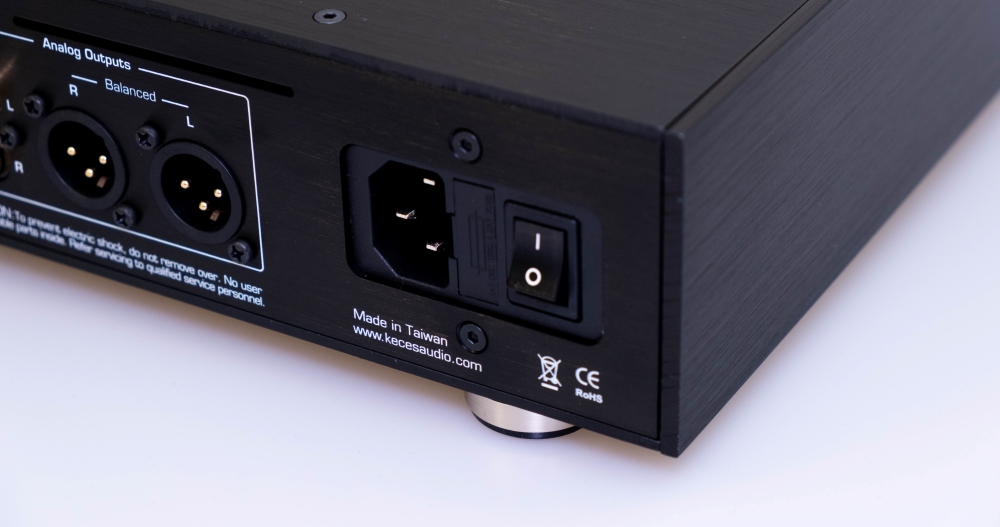
B. Using S3 with hard to drive headphones on the balanced and SE output.
Here are some fun facts: Hifiman Arya that I reviewed recently is a hard to drive planar-magnetic headphone, at only 90 db per 1mW it is the hardest to drive one from my table. Yet, at just 70 volume (out of 128 steps) at high gain Arya and my ears could barely hold more volume, just for few moments I tried going up to 80 volume and went immediately back to preserve my hearing. KECES S3 has some very serious power under its belt!
Later on, I decided to use the closed-back Sennheiser HD820 on the same 4-pin balanced out and I could go maximum to 65 volume, with my Quad ERA-1 I could go maximum to ~63 and maximum to ~60 with the Sennheiser HD660S. So, in the worst-case scenario I had another 48 dB of headroom left of the volume pot, that is not mighty good, that is God-level good! Before pushing that play button please select carefully your volume setting and don’t forget IEMs need much less power than that.
I can’t imagine what headphone will be needed to reach 100 volume, yet alone maximum 128 volume setting? Power overwhelming? Yes, for sure.
Even now I can answer your Audeze LCD-4, Hifiman HE6/HE-SE, Susvara or Abyss AB-1266 burning questions. Yes, it will drive any of those with authority, control and cojones.
If you look carefully around here you will observe that I really like listening to DAC+ headphone amp units, I will not hide the ugly truth, this is one of my biggest audiophile fetishes. I love testing and listening to DAC/Headphone amp units, I tested a lot of them lately. Out of all of them (including Matrix Element X and Mytek Brooklyn DAC+) this Keces S3 has the best headphone amp section by a long shot.
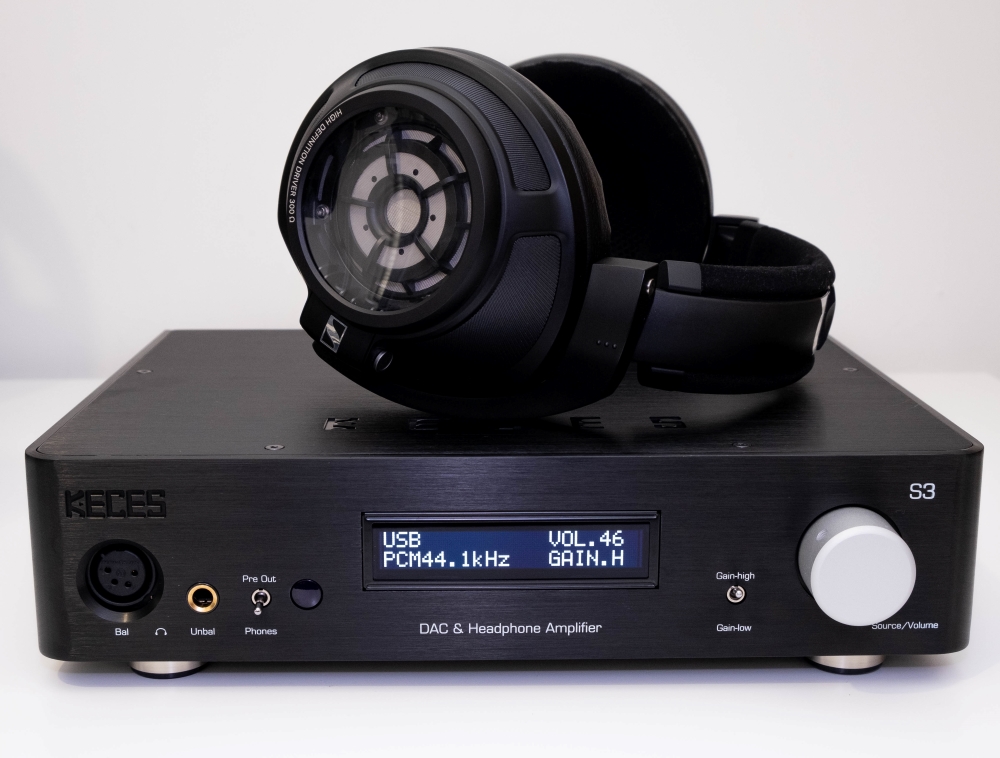
When I listened to Brooklyn DAC+ and to Matrix Element X I knew they both shared an excellent DAC section, but I also knew they both had just decent, mid to high-class performance headphone amp sections, on those units I craved going balanced to a another dedicated headphone amp unit. However, with Keces S3, I don’t have the same feeling as S3 is offering ultimate drive control, speed, slam and a big open-wide soundstage. S3 doesn’t need a separate desktop headphone amp to shine at its best.
Listening to Virgin Black – Our Wings are Burning was a revelatory experience as it shown me that it can be gentle, refined but also brutal, aggressive, biting and hard hitting. This particular track combines all of those and can be a weird experience at first. This song carries impressive dynamics, there are many low and high intensity sounds that will put into a relaxed or tense state, a head-bang inducing song for sure.
I want to outline and reinforce that S3 is very effortless sounding, it has an impressive control over the headphone drivers, it sounds impressively fast and carries a hard-hitting slam when called for and even listening to harder to drive dynamic or planar-magnetic headphones was an eye-opening experience for me. If you consider yourself a headphone enthusiast and don’t want to have separate DAC and headphone amp units, I think Keces S3 performs admirable and up there with the best I’ve tried.
There wasn’t an instance where I would doubt the S3 performance when it comes to headphone pairings. Its internal headphone amp and this DAC/Amp unit in general doesn’t have a coloration and sounds linear/neutral, you will basically be listening to the limits of your IEMs, earphones or headphones and nothing more.
In terms of subjective headphone pairings, I would stay away from aggressive and U-shaped sounding headphones since S3 can put an emphasis on all those minuses with its revealing nature.
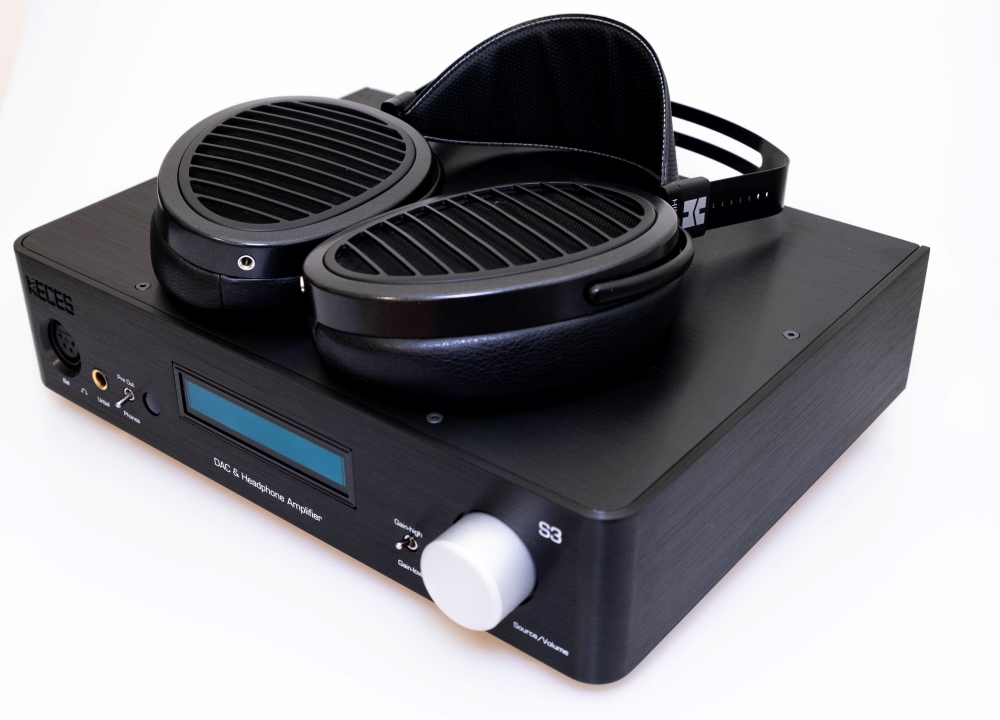
II. In a speaker-based system
My active KEF LS50W loudspeakers are having an internal Hi-Res DAC but offer the possibility of using an external DAC and this is exactly what I did.
I will first try to answer the technical specs snobs that feel that only TOTL DAC chips will sound the best no matter the implementation used. The ES 9026 PRO inside the S3 sounded much better than the ES 9038 implementation of Burson Swing and about on the same level with ES 9028 of Mytek Brooklyn DAC+ and Benchmark DAC3L that I tested not a long time ago. DAC chips tell only 20% of the story and the rest is much more important.
I am hearing a big family resembles here as S3 is sounding very similar to those units but borrows a little bit of naturalness and boldness found in Matrix Audio X-Sabre Pro and Element X units. Going deeper and listening more and more music I tend to believe KECES did the right thing going with a big isolation toroidal power transformer inside as It sounds so holographic and effortless on speakers as well as it was on headphones.
There were already many times when the internal DAC of KEF LS50W was outperformed, mainly in terms of holography and wide soundstage. This time, with KECES I am hearing an incredible grip, an impressive start and stop of the speaker diaphragm. I think in terms of transient response S3 is playing in big boy category and elegantly outperformed the Benchmark DAC3L and the Mytek Brooklyn DAC+. Compared to those two units, it doesn’t just sound as fast, but it also slams harder and carries a little bit more air with every beat, in this regard it reminds me a lot about Matrix Element X that has the same effortless and hard-hitting nature.
The bass slam is so outlined and steps forward so many times that I thought it boosted the bass performance a bit, but that is not the case because it doesn’t go lower, it just hits my eardrums harder – a very pleasing effect on rock and electronica music.
S3 is among the hardest hitting DAC units I had the pleasure of listening at my place, it is so engaging it is almost illegal sounding as fun and head-banging.
In terms of frequency response from the lowest bass to the highest treble KECES S3 sounded linear as a ruler, always hyper-detailed with a focused pin-point imaging, yet involving, musical and so incredibly engaging and fun.
I have tested a lot of All-in-one units based on the latest ESS Sabre chipsets, still only very few of them sounded really fun and as engaging as this unit. I started tracing all those units, I re-read my reviews trying to understand from where this fun-factor is coming from. The only conclusion I can draw is that high-quality power filtering is doing all this magic. Take for example DAC3 L, Brooklyn DAC+ and Burson Swing – all of them are relying on switching power supplies and when I connected all of them to the KECES BP-600 Isolation Power Conditioner all of those basically transformed into hard-hitting monsters. In their stock form they sounded fine but lean and not as engaging in the long term. On the opposite side of things Matrix X-Sabre Pro and Element X are relying on top-quality Noratel toroidal transformers and those two are sounding as engaging and fun as the Keces S3. If you are a DAC or DAC/headphone amp combo manufacturer then please, for the love of music, throw away those switching power supplies and start using higher grade toroidal transformers. Why? They sound better, much better.
I think I have found my love, my drinking buddy, my metal brother, my music companion (you get me) in terms All-in-one units. KECES S3 might not offer the widest of possibilities and features, but it sounds so engaging, so effortless and kicks so hard. It is like taking an audiophile beating. Love it from the bottom of my darkened heart!
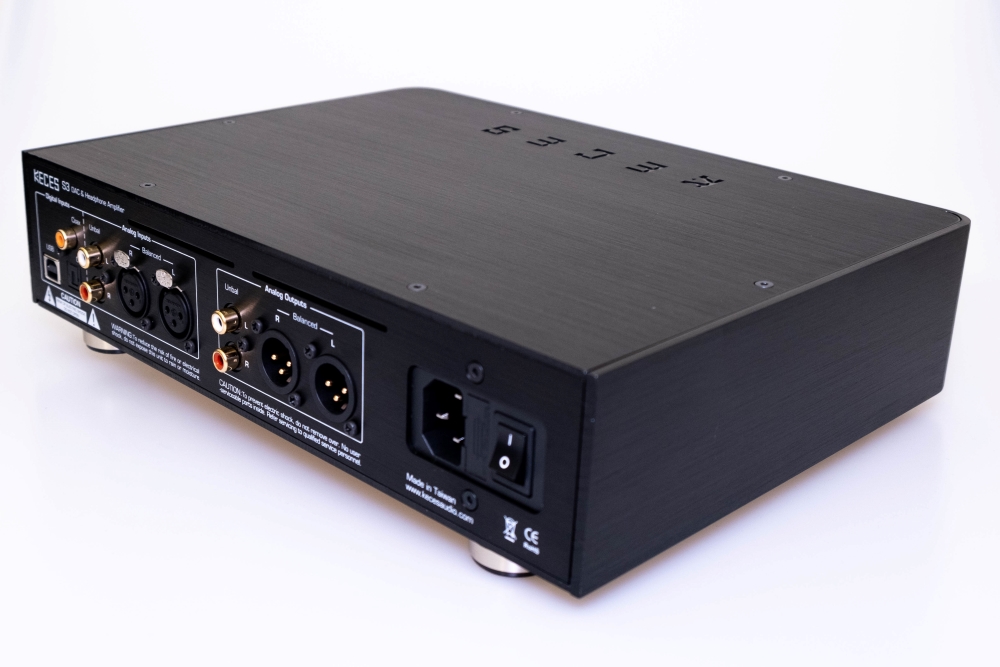
Comparisons
KECES S3 (1400 USD) VS Matrix Audio Element X (3000 USD)
Since for my subjective preference it already outperformed the Benchmark DAC3L and Mytek Brooklyn DAC+, I decided to compare it to my fresh bought Matrix Element X.
As you probably guessed Element X has many more features, like an internal streamer, an internal player, MQA decoding, DLNA and Roon support (Soon!), it also can be controlled via the MA app, so in terms of versatility Element X is in a game of its own, can’t be beaten.
In terms of plain delight and music listening as a DAC + headphone amp unit this might amaze you but KECES S3 had way more power, control, grip and overall enjoyment level. I wish my Element X would have the same headphone amp section of S3. There isn’t a single doubt in my mind that in terms of headphone listening S3 can power any set of headphones, Element X by comparison can’t do that and struggles with Hifiman Arya at delivering this holographic, effortless and super dynamic performance. As a combo unit, I think Keces S3 is playing on a very high level where not a lot of units can compete with it. Sure, it loses just a tiny bit of detail retrieval and layering compared to the best I’ve tried but that is understandable, given the price point S3 is having.
As a DAC unit alone, the game changes a bit. Using both on the USB input from a PC, Element X will sound a bit more focused, will offer a better detail retrieval and a wider soundstage. The difference is not that big but a noticeable one.
Now, if I move to the internal player of Element X completely bypassing the Windows OS then the performance of Element X plunges forward even more. You should understand that Element X was designed being used as a streamer and as a DAC, the headphone amp section was put there mostly for convenience.
KECES S3 didn’t bottleneck its preamp, headphone amp or DAC section and I would personally use it in front of a PC with some top quality headphones or in a speaker based system as well, don’t forget it has a top quality relay-based volume control and a remote, add a power amp and some nice speakers and you are good to go.
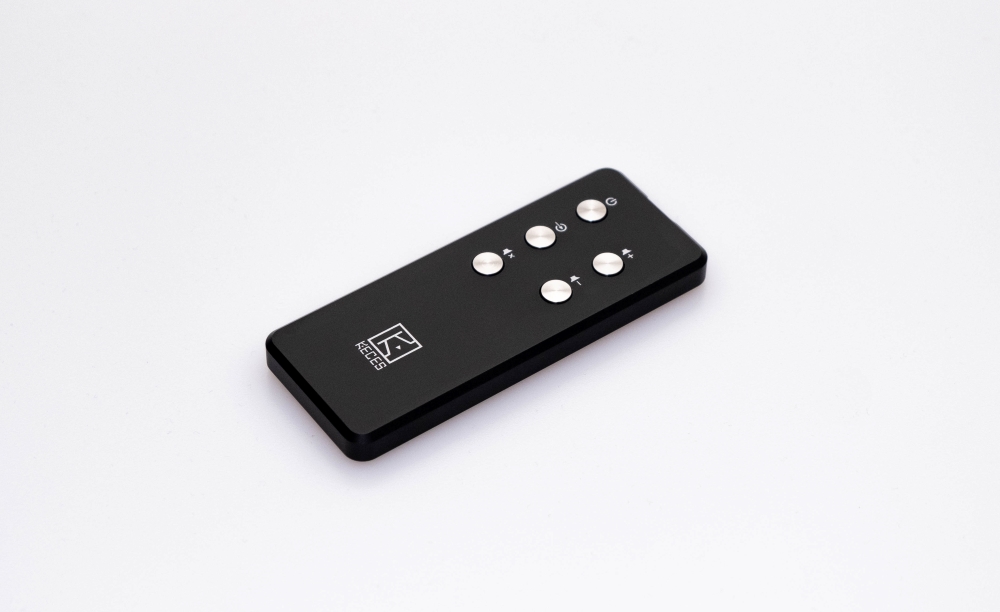
Conclusion
When KECES S3 arrived at my door I knew it had great potential mainly because of its high-performance volume control and power filtering, but I was not prepared for this kind of audio performance, especially at this price point.
As a DAC and headphone amp combo, it plays in a game of its own since there aren’t a lot of units that I am aware of playing in the same ballpark. Want to use it from portable headphones to hard to drive headphones? Be my guest, S3 will do that with gobs of power to spare.
Want to use it with a power amp controlling your passive speakers or directly with a pair of active speakers? Sure, why not? With its remote and perfectly matched volume control it can’t be more convenient that this.
S3 possesses such a fast, punchy and engaging sound signature that it should be banned. You know when I think about it - all DACs that I am aware of can sound slow, smooth and easy going with the right music, but only very few of them can sound as fast, engaging and fun as S3.
KECES S3 can be purchased for $1400 in USA and for €1500 here in Europe, contact your local distributor right here.
PROS:
- Solid build quality with an impressive simple design
- A feature-packed 3-in-1 device
- Sounds neutral, layered and extended, lacks a sound coloration
- A high resolution and transparency level
- Sounds wide and very well spread around the listener
- Very precise pin-point imaging
- Among the best pace, rhythm and timing with fast kicking dynamics I had the pleasure of hearing
- Linear and uncolored headphone amp section with power to spare
- Lacks any noise or distortion
- Wide selection of digital inputs and analog outputs
- Background noise with IEMs, could be lowered with a balanced power conditioner.
- DACs: KECES S3, Matrix Audio Element X, Matrix Audio X-Sabre Pro, Mytek Brooklyn DAC+, Aune S6 PRO, Burson Swing & Playmate
- Headphone amps: Benchmark HPA4, Aune S7 PRO, Erzetich Bacillus, Headamp Gilmore Like Mk2
- IEMs: FiiO FA7, IKKO OH1
- Full-sized headphones: Sennheiser HD820, Sennheiser HD660S, Hifiman Arya, Quad ERA-1, OLLO Audio S4
- Loudspeakers: KEF LS50W
- Interconnects: QED Reference XLR, Aune AL3 XLR
- Power Cables: Isotek EVO3 Premier
- Balanced Power Conditioners: KECES BP-600, PLiXiR Elite BAC400
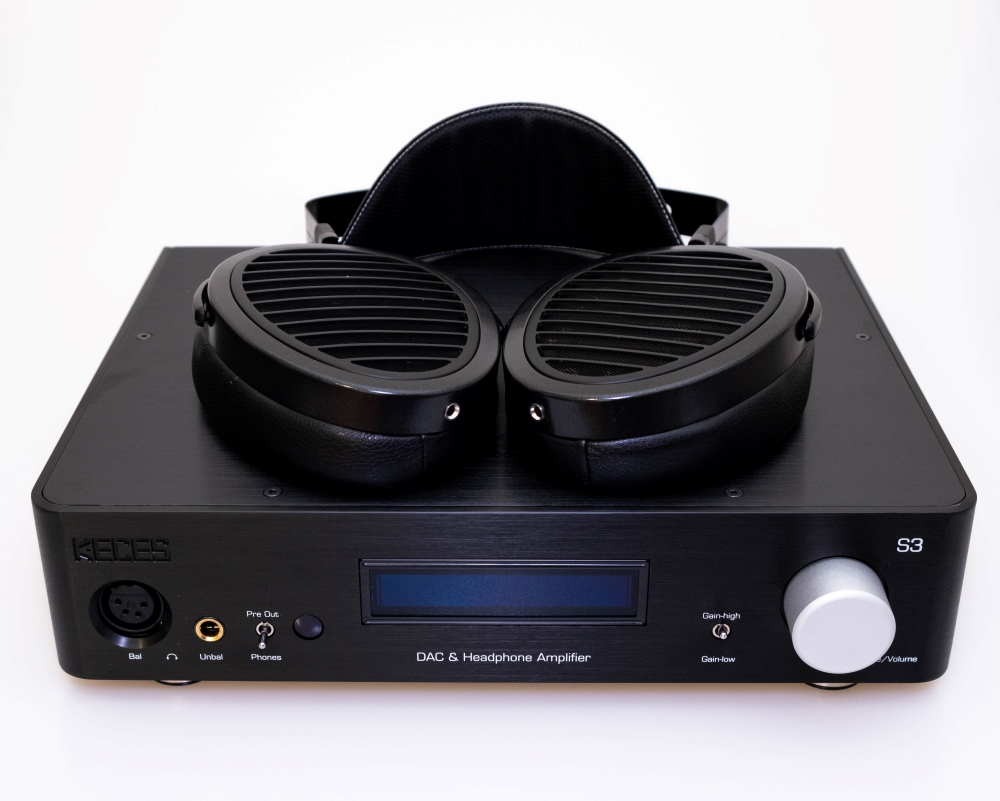
FourT6and2
Ok, you've basically tested all the gear I'm considering. Trying to decide between the S3, Element X, and Brooklyn DAC+ as all-in-ones. Or... Benchmark DAC3 with THX 789 or Aune S7 Pro or Cayin iHA-6. If you had to cheese between the S3 by itself, or the DAC3 + THX 789, what would you do? My headphone is Empyrean. I listen to a lot of prog rock and metal. Thanks!
DarKu
I will reply with a PM since there is a lot to tell 

DarKu
Reviewer at Soundnews
Pros: Excellent comfort levels, you almost don’t feel them on your head
Nice fit and finish, love the huge ear cup design and ear-pad material
Impressive depth and pin-point imaging, very easy to focus on any note
Open wide soundstage, most transparent sounding
Airiest open-back planar-magnetic headphone I’ve tested
Linear and neutral as a straight line
Super extended in the sub-bass and sub-sonic treble regions
Among the best dynamics a headphone can have
Excellent detail retrieval
Nice fit and finish, love the huge ear cup design and ear-pad material
Impressive depth and pin-point imaging, very easy to focus on any note
Open wide soundstage, most transparent sounding
Airiest open-back planar-magnetic headphone I’ve tested
Linear and neutral as a straight line
Super extended in the sub-bass and sub-sonic treble regions
Among the best dynamics a headphone can have
Excellent detail retrieval
Cons: Plastic cups, pleather headband and ear-pads
Not that easy to drive
Slam is good but not the best
Not that easy to drive
Slam is good but not the best
Doing reviews for good sounding headphones is easy-peasy they said, just hype them as much as you can and all will be good they said, roses are red violets are blue they said. What a bunch on non-sense! Actually, doing reviews for expensive and top-notch headphones is much, much harder to do since you need to carefully pick your words, not to mention excessive amounts of listening tests, comparisons, measurements and leaving plain subjective opinions.
The moment Hifiman Arya arrived at my door my mood was really low, spirits were not kind to me this past few days, don’t know why. I started casually listening to them with a slight headache and sincerely I was so low on inspiration that my expectance level was even lower, I didn’t think they can surpass my all-time-favorite Quad Era-1 headphones. About 5 minutes passed and I already started doubting my thoughts, another 5 minutes passed and I was already sweating, 5 more and I was angry that they just might sound better. I started bargaining and added more music to my playlist. After a painful one hour of switching back and forth my depression left me and I accepted the fact that Arya is just in completely another league. Yes, my friends they are sounding better on almost all aspects, all of that in due time.
A long time have passed since I listened to an excellent sounding pair of full-sized headphones and even a longer time passed since I tested a pair of Hifiman planar-magnetic headphone. Hifiman is not new to this game and can be considered veterans in terms of planar-magnetic technology. Arya comes from their third-wave of planar-magnetic headphones and even borrows some technology from their highly regarded and much more expensive HE1000 V2.

Unboxing experience & Package contents
Hifiman Arya came double boxed for a very good protection. First card-board box has some foam inside to protect the second - headphone box. The second one that houses the headphones themselves looks pretty nice with this matte black painting on it. Opening up the box reveals a beautiful sight since Arya are sitting comfortably in a silky fabric surrounded again by lots of foam underneath it and on top of it.
The headphone cable that comes with it should resist a lot of use and abuse, it is also very flexible, besides that one, there is also a warranty card with the serial number stamped on it and a very detailed 26-page user-manual that I really recommend checking it out. That is basically it, I would personally like to have a hard carry-case instead on the headphone case that is not as practical while traveling, but maybe that is just me.

Looks & Build Quality
Design wise I think Arya are looking quite handsome with this elongated and huge ear-shaped cups. There isn’t another headphone manufacturer that uses the same XL-sized earcups. They are basically hugging your ears and the pressure is close to zero, coming back from a pair of Audeze headphones it is like you have nothing on your ears.
Weighting just 404 grams (14.3 oz) it is among the lightest planar-magnetic headphone I put my hands on. Arya has a clever weight distribution mechanism that is mostly relying on two things: on the super-wide and extra-large headband that is already evenly applying pressure on the top of your heard and it is also relying on the huge and soft ear-pads that will absorb side pressure. In my opinion Arya are among the least head-crunching headphones I tested so they are scoring great marks in terms of comfort.
The headphone structure is mostly metallic except for the ear-cups that are made out of hard plastic, very similar build to that of Jade II. It is also a first for me this very open “Window shade” system, almost exposing the drivers to the outside world. Arya are as open in terms of headphones as it can get, as you basically see the magnets structure and the planar-magnetic driver assembly. This very open approach was important for achieving a really open and extra-transparent sound.
The ear-pads can be considered a hybrid design since the inner and outer material is pleather to retain all that impact and high sound pressure level, only the part that touches your cheek is a soft fabric material so the air can move in and out between the driver and the ear. I really like this approach since I am sweating with leather-only Audeze ear-pads and I am not with Arya ear-pads, very cool approach.
The suspension mechanism might look like that found on Meze’s Empyrean or 99 Classics that is naturally distributing the weight once you put them on your ears but on Arya you are manually adjusting the right height setting and comfort level. I am not too bothered by that, since it is a one-time set and forget adjustment.
Of course, the cable is detachable, thanks god they abandoned old-style screw-type plugs and chosen simpler 3.5 mm plugs. The cable is super flexible and has a fabric outer jacket, it is terminated with a 6.35 mm (1/4”) jack. It doesn’t have any microphonics when it touches my clothes so that is always a very good sign. Seeing the cable quality, I don’t think many of you will upgrade it to something better, it is already a nice quality one.
I really dig the oval shaped cups and the overall design of them. The only cons I have in terms of build quality are the pleather ear-cups, pleather headband and the plastic cups.

Technology inside
Well, first of all Hifiman Arya is a planar-magnetic headphone that uses an advanced asymmetrical magnetic system. In simpler words it means it uses smaller magnets on the ear side and huge magnets on the outer side that are pushing a lot of air. This way the sound waves interference is greatly reduced, so the total harmonic distortion is reduced as well.
Hifiman developed their 3-rd generation Nanometer Thickness Diaphragm with a submicron thickness conductor. In short this is a very thin diaphragm but also a very rigid one, it should resist a lot of stress and in the same time it should playback all the smallest details from the recordings.
Remember the “Window Shade” system I was writing about that created this see-thought magnet and driver structure? This kind of design was implemented to have the widest possible soundstage and an impressive transparency.

Sound Performance
Open, spacious, enveloping, holographic and very dynamic were my first thoughts. That was the moment I realized my favorite Quad ERA-1 are much more closed-in sounding and will be dethroned really soon. I’m a big believer in planar-magnetic design and no matter what happens I should always have a pair with me, be it Quad, Audeze or Hifiman. I can count all the minuses Audeze and Quads are having, I can identify them with me eyes closed but I can’t say the same about the Arya, because nothing really stands out too much but in the same time everything is at its place, I felt it sounded just right from the moment I pressed play.
It sounded super extended on both ends, I love open-back headphones since they have the airiest performance, the widest stage and the best transparency. The biggest drawback of open-back design is of course the bass performance as it always gets a hit. Only very few open headphones are having a real sub-bass performance that can reach 20 Hz levels. Quad Era-1 was such an example that I cherished and loved.
When I listened to my favorite tunes, I couldn’t believe that Arya shown me even more bass information and additional bass layers. Sub-bass was something that needed to be heard to be believed.
Overall, Arya sounded so linear and right that I had this urge of measuring them immediately and this is exactly what I did.
I. Measurements
I used a Matrix Audio Element X as the source, Benchmark HPA4 as amplification and MiniDSP E.A.R.S. as the measuring rig for the Hifiman Arya.
I used the original headphone compensation (HPN) for this particular E.A.R.S. serial number. I ran multiple measuring tests with and without smoothing and here are my results.
.png)
A complete straight line from 20 Hz to 1Khz and just a small deviation in the treble area that is just normal behavior.
Now look when I am applying a 1⁄12 smoothing, look at that channel balance, it is simply incredible, only at about 17 kHz there is a slight channel imbalance. I thought this was a cherry-picked pair for me, but no, this is a normal Arya, nothing special was sent to me. This kind of measurements are quite impressive but are expected at this price point. My Quad ERA-1 and Sennheiser HD660S are measuring much worse in terms of FR.
.png)
Running a water-fall plot revealed this impressive reading, in terms of frequency response Arya is absolutely close to Perfect and is considered reference even at this price point. This water-fall shows the only con Arya is having and that is the decay of the bass, is it a bit slower than the rest of the spectrum.

I think it is time we dissect the frequency response.
II. Bass
Everyone who read or watched my Quad Era-1 review probably understood how much importance I give to sub-bass performance and I don’t mean muddy bass-head performance. I crave for fast executed bass that slams hard and most importantly that reaches Mariana Trench levels, like 20 Hz.
In this regard, from all open-back headphones I tested in the past, Arya has the best sub-bass performance. It is like listening to full-range stand-floor speakers.
I immediately fired my usual bass tracks and was a bit shocked, listening to The Prodigy – Invisible Sun, even at 10 second mark my ears already started waving and at 0:42 mark bass reached the 20 Hz mark that until now only full-range speakers were doing it for me.
Moving on to mid-bass it is done super smooth and in a very natural way. Again, as the sub-bass, the mid-bass is very present, controlled and has tons of layers. Even listening to simpler tracks like Pink Martini – No Hay Problema I felt that contra-bass (double bass) sounded so real and controlled. I felt its texture, I felt the wood and felt it going down with so many layers to it. Such an amazing performance and it really wakes up your imagination.
Bass notes on every track felt transparent, very clean and precise, just a right amount of presence, attack and slam. It was never too much (how it can sometime be on Quad Era-1) and never too soft (how Audeze are playing it), somewhere in the middle. This is a top-level sub-bass and mid-bass performance.
You should also know that Arya has a linear bass performance, so if you craving for a bass-canon headphone this will not be for you but if you craving for a clean, transparent, detailed, layered and linear bass response - then this is for you.
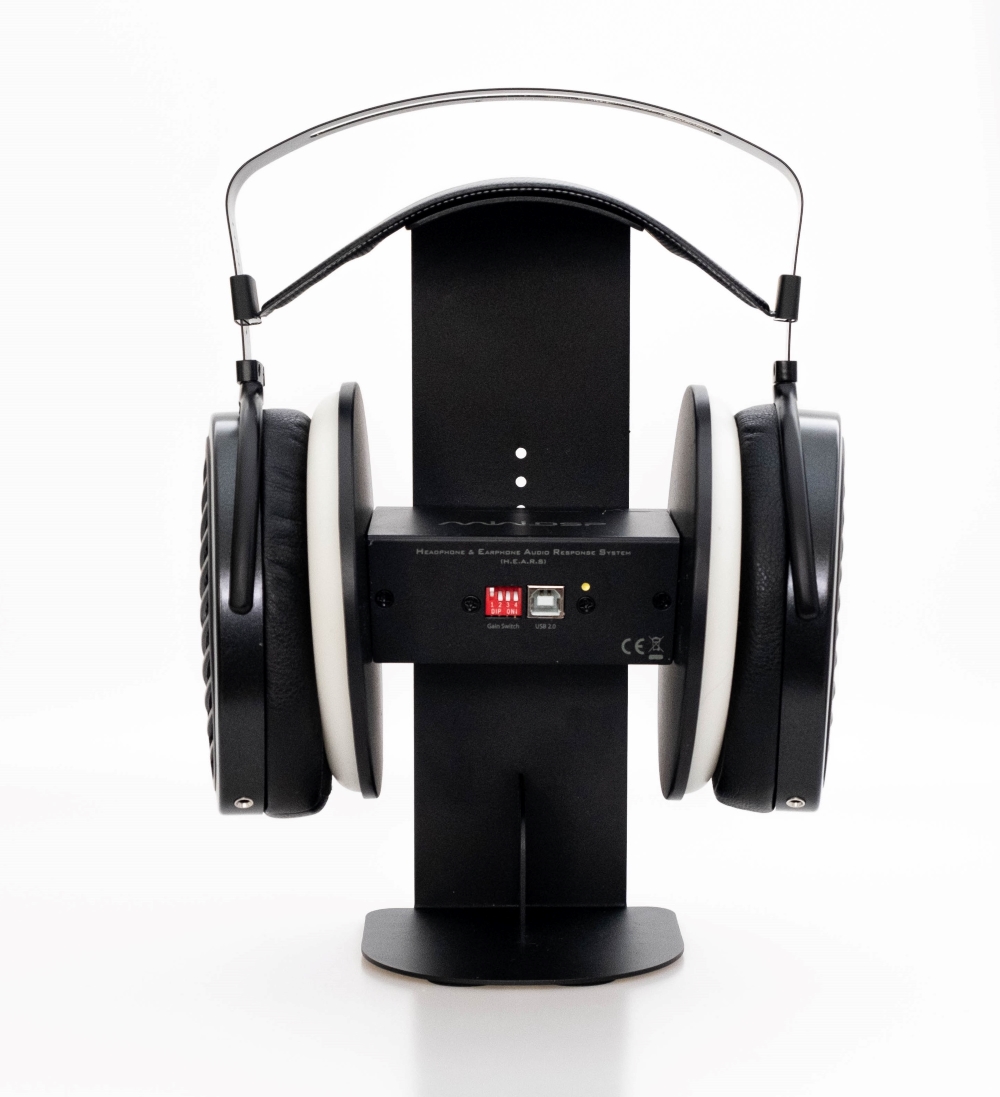
III. Midrange
This is what I am calling a typical planar-midrange as it is always sweet, musical, very enveloping but never overdone. It is neither too up-front or too laid-back, just perfect.
I felt this urge to listen to some old Jazz and moments later Dave Brubeck and Django Reinhardt were already singing sweet songs to me. How would you describe a life-like presentation that just breathes and never draws attention to it? This is basically how Arya is sounding in the midrange department.
Exactly like was the case with the bass notes, midrange is very transparent, it is super airy and linear sounding. I really like that voices are super outlined and textured, you can feel the vocal cords vibrating, don’t get me started with guitars and violins, let’s just say that they sounded just right from the get go.
Upper midrange sounded meaty and heavy, male voices sounded really imposing as they moved much more air around the room. Listening even to Leonard Cohen can send shivers right down your spine.
This is not your creamy, overdone, or dry midrange, nothing like that.

IV. Treble
Moving into the treble area I was prepared to hear a little bit of brightness but luckily with Arya that never happened as they have an excellent treble performance. Hifiman is specifying an 8 Hz to 65 kHz frequency response, sadly my measuring rig can’t go higher than 24 kHz, but up to that number treble is measuring really good and sounds as good. And yes, it goes past 20 kHz into the sub-sonic area where we can’t hear it but somehow, we can feel it.
There is a slight drop in the 4 kHz area that I consider insignificant, a 4 dB drop is Ok for a natural treble performance. I consider the treble performance of Arya excellent since it never rises above the bass and midrange level and truth to be told there are very few headphones that can do that.
As a result, treble is also airy, extended and detailed. Listening to some fast drum solos I was happy to hear clear and real cymbals, I was hearing its start and finish, not a single blob of muddiness. Treble is also biting and has a lot of presence and detail; however, it is never bright/harsh sounding.
In terms of frequency response this is among the best open-back headphone I had the pleasure of listening.
V. Transient Response
Truth to be told this is the only area where I think Arya is not performing top-notch but still quite good. The water-fall plot is also strengthening my claims, especially in the bass area.
Arya are still having a good thump and slam; it is just not on the same level with the best. Attack is good and speed of delivery is also good but slam and impact lacks a bit. They sound mighty good with normal paced and slower music, and just good with fast-paced electronica. I still very much enjoyed my time with fast metal or electronica, don’t get me wrong, it just didn’t knock me out of my chair.

VI. Soundstage & Depth
In terms of soundstage and depth, Arya with its huge driver assembly and with its window shade system sounds impressively open wide and deep. Mariana Trench deep? Yep, that deep.
Listening to Sara K – If I could Sing Your Blues I can swear I am having a cigar at a live performance, that trumpet sounds so far away from me it is like coming from outside my room, it sounds detached from the rest of the instruments, I am really curious how they achieved that.
Arya can push a lot of air and that is very apparent with basically any music you throw at them, the air bubbles between the notes are really huge that I can appreciate any note, its shape and texture. In regards to soundstage this is as open as it can be, with the right music it can be mesmerizing.
VII. Detail Retrieval
I like that Arya is showing all that important micro-detail information but in a non-aggressive way. Very non-Sennhseiser-HD800-like but natural somehow. It plays every small micro-vibration and detail but doesn’t scream: Look At Me How I Do It!
Paired with Matrix Element X and powered by the extra-detailed Benchmark HPA4 any air-mass moving around and every single tiny detail can’t hide away from Arya. Yes, Arya is very detailed and renders even tiny dynamic swings with ease.
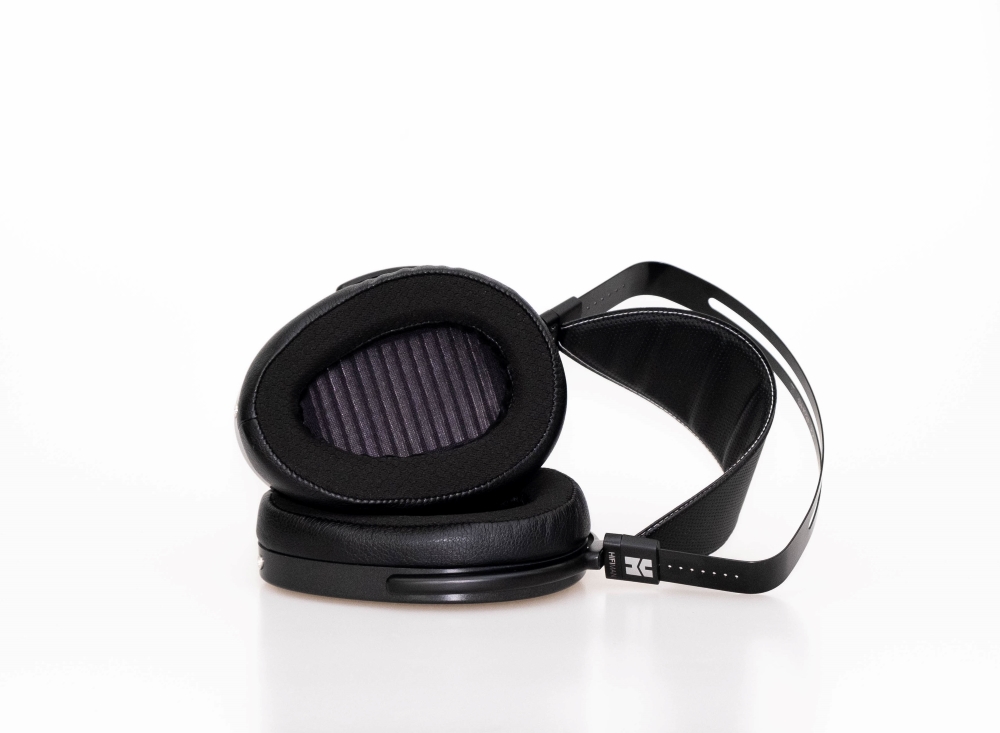
VIII. Dynamics
From the moment I started listening to Arya I knew they have something different from my other two headphones and that is dynamics. The difference between a low intensity sound and high intensity one is very big, so much that I needed to readjust the volume once per song. They possess better dynamics even than my Quad Era-1, which already did impressive in terms of dynamics.
Listening to some high-quality electronica can be really a mind-blowing experience. I’m having goose-bumps listening to such tracks and coming back from Quad Era-1 is quite hard being impressed by dynamics of other headphones.
IX. Power Requirements
Having a sensitivity of just 90 dB per 1mW at 35 Ohms, Arya are considered hard to drive. It is the hardest to drive headphone I have right now at my place. I need about 9dB higher volume setting on the HPA4 than my Quad Era-1 and about 11 dB higher than my Sennheiser HD660S so be careful about headphone amp matching. However, if your amp is up to the task, Arya will shine with impressive dynamics, wide spread soundstage and gobs of control and grip. Sadly, a portable source can’t make them truly sing, the pocketable FiiO M11 will bottleneck its performance, even my Headamp Pico Power is not quite up to the task. Volume wise Pico Power is Ok on the high gain, but dynamics are not impressive anymore and Arya will sound more closed-in.

X. Matchability
Since Hifiman Arya are very neutral with no particular dips or rises I really recommend a linear source and amplifier. A warm or dark sounding source and amplifier will work as well. I would probably stay away from loose, slow, bright sources and amplifiers. They worked fine even with a hybrid tube-based xDuoo TA-10, but transient response took a hit as it is making them looser sounding.
Of course, best results I achieved from the Benchmark HPA4 followed by Aune S7 PRO and the rest. Out of the Matrix Element X headphone out they again lacked in dynamics and overall enjoyment level. Arya is craving for a dedicated and juicy headphone amp that could offer them a lot current for goose-bump inducing dynamic swings.

Comparisons
Hifiman Arya ($1600) VS Quad ERA-1 ($800)
I will skip the boring stuff like the build quality and package contents. Arya is double the price of Quads and once you listen to them you will understand why.
Arya is offering at least one or two additional layers of dynamic range; Arya is having more micro-detail information and even an additional layer of sub-bass. In terms of treble performance Arya is completely in another league since it will render even sub-sonic information and has a much better upper-treble performance. There is a drop in the lower treble on the ERA-1 that makes them really easy-going and somehow smooth sounding. ERA-1 will not punish you as much if you are listening to lower-quality material, Arya will show everything be it good or bad.
Arya is also sounding more open, wider, more holographic and really envelops your head, ERA-1 is a bit more up-front sounding.
There is just one single thing that Quad ERA-1 is doing better than Arya and that is the slam. ERA-1 hits harder, on rock and electronica it can be too much at times, it will tire you down in the long run. If Arya would have the same slam and kick it would be the perfect headphone for me.
There is no point in comparing the Arya to HD660s since they will just obliterate them in every possible way.
Conclusion
A lot of time has passed since I heard a close to perfect headphone. The linearity and true to the recording nature of Arya of mind-boggling. Not only because it will please a vast majority of listeners, but because searching for a perfect mate in terms of amplification becomes much easier. Choose a super linear amp that offers gobs of power like the newest Headamp GSX Mini or Aune S7 Pro and you are good to go.
In terms of sonics there is almost nothing to complain about them. Hifiman had a really long way in planar-magnetic design and all those years of experience paid off bit time. Hats off to Hifiman for this impressive technical achievement!
Hifiman Arya can be yours for $1600 and you buy it directly from their web store.
PROS:
- Excellent comfort levels, you almost don’t feel them on your head
- Nice fit and finish, love the huge ear cup design and ear-pad material
- Impressive depth and pin-point imaging, very easy to focus on any note
- Open wide soundstage, most transparent sounding
- Airiest open-back planar-magnetic headphone I’ve tested
- Linear and neutral as a straight line
- Super extended in the sub-bass and sub-sonic treble regions
- Among the best dynamics a headphone can have
- Excellent detail retrieval
- Plastic cups, pleather headband and ear-pads
- Not that easy to drive
- Slam is good but not the best
- DACs: Matrix Audio Element X, Matrix Audio X-Sabre Pro, Mytek Brooklyn DAC+, KECES S3, Burson Swing
- Headphone amps: Benchmark HPA4, Aune S7 PRO, Erzetich Bacillus, Headamp Gilmore Lite Mk2
- Full-sized headphones: Hifiman Arya, Quad ERA-1, Sennheiser HD660S
- Loudspeakers: KEF LS50W
- Interconnects: QED Reference XLR, Aune AL3 XLR
- Power Cables: Isotek EVO3 Premier
- Balanced Power Conditioner: PLiXiR Elite BAC 400, KECES BP-600

Khronos
As interesting as it seems it's, well, Hifiman. Beautiful, good sounding headphones, heck, it defeats the Eras which you said can go toe to toe with an LCD-4. But... Hifiman...
Pah, the Kaldas RR1 is coming out and is said to be 90-95% SR-007.
Pah, the Kaldas RR1 is coming out and is said to be 90-95% SR-007.
iBo0m
Great review in every aspect! I can second that drive Arya may get tricky sometimes 

DarKu
Reviewer at Soundnews
Pros: High comfort levels, solid build quality
Impressive tonal balance, very rich and full sounding
Wide spread and deep sounding
Airy presentation with awesome pin-point imaging
The most FUN headphone I have listened in a very long time
Ideal frequency response (for me)
Tremendous slam and transient response
Impressive tonal balance, very rich and full sounding
Wide spread and deep sounding
Airy presentation with awesome pin-point imaging
The most FUN headphone I have listened in a very long time
Ideal frequency response (for me)
Tremendous slam and transient response
Cons: Boring design
Cable textile material peels off fast
Not the most detailed headphone
Cable textile material peels off fast
Not the most detailed headphone
What speaker brand comes to mind first when I say electrostatic speakers? For us Europeans it’s most probably Quad and for Yankees it is most probably Martin Logan.
I still remember searching for a nice floor-stander that works with rock music and Quad ESL will always pop into that list.
Since the headphone market grown exponentially in the past years, Quad decided to have a small slice of that huge pie.
The weird thing is that Quad decided to go with a planar-magnetic design and not with an electrostatic one. I’m however very glad they chose this (rightful and dangerous) path. I don’t like to fiddle with additional electronics just to listen to a pair on headphones, I’m sure Quad had the same thought.
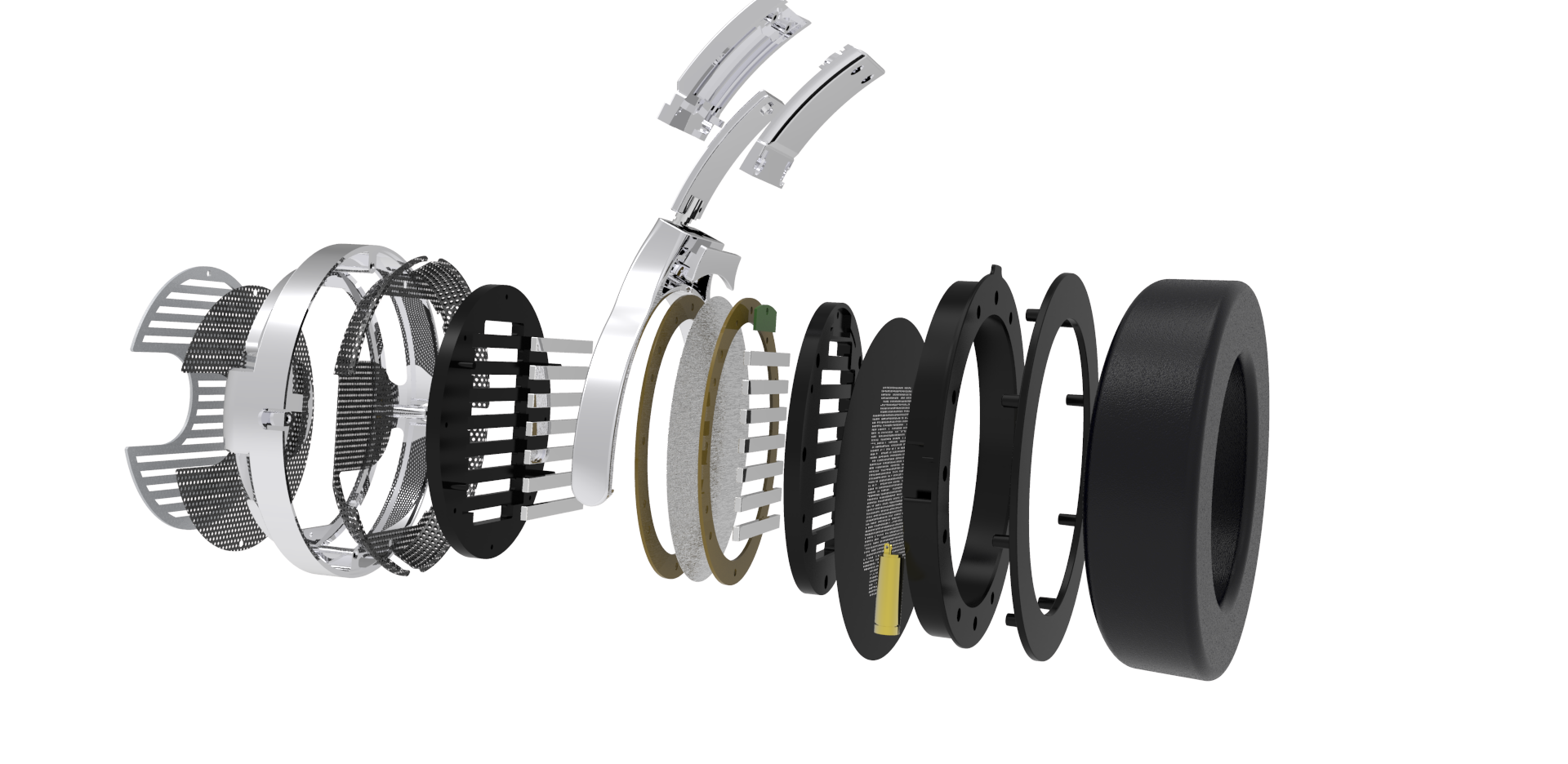
Technology inside ERA-1
Quoting Quad: “To create the ERA-1 – the company’s first-ever headphones – Quad developed a planar magnetic driver delivering a fast, open and transparent performance. The resulting sonic realism and fidelity to the source is fully in keeping with the brand’s heritage, displaying qualities akin to the famous ESLs.”
The Quad ERA-1 is an all-in planar-magnetic/ortho-dynamic (say it as you please) design that incorporates an ultra-thin, electrically active diaphragm – thinner than a human hair yet extremely strong and highly elastic, weighing less than the volume of air it displaces. This is fused with a precisely arranged magnet system, designed to maximize sensitivity and consistency of the applied force over the driver area.
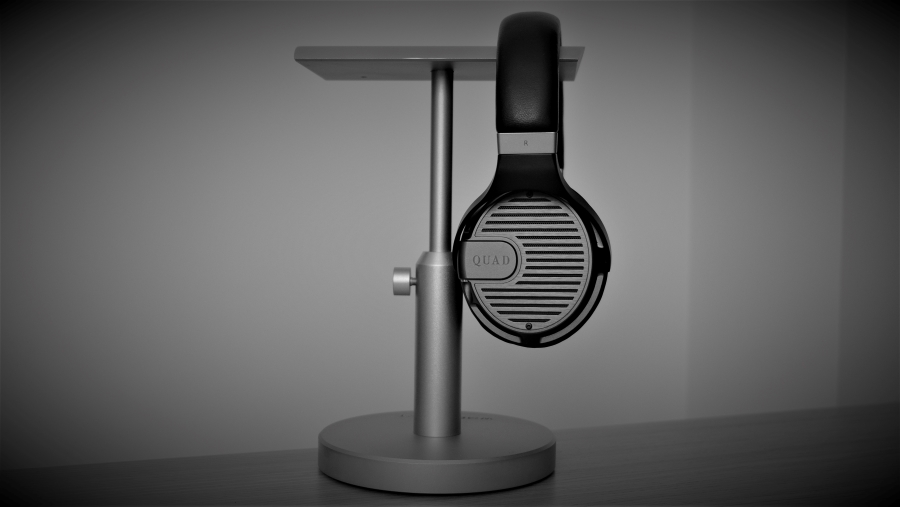
Build quality and appearance
Design wise I do find ERA-1 quite non-original and plain looking, nothing too fancy in my opinion. Put them close to 100 USD headphones and they will most likely look the same.
At 450 grams they are somewhat in the middle-weight class, but due to nice weight distribution I can wear them for hours. They are definitely much more comfortable to wear than Audeze’s but not as comfortable as Sennheiser offerings for example.
I find their yokes very weird, I have a larger head than usual and I am still at default zero position, for my wife for example the ERA-1 are too big to wear and they will not stay put. Normal heads will have a hard time finding a nice sturdy fit. I thought Chernobyl was far away from UK, guess I was wrong. Do Quad guys have larger heads than usual? Audiophile God knows…
In terms of build quality that is a different story, the construction seems mostly metal, headband is leather made, there are only few plastic pieces, here and there. Two pairs of pads are found in the package that look premium to me. There is a velour pair and a leather pair, conically there is a clear difference between those – patience my friends, in due time.
Cable is detachable, quality is quite nice, without microphonics whatsoever, it is quite sturdy and flexible.
I just don’t like that in only one month of use the textile material at the 3.5mm termination that goes into the headphones is peeling already. I already ordered an extra cable…not a good sign.
There is also a very nice carry/protective case - made of hard plastic, it will 100% protect accidental drops, I know, happened already.
What more can I say? Not a big fan of the looks, love the craftsmanship.
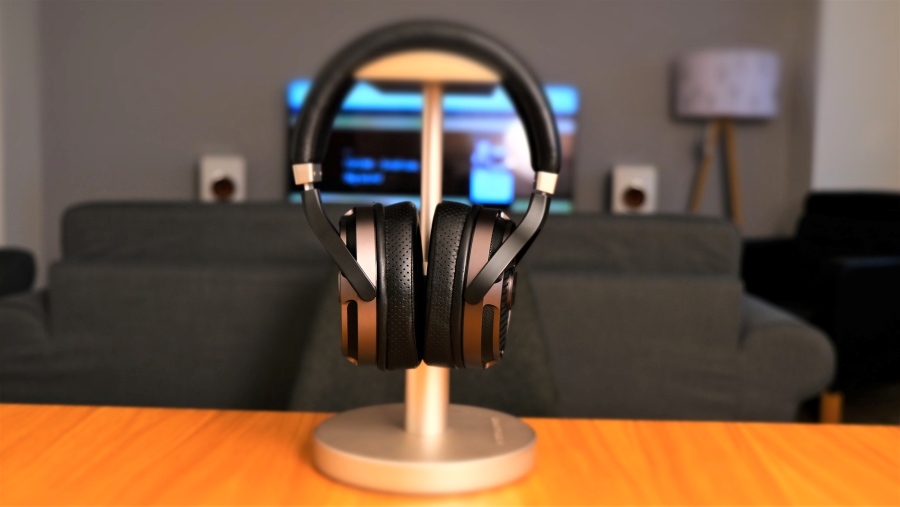
Pressing the play button
Sincerely, I was not prepared to this kind of sound, especially at 800 USD/700 EUR
How should I put it…my former planar-magnetic headphone that I purchased and used for quite some time was a pair of 4000 USD/4100 EUR Audeze LCD-4 and all in all I do believe Quad ERA-1 can stand shoulder to shoulder to LCD-4 on almost every technical aspect.
I almost forgot how fun headphone listening experience can be. ERA-1 have something that really not a lot of headphones can offer. You just want to listen to them as much as possible with a stupid smile on your face.
Funny thing is that every time I listen to some other headphones, desktop, portable or in-ears, I always want to compare them to Quad ERA-1, as slowly but surely ERA-1 became my benchmark headphones for listening pleasure or for comparisons.
Let me start from the start what I think really shines on Quad ERA-1 and what sucks.
Before moving into the frequency response ERA-1 has very high levels of transparency and depth. It is a night and day difference between them and a pair of Sennheiser HD660S or Audeze LCD-2 (original) that I have besides me.
I just feel like sounds are coming towards me in a much faster and clearer way, until they reach me I am not losing definition, texture, outline, or energy of said notes.
There is also a huge void between all musical notes, I can listen to individual notes even in very crowded passages, try doing that with a pair of HD660S or LCD-2, I wish you good luck.
Soundstage size is not huge but much bigger than sub 1000 USD open-back headphones I listened in the past. Even rock and metal tunes have a much wider & open stage compared to regular open-back headphones. Think of a smaller stage than Sennheiser HD800 but a much more defined, clear and sharp.
What excels with ERA-1 is actually a combination of multiple factors that as a whole makes them truly special: Crazy speed & impact, tremendous slam, good transparency and depth, great tonal balance without noticeable flaws and very easy to drive especially for an ortho-dynamic headphone.
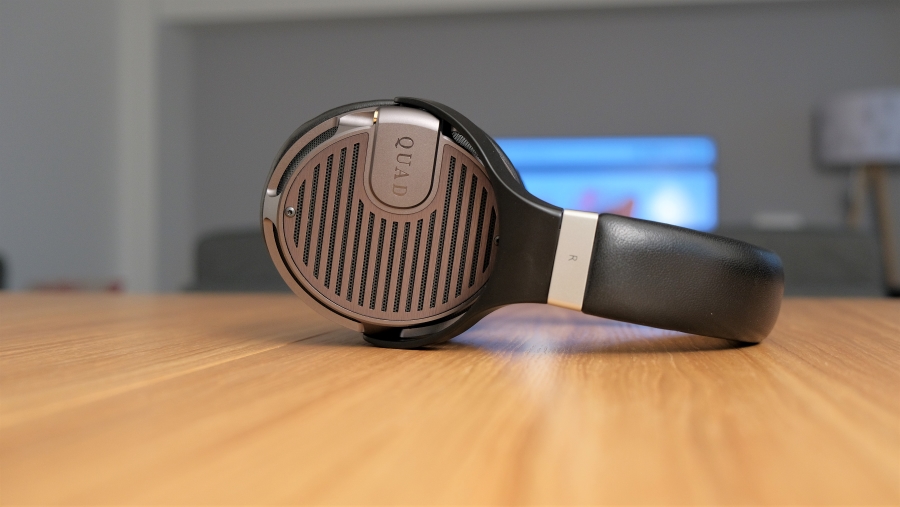
I’ll be honest with you, I didn’t want to listen to metal music with this one, but boy! I just couldn’t. Up until now I think these ones are the best metal and rock headphones, it is like a much easier to drive Audeze LCD-4 with improved slam, speed and impact.
Playing Tarot by Aether Realm was like I am listening to a different, much better mastered version of this album. Everything just clicks into place:
Toe tappin’? Check!
Headbangin’? Check!
Stupid smile? You bet!
Fun factor just goes through the roof for every track I play on them. There is rarely a headphone or a speaker I am reviewing that I forgot I need to write some words down. I just lean back and enjoy every minute of it.
Bass notes are reaching sub-bass levels even with most demanding music and have awesome sustain.
The good thing is not that ERA-1 has cool sub and mid-bass levels, but how clean and pure bass notes can be. I hate deep but dirty bass, slow and boomy subwoofers. ERA-1 has deep bass, with slightly boosted mid-bass but the whole bass thing is clean, on electronica tracks multiple layers and sub-layers of bass notes can be heard, even Audeze LCD-2 doesn’t have such a clean and precise bass response and to think that for a long time LCD-2 was a bass lover’s dream open-back headphones.
On lowest registers ERA-1 has very low levels of distortion and can sustain them for a very long time.
Bass notes besides going deep and sounding clean, have a much-needed slam that I craved for a very long time. Put it this way, with the right headphone amplifier ERA-1 has top-level slam and impact, possible the best slam I’ve heard on headphones… If bass is your thing, please try once the ERA-1 from a desktop rig, you will not be disappointed.
There were times when I felt that bass notes would just grab me and pound my body into walls like its nothing, crazy pleasant masochistic experience.
To be completely clear, this is not a bass-head headphone! It is just slightly elevated for a linear experience, but it is so involving, so present, so pleasant, I can’t have enough of it and I am not a bass-head, mind you.
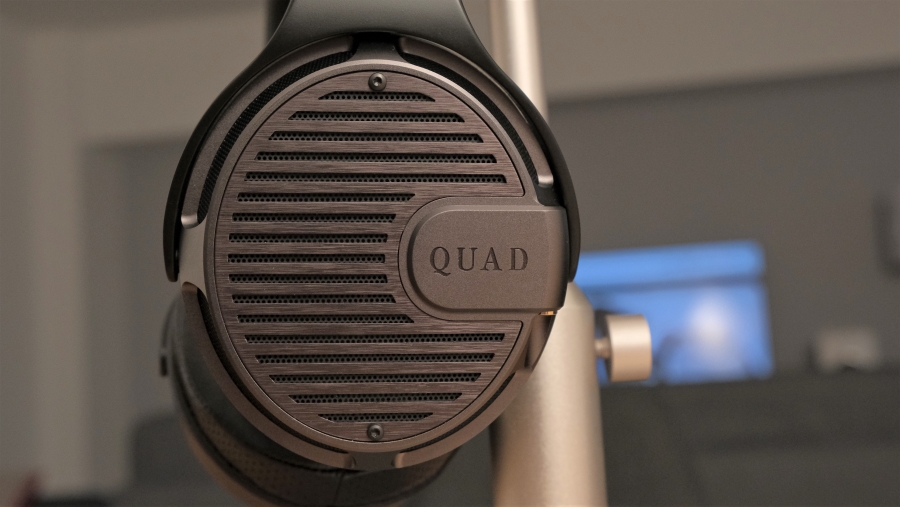
Midrange is what I am calling the typical planar-midrange, or among the best midrange you can have in a headphone kingdom for short.
Midrange performance is much closer to Audezes than to HifiMans or Sennheiser midrange.
It is more on the natural side of things with the right amount of presence and texture.
Ever since I parted my ways with Audeze LCD-4 I craved for that soul-ripping midrange performance, I always felt Audeze headphones have among the best midrange, that with the right music just grabs your attention and puts you into nirvana.
ERA-1 is very much like that, sans the excessive creaminess and forwardness Audeze headphones are having.
Midrange is not in your face, much more spread around the listener but with the same seductive character the best planar-magnetic headphones are having.
When it comes to midrange density, ERA-1 have more than enough meat to the bone, not as heavy-weight as Audeze’s. Acoustic music will always have a natural flow and the texture of said musical instrument can be felt. Violins and guitars will not sound plasticky or fake, but always believable and natural.
If you expect me to say the treble is where ERA-1 sucks, I will (again) disappoint you.
That is because ERA-1 have among the clearest, purest and unaltered treble response, without being overdone or subdued.
When I just received them, they were just a tad hot in the treble area and the slam was not as crazy good as it was after about 50 hours of burn-in.
In general, with planar-magnetic headphones I observed much smaller changes after burn-in compared to dynamic headphones. However, ERA-1 are slightly different, they will sound at their best after few hours of playtime, after about 50 hours the difference became much smaller.
Treble hotness is luckily completely gone but the treble cleanness remained.
Now, in my opinion treble area is very different compared to other planar-magnetic headphones I tried in the past as it is much clearer, very extended to the subsonic levels without being harsh and sibilant.
For the record ERA-1 are not as hot as Sennheiser HD800 or Beyerdinamic T1 and are not having the nasty 6-8 kHz peak that made me sell the other two.
Due to lightning fast transient response cymbals and double drums sounded clear and outlined, with just a right amount of zing and vibration. The transition from upper midrange to lower treble is done in a smooth fashion with just a small drop in the upper midrange.
ERA-1 are not tiring in the long run and can be listened to long hours. I can’t call ERA-1 smooth sounding, it is more an abomination as it sounds aggressive and smooth in the same time, quite unique, really.
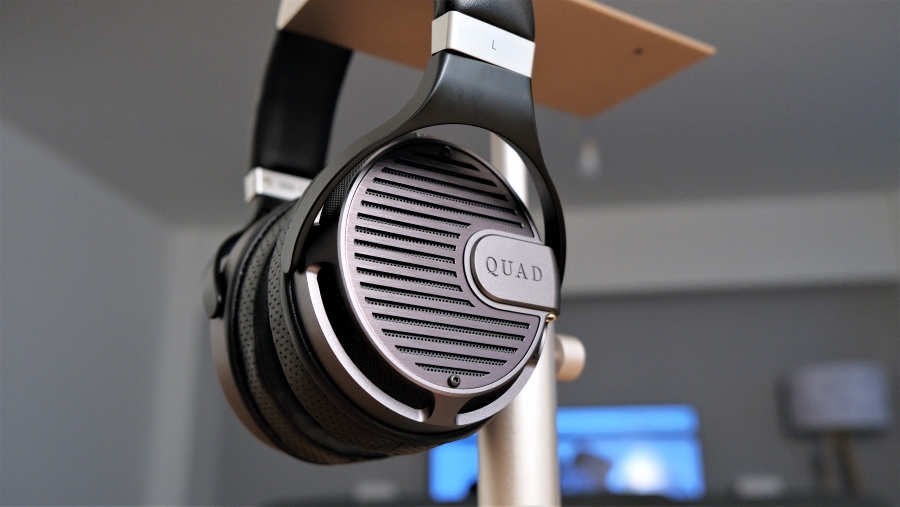
Power requirements
Quad states that ERA-1 have a sensitivity of 94 dB per one mW of power, it also has a nominal impedance of just 20 Ω, for a planar-magnetic headphone this is very unusual.
All my former planars needed gobs of power and most of the time you would end up be very limited by portable solutions. ERA-1 are very different in this regard.
Even an ordinary portable digital audio player (DAP for short) can drive them, of course for a good speed and control a more powerful one will be needed, especially the ones that provide a balanced connection will sound best with ERA-1.
Even my tiny FiiO M6 worked better than I anticipated with them. I think Audeze, HifiMan and JPS Labs should learn a trick or two from Quad, I wish all planars would be this easy to drive. Most of my former planar-magnetics didn’t work that well with hybrid or all-tube headphone amps. ERA-1 are (again!) different as the xDuoo TA-10 worked really good with them and didn’t turn them into garbage. However if transient response and slam is your thing, I do recommend a 100% solid state all-discrete headphone amp for the best results.
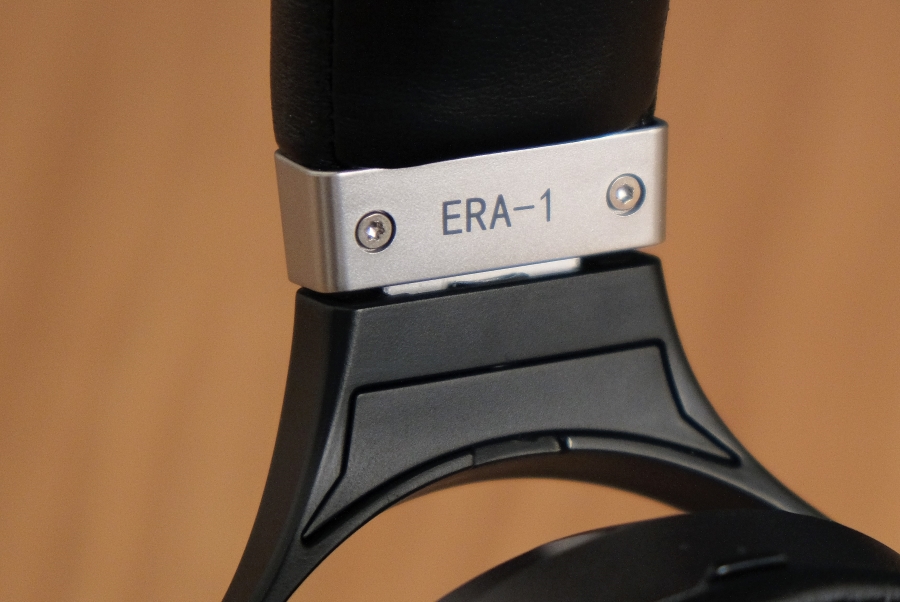
Comparisons
I have a loaner Audeze LCD-2 (original ones) that I compared to Quads, so here we go:
Audeze LCD-2 OG (1000 USD) vs Quad ERA-1 (800 USD)
In terms of aesthetics and build quality Audezes win big time. Wood + metal + leather, mini XLR headphone jacks, sturdiest carry case, you just cannot go wrong with them.
Now, in terms of sound quality, LCD-2 have the same depth and maybe soundstage. However, LCD-2 sounds much dirtier and transparency is thrown out of the window. I am listening to good or bad mastered music doesn’t matter much, as it will always sound meaty, heavy-weight, slow and a bit dirty.
LCD-2 have worse sub-bass layers, an elevated midrange performance and subdued treble response. LCD-2 are great on midrange, good on bass and weak on everything else. LCD-2 can also be overly smooth sometimes.
What really kills it for me is that LCD-2 have weak transient response and to awaken them you will need a big ‘n heavy balanced headphone amp, preferable solid state.
Quads ERA-1, are much faster, are much more stable in terms of frequency response as I am hearing few additional sub-bass layers and much more information up top. ERA-1 have a better slam and transient response and are much closer to a reference sound. Fun factor is again where ERA-1 excels and cannot be beaten.
Since my TV is not mine anymore and Cartoon Network, Boomerang and Minimax are the main channels, I needed a headphone that I can use in front of my PC to watch few shows and movies, enter my Sennheiser HD660S, so here we go:
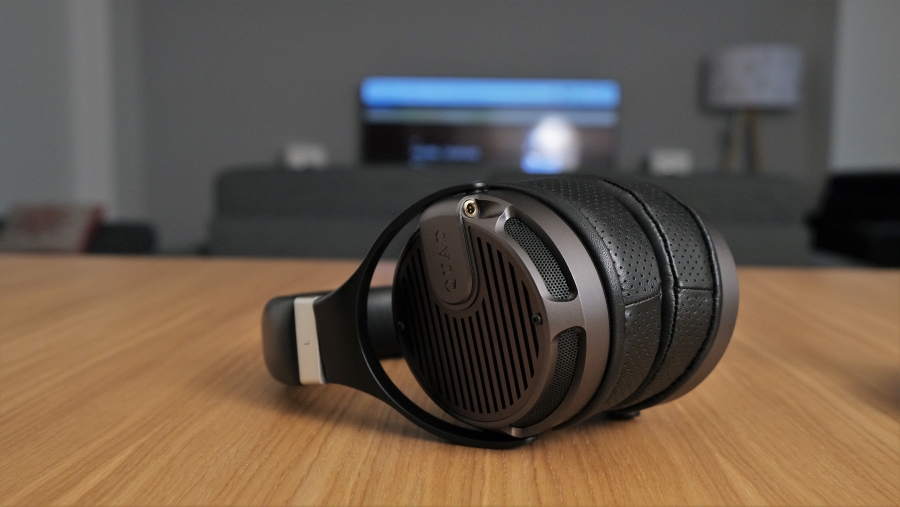
Sennheiser HD660S (500 USD) vs Quad ERA-1 (800 USD)
In terms of build quality HD660S are nice but not ERA-1 nice, HD660S is made out of plastic with just a metal band and grille. However, HD6xx series proven to be very resistant and stood the test of time. My 12-year-old HD600 that I gave to a friend are still going strong and don’t want to die, HD660S should be the same. ERA-1 have better materials, my only gripe is the cable, more exactly the textile surface that peels already.
In terms of sound performance, HD660S sound tinier with worse soundstage and depth, it is very up-front by comparison, really. HD660s has a nice midrange, a good mid-bass and treble response. However, ERA-1 is doing all that at a higher level, there is just more or everything. ERA-1 have just overall more information, are sounding more open, deeper and more natural. HD660S are not bad by any means, ERA-1 is just overall a better headphone.
Sheep skin earpads vs Velour earpads
I prefer the leather earpads by a large margin. With them I am getting much better driver control, especially in the bass area, sub-bass also is improving considerable and the treble hotness goes away. Also, the pin point imaging is improving resulting in a better depth.
Velour ones are making the treble hotter and the overall sound signature becomes not as focused and speedy, smoother in a way. Some might prefer the velour ones.
Ok fellas, all good and dandy but what actually sucks with ERA-1? It sucks, that I want to buy a second pair…on a more serious note, in terms of best of the best ERA-1 are not detail monsters and will not deliver Sennheiser HD800 like details, maybe it is for the best to stay this way? I don’t know.
ERA-1 have great transparency, sound very clean without being grainy or muddy, it is just on the micro-dynamic level there is some information that is missing with this one. Seriously, sound-wise, this in my only gripe with them.
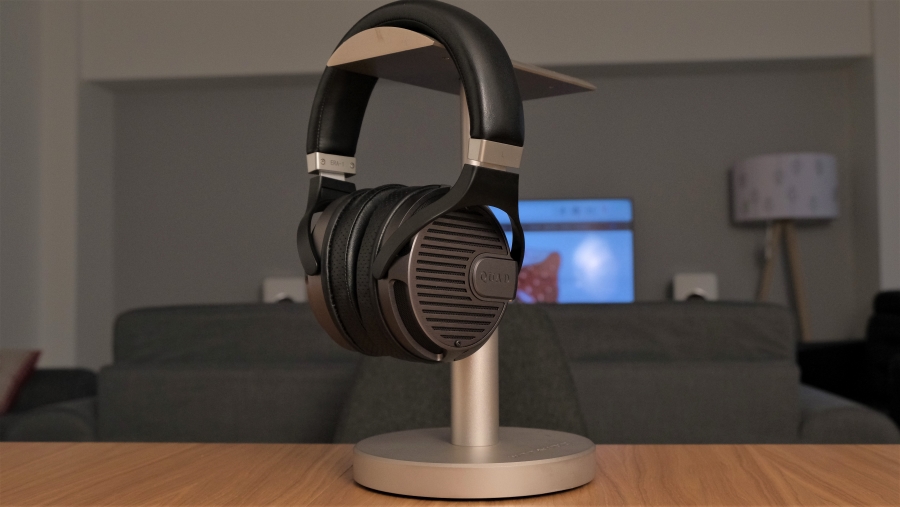
Conclusion
Is the ERA-1 the most linear and true to the recording headphone? Hell no.
Is the ERA-1 the most articulate, impactful, joyful and fun to listen headphone? HELL YES!
I liked almost everything about them, disliked only the boring design and the cable, everything else rocked my world and up to this day this is my most recommended headphone for a fun and pleasant experience. Listening to music should be really only this way.
For a first attempt Quad seriously impressed me and I am looking forward to their future headphone designs.
Quad ERA-1 killed it for me in terms of slam, frequency response, cleanness and fun factor! I for one believe ERA-1 is the best sub 1000 USD/EUR headphone out there and can stand easily shoulder to shoulder to multi-thousand USD/EUR headphones.
PROS:
- High comfort levels, solid build quality
- Impressive tonal balance, very rich and full sounding
- Wide spread and deep sounding
- Airy presentation with awesome pin-point imaging
- The most FUN headphone I have listened in a very long time
- Ideal frequency response (for me)
- Tremendous slam and transient response
- Boring design
- Cable textile material peels off fast
- Not the most detailed headphone
- Headphones: Quad ERA-1, Audeze LCD-2 OG, Sennheiser HD660S
- DACs: Matrix X-Sabre Pro + X-SPDIF2, Burson Playmate, xDuoo TA-10
- DAPs: FiiO M6, M9
- Headphone amplifiers: HeadAmp Gilmore Lite MK2, Pico Power, Burson Playmate, xDuoo TA-10
- Cables: Burson Cable Pro+, Kimber PR8, QED Reference interconnects
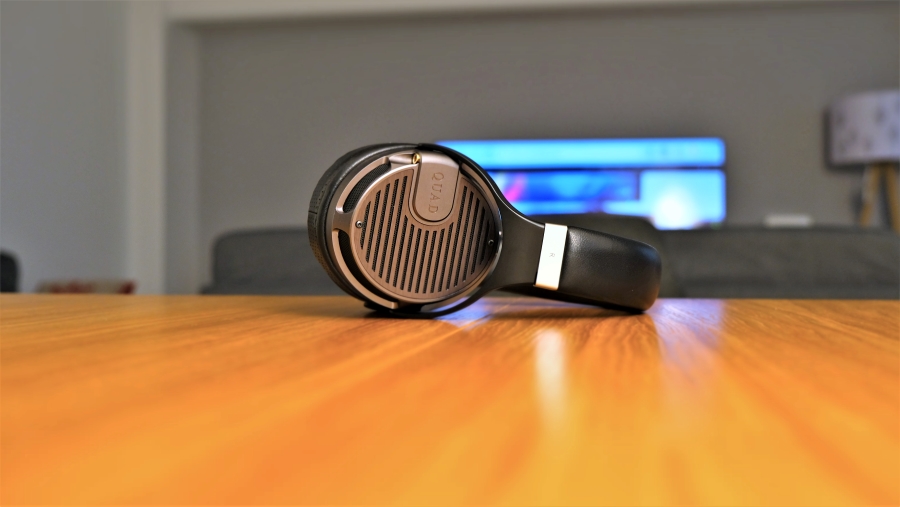
nar53
Great review thank you. I'm looking for something to upgrade from my beloved 18yr old+ HD600's & as a Brit & having grown up around Quad kit I was so pleased to find these ERA-1's. There don't seem to be many reviews out there but I reckon yours has given me the confidence to pull the trigger. Oh & I'll be running them on my Mac via Schiit Modi/Magni stack. 
nar53
Oh & I enjoyed you YT vid too thank you.
DarKu
Reviewer at Soundnews
Pros: The most extended frequency response
Deepest bass, most extended treble
Zero harmonic or any kind of distortion even at 100% volume
Mariana Trench deepness and open wide natural soundstage
Genre Master: everything sounds exceptional
Lightning quick transient response, slams like thunder
Most natural fluidity and smoothness
Most feature packed headphone amplifier on the market
Magnum Opus in terms of headphone amplifier sound and design
Deepest bass, most extended treble
Zero harmonic or any kind of distortion even at 100% volume
Mariana Trench deepness and open wide natural soundstage
Genre Master: everything sounds exceptional
Lightning quick transient response, slams like thunder
Most natural fluidity and smoothness
Most feature packed headphone amplifier on the market
Magnum Opus in terms of headphone amplifier sound and design
Cons: The price tag
Before starting my actual review, I just want to remind you that headphone listening at the Hi-Fi level is a big part of my life. I purchased my first headphone amplifier back in 2006 when just mentioning “a headphone amplifier” in the audiophile circles would rise both eyebrows and suspicion of sanity, today having one is a must have if you care about headphones in general. Since then, I am swapping headphone amps quite often, since all of them had small or big flaws.
I was a solid-state guy, then I moved to tube-based designs, then I moved back to solid state electronics and I think I will remain devoted to them for their precision, timing and control.
Today, is a very special day for me, since I believe I am hearing the best overall performance out of my headphones and the distance performance-wise between HPA4 and my second-best headphone amp is Night and Day!

It all started just few years ago when an American company known for it surround technologies and high-fidelity audio and visual reproduction standards for movie theaters announces a breakthrough amplifier circuit called Achromatic Audio Amplifier (or AAA for short). That company is THX, Yes, that one.
So, what is so special about it and why should you care about it? The shortest answer is that this AAA patented feed-forward error correction topology will nullify conventional distortion to unprecedented low levels that were never achieved until this time.
In layman’s terms it means this THX AAA based amplifier will have the lowest noise available and the higher signal-to-noise ratio for the best dynamic range.
Remember TPA6141 based high-end headphone designs? Or the ones based on OPA1622 or LME49600? Does this ring a bell to you? I am seeing those chips very often from mid-range to high-end headphone amps and that is because theoretically speaking in the best ever scenario those can achieve up to -130 Total-Harmonic-Distortion (THD) – an impressive number if you ask me.
The thing is, those mad scientists at THX developed the AAA-888 chips that can achieve almost -150 db of THD! A 20 dB increase in SNR was unheard of!
Here is a graph that will tell you more about the performance of THX chips compared to its best competitors.

THX developed 3 ranges from mobile products, to audiophile and super high-end designs. I’m attaching another graph that will tell a bigger story.

Remember the Massdrop X THX-AAA-789 headphone amplifier that made big waves in the headphone community, that is still out of stock to this day? That one is powered by THX-AAA-788 chips.
However, what I am testing today is the only headphone amplifier on the marked that is based on the top of the line dual-mono THX AAA-888 chips.
Ladies and Gentlemen, please meet the mighty Benchmark HPA4!

Inside the Box
Unboxing experience is quite good, it came double boxed of course, HPA4 is protected by a thick foamy roll-cage, very much like other components of this caliber.
Inside you’ll find a locking power cable (a first time for me), a mini to mini analog cable (1/8” to 1/8”) working as a 12V trigger cable between HPA4 and other Benchmark made audio components like their DAC offerings, there are also two spare fuses and an optional metal remote control (a 100 USD accessory).
After seeing the 58-page instruction manual, I realized how serious Benchmark is about their products and I sincerely recommend checking it out since I learned few tricks from it.
HPA4 comes in two versions: in an all-black anodized aluminum case that I am having today or one with a silver face-plate. I think I like the silver one the most, but I didn’t have a chance to choose and got the black one.
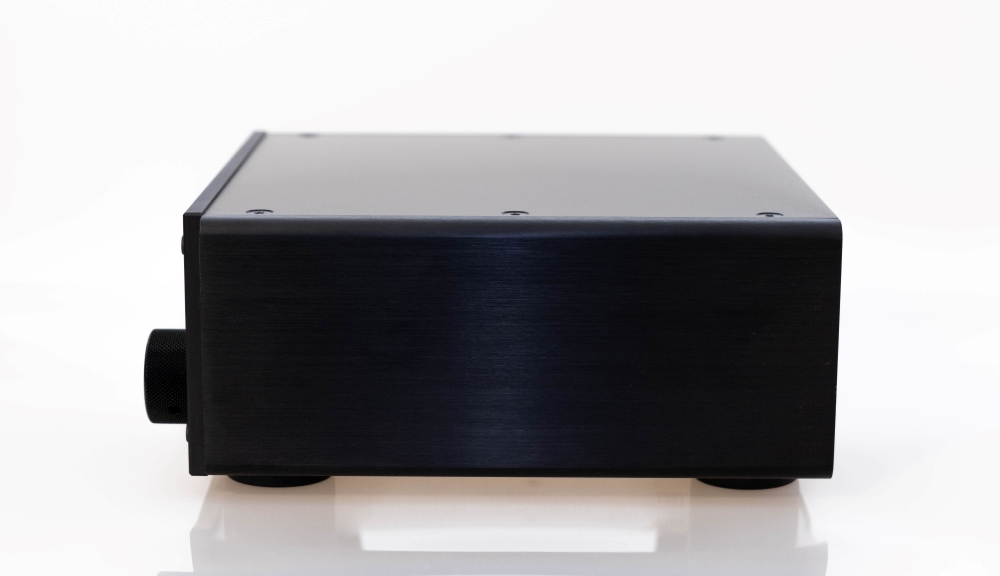
Design & Build Quality
Like other audio components designed and made by Benchmark, HPA4 has an impeccable build quality top to bottom.
The thick metal case works as a giant heat-dissipation system, even the front panel uses a thick aluminum cover.
The amp has a quite small foot-print, it is smaller than Aune S7 PRO and much smaller than my former Audio-GD Master 9 reference headphone amp. Being compact it can be easily integrated into tiny offices; I think it looks impressive put on top of the DAC 3 HGC.
At this size it is quite unusual having 8 lbs (3.7 kg) weight, small body but heavy weight for sure.
The CNC milled front panel houses a very big and feature packed touch-screen LCD, a ¼” (6.35 mm) single ended headphone out, a 4-pin XLR balanced headphone out, a standby/mute button and a very special 256 step fully-balanced relay-controlled volume pot, will write about that one in a minute. Underneath it 4 massive rubber feet can be spotted; those will surely absorb any unwanted micro-vibrations.
I didn’t know I would love the touch-screen so much, it is incredible how many features and settings can be controlled from there. I never seen such an advanced feature-set on a 100% analog headphone amp. From there you instantly mute any of the output, you can instantly lower the output by 20 db, select the desired input or output, you can even rename the analog inputs so you know what are you listening to. If your audio source has a lower power output, you can boost its signal by up to 10 db, or in case your source has super-hot power output, you can lower it down by 10 db. There are other, many other settings that I will skip for now.
I dreamed of a headphone amp that would have two balanced XLR inputs on the back so I could connect two balanced sources at once without even touching the cables or rearranging my setup. So far, HPA4 is the first amp to offer me that. Now, the absolutely coolest thing is that is has another 2 pairs of unbalanced inputs for a total of 4 pairs! In a speaker-based system it will offer an unbalanced output, a balanced stereo output, and a mono output. There are also two 12V triggers in case you’ll want to attach it to other Benchmark components and control all of them with a single remote. That’s neat! isn’t it?

Technology inside HPA4
So far, HPA4 is the first THX-AAA-888 dual mono equipped headphone amplifier on the market and as such it doesn’t have any real competition. HPA4 is truly a no compromise pre-amplifier and headphone amplifier and Benchmark is offering a bunch of measurements to prove that.
THX AAA modules are reducing harmonic, intermodulation and crossover distortion by 20 to 40 dB offering a true to life, realistic and fatigue-free listening experience. It accomplishes that by using a patented feed-forward topology to null conventional distortion and noise levels, resulting in the world’s most linear amplifier. THX AAA allows the amplifier to reach its maximum output power and SPL without production distortion that normally would happen in traditional amplifiers.
The THX-888 chips will deliver up to 6W of power into 16 Ohms, up to 11.9 Vrms into 300 Ohms and up to 1.5 Amperes! Since you can easily damage your headphone with those numbers, Benchmark incorporated several protection systems to avoid that from happening.
These include DC detection, short-circuit detection, over-current protection, over voltage protection and thermal protection. There isn’t a single headphone amp on the market that will offer the same protection systems. I’m loving it already!
All that power will mean nothing if there isn’t a wide bandwidth and speed to deliver all that instantly to your headphones or to the power amplifier. The bandwidth of HPA4 extends from 0.01 Hz to over 500 kHz! This means HPA4 will deliver a very precise amplitude and phase accuracy over the entire audio bandwidth. It seems it’s time to upgrade my hearing apparatus with bat ears…
Since a uber-low noise amplifier will need an uber-low noise volume pot to preserve all the dynamic range and all the bits of the digital source, Benchmark developed an advanced relay-controlled volume pot. In short, it all was possible by using four 256-step relay-controlled attenuators and another four 16-step relay-controlled boost amplifiers. Together these are forming two fully-independent and fully-balanced stereo volume controls. One dedicated for the line-out (pre-amplifier) and one for the headphone amp. Each has a +15dB to -122 dB range in 0.5 steps. The volume controls feauture very high-precision metal film resistors (0.1% tolerance), gold contact relays and fully buffered inputs and outputs. Did it catch your attention yet?

Test Equipment
Once I borrowed the HPA4 I thought why not try the DAC3 HGC as well and use both together. Since HPA4 has 4 analog inputs on the back I thought why not use another 2 digital sources and have a fun evening comparing all the sources.
In the end my test equipment resumed at: Benchmark DAC3 HGC, Matrix X-Sabre Pro, Matrix Element X and Mytek Brooklyn DAC+ all connected to the HPA4. I mostly listened to Audeze LCD-4Z and to Quad ERA-1 headphones via the balanced output, but for fun I also tried a pair of Sennheiser HD660S and few very sensitive IEMs that I am fond of.
Before listening to some tunes Benchmark strongly recommends bypassing the volume control of you digital or analog audio source and leave all that to the advanced and precise volume control of the HPA4.
If you have a Benchmark DAC 1, 2 or 3 of any type you will also need to do the following steps:
- Connect it to the XLR-1 input of HPA4, go to the remote settings in the menu and select “Benchmark DAC on XLR1” so you can control both with the same remote.
- The internal output jumpers of DAC1, 2 or 3 will need to be set at 0 dB
- On the DAC1, 2 or 3 on the front panel press and hold for 3 seconds the DIM/MUTE button until the motorized volume pot moves to the 2 o’clock position and the HT led-light engages
The same should be done with your other digital or analog sources, bypass the volume or max it out.
OK fellas, its time to take a listen.
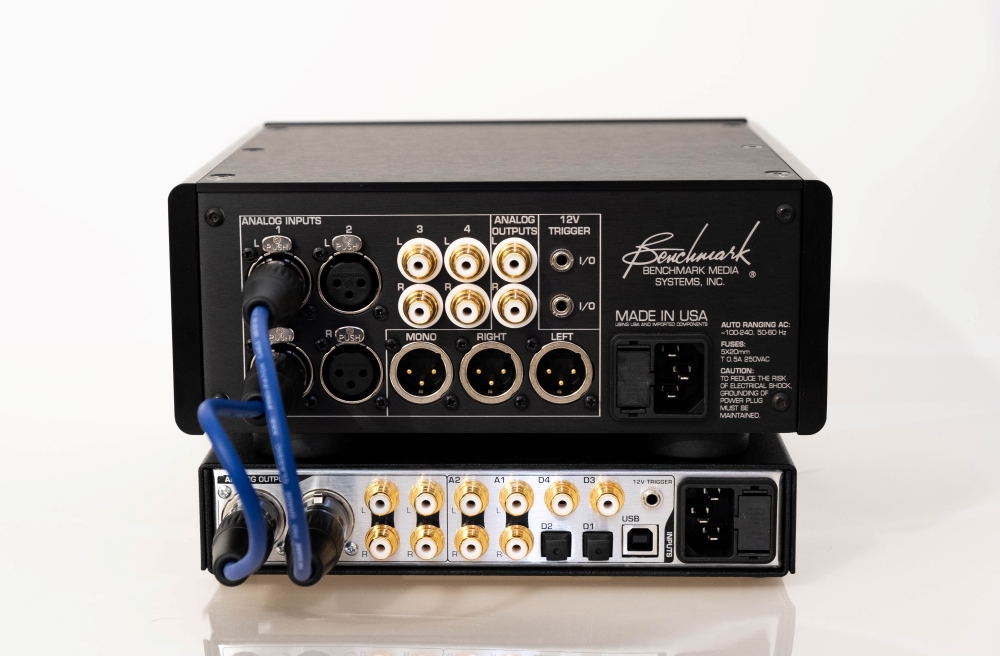
Sound Performance
The biggest compliment I can give to it is that I felt like I upgraded my personal Matrix X-Sabre Pro 1800 USD DAC with a much pricier one as it doesn’t sound at that price anymore!
It never crossed my mind that I will hear new nuance, more hidden information out of my favorite tunes that I am listening to more than 15 years. Every single track I played shown me that there is much more that meets the eye (the ear?), every note was better defined, having a very strong leading-edge like I never heard before. It is like my favorite bands suddenly improved their recording and mastering equipment, there is more of Everything.
Upon receiving it and powering it On, a positive energy rushed into my blood-stream as I felt like am listening to a real-life performance without a single trace of grain or harshness. At last and I don’t need to close my eyes anymore to hear all that hidden information and tiny amounts of air moving in the room.

Resolution & Transparency
When it comes to transparency and resolution HPA4 is doing all that on a such a level, that the second best headphone amp is miles away from it. Words of praise are not enough to tell you how transparent and believable HPA4 is sounding. I just upgraded my source and headphones as well to the highest possible level.
When I tested the Headamp Gilmore Lite Mk2 I knew I was hearing something special in terms of transparency and resolution, but HPA4 trounces it like it’s nothing. Put it simply this way, with HPA4 you will be listening to your source and nothing more. Any change in the downstream equipment, like other source, a cable swap, a different power outlet will be immediately felt with HPA4 in your chain.
The funny thing is I hear more of absolutely everything, even much more treble information and yet not a single trace of brightness/harshness, how that can be possible?

Acoustic Tonality
HPA4 possesses an incredible fluidity and acoustic tonality. Remember when you first heard a high-quality DSD recording and everything sounded just smoother, easier going, with zero stuttering (like it happens sometimes on 16-bit PCM material)? This is exactly how HPA4 is sounding, but this time on PCM 16-bit material as well.
All that bandwidth under its belt and all that speed paid off Big Time! HPA4 to me is bonding the musical notes together with incredible fluidity. It has a super smooth, harsh-free and tireless presentation.
I played an old folk-rock recording that I am very fond of and I immediately heard few tiny details that I never thought are there and the air mass moved so much more subtlety, it was like I am hearing this album for the first time. It gave me a feeling of fluency and a touch of naturalness and unsurpassed reality, it almost made me dizzy.
Transient Response
Since HPA4 is having the widest bandwidth and the best transparency, listening to some faster hard kicking music is like you are fighting in the octagon with your hands handcuffed. Every sound kicks you from different angles like crazy. The speed, impact and slam are completely on another level!
Here’s a fun fact: Sennheiser HD660S in the headphone kingdom are considered to be slow and not as fun and to some degree with other headphone amps - that is true. Attaching the HD660S even to the single ended ¼” output is like headphone drivers suddenly improved their engine and working principle as they start to be impactful and hard hitting.
Even with them I am hearing a tremendous slam and some serious speed that will rival even the best planar-magnetic headphones. Do you think your headphones are slow or boring sounding, HPA4 will unleash the best they can offer.
I finally put some electronica and I was immediately astonished by the deep reaching bass notes that had the hardest grip and the best control so far. Without a doubt, HPA4 exceeded my expectations and surpassed any headphone amp I know of in terms of transient response and slam.

Background Noise & Harmonic Distortion
If you ever read at least one of my headphone amp reviews from around here you probably know how much I value sensitive IEM compatibility and background noise of a desktop headphone amp.
To this day there were many designs that had a very low noise floor but none of them were completely noise-free with IEMs, not a single one.
Do you know how much noise HPA4 outputs at maximum volume? 1.9 uV! The lowest I’ve seen so far was 3 uV! HPA4 without a doubt has the blackest background, the cleanest and the one that just gets out of the way of your music.
Same will the said about harmonic distortion, at about -147 dB of noise I am listening to the limitations of my DAC and of my headphones, because this amp can offer so much more. With HPA4 sky is the limit.
Soundstage Size & Depth
Having a really sharp outline and leading edges, focusing on a single note in a crowded passage is not even difficult. With all that transparency, airiness and zero background noise to me HPA4 is having the most life like depth I encountered with headphones. It is actually unbelievable how easy I am perceiving depth information and how much air mass HPA4 can move in an instant. Soundstage is not artificially enhanced to be super wide; it is naturally wide but not super expanded like it is happening with all-tube designs. To me it sounds much wider than typical solid-state designs and deep as Mariana Trench.
Listening to both planar-magnetic headphones on the 4-pin balanced out everything floats around me with a very focused and centered performance. It is quite unusual hearing depth information on all X, Y and Z axes. Other amplifiers would shine bright on soundstage width, others will have a taller stage, others will have it deep but not too wide. HPA4 changes that rule with lots of air around my head, it’s tall, wide and deep sounding.

Frequency Response
Here’s another fun thing: with HPA4 I don’t need to mumble about frequency response. I don’t need to mention sub-bass, mid-bass, lower or upper midrange or any of the treble ranges. I would be repeating myself in all those sentences.
Simply put, it has the widest frequency response I ever encountered in a headphone amp, it’s simple like that. I know I sound like a maniac or fanboy, but I dare and encourage you, if possible take a listen for yourself and realize how extended and linear this one sounds.
Deepest sub-bass, with absolute levels of control and grip, with tons of layers around those bass notes? Check!
Natural, life-like midrange, deep sounding and soul-reaching voices with crazy guitar plucks and natural decay of the notes? Check!
Super extended in the subsonic treble area with tiny dynamic swings and micro-detail information with absolutely zero brightness? Check!
Can you ask for more? You can’t.
Amplification factor
Now, both Audeze LCD-4Z and Quad ERA-1 are not the hardest to drive headphones around here. With them on the balanced out, I still had about 25 dB of headroom left and I do listen very loud. I will be testing it with a pair of Sennheiser HD820 shortly (in a week or so) but I do believe the same will happen with them.
With Sennheiser HD660S even on the SE it was an easy game, don’t get me even started with my very sensitive IEMs, they just shined on it.
With all those I’ve heard absolute levels of diaphragm control, on any track, at any time of the day HPA4 was lightning quick and slammed like thunder.
I presume headphones like Audeze LCD-4, HifiMan HE-6SE or Susvara will be driven at the fullest potential without a problem.

Headphone Pairings
This is an easy one. Since, HPA4 doesn’t have a character of its own, it stays completely away from the musical performance, it just isn’t there as an amplifier, you see it but you cannot hear it because you are listening to your source and to your headphones or speakers.
If a headphone will not sound to your liking on HPA4, it is their fault, the source fault or both.
I personally loved every single headphone with it, from sensitive IEMs, portable ones to desktop and hard to drive ones, everyone shined and shown what they can do and what they can’t.
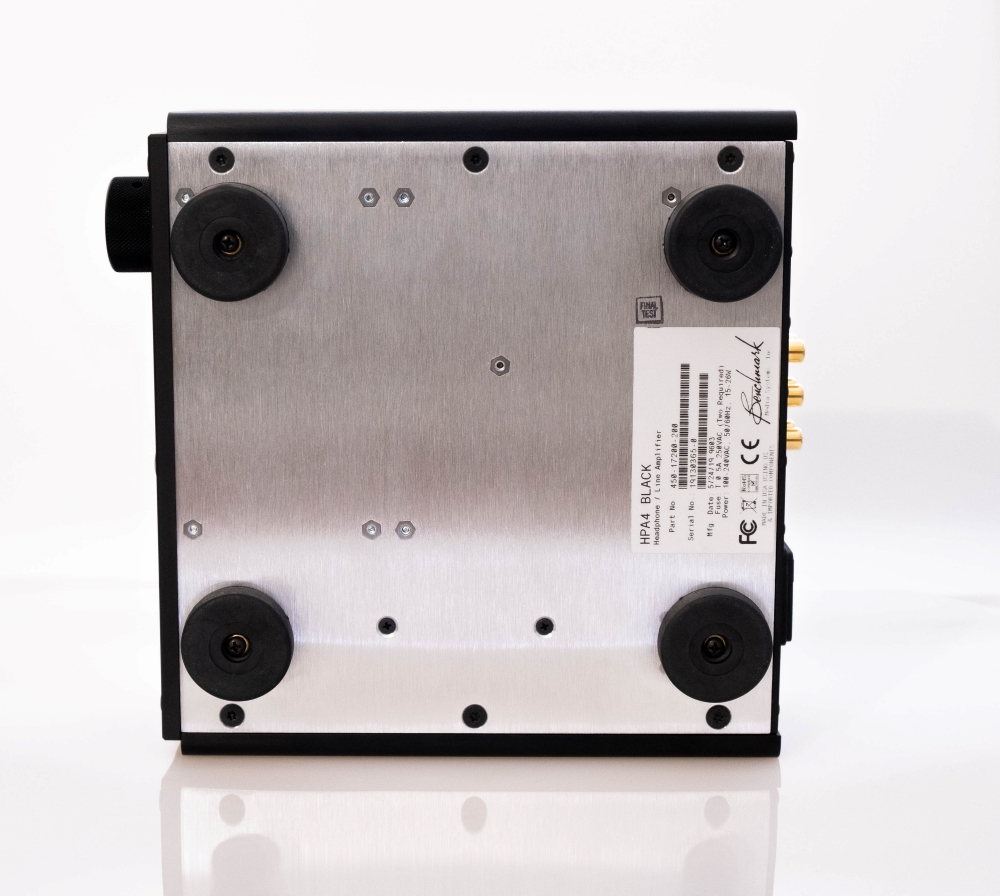
Conclusion
Before going into the conclusion, I again remind you: this is a loaner unit that will be returned and this is not a paid review, it is my own honest and humble opinion of this marvelous piece of equipment.
Put it simply this way: everything I ever dreamed a headphone amplifier should be and should do, I found in Benchmark HPA4.
It looks impressive and it is not stupidly huge and heavy (say Hello to Audio-GD Master-9), it is feature packed with tons of settings to play with, has 4 analog inputs from which 2 are balanced, has the best amp modules and the best volume control of any amp.
This headphone amplifier and line pre-amplifier receives my highest recommendation and scores the highest rank in my book.
There’s just one drawback that will put off a lot of people: it costs 3000 USD in USA (add another 100 USD for a remote) and about 3700 EUR here in Europe.
It spoiled me so much, that for the past 3 days I’m waking up at 5 A.M. so I can listen, tap my feet and head-bang just a little bit more. I for one, started saving for one, I’m sorry but I can’t go back to regular amps.
Without a doubt Benchmark HPA4 is an end-game, top of the line headphone amp – it’s The One to rule them All.
PROS:
- The most extended frequency response
- Deepest bass, most extended treble
- Zero harmonic or any kind of distortion even at 100% volume
- Mariana Trench deepness and open wide natural soundstage
- Genre Master: everything sounds exceptional
- Lightning quick transient response, slams like thunder
- Most natural fluidity and smoothness
- Most feature packed headphone amplifier on the market
- Magnum Opus in terms of headphone amplifier sound and design
- The price tag
- DACs: Benchmark DAC3 HGC, Mytek Brooklyn DAC+, Matrix Audio X-Sabre Pro, Matrix Audio Element X
- Headphone amps: Benchmark HPA4, Aune S7 PRO, Erzetich Bacillus, Headamp Gilmore Lite Mk2
- IEMs: FiiO FH7, FA7
- Full-sized headphones: Audeze LCD-4Z, QUAD ERA-1, Sennheiser HD660S
- Portable headphones: Sennheiser Momentum M2.0, Meze 99 Classics
- Interconnects: QED Reference XLR (x2), Burson Cable+ PRO
- Power cables: Isotek EVO3 Premier (x2)

ericohgb
Thanks a lot for your reply, DarKu. According to your review, the HPA4 doesn't seem to add any kind of coloration to the music, unlike tube amps or some type of SS amps. Is that correct?
DarKu
100% Correct, you are listening to your source, to your headphones or speakers. Still, do not underestimate how clean you source can sound, HPA4 will show you that in a natural manner.
ericohgb
Thanks. BTW, Have you ever tried the XIAUDIO Formula S?
DarKu
Reviewer at Soundnews
Pros: Unique looking device with a solid build quality
An impressive feature-packed 5-in-1 device
Linear and extended, lacks any sound coloration
Unmatched levels of transparency and resolution
Widest soundstage and deepest sounding as well
Very precise pin-point imaging
Excellent pace, rhythm and timing with fast kicking dynamics
Linear and uncolored headphone amp section with power to spare
Lacks any noise or distortion
Widest selection of digital inputs
An impressive feature-packed 5-in-1 device
Linear and extended, lacks any sound coloration
Unmatched levels of transparency and resolution
Widest soundstage and deepest sounding as well
Very precise pin-point imaging
Excellent pace, rhythm and timing with fast kicking dynamics
Linear and uncolored headphone amp section with power to spare
Lacks any noise or distortion
Widest selection of digital inputs
Cons: Not the hardest grip, nor the best control using harder to drive headphones
In the fall of 2018 Matrix Audio shown the world the face of their newest Element series of products. Being an early adopter and later on an owner of their much-regarded Matrix X-Sabre Pro my curiosity level skyrocketed! Back in 2017, Matrix Audio actually pioneered the ESS9038 PRO DAC chips as they were first to implement it in a commercial product. Of course, years have passed and it’s time to show growth an innovation and this is basically how newest Element series came to be. Matrix Audio along the years received few reviews from us and I think it’s time we review again their top-of-the-line and state-of-the-art Element X.
From the start I can tell you that Element X is again a pioneer in terms of feature set, since not a single commercial DAC will offer the same quality-of-life improvements and features that Element X is bringing to the table, all about that in a minute.
Please meet the family
The newest Element series from Matrix Audio consists of 4 products:
- Element H that is a USB 3.0 interface to be used inside a desktop PC for the best possible USB transport to any USB DAC, it features Crystek femto-second clocks, solid capacitors, a low noise, high current LDO chips and an all-metal case that works as a shield from internal PC noises
- Element P is an advanced DAC based on ES9028 PRO with a full MQA decoder, a powerful streamer, has DLNA and AirPlay capabilities, a simple USB host musical player and it is also outputs 230W per channel at 4 Ohms to a nice pair of passive speakers.
- Element M that is a twin-brother to the Element P but switches the powerful integrated amplifier with a desktop headphone amplifier, capable of outputting up to 1320 mW of power into 32 Ohms.
- Element X – it is the flagship product and the only one based on the flagship ES9038 PRO DAC chip, with a full MQA decoder, it uses the flagship Crystek CCHD-950 femto-clocks plus the ultra-low noise LDO ES9311. Matrix Audio is assuring that they have achieved the full potential of this hardware over the years of development and experience. Element X can be also be a powerful balanced headphone amplifier, a streamer/DLNA/AirPlay capable and a very advanced internal player (through the microSD card slot or USB host) remotely controlled by a smartphone app.

Unbox Therapy
Unboxing experience is so far the best I’ve seen in a commercial DAC product, the first large box is stuffed with lots of air-bubble foam, the second box that contained the unit itself has a thick foam to protect it well from mechanical shocks.
Inside the cool looking Matrix stamped cardboard box you will find the Element X itself, a metal remote, a USB cable with 2 ferrite magnets on both ends, a power cable, two Wi-Fi antennas, a warranty certificate with a serial number stamped on it and a very in-depth user manual which I recommend you read carefully.
Matrix Audio put some effort in making a pleasant unboxing experience.
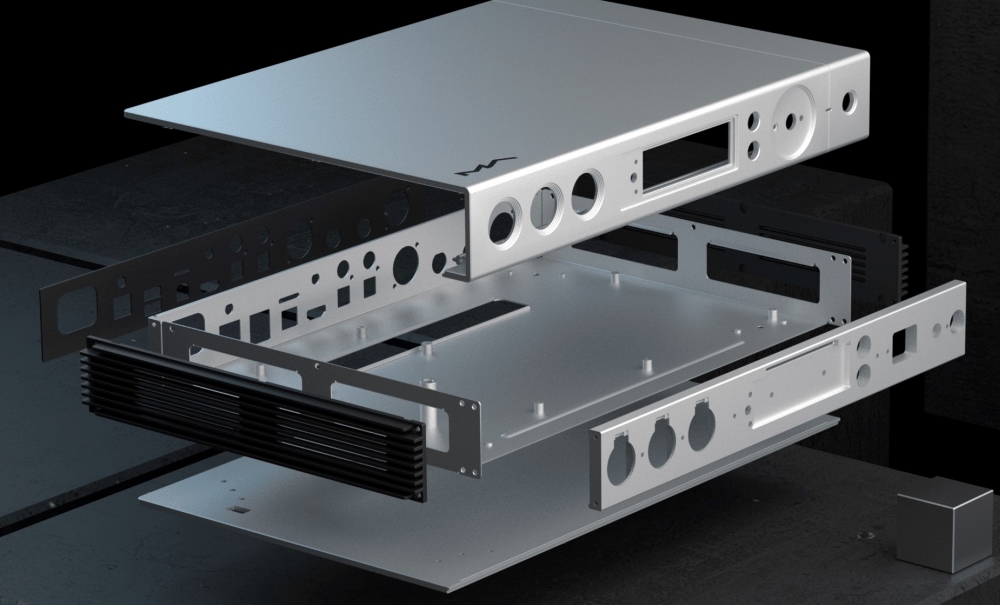
Design & Build Quality
From the first glance it is obvious that Matrix Audio is moving forward in terms of design and aesthetics. The newest series are looking different than any of the all-in-one boxes I have seen of late. The single-box fully CNC case of X-Sabre Pro was replaced with a bigger silver CNC roll-cage, on both sides Matrix put a beautiful looking heat-sink with a see-through design to better dissipate the heat. I know very well how their X-Sabre Pro heated my room in the winter so I really welcome this approach.
I have several all-in-one units at my place and several DACs as well but none of them are as large and heavy as Element X and for good reason since none of them is packing so many features in a single box.
At 340 * 281 * 60 mm (L_W_H) it is almost twice as wide compared to Benchmark DAC3 units or to Mytek Brooklyn DAC+, weighting a whopping 4.2 kg (9.3 lbs) it is twice as heavy as well.
Taking a glance on the back panel was a big Wow moment for me as I sincerely never seen so many digital inputs in a unit!

What is exactly the Matrix Audio Element X and how to control all that power?
- Of course, first of all it is a top-of-the-line Digital to Analog Converter (DAC for short) capable of decoding PCM material up to 32 bit/768 kHz and natively decode DSD material up to 45 MHz also called as DSD16 or DSD1024 because the sample rate is 1024 times that of CD (1024 times of 48 kHz) – that is a first in the DAC realm!
- It is a powerful desktop headphone amplifier capable of outputting up to 1700mW of power on the 4-pin and dual 3-pin XLR balanced headphone outputs or 1150mW of power on dual ¼” (6.35mm) headphone outputs
- It is a dedicated digital-preamp that can output 4.5 Vrms at 0 dB and 15.8 Vrms at +10dB
- It is an advanced hardware music player that can be controlled via the Matrix Audio app on your smartphone, just plug in your microSD card or an external USB drive and listen to your favorite tunes without attaching a PC to it, very neat!
- It is an advanced Wi-Fi streamer that can stream music from your local NAS drive through DLNA, AirPlay, it is also Roon enabled. Matrix Audio will also support very soon major streaming services (Tidal, Spotify, Deezer and so on) using the MA app, it should come with the next software update.
If offers 9 digital inputs (that is right, Nine of them): 2 coaxial, 2 optical, one USB type-B, one highly advanced i2S-LVDS input thought HDMI that bypasses the internal USB interface, one microSD card slot and two USB host inputs – you can use an external flash drive, an external HDD or even an iPhone (using the CCK cable) or an Android device (only few are supported that offer USB OTG functionality).
The Mytek Broklyn DAC+ that I reviewed two weeks ago was feature packed, but this one takes the no.1 spot as the most advanced all-in-one unit passed through these hands.

Front panel features & Display settings
On the front panel I am greeted by two ¼” headphone jacks that can be also used as a dual 3pin XLR balanced headphone output, there is also a 4-pin balanced headphone out, a big LCD screen that shows important information: such as the selected input, output, the volume level, filter settings, wireless connection, bitrate and data stream, when playing a MQA file the MQA logo will show up on the screen. There is also a menu button where every setting can be accessed from there. The second button is a custom button and its function can be selected from the menu. There is also a special volume pot and a power On/Off button.
You have 3 possibilities of controlling the Element X and changing its setting: via the LCD screen and buttons, via the metal remote control and via the MA remote control App. Honestly, after installing the app I am controlling it only from there for convenience and fast response time.
Via all three you can change: the desired input, 7 selectable digital filters incorporated in the Sabre chip on the hardware level, line out mode (3 modes), PCM filter, DSD filter, headphone gain, dither, jitter eliminator, DPLL bandwidth, IIS-LVDS port definition, dimmer, auto sleep, the custom button “o” function, USB Audio mode, remote, load default and product info. There are a lot of settings, but most of them you should set and forget.
Here is a picture of the selectable 7 digital filters explaining what should you expect from them sound-wise.

Under the Hood
Element X is rocking the most advanced ESS Sabre 9038 PRO 8 channel chip plus a full MQA decoder for the streaming folks.
As the X-Sabre Pro before it, Element X is also using the best toroidal transformer from Noratel along with Nichion audio grade capacitors. As such it is having an advanced power supply and multiple levels of LDO isolation for accurate sound reproduction.
The internal headphone amp is based on four high-performance LME49600 op-amps. If you are listening in a single ended configuration only 2 of them will be engaged, and if you are listening in a balanced headphone configuration all four will be working in a 100% balanced headphone drive. At 1700mW of power in 32Ohms it should deliver plenty of power even to harder to drive headphones, will see about that in a moment.
Remember the special volume pot I was mentioning above? Well, normally you have an all-analog or an all-digital volume pot but both designs have their pluses and minuses. But how about developing a hybrid volume pot design that should incorporate only the good parts of both designs? That is exactly what Matrix Audio did! It uses an array of high-precision analog relays combined with the internal digital volume of the DAC chip. This technique combined the sound quality advantage of an analog volume pot but with the precision of a digital pot. That is pretty cool if you ask me.
OK everyone, it is time I have a longer listen to it.
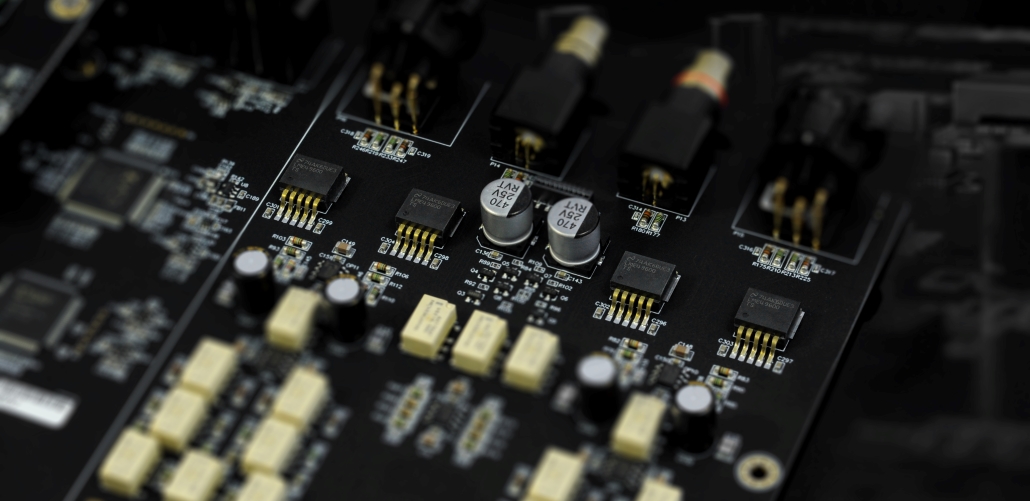
Sound Performance
I. In a headphone-based system.
Using its internal headphone amplifier, I was comfortably driving a pair of 3000 USD Meze Empyrean at about -10 dB, I had 10dB left to the unity gain of 0dB and another 15dB to the maximum volume. In total I had 25 dB of headroom left on the single ended output with a pair of planar-magnetic headphone.
On the 4-pin balanced connection I was driving quite loud a pair of Quad Era-1 at about -15dB, so in total I had 30 dB of headroom left. Judging from these numbers alone I think it should be able to drive harder to drive headphones as Audeze LCD-4 or HifiMan HE-6SE as well.
With very sensitive IEMs on the ¼” output I was sitting between -35 and -30 dB, so a huge amount of headroom left. In terms of residual noise and background it almost matches the reference Benchmark HPA4. Plugging in FiiO FH7 and FA7 shown a complete silence up to unity gain (0 dB) and just a tiny amount of noise going north than that. However, you can’t listen to music at that volume with IEMs. In terms of background noise, Element X is the second-best performing headphone amplifier (cleanest being the Benchmark HPA4) I ever tested.
I know few people that shown concerns in terms of how good the internal headphone amp is. I can assure you that it is performing quite admirably with all headphones in my possession. It will drive IEMs and dynamic full-sized headphones with ease and even few planar-magnetic ones with the right cable (4-pin XLR). It will however not compete with the best of the best; it is not sounding as dynamic and hard-hitting as Benchmark HPA4 or Aune S7 PRO for example but closer to a dedicated mid-range headphone amp.

The internal headphone amp left me an impression of absolutely no coloration, no dips or rises in the frequency area, just a very linear and quite revealing experience.
What really impressed me using headphones is how clean it is sounding; it is among the cleanest all-in-one solutions I had the pleasure of testing. Performance wise, it is miles ahead compared to the mid-range DAC/Amps I’ve heard of late such as Burson Playmate, xDuoo TA-10, Loxjie D20, Aune S6 PRO, even smaller headphone amps like Gilmore Like MK2 and Erzetich Bacillus will not be as clean and linear sounding.
Truth to be told, all LME49600 designs are sounding like this, revealing, transparent and quite linear.
Since its internal headphone amp section doesn’t have a coloration of its own, it is quite versatile in terms of headphone pairings as it will basically show the character of said headphone and nothing more.
There were few instances when with faster paced music the control of headphone drivers was not top-notch and this is actually the only part of its internal head-amp that bothered in the long term. If you are hunting for an ultimate headphone experience, then a dedicated balanced headphone amp will be mandatory.
I then moved the headphone amplification duties to the Benchmark HPA4, I set the XLR output fixed at 0 dB (to bypass the volume control of Element X), I attached an external SSD to the USB host and used the MA remote control app to browse thought my music collection. This way I completely removed my PC from the acoustic chain and the USB limitations as well.

Well my friends, when I pressed play my jaw hit the floor as this level of performance was unheard of so far in my setup. It outperformed any other DAC + headphone amp I had the pleasure of listening. It easily outperformed my X-Sabre Pro in every way possible.
It had more micro-information, it sounded much deeper, super extended on both ends having the best control of headphone drivers. Simply put I was having an audiophile nirvana moment as every tune I played shown me that there is just a little bit more of everything. More bass, more midrange, more treble information, deeper and wider soundstage. It also sounded crazy natural and impressively smooth, I checked again what I am listening to, it was almost unbelievable I was listening to an ESS Sabre design.
To this day, such naturalness and musicality was unheard of in an ESS Sabre design, even Burson Audio designs that we all know are quite natural sounding – were harsher and had more digitus.
Moving on to the USB-type B connection using my PC as a transport the performance takes a serious hit and is not as impressive sounding. Now, don’t get me wrong, the XMOS XU216 is currently the best performing USB interface on the market, it is just that the USB connection is having so many issues that need to be addressed, that making a good sounding USB DAC is quite difficult. I tried avoiding the USB DAC problems, I purchased a higher performance USB cable, I even purchased a very well-regarded Matrix X-SPDIF2 interface and used it in my acoustic chain and with the right settings my X-Sabre Pro almost matched the performance of the internal player of Element X, still internal player was in a league of its own.
In my opinion, if you want to extract the best Element X can offer to you, use the internal player and listen to your music from an external USB drive and in the next software update Matrix Audio will also include direct streaming services such as Tidal, Spotify and others that should again sound better than going USB to a PC and using those streaming apps from the PC.
So, my short version of what inputs are sounding best I think USB host and the microSD slot will have the best sound quality, followed by Ethernet, by I2S HDMI input, by USB input and then by coaxial and optical inputs.
I am so very sad my own X-Sabre Pro doesn’t have an internal player and streamer…

II. In a speaker-based system
My powered KEF LS50W loudspeakers are having an internal Hi-Res DAC that performs quite good, but if needed an external DAC can be connected to them.
Connecting Element X was quite a shock for me, especially listening directly from its internal player with an external SSD attached, as I never heard my speakers so effortless and wide sounding in my room. My personal X-Sabre Pro is an extraordinary performing DAC, however with the optical input from the Chromecast Audio it just cannot compete with the internal player of Element X.
Element X just decompressed my LS50W in a such a way that I even asked my wife to take a listen with me confirming what I am hearing. I think Element X has the widest and most expanded soundstage I heard in my living room. It is just bigger, bolder than usual, with much bigger air bubbles between the musical notes. There is just a bigger space between the notes. It is actually the only DAC that matched the soundstage size and holography levels of the Aune S6 PRO.
Same can be said about holography and depth as LS50W never sounded as deep with such an accurate pin-point imaging.
Listening to Mozart Violin Concertos (MQA) at 352kHz streamed from Tidal was a revealing experience not only in terms of how wide it sounds but how effortless as well. The second-best trait Element X tickled my ears with was how effortless it sounded. So smooth, so musical and natural, it is again unbelievable that this is not a NOS (non-over-sampling) R2R design.
In terms of naturalness and believable sound Element X was again just spot on with sweet harmonics and natural decay of the notes. Hard to explain but it just sounded right from the moment I pressed play.

With other digital sources I tried my speakers with, the sound is a touch harsh, cramped and doesn’t breathe as easily. Even expensive designs as Benchmark DAC3 or Mytek Brooklyn DAC+ didn’t offer such an effortless, natural and smooth presentation.
When it comes to transient response, I think Element X sounds admirable, it will not tire you down with overly fast transients or sudden stops of the decays (how for example Chord Electronics DACs are sounding), Element X chooses detail information, transparency AND naturalness for a complete musical performance.
In terms of frequency response, this is will be an easy one.
From the lowest bass notes to the highest treble regions Element X was linear, honest, extended, controlled, super detailed yet musical and easy going.
There was not a single frequency area that took the spotlight, that shines brighter than others, none of that. Element X will deliver in exact doses everything is needed for a life-like presentation.
Listening to the James Blake – Limit To Your Love – a mediocre recorded track, at 0:55 mark there is a deep and fast pulsing bass that will put to the test the best headphone or speaker drivers and your source and amplification as well. Element X does that with such an easy it doesn’t even struggle.
At 2:45 mark some drums are kicking in together with those deep bass notes, with mid-range sources that will sound like a blob of sounds, with Element X the blob expands and you could literally follow every note you desire until it decays.
I could go on and on about how much it impressed me on speakers and headphones alike, especially from the USB host input.

Digital inputs battle
I decided to test individually all the digital inputs and these are my findings.
1. Optical
I used my Chromecast Audio via optical and streamed Tidal Hi-Fi directly to the Element X. I also used a Playstation 4 Pro to play some games via optical to the Element X. All the listening was made on my KEF LS50W.
Everything sounded nice, with no obvious flaws, no hiccups or stutters, just a smooth musical performance. The soundstage took a hit and airiness as well, it is a bit upfront sounding on this connection.
2. Coaxial
I used an older M2Tech Hiface interface and took a listen. As the optical input, everything was there, it reminded me a lot about the optical performance, it sounded maybe just a tad better, but you should take into the consideration that the HiFace interface improves the performance a tiny bit. All-in-all it sounded just a bit wider and more natural than on optical
3. UBS type B
Used my PC with a fancy USB cable and to my surprise the XMOS XU216 interface makes wonders as it sounds much better than the first two attempts. Even more extended, more natural and offer just a bit more detail information, it is also a bit more extended on both ends. So far USB input impressed me a lot.
4. I2S-LVDS (HDMI)
My own X-Sabre Pro is being used with a Matrix X-SPDIF2 interface to very good results and I borrowed it to mate it with the Element X.
Before telling you how it sounded, you should know that by using it in this configuration the signal from the X-SPDIF2 interface goes directly into the ES9038 PRO DAC chip without additional chips in its path, how it is done for example on the optical, coaxial and USB.
With the right settings on both devices the sound improved again compared to the USB input, it sounded even more natural and silky smooth. It didn’t offer additional information, didn’t sound wider or deeper, just a bit smoother and natural. If on USB it might sound sometimes grainy or strained, on I2S that never happened.
5. USB host/microSD card slot
As I said previously, this is the best sounding interface to me. Take the I2S connection but add more air to the mix, expand the stage and add a bit of naturalness. I only hope that streaming directly from Tidal/Spotify/Deezer from the MA app will sound as good.
I liked the USB host feature so much that I took it with me in the bedroom and when my wife watches her favorite TV shows I will be listening to few albums before bedtime. I just attach my headphones to it and use my smartphone as a remote for the MA app, so convenient.
No comparisons for now, but in few days, I will be publishing separately a 4-way DAC comparison, stay tuned for that!
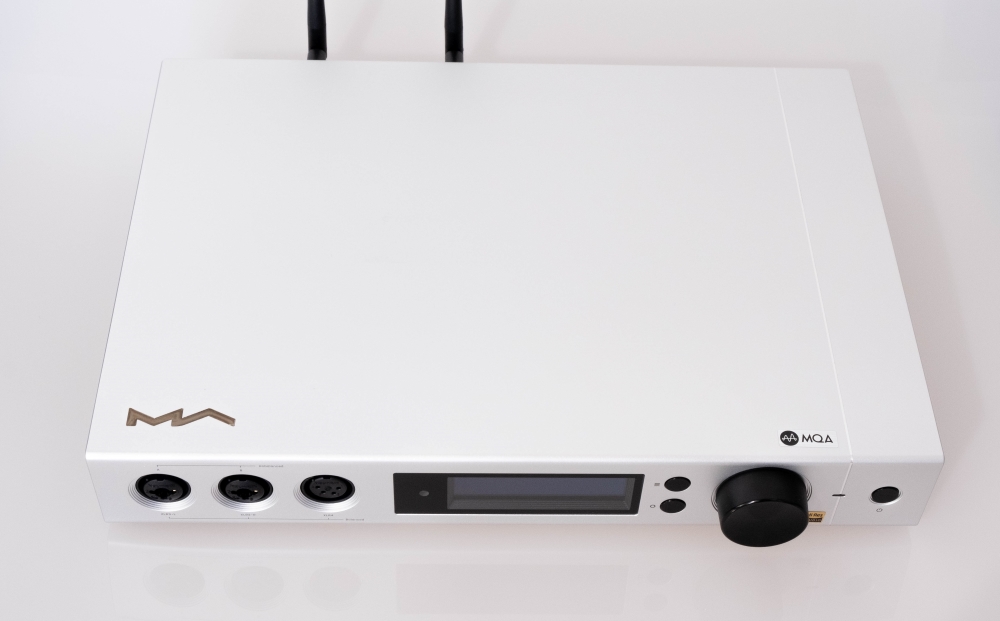
Conclusion
Matrix Audio Element X is an incredible feature-packed all-in-one device that should please a lot of folks. It has such a natural and life like presentation with tons of micro-detail information that until now that was not possible in an ESS Sabre design.
Having a 3-way possibility of controlling all its features makes is super versatile and easy to use. In terms of build quality there is nothing to complain and I understand why the side panels has this see-through design as the DAC part, headphone amp part, pre-amp and streamer are releasing a lot of heat, a clever solution for sure.
Listening to it from the USB host and very soon through the streaming apps it is like living in the future. I wish more DACs will adopt those two very convenient and most importantly great sounding features.
This is the coolest looking and most advanced DAC I had the pleasure of testing at my place.
Matrix Audio Element X can be purchased directly from Matrix Audio at 3000 USD following this link or you can contact your local distributor.
PROS:
- Unique looking device with a solid build quality
- An impressive feature-packed 5-in-1 device
- Linear and extended, lacks any sound coloration
- Unmatched levels of transparency and resolution
- Widest soundstage and deepest sounding as well
- Very precise pin-point imaging
- Excellent pace, rhythm and timing with fast kicking dynamics
- Linear and uncolored headphone amp section with power to spare
- Lacks any noise or distortion
- Widest selection of digital inputs
- Not the hardest grip, nor the best control using harder to drive headphones
- DACs: Matrix Audio Element X, X-Sabre Pro, Mytek Brooklyn DAC+, Benchmark DAC3 HGC, Aune S6 PRO, Burson Playmate & Swing
- Headphone amps: Benchmark HPA4, Aune S7 PRO, Erzetich Bacillus, Headamp Gilmore Like Mk2
- IEMs: FiiO FH7, FA7, KZ AS16
- Full-sized headphones: Meze Empyrean, Quad ERA-1, Sennheiser HD660S
- Loudspeakers: KEF LS50W
- Interconnects: QED Reference XLR, Aune AL3 XLR
- Power Cables: Isotek EVO3 Premier
- Balanced Isolation Power Conditioner: KECES BP-600
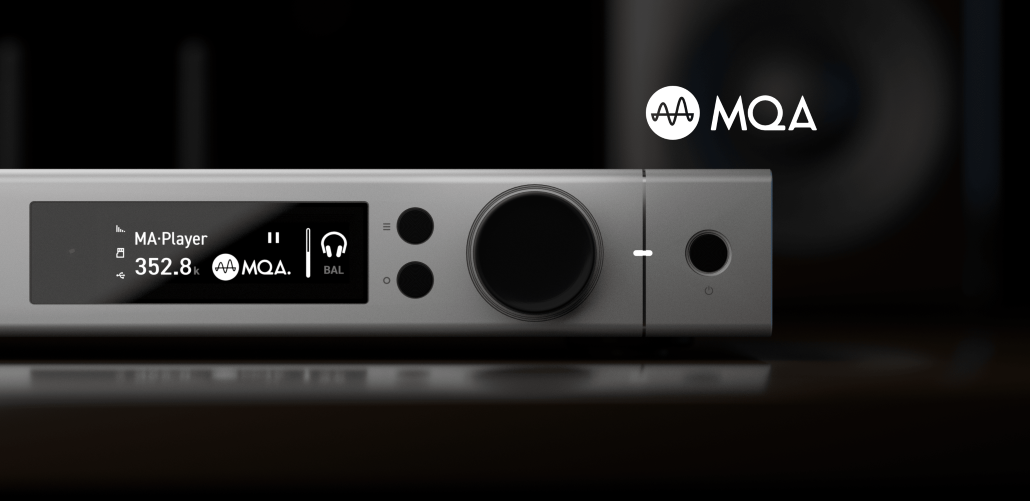
DarKu
Glad you liked it.
I posted today the HPA4 review as well.
Will reply to you there regarding its sound.
I posted today the HPA4 review as well.
Will reply to you there regarding its sound.
alota
Hi, i read with great interest your review. really thanks.you write that it´s transparent but with hard to drive headphones you needs more grip and using the element x like dac wired to benchmark, you are really surprised. so my question is: i have an ultrasone edition 5 limited, 32 ohm. thsi headphone is easy to drive but needs agood amplifier. in this case, considering a dynamic headphone aaround 32 ohm, the amplifier is goos and can he convey the good that the dac can do? thanks for your time
FourT6and2
What does this mean? "Not the hardest grip, nor the best control using harder to drive headphones." Is there a damping problem? Not enough power output? Did you have this problem with the Empyrean or some other set of cans?
DarKu
Reviewer at Soundnews
Pros: Excellent acoustic transparency and airiness
Great speed, impact and slam
Linear frequency response with just a hint of warmness and naturalness
Weightier and denser tone, moves a lot of air
Among the widest and deepest sounding solid state amplifiers
Lack of his, hum or any background noises
Tons of control and grip over the headphone drivers
Effortless and easy going
Lacks distortion even at very high volume
Paired well with IEMs, portable headphones, desktop dynamic and planar-magnetic designs
Great speed, impact and slam
Linear frequency response with just a hint of warmness and naturalness
Weightier and denser tone, moves a lot of air
Among the widest and deepest sounding solid state amplifiers
Lack of his, hum or any background noises
Tons of control and grip over the headphone drivers
Effortless and easy going
Lacks distortion even at very high volume
Paired well with IEMs, portable headphones, desktop dynamic and planar-magnetic designs
Cons: Has a big volume gap between low and high gain (watch out with IEMs)
At München High-End Show 2019 Aune Audio unveiled a bunch of interesting products such X1s PRO DAC/Headphone amp combo, X7s stand-alone headphone amp, X8 Magic dedicated DAC, X5s desktop digital music player, but to us the most interesting ones were their flagship series: S6 PRO DAC and S7 PRO balanced headphone amp.
S6 PRO was covered by us about one month ago, I recommended checking the detailed review right here.
So, today is the big day for the S7 PRO dedicated headphone amp that will be put through its paces.
S7 PRO is an updated version of their older S7 design, on the outside both are looking the same, except the PRO badge on the newest device.
If you are wondering what exactly was updated and improved upon, I reached to the manufacturer for a detailed answer:
- S7 PRO uses a second-generation AMP-II module (4 modules) which increased power and decreases output impedance for a much better IEM compatibility
- S7 PRO inherited the Titans Artemis headphone amp circuit but improved upon every aspect of it
- S7 PRO uses a higher performance ultra-low-noise transformer
- Few op-amps were swapped with higher performance ones
- In total 26 components were changed for more stability at low frequencies, for a better ambiance, more naturalness and delicacy.
Unboxing experience is excellent, S7 PRO came double boxed for extra protection. The smaller box is made out of very thick card-board. Inside you will find: the S7 PRO, a power cable, a headphone adapter and a user manual. Just attach it to an analog or digital audio source and you are good to go.
S7 PRO comes in two variants: in a very nice-looking silver or black aluminum case. I think it looks plain in black and more stylish in the silver color, everything just pops. Since we are having a silver S6 PRO, a silver S7 PRO on top of it was just mandatory.

Design & Build Quality
I was really impressed by the build quality of S6 PRO, S7 PRO looks as stunning but simpler since it is lacking an LCD screen. It is much bigger and heavier than typical headphone amps that we tested of late thus it left a great initial impression on us.
Front panel is made out of milled thick CNC aluminum plate, it has a grainy sand-blasted like surface that should absorb a lot of use and abuse, typical metal headphones laid on top of it should not pose a problem. I’ll be honest with you, the unusual shape of it started growing on me since the S6 PRO found a place in my home. S7 PRO on top of S6 PRO looks impressive and quite handsome. My wife still didn’t ask what are those 2 big silver boxes so the WAF (wife acceptance factor) is really high with this one.
I really like that the front, top and side panels do not have a single screw, you will find those on the back or underneath the device. As such, S6 PRO together with S7 PRO are really clean and minimalist looking devices.
I’m glad to report that the rubber feet on both S6 PRO and S7 PRO are tall enough to be put on top of each other without touching the surface in the middle. I had my doubts first but there is actually some free space for the air to cool them down properly.
The front panel houses a balanced 4-pin XLR output, a double 3-pin XLR balanced connection and a standard ¼” (6.35 mm) headphone output. There is also a single Select button that carries a double duty: a short press will change the analog input and a long press will switch between 2 gain settings (low and high). The volume pot works in the analog domain and I do like it a lot more than the stepped one in the S6 PRO.
On the back there are two analog inputs (RCA in and XLR in), a power AC inlet and an On/Off button. As you can see S7 PRO is a very simple and straight to the point device with a sole purpose of driving high and low-sensitive IEMs and headphones.
The shape seems a bit odd at first sight with an arc-shaped smooth design on top, but it grown on me as I think it looks quite unique and stands out from the crowd.

Tech Specs & Detailed Information
The S7 PRO headphone amplifier is based on the second generation custom AMP-II headphone amp modules, it has 4 of them for a 100% balanced operation, attach a headphone to the single ended output and you will be using only 2 of those modules. S7 PRO inherited the well-respected Titans Artemis amp circuit that in short terms is a balanced and ultra-low distortion amp circuit framework with an innovative multi-stage parallel driving mode followed by 4 custom Aune AMP-II modules that were further refined in their PRO version.
I am happy to see high-performance metal-can capacitors, heat sinks for the buffer stages and a big ‘n heavy ultra-low-noise and high current toroidal transformer that should pump a lot of clean power to the AMP-II modules.
The op-amps in the signal path are used as a buffer for the analog input signal, but the final output stage is op-amp free if that matters to you.
When it comes to raw power, S7 PRO will offer up to 1050 mW of power into 32 Ω on the SE output and up to 3400mW of power into 32 Ω on the balanced outputs. I know some of you are thinking the S6 PRO with its 405mW on tap should be enough power wise for some dynamic headphones, and to some degree that is true…but S7 PRO is completely in another league when it comes to powering hard to drive headphones with absolute levels of dynamics and control.
Since it has both a single ended RCA and a XLR balanced input, you can use basically with any analog or digital audio source.
Having an impressive 4.1 uV of noise and a THD of just 0.0005% the S7 PRO should sound excellent even with very sensitive IEMs and I’m glad Aune put their minds at work acknowledging the importance of low noise and distortion.

Sound Performance
I. Using S7 PRO with sensitive IEMs
My listening was done with a S6 PRO + S7 PRO
Put it simply this way: S7 PRO is noise-free even on high-gain with very sensitive IEMs. FiiO FH7 and FA7, even the affordable KZ AS16 are notorious for picking the noise-floor of any desktop headphone amp.
With all those three S7 PRO is simply noise free and offers a black and silent background. Noise floor is very low and that is great for all types of earphones or headphones. My former champ in terms of noise-floor was the Gilmore Lite mk2 but S7 PRO trounced that one especially with sensitive IEMs.
If you are planning on using IEMs and full-sized headphones in a desktop rig, S7 PRO might just be the right prescription for you.
The second thing that awe-struck me was how effortless and easy going S7 PRO is sounding. I might say this one, so far, is the most effortless sounding headphone amp I had the pleasure of testing at my place.
Everything just sounds decompressed, expanded around me with a crazy feel of dynamics and control. S7 PRO has some very serious power under the hood and that will be explored in depth with my full-sized headphones.
When I started listening to Opeth – Eternal Rains Will Come I could swear I had my planars on my head, but nope, FiiO FA7 IEMs were singing so big and wide that I never experienced them this way, even on portable balanced power they sounded tinier and more closed-in.
That complex mix of musical instruments didn’t clutter and overcrowd the performance in any way. It’s important reminding myself that S7 PRO is doing that without rolling off the frequency extremes.

Continuing my playlist with Opeth – Windowpane I started tapping my feet wildly as the musical performance is quite uplifting and leans towards a musical side than to a boring linear experience. Of course, a lot of this magic comes from the S6 PRO as well, with its natural performance and velvety smooth decay of the notes. If headphones amplifiers could be compared to Digital-to-Analog converters then S7 PRO would definitely be a R2R NOS design.
Another thing that catches my attention is the soundstage size and depth. If I would guess from the start with the eyes closed what I am listening to, I would swear I am listening to a hybrid design with a vacuum-tube hidden somewhere inside, as S7 PRO leans towards an expansive and wide soundscape, it will never sound up-front or over-crowded.
S7 PRO doesn’t posses a stridency up top, it is mostly linear with a mild warm tone, it sounds calm on blues and dynamic on hard kicking tracks. Older recording such as The Beatles and Led Zeppelin will sound meatier with a higher dose of naturalness. The hiss and grain of the recording is there but doesn’t scratch my ears. I observed that drums and guitars in particular are more natural sounding compared to my other headphone amps. Overall, the music carries more weight with it and decays in a natural way.
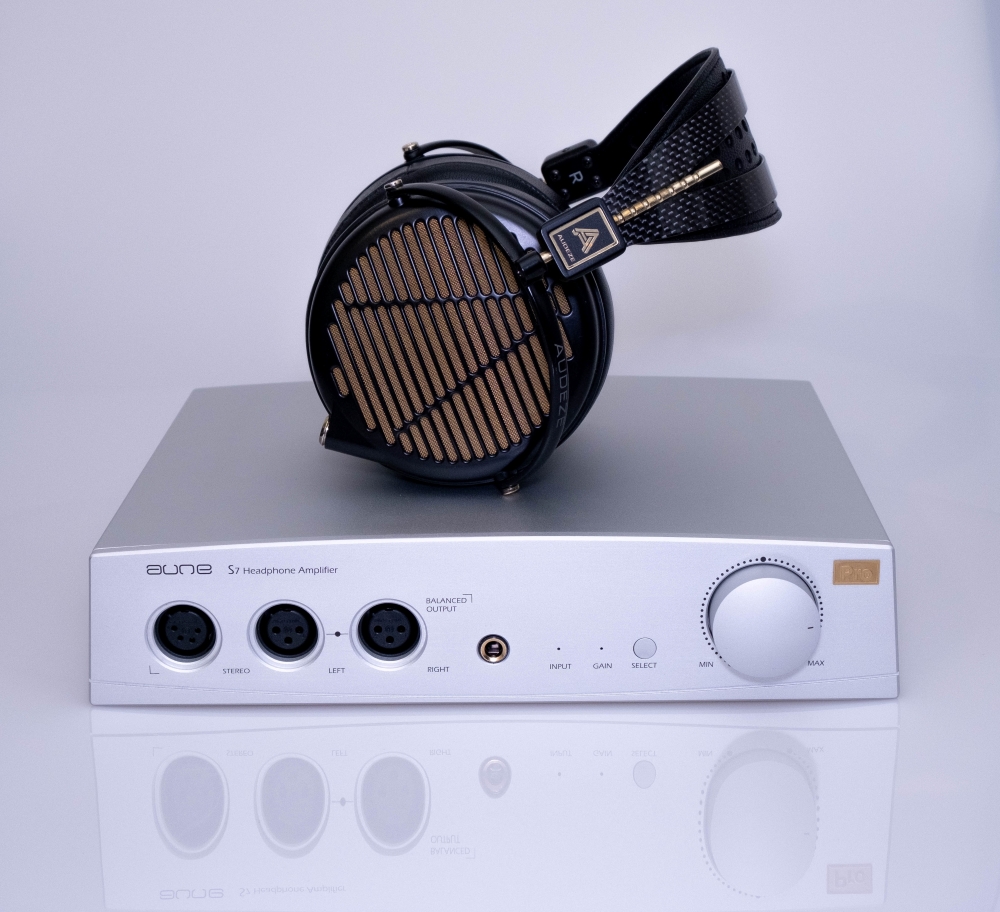
II. Using S7 PRO with desktop full-sized headphones
The openness I was writing about on IEMs it is even more pronounced especially with open-back headphones. The airiness S7 Pro is having is very apparent with instrumental music so every note will just float in its own air bubble with a clear leading edge and outline.
Pin point imaging is great, but not super defined and clear since the notes are almost far away from the listener and I would detect the distance between me and a said note a little bit harder. All the headphone amps that have a smaller stage with have a clearer but tinier image.
Listening to No Doubt – Hella Good the drums and bass notes are like hitting my whole body and not just my timpani, a very weird feeling. It’s quite interesting that when this tune becomes crowded, it doesn’t bottleneck the musical performance and manages putting those notes around me so naturally and believable, every note is floating again in its own space.
Listening to Hans Zimmer – Interstellar OST there are a lot of moments of complete silence which immediately jumps to a high volume. The air pressure jumps instantly and kicks hardly, dynamics are on a high level with this one. I can hardly distinguish the borders of the soundstage on few tracks as the notes are flying to no end.
Since the noise floor is really low and the SNR numbers are very high, S7 PRO will not block the micro-detail information sent by the audio source, so it will always sound clean, detailed and very precise.

I consider that micro-detail information is not lost on it, add a crazy transparency and airiness and you could already presume that I just pick-up sounds from the air quite easily.
Transient response is fast but not the fastest I’ve heard in the business. S7 PRO is almost never aggressive sounding, that is a trait for me since I can listen even to bad mastered music or overcrowded performances.
Listening to faster tunes (basically 80% of my music) resulted in good kick and impact but again in a natural, smooth fashion without listening-fatigue whatsoever.
Listening to folk and folk-rock was a real delight, it is slow and dynamic in the same time on some passages. S7 PRO can sound raw and hard kicking but also gentle and slow with the right music.
It is worth mentioning that with the S6 PRO DAC+Headphone amp combo I was almost maxed volume wise with my planar-magnetics but on S7 PRO I never would pass the 12:00 o’clock position. If needed, S7 PRO can be very loud!
There is one thing that bothered me a bit: the gain. The difference in loudness between low and high gain is really big, if you are listening to a pair of IEMs on the low gain, be careful changing the gain to high, lower the volume first before doing that. With full-sized headphones that issue is not as big but still bothers me a bit. On low gain I can easily max the volume and on high gain I can’t go higher than 50% volume wise. With a hoter audio source like the 4.5 Volt X-Sabre PRO or the uber-hot 9.7 Volt Mytek Brooklyn DAC+ I would not pass the 30% volume position, Crazy!
If power is what you are craving for, S7 PRO has that in spades and some more.
With great power comes great responsibility and this is where S7 PRO again shines: Control. S7 Pro has a mighty grip over the headphone drivers. There wasn’t a case when S7 PRO would sound loose or muddy.When it comes to headphone pairings and overall performance, I can’t seem to find obvious flaws.
Since the S6 PRO has a very mild midrange boost and wider soundstage, the S7 PRO immediately shown that as well. Attaching it to the Mytek Brooklyn DAC+ revealed more treble information and a flatter performance. Changing the DAC with a Matrix X-Sabre Pro added a bit of bass thump and overall speed. So, all in all S7 PRO will mostly show the DAC sound signature without adding much in terms of frequency response.

Comparisons
I know that all Aune S6 and S6 PRO owners are probably wondering if adding the S7 PRO to their acoustic chain will make their headphone experience better, so here we go.
Aune S7 PRO (599 USD) VS Aune S6 PRO (599 USD)
I tested mostly on the balanced 4-pin XLR headphone amp to have a better idea.
The general idea is that S6 PRO is quite fine with dynamic headphones and with all IEMs, dynamics and transients are there, layering and pin-point imaging is there as well. The biggest downgrade on the S6 PRO alone is the effortlessness, control, headphone drive and soundstage size.
Adding S7 PRO to the chain the music starts playing in a bigger room, sounds are flying further away, headphone drivers will have a better grip and as a result everything just sound effortless, uncluttered and easy going. Even my 150 Ohm Sennheiser HD660S sounded livelier and faster on the S7 PRO.
With IEMs the difference is close to zero but with hard to drive headphones is completely another story.
Let’s not forget that the headphone output of S6 PRO was mostly put there for convenience. Do you own the S6 or the S6 PRO and consider yourself a headphone aficionado? Do yourself a favor and add the S7 PRO to the chain, your headphones and ears will thank you later.

Aune S7 PRO (599 USD) VS Headamp Gilmore Lite Mk2 (499 USD)
Gilmore Like Mk2 is my former reference single ended headphone amp. I like it a lot because it stays away from the musical performance and doesn’t add anything from itself. It however possesses some flaws: one is the power output; it is rated at maximum 1W with low-impedance headphones. By comparison S7 PRO offers 3.4W at the same impedance rating, it is just much more powerful.
If demanding headphones are driven, then headroom is close to zero with Gilmore Lite, I am often at max volume with planar-magnetic headphones. S7 PRO by comparison has tons of headroom left, so much better dynamics at higher volume and on higher dynamic range tracks.
Another issue is that Gilmore Lite Mk2 has a small-ish, almost 2D soundstage, with the wrong headphone it is quite pale and up-front sounding. Some like that, some don’t.
S7 PRO is completely different offering a much wider and deeper sound, it is very 3D by comparison.
Since Gilmore Lite Mk2 has an external but lower performance switching power supply, more residual noise enters inside the amp and it just has more hiss and hum with sensitive IEMs. By comparison S7 PRO blocks a lot more residual noise from the wall-wart and has among the lowest noise-floor.
To me S7 PRO is a better device and Gilmore Lite Mk2 will soon search for a new home.

Conclusion
You probably guessed that S7 PRO impressed me dearly with every musical genre I thrown at it. It was impressive with sensitive IEMs and harder to drive headphones alike. There isn’t a headphone in my stable that would need more than 50% from it, having so much headroom left makes it ideal for headphone enthusiasts like myself.
Since it has just a hint of warmness, an effortless natural presentation it paired extremely well not only with Aune’s own S6 PRO but with any digital sources I tested it with.
It offers single ended inputs and outputs and can be a 100% balanced headphone amp, it is quite versatile and easy to use.
So far, this is among the best headphone amplifier I put my hands-on and it is very recommended.
S7 PRO can be purchased directly from Aune for 599 EUR (for EU residents) and for 599 USD (for USA and rest of the world)
PROS:
- Excellent acoustic transparency and airiness
- Great speed, impact and slam
- Linear frequency response with just a hint of warmness and naturalness
- Weightier and denser tone, moves a lot of air
- Among the widest and deepest sounding solid state amplifiers
- Lack of his, hum or any background noises
- Tons of control and grip over the headphone drivers
- Effortless and easy going
- Lacks distortion even at very high volume
- Paired well with IEMs, portable headphones, desktop dynamic and planar-magnetic designs
- Has a big volume gap between low and high gain (watch out with IEMs)
- DACs: Aune S6 PRO, Matrix Audio X-Sabre Pro, Mytek Brooklyn DAC+, Burson Swing & Playmate
- Headphone amps: Aune S7 PRO, Headamp Gilmore Lite mk2, Erzetich Bacillus, Burson Playmate, xDuoo TA-10
- IEMs: FiiO FH7, FA7, KZ AS16
- Headphones: Audeze LCD-4Z, Sennheiser HD660S, Quad ERA-1
- Cables: QED Reference XLR, Burson Cable+ PRO
Reactcore
Thanks D, i sure will
Xinlisupreme
Amazing review!
I’d pair it with Chord Hugo and Focal clear, but I’m curious also about Drop THX789...
I’d pair it with Chord Hugo and Focal clear, but I’m curious also about Drop THX789...
L
Listenisb
How does it compare to SMSL SP200 in terms of SQ and capbility? I'm considering upgrading to a balance amp from SMSL SP200 to pair with Topping Dx7s and Hifiman Arya and Focal Elex. I currently have X7S at office room and like it quite a bit but I don't think they are driving Arya properly. Thanks!
DarKu
Reviewer at Soundnews
Pros: Impressive frequency response and tonal balance
Natural sounding, grain-free with a good flow
Wide soundstage and good depth, not forward at all
Thunder speed and impact
Lots of features, inputs and outputs
Awesome price to performance ratio!
Natural sounding, grain-free with a good flow
Wide soundstage and good depth, not forward at all
Thunder speed and impact
Lots of features, inputs and outputs
Awesome price to performance ratio!
Cons: Basic version lacks a remote
2019 seems quite busy for Burson Audio, first release of the year was the extraordinary Playmate and now they offer a much-needed dedicated DAC and digital preamp called Swing.
I still remember listening to the Burson Fun and Bang and thinking that what they really need is a dedicated DAC for those units and this is how Swing came to be. As good as DAC+Amp combos are they can’t quite match separate units, Burson Play and Playmate were really good, outstanding even if you take into consideration their price points, but if you want a higher performing sound from the Burson family, Swing should be that answer.
Inside the Box
Unboxing experience is excellent! Swing came double boxed with extra foam for a good protection. Inside you’ll find: the Swing, an USB cable, a switching power supply, a power cable, a high-quality RCA interconnect cable with nice Pailics RCA jacks, an extra USB cable with a 4pin connector at the other end (connected directly to a desktop motherboard), a RCA out back-plate for a desktop computer, the premium V6 versions are also having a nice remote control, I’ve have the basic version so no remote for me. Swing also comes with an extra mini fuse in case the preinstalled out burns, a pleasant surprise.
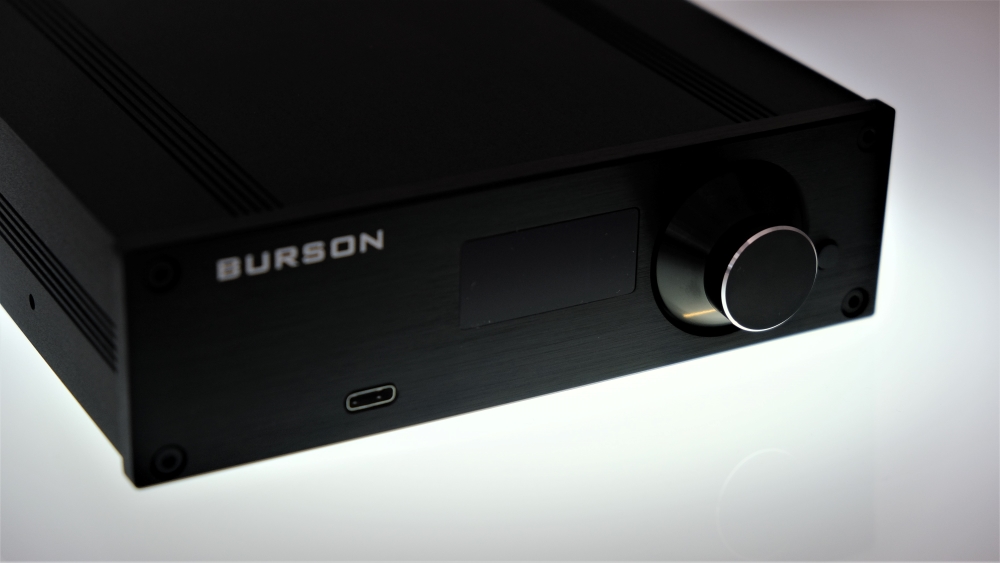
Design & Build Quality
Fit and finish is pretty good, sadly it is being offered only in a black anodized aluminum case, would love to see a raw aluminum case as well.
As their previous devices it is quite small and lightweight, at about 1.5 kg with a case that measures only 210 mm x 145 mm x 45 mm it is very easy to integrate it into tiny work spaces and offices. The final output stage is bolted directly to the case, so it will work as a big heatsink to better dissipate the heat. Swing is much cooler to the touch compared to their previous designs as it has a lower power consumption and will dissipate less heat. I think it looks nice and minimalistic, I just wish it had a slightly bigger LCD screen as listening to speakers from a distance and operating the menu with the remote is troublesome, unless you are eagle-eyed.
Inputs & Outputs
There are three digital inputs on the back: USB, Optical and Coaxial, there is also a second USB type C on the front panel in case you’ll want to use your smartphone or your DAP as a source. Swing can be powered by the external switching power supply or by your PC power supply, there is also a On/Off switch and two analog outputs: a clean 2V line-out and a volume controlled line-out – basically transforming the Swing into a digital preamp. I’m really glad Swings offers two line-outputs as comparing two integrated or headphone amps is much easier this way. On the front panel there is also a small LCD screen, a digitally controlled volume potentiometer and a menu button.
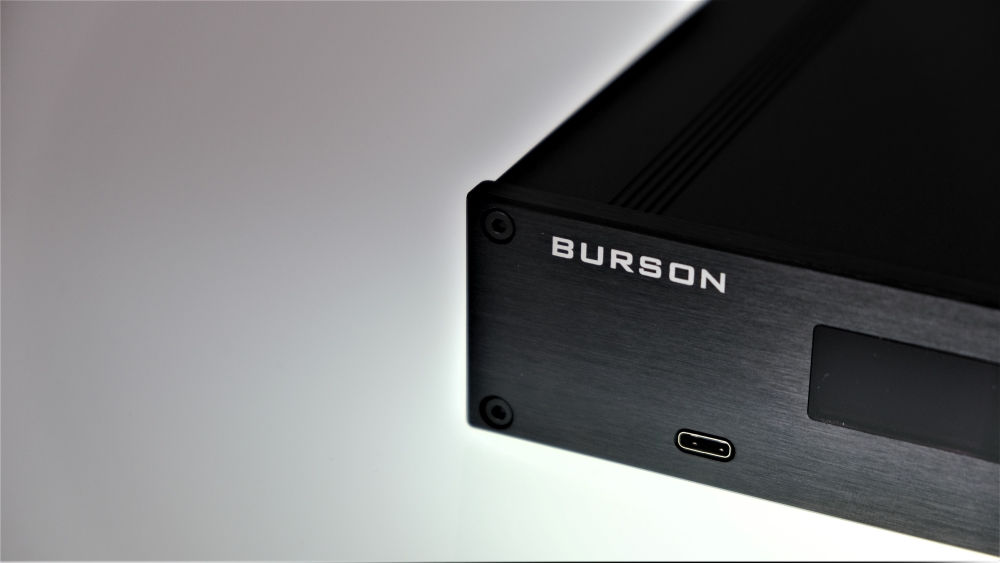
Under the Hood
As the Play, Playmate, Fun and Bang, Swing can also be integrated inside your desktop PC in place of a 5.25” drive bay. You have two options when it comes to feeding the Swing: the external switching PSU or your PC PSU, but you’ll need a powerful and stable PSU since Swing will drain 12V and up to 5A of power.
My desktop computer doesn’t have drive bays so I only used the supplied external PSU, which worked really well. In general, I am not a big fan of the switching power supplies because of weak dynamics and dirty background but since Burson developed their legendary Max Current Power Supply inside their Swing, the switching PSU becomes a non-issue anymore, I really like the Burson’s approach.
Of course, the Swing will sing using a very high-performance DAC chip, it is being powered by a stereo ES9038Q2M chip that is considered top class, it is not the 8-channel PRO version, I’m OK with that, will tell you why in our comparison at the end of the article.
Swing is also using a high-performance USB interface: XMOS XU-208 that is also used in much more expensive designs, even my own 1800 USD Matrix X-Sabre PRO is using it, which I find quite interesting. Of course, the XMOS interface is free of weird noises, hum or any interference via USB, so that is a good sign.
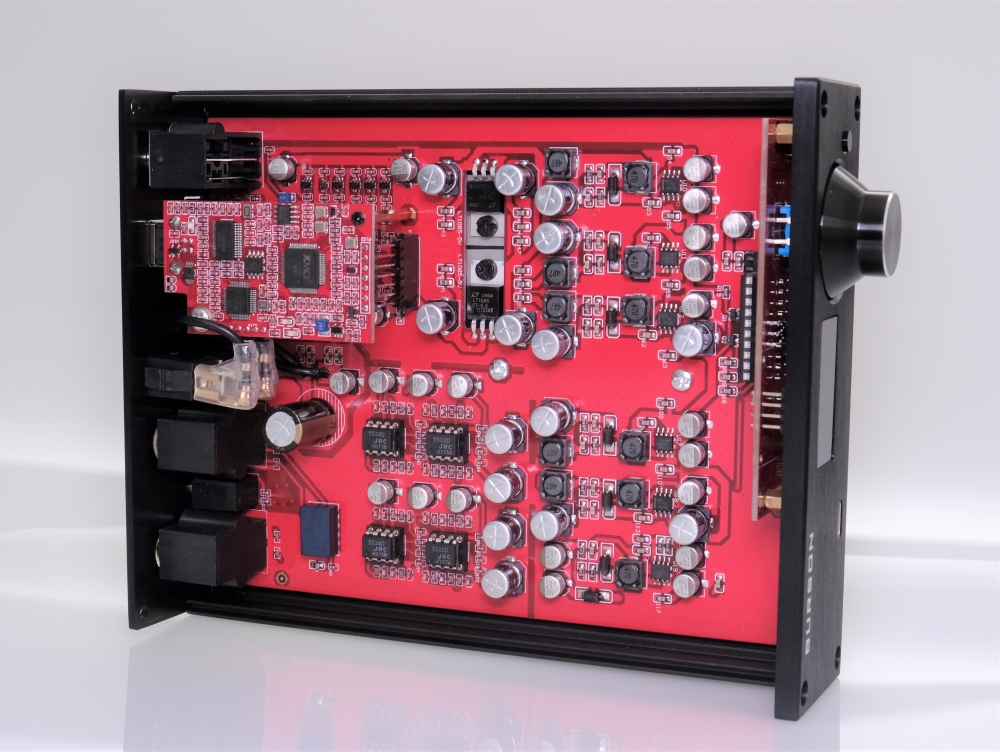
High quality audio grade electrolytic capacitors from ELNA are spotted here and there but none of them are in the signal path!
Toshiba discrete transistors can also be spotted, Dale military grade transistors as well, a very well-made DAC from the technical point of view.
As the Playmate, Swing is also using Burson made Max Current Power Supply (MCPS), this one overcomes the issues of both transformer based linear power supplies and conventional switching power supplies. Of course, this MCPS is tuned to work in class-A for a black as nigh background.
Swings has four DIP8 socketed op-amps, I am however rocking the Basic, east-European friendly version that is powered by two NE5532 single op-amps and by another two NE5534 dual op-amps. All four are DIP8 versions and can be swapped with higher performance op-amps like Burson’s own V6 Classic and V6 Vivid offerings. The Basic one can be had for 400 USD and the most advanced one for 700 USD, a 300 USD difference for the upgraded op-amps. If you want the most advanced version, here is a tip for you, put in your cart the Basic version and separately a pair of single V6 and a pair of dual V6 op-amps and you will save exactly 100 USD with that wombo-combo! You’ll thank me later.
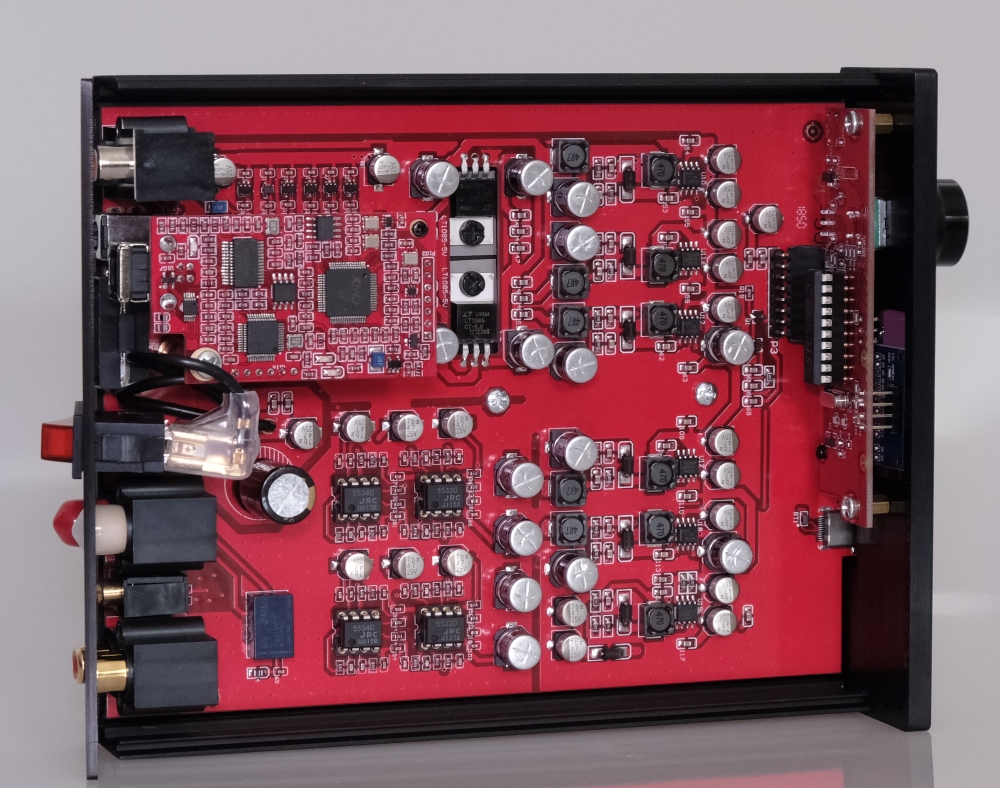
Menu Options
I’m glad Burson opted for an LCD screen on the front panel, it will show important information as your volume level (for the preamp out), your selected output, your digital stream of PCM or DSD and the bitrate.
Pushing the small button on the far-right enters the menu where a lot of settings can accessed as:
1. You can select 4 digital inputs: USB type C, type B, Optical and Coaxial. I used USB type B and Optical input from my ChromeCast enabled TV, both worked excellent.
2. You can select your output: DAC out or preamp out. If you select the preamp output the volume wheel will start working and on the display the volume setting will be displayed.
3. You can select the pre level, basically a preamp gain: Low or High, I recommend the default High setting. For very sensitive active speakers you can use the Low setting.
4. Selectable digital filters that are built-in directly in the ESS DAC chip. You can play with them to tailor the sound to your liking. There is a faint difference between them, I prefer the LP Fast by a small margin.
5. DPLL for DSD and for PCM data streams, the higher the setting is the higher the jitter rejection will be, left it on high position.
6. Emphasis – I’m glad it is on “Off” position by default. Putting it on “On” position will roll-off the treble by about 5dB at 10 kHz and by about 8dB at 20 kHz. I strongly recommend leaving it at “Off” position for the best performance and the most accurate frequency response.
7. Reset all settings: self-explanatory
Thumbs-up team Burson for implementing a cool menu and few must-have settings.
Now, let’s get to the most interesting part, shall we?

Sound Performance
I. Using the Swing in a headphone-based system
I first used the Swing with few of my headphone amps obviously connected to some sensitive IEMs and desktop class headphones. Since Swing has two outputs it is really easy comparing two headphone amps on the same DAC, in this regard it is a reviewer’s dream.
First thing I noticed is that it has a very black background, free of any type of noise, even my sensitive IEMs didn’t pick up any noise. To some degree it has an even cleaner presentation that the all in-one Playmate has, and should I remind you as stated in my review, Playmate was already great with IEMs.
This is obviously a Burson design if first thing that tickled my ears was a hard kicking, eardrum slamming presentation. If you think an ESS based design should sound on the dry side with lots of digitus and harsh treble, think again. I really don’t know what secret sauce Burson is pouring over its designs but they always sound so engaging, so alive, natural and hard kicking, seems that Swing is no exception to that rule.
Carefully selected analog parts plus a very revealing chip yielded the best of both worlds, it has great resolution and transparency levels and lots of grunt, slam and an easy-going natural presentation.
Swing is mostly linear and has an excellent frequency range, without cutouts in the lower or upper registers, from lowest base to upper treble there is definition and clear outline of every note. I said mostly because I believe the mid-bass and the midrange is a bit on the warmer side to always infuse a little bit of joy and euphoria to the listener.
Depth is in the big boy category with excellent pin-point imaging for a very 3D sound around the listener.
Since soundstage on headphones is not as easy to define as it is on speakers, I moved my listening to the living room.
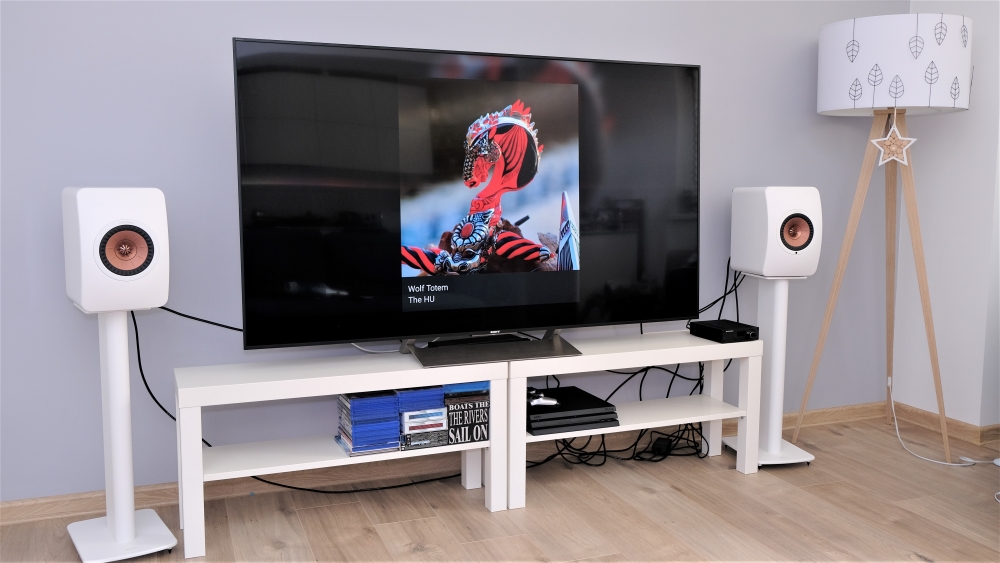
II. Using the Swing in a speaker-based system.
My KEF LS50W are basically a 4-in-1 system consisting of a Hi-Res DAC, a streamer, a dual-mono amplifier and a pair of coaxial speakers. However, they offer a pair on RCA analog inputs, just in case I want to connect a better DAC to them and this is exactly what I did.
My TV has a built-in Chromecast Audio and an optical output, so connecting to Swing was a 1-minute job streaming lossless files via Tidal.
First thing that hit me was how much cleaner it sounded compared to the built-in Hi-Res DAC. Detail retrieval is certainly on a higher level and almost pulled to the extreme. Frequency response is just exceptionally reproduced, from the lowest base to the highest musical notes, everything is crystal clear, I’m easily spotting imperfections in the recordings, like a chair is being moved in the studio, like singers are moving their feet. Everything just becomes a simple game of imagination.
Of course, the same speed and impact I’ve heard on headphones was very present here as well. Unlike other cheaper alternatives I recently covered (Loxjie D20 and xDuoo TA-10), Swing doesn’t have timing errors and has a high degree of precision.
Listening to instrumental music mixed with some rock and folk tunes, everything sounded easy going and quite natural, neither syrupy, neither dry, with an exact dose of naturalness and technical precision.
Listening to a fast and crowded recording I never felt that Swing is losing its pace, rhythm or timing, or that is chocking and mixes musical notes into a muddy audio blob, that will never happen.
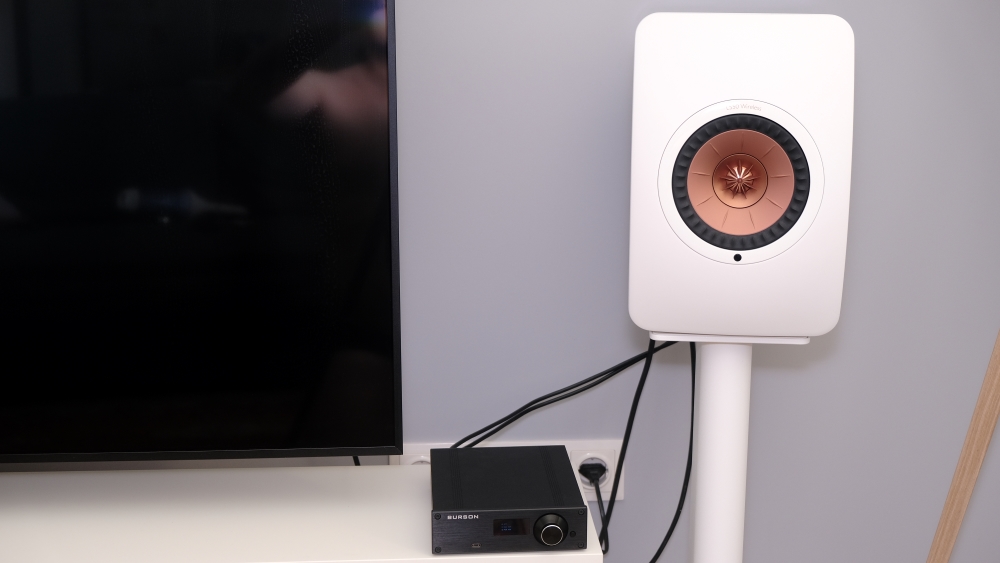
Every note is being played in its own air-bubble with a big void between them. Swing is not crowded or forward sounding and that is a good thing.
I can rarely describe am ESS Sabre based DAC as being natural sounding, musical and a bit sweet, but Burson with their secret audio sauce is proving that everything is possible and Swing is an exception to that formula.
In my opinion Swing has a very good tonal balance with a mix of technical prowess and musical enjoyment, it will never sound boring, dry, toneless and will never lack dynamics.
Listening to some old rock tunes I was curious if the vintage and a bit distorted sound will be still intact and to my surprise it sounded as I remember it on much higher priced DACs. That analogue grain and flow was still intact, the imperfections of the recording are still there but those are not scratching my ears and are not screaming for my attention. I’m glad the soul of those recordings is still there.
Passing through my ’90 electronica it was clear to me that impact and slam are again on a high level.
I could not characterize it as lightning quick, more like thunder quick, but still everything is fast with excellent rise and decay of the notes. I started feeling the impact with my whole body not only with my ears.
Fun factor is phenomenal and the mix created by the electric guitars and digital sounds is so well played, I can easily pick a single sound and focus my hearing only on it with ease.
At last I can freely write about soundstage and its size. Music is spread not only in a 2D field, every note will have a X, Y and Z axle and you can feel and hear the distance between yourself and that note. Soundstage is on the wider side so I can look into and easily analyze every track and every individual sound. Sounds are reaching me with longer decays on speakers so I am having plenty of time analyzing the stage and nuance of every note.
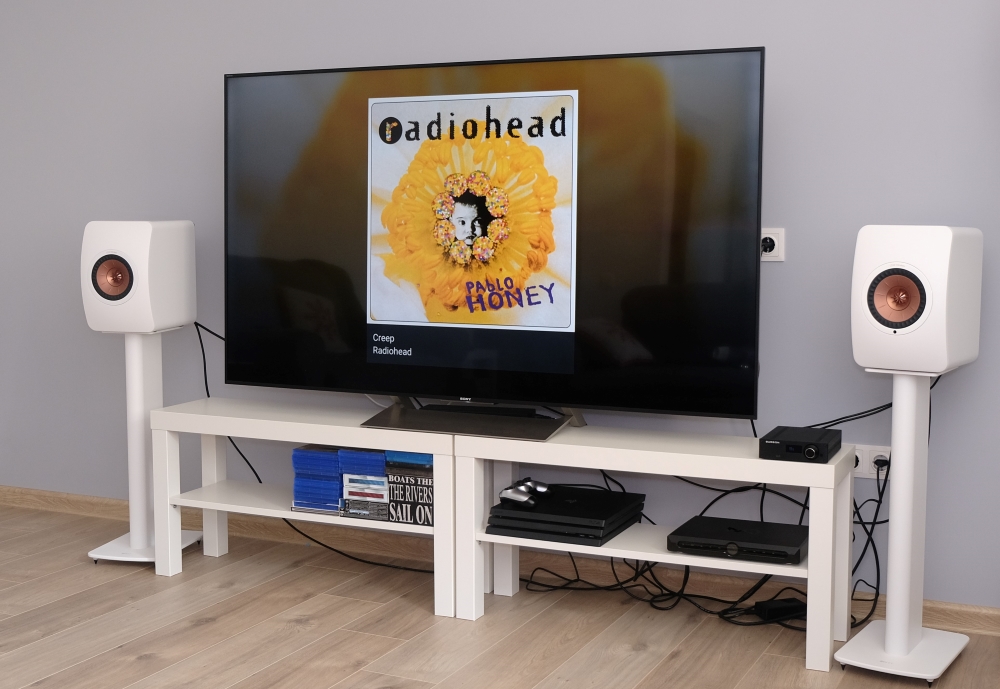
Comparisons
Burson Playmate Basic (400 USD) VS Burson Swing Basic (400 USD)
I briefly compared the Burson Playmate Basic with the Burson Swing basic, both priced at 400 USD. Playmate is having also a headphone amp section; however, Swing is rocking an extra digital input (coaxial) and an additional line-out. Build quality wise both are identical and look the same.
When it comes to sound performance the difference is really small but there is still a difference.
Swing has a nicer frequency response and will extract more information up top, I’ve heard it on speakers and on headphones as well, especially in the upper treble Swing has just higher amount of information and it is just a smudge cleaner sounding. Playmate has a slight treble muddiness and with Swing that is completely gone.
Listening on speakers the air bubbles of the notes are bigger on the Swing, not by much but noticeable. Apart from that, soundstage size and depth are equally impressive.
Next test was even more interesting…
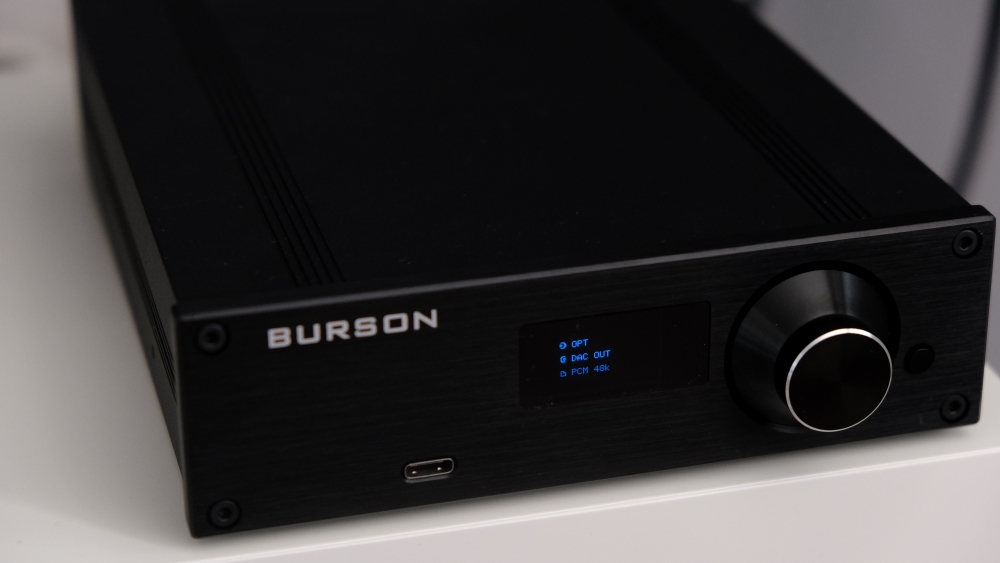
Matrix X-Sabre PRO (1800 USD) VS Burson Swing Basic (400 USD)
I am very familiar with my X-Sabre Pro and I know its presentation extremely well. This test was mainly done using my headphones since my headphone amp has two analog inputs and a simple switch to change between them. So, comparing two DACs was really easy, especially on a nice pair of revealing headphones.
I started listening to the same track I listened previously and started flipping the switch, I volume matched both sources for a more critical listening.
To my big surprise the difference was much smaller than I anticipated and in a blind listening test I might fail picking one from the other. The same natural, fast, impactful presentation was heard on both devices. Hell, even the detail retrieval was almost on the same level, it was on the same page for sure. X-Sabre Pro was ahead by just a hair!
Speaking about naturalness and musicality Swing jumped ahead with just a better flow, it was really grain-free in the long run. X-Sabre Pro will still extract more information and will catch your attention more often and will not be as smooth and musical in the long run.
Swing certainly didn’t sound 4.5 times worse than the Pro; both will complement each other and will be side-grades than unquestionable upgrades. This way a bit unexpected.
Soundstage wise both sounded the same, so I again moved my listening tests to my living room and there I saw the biggest improvement on the X-Sabre Pro as it just sounded grander and deeper.
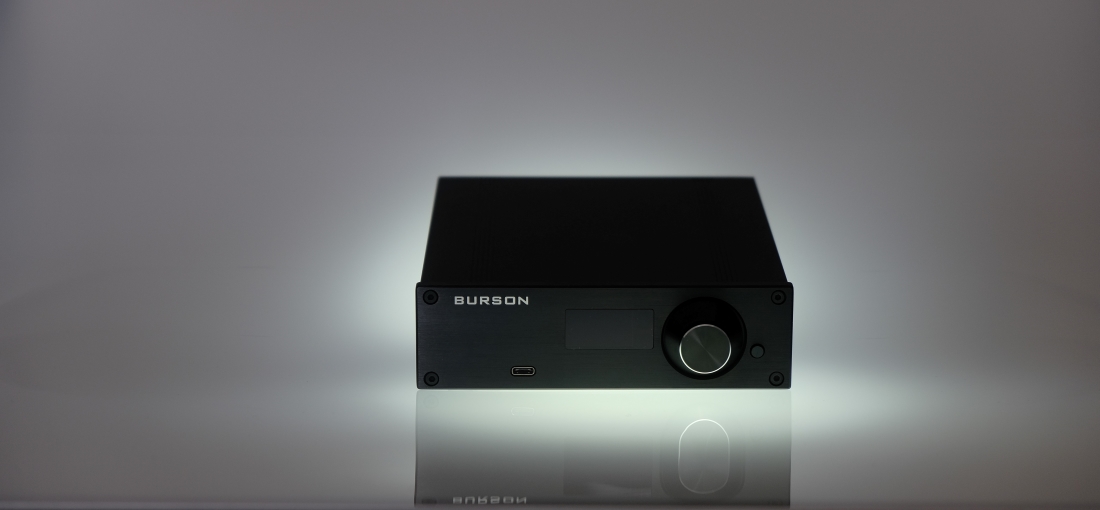
Conclusions
So here we have it folks, a mighty sounding DAC and digital preamp at the cost of a nice pair of cables.
I’m glad Burson finally released a standalone DAC in their line-up, they didn’t do it for about 8 years now, their last such device was the DA-160. Burson Fun and Bang users can easily sleep now as they have a new target on their radar.
Swing in unquestionable an excellent performing DAC in a speaker-based on headphone-based system. As such, it’s an easy recommendation, at 400 USD it’s simply a must buy. Speaker users be warned though, the basic version does not have a remote control in the package and the LCD screen is fairly small, go with the upgraded version for that nice metallic remote.
Burson Swing can be purchased directly from Burson Audio, here’s a link
My video review can be found right here
PROS:
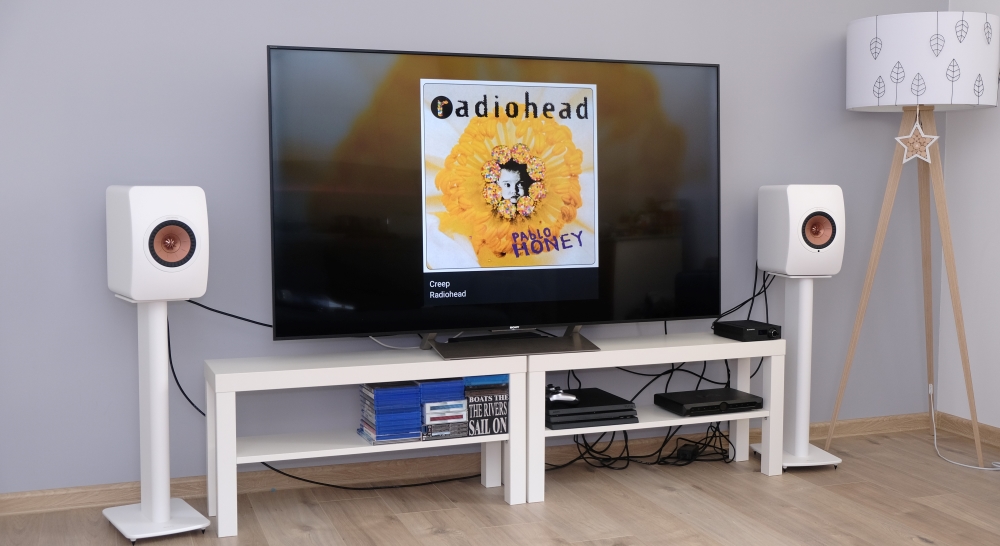
I still remember listening to the Burson Fun and Bang and thinking that what they really need is a dedicated DAC for those units and this is how Swing came to be. As good as DAC+Amp combos are they can’t quite match separate units, Burson Play and Playmate were really good, outstanding even if you take into consideration their price points, but if you want a higher performing sound from the Burson family, Swing should be that answer.
Inside the Box
Unboxing experience is excellent! Swing came double boxed with extra foam for a good protection. Inside you’ll find: the Swing, an USB cable, a switching power supply, a power cable, a high-quality RCA interconnect cable with nice Pailics RCA jacks, an extra USB cable with a 4pin connector at the other end (connected directly to a desktop motherboard), a RCA out back-plate for a desktop computer, the premium V6 versions are also having a nice remote control, I’ve have the basic version so no remote for me. Swing also comes with an extra mini fuse in case the preinstalled out burns, a pleasant surprise.

Design & Build Quality
Fit and finish is pretty good, sadly it is being offered only in a black anodized aluminum case, would love to see a raw aluminum case as well.
As their previous devices it is quite small and lightweight, at about 1.5 kg with a case that measures only 210 mm x 145 mm x 45 mm it is very easy to integrate it into tiny work spaces and offices. The final output stage is bolted directly to the case, so it will work as a big heatsink to better dissipate the heat. Swing is much cooler to the touch compared to their previous designs as it has a lower power consumption and will dissipate less heat. I think it looks nice and minimalistic, I just wish it had a slightly bigger LCD screen as listening to speakers from a distance and operating the menu with the remote is troublesome, unless you are eagle-eyed.
Inputs & Outputs
There are three digital inputs on the back: USB, Optical and Coaxial, there is also a second USB type C on the front panel in case you’ll want to use your smartphone or your DAP as a source. Swing can be powered by the external switching power supply or by your PC power supply, there is also a On/Off switch and two analog outputs: a clean 2V line-out and a volume controlled line-out – basically transforming the Swing into a digital preamp. I’m really glad Swings offers two line-outputs as comparing two integrated or headphone amps is much easier this way. On the front panel there is also a small LCD screen, a digitally controlled volume potentiometer and a menu button.

Under the Hood
As the Play, Playmate, Fun and Bang, Swing can also be integrated inside your desktop PC in place of a 5.25” drive bay. You have two options when it comes to feeding the Swing: the external switching PSU or your PC PSU, but you’ll need a powerful and stable PSU since Swing will drain 12V and up to 5A of power.
My desktop computer doesn’t have drive bays so I only used the supplied external PSU, which worked really well. In general, I am not a big fan of the switching power supplies because of weak dynamics and dirty background but since Burson developed their legendary Max Current Power Supply inside their Swing, the switching PSU becomes a non-issue anymore, I really like the Burson’s approach.
Of course, the Swing will sing using a very high-performance DAC chip, it is being powered by a stereo ES9038Q2M chip that is considered top class, it is not the 8-channel PRO version, I’m OK with that, will tell you why in our comparison at the end of the article.
Swing is also using a high-performance USB interface: XMOS XU-208 that is also used in much more expensive designs, even my own 1800 USD Matrix X-Sabre PRO is using it, which I find quite interesting. Of course, the XMOS interface is free of weird noises, hum or any interference via USB, so that is a good sign.

High quality audio grade electrolytic capacitors from ELNA are spotted here and there but none of them are in the signal path!
Toshiba discrete transistors can also be spotted, Dale military grade transistors as well, a very well-made DAC from the technical point of view.
As the Playmate, Swing is also using Burson made Max Current Power Supply (MCPS), this one overcomes the issues of both transformer based linear power supplies and conventional switching power supplies. Of course, this MCPS is tuned to work in class-A for a black as nigh background.
Swings has four DIP8 socketed op-amps, I am however rocking the Basic, east-European friendly version that is powered by two NE5532 single op-amps and by another two NE5534 dual op-amps. All four are DIP8 versions and can be swapped with higher performance op-amps like Burson’s own V6 Classic and V6 Vivid offerings. The Basic one can be had for 400 USD and the most advanced one for 700 USD, a 300 USD difference for the upgraded op-amps. If you want the most advanced version, here is a tip for you, put in your cart the Basic version and separately a pair of single V6 and a pair of dual V6 op-amps and you will save exactly 100 USD with that wombo-combo! You’ll thank me later.
Menu Options
I’m glad Burson opted for an LCD screen on the front panel, it will show important information as your volume level (for the preamp out), your selected output, your digital stream of PCM or DSD and the bitrate.
Pushing the small button on the far-right enters the menu where a lot of settings can accessed as:
1. You can select 4 digital inputs: USB type C, type B, Optical and Coaxial. I used USB type B and Optical input from my ChromeCast enabled TV, both worked excellent.
2. You can select your output: DAC out or preamp out. If you select the preamp output the volume wheel will start working and on the display the volume setting will be displayed.
3. You can select the pre level, basically a preamp gain: Low or High, I recommend the default High setting. For very sensitive active speakers you can use the Low setting.
4. Selectable digital filters that are built-in directly in the ESS DAC chip. You can play with them to tailor the sound to your liking. There is a faint difference between them, I prefer the LP Fast by a small margin.
5. DPLL for DSD and for PCM data streams, the higher the setting is the higher the jitter rejection will be, left it on high position.
6. Emphasis – I’m glad it is on “Off” position by default. Putting it on “On” position will roll-off the treble by about 5dB at 10 kHz and by about 8dB at 20 kHz. I strongly recommend leaving it at “Off” position for the best performance and the most accurate frequency response.
7. Reset all settings: self-explanatory
Thumbs-up team Burson for implementing a cool menu and few must-have settings.
Now, let’s get to the most interesting part, shall we?

Sound Performance
I. Using the Swing in a headphone-based system
I first used the Swing with few of my headphone amps obviously connected to some sensitive IEMs and desktop class headphones. Since Swing has two outputs it is really easy comparing two headphone amps on the same DAC, in this regard it is a reviewer’s dream.
First thing I noticed is that it has a very black background, free of any type of noise, even my sensitive IEMs didn’t pick up any noise. To some degree it has an even cleaner presentation that the all in-one Playmate has, and should I remind you as stated in my review, Playmate was already great with IEMs.
This is obviously a Burson design if first thing that tickled my ears was a hard kicking, eardrum slamming presentation. If you think an ESS based design should sound on the dry side with lots of digitus and harsh treble, think again. I really don’t know what secret sauce Burson is pouring over its designs but they always sound so engaging, so alive, natural and hard kicking, seems that Swing is no exception to that rule.
Carefully selected analog parts plus a very revealing chip yielded the best of both worlds, it has great resolution and transparency levels and lots of grunt, slam and an easy-going natural presentation.
Swing is mostly linear and has an excellent frequency range, without cutouts in the lower or upper registers, from lowest base to upper treble there is definition and clear outline of every note. I said mostly because I believe the mid-bass and the midrange is a bit on the warmer side to always infuse a little bit of joy and euphoria to the listener.
Depth is in the big boy category with excellent pin-point imaging for a very 3D sound around the listener.
Since soundstage on headphones is not as easy to define as it is on speakers, I moved my listening to the living room.

II. Using the Swing in a speaker-based system.
My KEF LS50W are basically a 4-in-1 system consisting of a Hi-Res DAC, a streamer, a dual-mono amplifier and a pair of coaxial speakers. However, they offer a pair on RCA analog inputs, just in case I want to connect a better DAC to them and this is exactly what I did.
My TV has a built-in Chromecast Audio and an optical output, so connecting to Swing was a 1-minute job streaming lossless files via Tidal.
First thing that hit me was how much cleaner it sounded compared to the built-in Hi-Res DAC. Detail retrieval is certainly on a higher level and almost pulled to the extreme. Frequency response is just exceptionally reproduced, from the lowest base to the highest musical notes, everything is crystal clear, I’m easily spotting imperfections in the recordings, like a chair is being moved in the studio, like singers are moving their feet. Everything just becomes a simple game of imagination.
Of course, the same speed and impact I’ve heard on headphones was very present here as well. Unlike other cheaper alternatives I recently covered (Loxjie D20 and xDuoo TA-10), Swing doesn’t have timing errors and has a high degree of precision.
Listening to instrumental music mixed with some rock and folk tunes, everything sounded easy going and quite natural, neither syrupy, neither dry, with an exact dose of naturalness and technical precision.
Listening to a fast and crowded recording I never felt that Swing is losing its pace, rhythm or timing, or that is chocking and mixes musical notes into a muddy audio blob, that will never happen.
Every note is being played in its own air-bubble with a big void between them. Swing is not crowded or forward sounding and that is a good thing.
I can rarely describe am ESS Sabre based DAC as being natural sounding, musical and a bit sweet, but Burson with their secret audio sauce is proving that everything is possible and Swing is an exception to that formula.
In my opinion Swing has a very good tonal balance with a mix of technical prowess and musical enjoyment, it will never sound boring, dry, toneless and will never lack dynamics.
Listening to some old rock tunes I was curious if the vintage and a bit distorted sound will be still intact and to my surprise it sounded as I remember it on much higher priced DACs. That analogue grain and flow was still intact, the imperfections of the recording are still there but those are not scratching my ears and are not screaming for my attention. I’m glad the soul of those recordings is still there.
Passing through my ’90 electronica it was clear to me that impact and slam are again on a high level.
I could not characterize it as lightning quick, more like thunder quick, but still everything is fast with excellent rise and decay of the notes. I started feeling the impact with my whole body not only with my ears.
Fun factor is phenomenal and the mix created by the electric guitars and digital sounds is so well played, I can easily pick a single sound and focus my hearing only on it with ease.
At last I can freely write about soundstage and its size. Music is spread not only in a 2D field, every note will have a X, Y and Z axle and you can feel and hear the distance between yourself and that note. Soundstage is on the wider side so I can look into and easily analyze every track and every individual sound. Sounds are reaching me with longer decays on speakers so I am having plenty of time analyzing the stage and nuance of every note.

Comparisons
Burson Playmate Basic (400 USD) VS Burson Swing Basic (400 USD)
I briefly compared the Burson Playmate Basic with the Burson Swing basic, both priced at 400 USD. Playmate is having also a headphone amp section; however, Swing is rocking an extra digital input (coaxial) and an additional line-out. Build quality wise both are identical and look the same.
When it comes to sound performance the difference is really small but there is still a difference.
Swing has a nicer frequency response and will extract more information up top, I’ve heard it on speakers and on headphones as well, especially in the upper treble Swing has just higher amount of information and it is just a smudge cleaner sounding. Playmate has a slight treble muddiness and with Swing that is completely gone.
Listening on speakers the air bubbles of the notes are bigger on the Swing, not by much but noticeable. Apart from that, soundstage size and depth are equally impressive.
Next test was even more interesting…
Matrix X-Sabre PRO (1800 USD) VS Burson Swing Basic (400 USD)
I am very familiar with my X-Sabre Pro and I know its presentation extremely well. This test was mainly done using my headphones since my headphone amp has two analog inputs and a simple switch to change between them. So, comparing two DACs was really easy, especially on a nice pair of revealing headphones.
I started listening to the same track I listened previously and started flipping the switch, I volume matched both sources for a more critical listening.
To my big surprise the difference was much smaller than I anticipated and in a blind listening test I might fail picking one from the other. The same natural, fast, impactful presentation was heard on both devices. Hell, even the detail retrieval was almost on the same level, it was on the same page for sure. X-Sabre Pro was ahead by just a hair!
Speaking about naturalness and musicality Swing jumped ahead with just a better flow, it was really grain-free in the long run. X-Sabre Pro will still extract more information and will catch your attention more often and will not be as smooth and musical in the long run.
Swing certainly didn’t sound 4.5 times worse than the Pro; both will complement each other and will be side-grades than unquestionable upgrades. This way a bit unexpected.
Soundstage wise both sounded the same, so I again moved my listening tests to my living room and there I saw the biggest improvement on the X-Sabre Pro as it just sounded grander and deeper.

Conclusions
So here we have it folks, a mighty sounding DAC and digital preamp at the cost of a nice pair of cables.
I’m glad Burson finally released a standalone DAC in their line-up, they didn’t do it for about 8 years now, their last such device was the DA-160. Burson Fun and Bang users can easily sleep now as they have a new target on their radar.
Swing in unquestionable an excellent performing DAC in a speaker-based on headphone-based system. As such, it’s an easy recommendation, at 400 USD it’s simply a must buy. Speaker users be warned though, the basic version does not have a remote control in the package and the LCD screen is fairly small, go with the upgraded version for that nice metallic remote.
Burson Swing can be purchased directly from Burson Audio, here’s a link
My video review can be found right here
PROS:
- Impressive frequency response and tonal balance
- Natural sounding, grain-free with a good flow
- Wide soundstage and good depth, not forward at all
- Thunder speed and impact
- Lots of features, inputs and outputs
- Awesome price to performance ratio!
- Basic version lacks a remote
- DACs: Burson Swing & Playmate, Matrix X-Sabre Pro, Loxjie D20, xDuoo TA-10
- Headphone Amps: HeadAmp Gilmore Lite Mk2, Erzitech Bacillus, Burson Playmate, xDuoo TA-10
- Speakers: KEF LS50W
- Headphones: Quad ERA-1, Sennheiser HD660S, Sennheiser Momentum 2, FiiO FA7, FH7
- Cables: QED Reference XLR, Burson Cable+ PRO, Audioquest & Kimber interconnects, PS Audio power cables

DarKu
Reviewer at Soundnews
Pros: Great tonal balance across FR
- Great flow and easiness
- Good kick and impact
- Awesome headphone amp section
- Good depth and a wide soundstage
- Awesome features & lots of improvements
- Best price to performance ratio tested in a DAC/Amp category
- Great flow and easiness
- Good kick and impact
- Awesome headphone amp section
- Good depth and a wide soundstage
- Awesome features & lots of improvements
- Best price to performance ratio tested in a DAC/Amp category
Cons: Slight muddiness on treble
- Not the cleanest treble response
- Not the cleanest treble response
Burson forges are running hot these past days. The fire just settled down around the Play, Fun and Bang, all released not too long ago, that I still consider them fresh products. In my opinion Play was an amazing all-in-one DAC and headphone amp punching way above its league. However, nothing is perfect and Play had its quirks that I mentioned in my Play review.
Play never really shined with sensitive IEMs, background noise and hum plagued it for all multi-BA IEM users, lack of a gain switch was a real pain and made it almost unusable with IEMs. Not to mention the already dated ES9018 DAC chip and did I mention that it had only one digital input? Common Burson, you can do better than that.
A big surprise came about one month ago when I was greeted with 2 announcements from Burson: a much-needed dedicated DAC – called Swing, that should be a perfect partner for the Fun, and a brand-new product called Playmate, that seems to be replacing the Play.
Burson promises to grant all our wishes with this one, so let’s take a closer look, shall we?

Build Quality
Fit and finish is quite good. Playmate is being offered in a black anodized aluminum case - called Noir or in a raw aluminum case called Everest. I have the noir version; anodized version will likely resist few accidental drops or scratches.
Device itself is pretty small and lightweight, at about 1.5kg and having just 210mm x 145mm x 45mm in size its very easy to integrate into tight spaces and small offices.
The aluminum case works as a giant heatsink so it gets warm at touch after about 20 min of run time, its warm but never hot since the amplification stage doesn’t dissipate as much power and heat compared to an integrated amp for example.
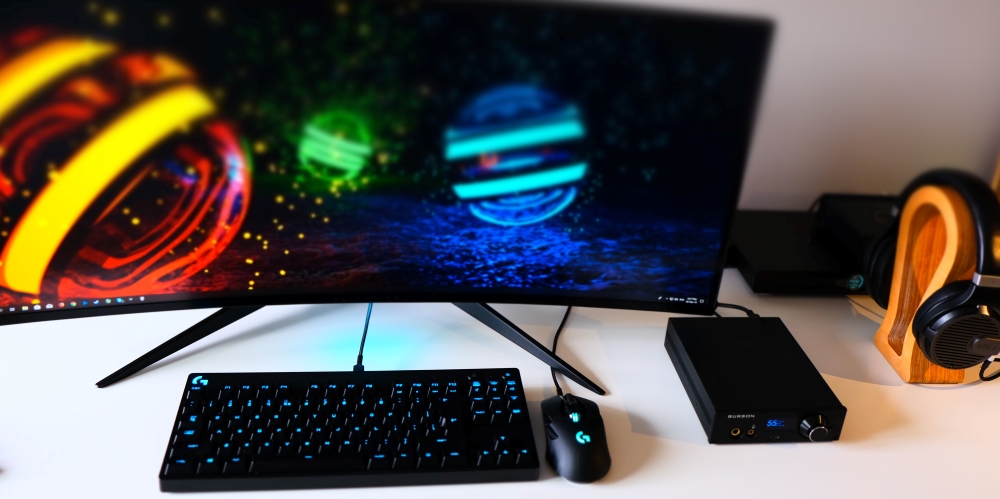
Inputs and Outputs
There are two digital inputs on the back, more exactly an USB type-B, an optical input and on the front, there is a second USB input - Type-C in case your smartphone supports OTG external devices. On the back Playmate can be powered by the external PSU or by your PC PSU (via the 4 pin molex connector), there’s an On/Off switch and a pre-amp output, at about 83 volume Playmate will output around 2 – 2.1 V Rms in case you want to use it as a dedicated DAC.
On the front plate there’s one 1/4” (6.5mm) headphone output, one 1/8” (3.5mm) mic input, an LCD screen, a digitally controlled volume potentiometer and the menu button.
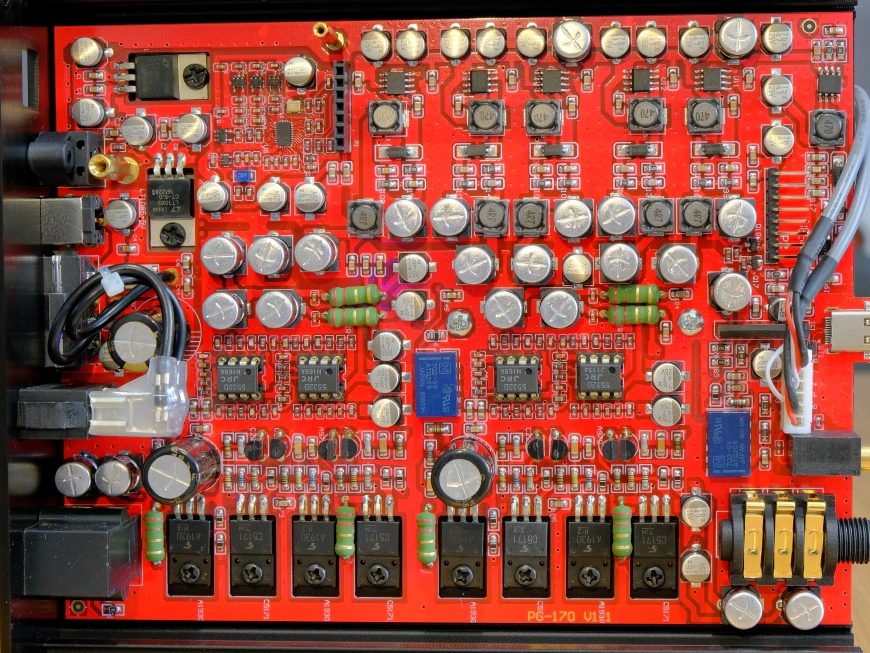
Under the hood
Playmate is again an all-in-one solution not only for audiophiles, but also for the gamers in you.
It has a quite small footprint, as the Play, it can be integrated inside your desktop PC in place of a 5.25” drive bay. You have two options when it comes to powering up the Playmate: using its external SMPS power supply or using a molex connector from your PC power supply. Do note that in case you are powering it with your PC PSU, Playmate will drain 12V and up to 5A of power (roughly 60W at full power), you’ll need a powerful PC PSU, so keep that in mind.
I don’t have a drive bay on my desktop Aurora 7 so I used it as an external device, which I sincerely recommend you doing the same, not because you’ll stress your PC PSU too much, but mostly because you will rule out all electromagnetic fields and interferences inside your PC case. Noise free is the only way to go if you serious about your final result.
Probably one of the most notable changes is the upgraded DAC chip, the veteran ES9018 was used by Burson since Conductor V1 (2012!) until Burson Play (2018!) was replaced by a much newer and much more impressive ES9038 DAC chip. Unfortunately, it is not the PRO version, ES9038Q2M is a mobile version of the famous ES9038PRO. Both are currently benchmarks in terms of commercial made (non-custom) DAC chips around the globe.
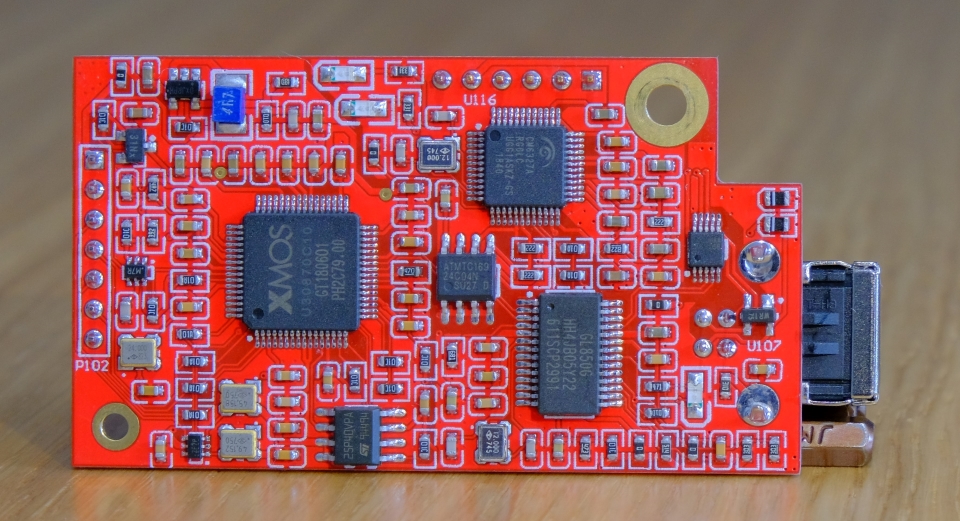
On the removable USB card, a powerful USB transporter can the spotted: XMOS XU-208 – I’ve seen this particular chip in much more expensive designs, even my own 1800 USD Matrix X-Sabre Pro is using it, which I find interesting. I didn’t have any hiccups, weird noises, or any interferences using the Playmate via USB, so that is a very good sign in my book.
It is a pleasure to spot the best capacitors in the business, Elna Silmic audio grade caps are literally everywhere, they are most probably used at PSU or noise filtering, since none of them are in the signal path!
Toshiba discrete transistors can also be spotted, Dale military grade transistors…what can I say, Burson didn’t waste a dime designing this interesting piece of audio gear.
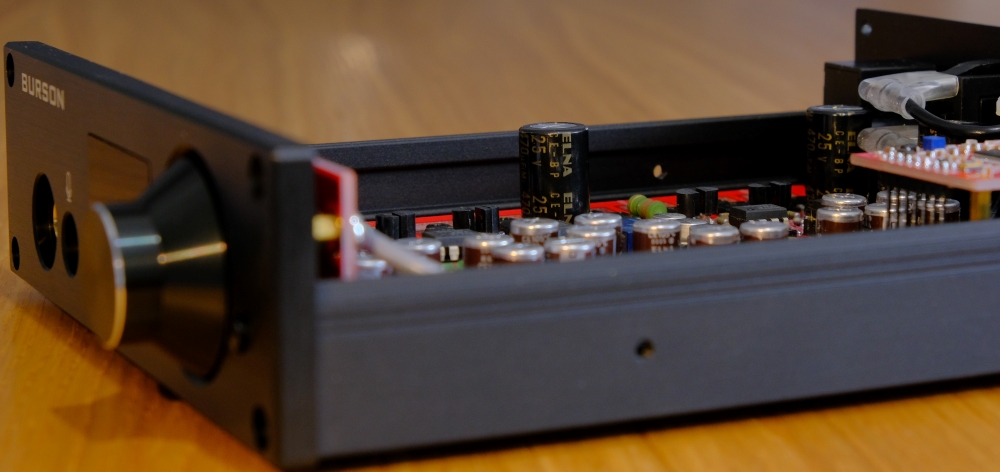
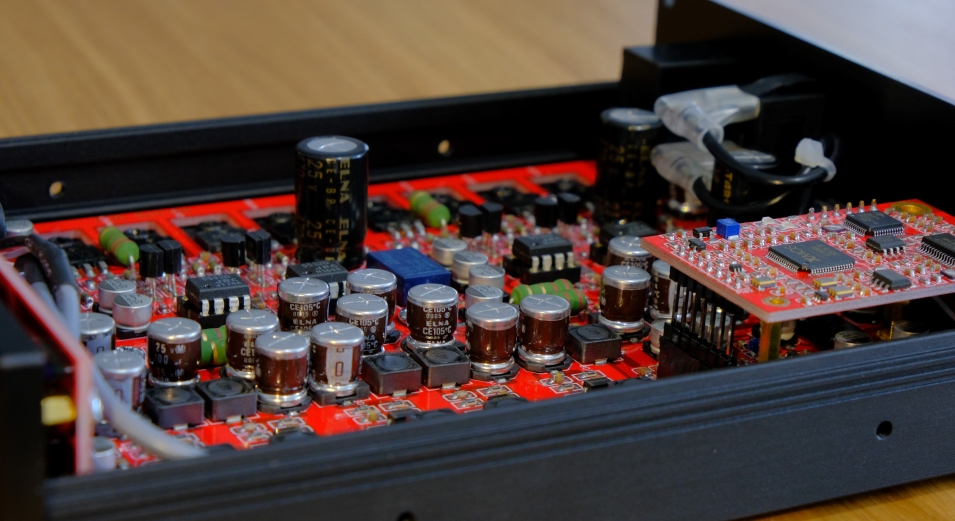
As the Play and Fun before it, Playmate is using a Burson made Max Current Power Supply. This proprietary MCPS overcomes the issues of both transformer based linear power supplies and conventional switching power supplies. These MCPS are tuned to work in Class-A for that intoxicating black as night background.
Playmate has four rollable op-amp sockets, I’m having the basic version with four NE5532 dual op-amps, all those four can be changed to your liking, Burson is also offering their own V6 Classic and V6 Vivid flavors. The most pimped-up Playmate is roughly twice the price of the basic version. Want the best? Smash that piggy bank for it!
I’m really glad Burson opted for an LCD screen on the front panel, it not only shows your volume levels, but also your selected output (headphone out or pre-amp out) and your digital stream (PCD or DSD and bitrate). Pushing the small button on the far right enters the menu where lots of setting can be accessed.
Now, I’d like to call out the biggest improvement in terms of ease of use and accessibility Burson made to make it much better.
Let’s get to the most interesting part, shall we?
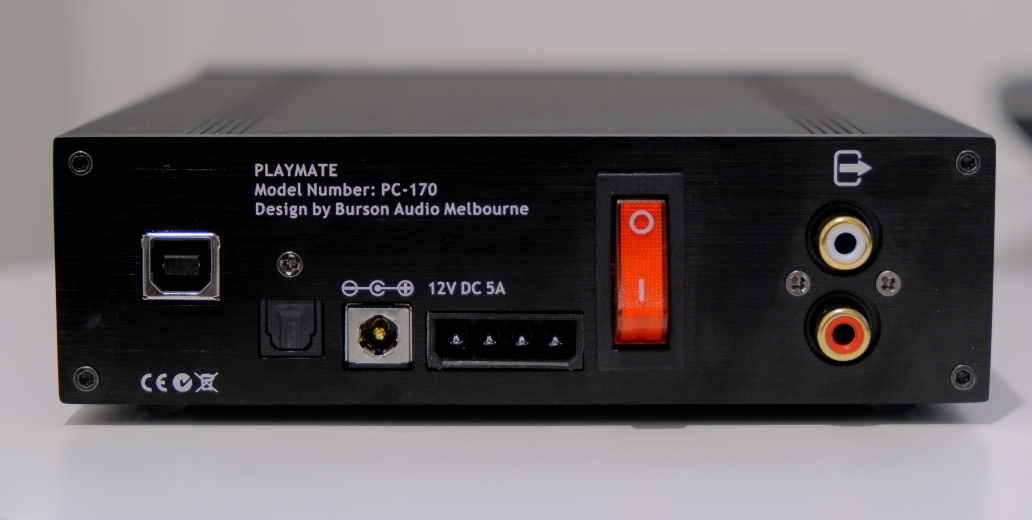
Sound Impressions
I. Big Improvements
First and foremost I would like to mention key aspects where I feel Playmate was much improved compared to Play in terms of usability and sound performance.
1. Playmate can now be used with IEMs - a thing that was almost impossible with the Play.
Playmate has a very convenient gain setting in the OSD menu, putting it on low is a Godsend for every IEM user. You have a much wider volume gap to play with and there is no hum or noise whatsoever. Background noise is nowhere to be found and background seems to be black as night even with multi-driver balanced armatures.
2. Playmate has lower output impedance.
Headphone output impedance was lowered from 8 Ohms to just 2 Ohms or below. I am hearing much more control with my IEMs, bass is no longer flabby with long decays, it is faster and more precise. A lower impedance output improved almost everything, transient response is first on the list and I am happy to hear a clearer image overall compared to Play.
3. Playmate is offering more power for higher impedance headphones.
With your typical low impedance headphones, the difference is negligible between the two. However, for 100 Ohm or higher impedance headphones, Playmate will be offering more juice. I could drive a pair of very inefficient 200 Ohm Audeze LCD-4 with both of them, however with Playmate I have a little bit more headroom and dynamics. More power and dynamics for the same price? Pretty please, I’m all for it.
There are also many smaller improvements that I would like to mention separately.

II. Improvements (without the Big):
Moving on from the old and trusty ES9018 DAC chip to a higher performance ES9038Q2M resulted in serious changes in the overall sound performance.
I always felt that ES9019 is a pretty good chip, but very hard to implement the right way. There are multiple designs where I felt it sounded bright and even fake. That is exactly what I don’t want to hear in my room: Fake midrange and hot treble. To some degree Conductor V1 (the one with the ES9018 inside) was like that.
ES9038 is completely another story, a merrier one. I never heard an ES9038 based design that had fake midrange or very hot treble and that is good thing.
You can screw up an ES9018 based design very easily, but you cannot with an ES9038 inside, it is just much more stable, has a better jitter rejection and doesn’t need as much power filtering (how ES9018 needed).
In my opinion there is a very clear difference in the overall sound performance from Play to Playmate. Playmate sounds even more natural, has a (much) better flow, everything just comes easily towards the listener.
Playmate is the complete opposite of digitus! ES9038 directly impacted the linearity of Playmate since it no longer has a very linear frequency response; it is more on the warmer side of things. Not by much, but there is no denying the warmness I am hearing.
Think of it like a very high-performance tube-based design, if this makes any sense to you. Playmate has still a very solid-state sound, but it also has some flow that you rarely hear on any SS (solid state) designs.
Playmate has a great midrange presence. I am starting with midrange because I feel this is the best part where I think Playmate really shines.
String based instruments have a very mood lifting zing to them, the texture of those notes appears natural and real to me. It was a pure joy listening to any instrument-based recordings.
Voices have slightly longer decays, that make you appreciate those cords vibrations just a little bit more.
Headphones that are lacking in midrange presence will partner great with this Playmate. Even my Sennheiser HD660S that are good but not great in the midrange department shined on Playmate, every point where HD660S lacked was cured by the Playmate, this was a great pairing.
The overall sub-bass and bass performance is very similar to the one on the Play, and that is a good thing.
Playmate has a good sub-bass performance, with the right headphones (Quad ERA-1) I am hearing rumbling deep bass that almost shakes my head. Playing Invisible Sun by The Prodigy at the 00:40 mark a very low 20 Hz note can be heard only on select headphones, sources and amplifiers. Playmate passed the test pretty easily.
On other test tracks by Infected Mushroom I’ve heard multiple bass layers that are always welcomed.
There is an elevation between mid and upper bass, from 80 up to 200 Hz there is a clear emphasis in this area so almost all modern recordings will have a slight bloom. Throw any EDM, Hip-Hop or electronica and Playmate will just shine.
Treble performance is good but not excellent. Unfortunately, the bite I was hearing on Play is not so obvious anymore. Playmate is calmer in this area and upper leading edges cannot be found on Playmate. That is one of the very few things that bothered me a bit.
The second least impressive aspect is that transient response was also affected. By comparison Play sounds a bit faster and hits harder (only on high impedance headphones!)
It’s noticeable especially on cymbals and double drums where Play rendered them just fine, but on Playmate there is a bit of muddiness (or mushiness) as it is not keeping up with double drums.
These are literally the only two things that bothered me when I was evaluating the Playmate.
Do note, I have the Play and Playmate in stock forms, maybe V6 upgraded ones will sound different.
Soundstage size is medium to wide, with Quad ERA-1 and HD660S it sounds wider than Play and on the same level with Fun, I appreciated the wide stage on few classical pieces.
Depth is also good and pretty much in a higher tier league comparing to other devices in the same price range (Matrix Mini-I Pro 2, Gilmore Lite mk2).
Comparisons
Well, as you can see my whole review became a big comparison between the Play and Playmate so it doesn’t make any sense to compare the two anymore from this point on. Bottom line Playmate is much better, go for it instead.

Burson Playmate VS Headamp Gilmore Lite Mk2
Playmate costs 400 USD and Gilmore Lite goes for 500 USD so there’s that, Gilmore Lite also doesn’t have a DAC section, so I call it a fair comparison.
I connected the Gilmore Lite to the Playmate pre-amp output and set the volume at 83 for a 2.1 V output.
First of all, it seems that Playmate has A LOT more power and will drive literally everything, if it drives my LCD-4, then it drives anything you want. Gilmore Lite starts clipping at around 90% volume, sadly it can’t drive my LCD-4.
Playmate has a warmer sound signature that stays on the safer side on things, you can hook it up with a wider range of headphones.
Gilmore Lite is basically a wire with gain, it almost disappears from your audio chain, if you don’t like your headphones, Gilmore Lite will make them even worse. On the other side, Gilmore Lite will sound truer to life and to the recording, it is truly a reference single ended headphone amp. It is so linear that most of the time you will hear your source and your headphones and not a coloration induced by the amp.
Gilmore Lite also has a faster transient response, it’s always nimble and light on feet, for faster music Gilmore wins most of the times.
Now, in terms of tonal balance and overall enjoyment levels I would say Playmate is better and a smile will appear more often with it. Gilmore Lite can be boring sometimes, especially if the listening music is also boring and un-engaging.
For Gilmore Lite you will need a separate DAC box, so keep that in mind.
There is no point in comparing the Playmate with a Matrix Mini-I Pro 2 since I think the later one can’t properly drive full-sized headphones and doesn’t have a real and well-designed headphone output.
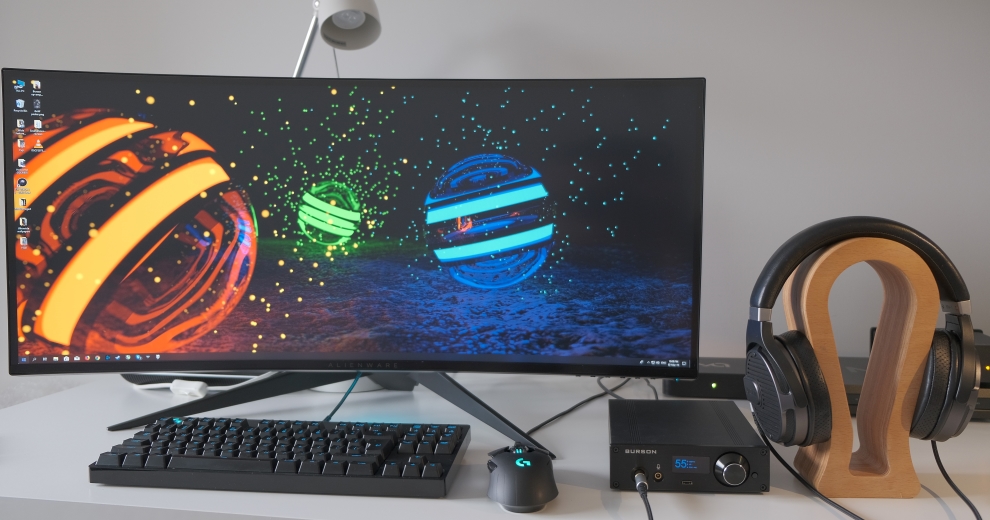
Conclusions
All my requests that I urged Burson to make with their Play and many other requests were carefully listened. This is how you are listening to the community and make a logical move, well done team Burson.
I think at this very moment Playmate doesn’t have a real competitor that can drive literally every headphone you throw at it, offer multiple digital inputs, selectable filters or many other features.
For a simple desktop solution used to play music, recording or gaming Burson Playmate seems to be my top pick for 2019. It was very impressive with all my headphones and IEMs.
PROS:
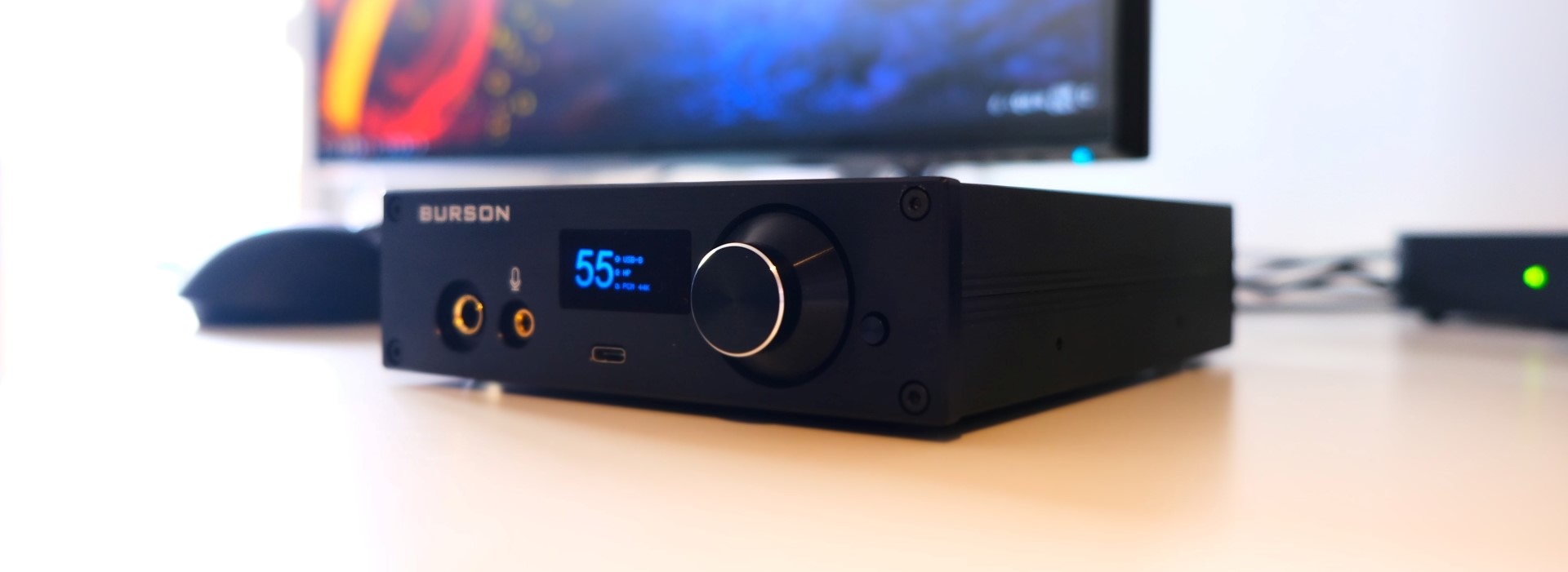
Play never really shined with sensitive IEMs, background noise and hum plagued it for all multi-BA IEM users, lack of a gain switch was a real pain and made it almost unusable with IEMs. Not to mention the already dated ES9018 DAC chip and did I mention that it had only one digital input? Common Burson, you can do better than that.
A big surprise came about one month ago when I was greeted with 2 announcements from Burson: a much-needed dedicated DAC – called Swing, that should be a perfect partner for the Fun, and a brand-new product called Playmate, that seems to be replacing the Play.
Burson promises to grant all our wishes with this one, so let’s take a closer look, shall we?

Build Quality
Fit and finish is quite good. Playmate is being offered in a black anodized aluminum case - called Noir or in a raw aluminum case called Everest. I have the noir version; anodized version will likely resist few accidental drops or scratches.
Device itself is pretty small and lightweight, at about 1.5kg and having just 210mm x 145mm x 45mm in size its very easy to integrate into tight spaces and small offices.
The aluminum case works as a giant heatsink so it gets warm at touch after about 20 min of run time, its warm but never hot since the amplification stage doesn’t dissipate as much power and heat compared to an integrated amp for example.

Inputs and Outputs
There are two digital inputs on the back, more exactly an USB type-B, an optical input and on the front, there is a second USB input - Type-C in case your smartphone supports OTG external devices. On the back Playmate can be powered by the external PSU or by your PC PSU (via the 4 pin molex connector), there’s an On/Off switch and a pre-amp output, at about 83 volume Playmate will output around 2 – 2.1 V Rms in case you want to use it as a dedicated DAC.
On the front plate there’s one 1/4” (6.5mm) headphone output, one 1/8” (3.5mm) mic input, an LCD screen, a digitally controlled volume potentiometer and the menu button.

Under the hood
Playmate is again an all-in-one solution not only for audiophiles, but also for the gamers in you.
It has a quite small footprint, as the Play, it can be integrated inside your desktop PC in place of a 5.25” drive bay. You have two options when it comes to powering up the Playmate: using its external SMPS power supply or using a molex connector from your PC power supply. Do note that in case you are powering it with your PC PSU, Playmate will drain 12V and up to 5A of power (roughly 60W at full power), you’ll need a powerful PC PSU, so keep that in mind.
I don’t have a drive bay on my desktop Aurora 7 so I used it as an external device, which I sincerely recommend you doing the same, not because you’ll stress your PC PSU too much, but mostly because you will rule out all electromagnetic fields and interferences inside your PC case. Noise free is the only way to go if you serious about your final result.
Probably one of the most notable changes is the upgraded DAC chip, the veteran ES9018 was used by Burson since Conductor V1 (2012!) until Burson Play (2018!) was replaced by a much newer and much more impressive ES9038 DAC chip. Unfortunately, it is not the PRO version, ES9038Q2M is a mobile version of the famous ES9038PRO. Both are currently benchmarks in terms of commercial made (non-custom) DAC chips around the globe.

On the removable USB card, a powerful USB transporter can the spotted: XMOS XU-208 – I’ve seen this particular chip in much more expensive designs, even my own 1800 USD Matrix X-Sabre Pro is using it, which I find interesting. I didn’t have any hiccups, weird noises, or any interferences using the Playmate via USB, so that is a very good sign in my book.
It is a pleasure to spot the best capacitors in the business, Elna Silmic audio grade caps are literally everywhere, they are most probably used at PSU or noise filtering, since none of them are in the signal path!
Toshiba discrete transistors can also be spotted, Dale military grade transistors…what can I say, Burson didn’t waste a dime designing this interesting piece of audio gear.


As the Play and Fun before it, Playmate is using a Burson made Max Current Power Supply. This proprietary MCPS overcomes the issues of both transformer based linear power supplies and conventional switching power supplies. These MCPS are tuned to work in Class-A for that intoxicating black as night background.
Playmate has four rollable op-amp sockets, I’m having the basic version with four NE5532 dual op-amps, all those four can be changed to your liking, Burson is also offering their own V6 Classic and V6 Vivid flavors. The most pimped-up Playmate is roughly twice the price of the basic version. Want the best? Smash that piggy bank for it!
I’m really glad Burson opted for an LCD screen on the front panel, it not only shows your volume levels, but also your selected output (headphone out or pre-amp out) and your digital stream (PCD or DSD and bitrate). Pushing the small button on the far right enters the menu where lots of setting can be accessed.
Now, I’d like to call out the biggest improvement in terms of ease of use and accessibility Burson made to make it much better.
- In that menu you can select 3 digital inputs (YES, 3 – compared to just 1 on the Play), you have your USB type B on the back, USB Type-C on the front panel – in case you want to connect your smartphone via OTG and an optical input – it is God sent, really! You can connect your receiver, your home console, anything you want.
- Selectable Gain! On the low gain my IEMs worked like a charm, no noises, no hum, no nothing. Why Play didn’t have this? We’ll never know.
- You can select your output: headphone output or pre-amp output. Not a must have setting for me, but what the heck, it’s there and it works.
- Selectable digital filters. ESS Technologies implemented on the hardware level few digital filters in their upper range DACs - in case you want to have different sound flavors. Burson was kind enough to implement them in their Playmate for us to play with…I will not list all of them, but I will say that there is a slight sound difference between them, I prefer LP Fast by a small margin and left it as it is for the rest of our tests.
- DPLL for DSD and for PCM data streams, the higher this setting is – the higher the jitter rejection will be, it stays on High in the default setting.
- Emphasis – this is the only setting I wish Burson never implemented. Nothing is wrong by putting it there, however on default “ON” position, Playmate will cut the treble response by 5dB at 10 kHz and around 8dB at 20 kHz! That is way too much. I know Burson loves that bass and midrange presence a lot, but cutting that treble by 5db can be too much at times. Be warned, this setting Is enabled by default, I recommend switching it off immediately.
Let’s get to the most interesting part, shall we?

Sound Impressions
I. Big Improvements
First and foremost I would like to mention key aspects where I feel Playmate was much improved compared to Play in terms of usability and sound performance.
1. Playmate can now be used with IEMs - a thing that was almost impossible with the Play.
Playmate has a very convenient gain setting in the OSD menu, putting it on low is a Godsend for every IEM user. You have a much wider volume gap to play with and there is no hum or noise whatsoever. Background noise is nowhere to be found and background seems to be black as night even with multi-driver balanced armatures.
2. Playmate has lower output impedance.
Headphone output impedance was lowered from 8 Ohms to just 2 Ohms or below. I am hearing much more control with my IEMs, bass is no longer flabby with long decays, it is faster and more precise. A lower impedance output improved almost everything, transient response is first on the list and I am happy to hear a clearer image overall compared to Play.
3. Playmate is offering more power for higher impedance headphones.
With your typical low impedance headphones, the difference is negligible between the two. However, for 100 Ohm or higher impedance headphones, Playmate will be offering more juice. I could drive a pair of very inefficient 200 Ohm Audeze LCD-4 with both of them, however with Playmate I have a little bit more headroom and dynamics. More power and dynamics for the same price? Pretty please, I’m all for it.
There are also many smaller improvements that I would like to mention separately.

II. Improvements (without the Big):
Moving on from the old and trusty ES9018 DAC chip to a higher performance ES9038Q2M resulted in serious changes in the overall sound performance.
I always felt that ES9019 is a pretty good chip, but very hard to implement the right way. There are multiple designs where I felt it sounded bright and even fake. That is exactly what I don’t want to hear in my room: Fake midrange and hot treble. To some degree Conductor V1 (the one with the ES9018 inside) was like that.
ES9038 is completely another story, a merrier one. I never heard an ES9038 based design that had fake midrange or very hot treble and that is good thing.
You can screw up an ES9018 based design very easily, but you cannot with an ES9038 inside, it is just much more stable, has a better jitter rejection and doesn’t need as much power filtering (how ES9018 needed).
In my opinion there is a very clear difference in the overall sound performance from Play to Playmate. Playmate sounds even more natural, has a (much) better flow, everything just comes easily towards the listener.
Playmate is the complete opposite of digitus! ES9038 directly impacted the linearity of Playmate since it no longer has a very linear frequency response; it is more on the warmer side of things. Not by much, but there is no denying the warmness I am hearing.
Think of it like a very high-performance tube-based design, if this makes any sense to you. Playmate has still a very solid-state sound, but it also has some flow that you rarely hear on any SS (solid state) designs.
Playmate has a great midrange presence. I am starting with midrange because I feel this is the best part where I think Playmate really shines.
String based instruments have a very mood lifting zing to them, the texture of those notes appears natural and real to me. It was a pure joy listening to any instrument-based recordings.
Voices have slightly longer decays, that make you appreciate those cords vibrations just a little bit more.
Headphones that are lacking in midrange presence will partner great with this Playmate. Even my Sennheiser HD660S that are good but not great in the midrange department shined on Playmate, every point where HD660S lacked was cured by the Playmate, this was a great pairing.
The overall sub-bass and bass performance is very similar to the one on the Play, and that is a good thing.
Playmate has a good sub-bass performance, with the right headphones (Quad ERA-1) I am hearing rumbling deep bass that almost shakes my head. Playing Invisible Sun by The Prodigy at the 00:40 mark a very low 20 Hz note can be heard only on select headphones, sources and amplifiers. Playmate passed the test pretty easily.
On other test tracks by Infected Mushroom I’ve heard multiple bass layers that are always welcomed.
There is an elevation between mid and upper bass, from 80 up to 200 Hz there is a clear emphasis in this area so almost all modern recordings will have a slight bloom. Throw any EDM, Hip-Hop or electronica and Playmate will just shine.
Treble performance is good but not excellent. Unfortunately, the bite I was hearing on Play is not so obvious anymore. Playmate is calmer in this area and upper leading edges cannot be found on Playmate. That is one of the very few things that bothered me a bit.
The second least impressive aspect is that transient response was also affected. By comparison Play sounds a bit faster and hits harder (only on high impedance headphones!)
It’s noticeable especially on cymbals and double drums where Play rendered them just fine, but on Playmate there is a bit of muddiness (or mushiness) as it is not keeping up with double drums.
These are literally the only two things that bothered me when I was evaluating the Playmate.
Do note, I have the Play and Playmate in stock forms, maybe V6 upgraded ones will sound different.
Soundstage size is medium to wide, with Quad ERA-1 and HD660S it sounds wider than Play and on the same level with Fun, I appreciated the wide stage on few classical pieces.
Depth is also good and pretty much in a higher tier league comparing to other devices in the same price range (Matrix Mini-I Pro 2, Gilmore Lite mk2).
Comparisons
Well, as you can see my whole review became a big comparison between the Play and Playmate so it doesn’t make any sense to compare the two anymore from this point on. Bottom line Playmate is much better, go for it instead.

Burson Playmate VS Headamp Gilmore Lite Mk2
Playmate costs 400 USD and Gilmore Lite goes for 500 USD so there’s that, Gilmore Lite also doesn’t have a DAC section, so I call it a fair comparison.
I connected the Gilmore Lite to the Playmate pre-amp output and set the volume at 83 for a 2.1 V output.
First of all, it seems that Playmate has A LOT more power and will drive literally everything, if it drives my LCD-4, then it drives anything you want. Gilmore Lite starts clipping at around 90% volume, sadly it can’t drive my LCD-4.
Playmate has a warmer sound signature that stays on the safer side on things, you can hook it up with a wider range of headphones.
Gilmore Lite is basically a wire with gain, it almost disappears from your audio chain, if you don’t like your headphones, Gilmore Lite will make them even worse. On the other side, Gilmore Lite will sound truer to life and to the recording, it is truly a reference single ended headphone amp. It is so linear that most of the time you will hear your source and your headphones and not a coloration induced by the amp.
Gilmore Lite also has a faster transient response, it’s always nimble and light on feet, for faster music Gilmore wins most of the times.
Now, in terms of tonal balance and overall enjoyment levels I would say Playmate is better and a smile will appear more often with it. Gilmore Lite can be boring sometimes, especially if the listening music is also boring and un-engaging.
For Gilmore Lite you will need a separate DAC box, so keep that in mind.
There is no point in comparing the Playmate with a Matrix Mini-I Pro 2 since I think the later one can’t properly drive full-sized headphones and doesn’t have a real and well-designed headphone output.

Conclusions
All my requests that I urged Burson to make with their Play and many other requests were carefully listened. This is how you are listening to the community and make a logical move, well done team Burson.
I think at this very moment Playmate doesn’t have a real competitor that can drive literally every headphone you throw at it, offer multiple digital inputs, selectable filters or many other features.
For a simple desktop solution used to play music, recording or gaming Burson Playmate seems to be my top pick for 2019. It was very impressive with all my headphones and IEMs.
PROS:
- Great tonal balance across FR
- Great flow and easiness
- Good kick and impact
- Awesome headphone amp section
- Good depth and a wide soundstage
- Awesome features & lots of improvements
- Best price to performance ratio tested in a DAC/Amp category
- Slight muddiness on treble
- Not the cleanest treble response
- Headphones: Audeze LCD-4, Quad ERA-1, Sennheiser HD660S, Momentum 2, FiiO FA7, FH5
- DAC: Matrix X-Sabre Pro with X-SPDIF 2, Matrix Mini-I Pro 2, Burson Play, Burson Playmate
- Headphone Amps: HeadAmp Gilmore Lite Mk2, Burson Play, Burson Playmate
- Speakers: KEF LS50W
- Cables: QED Reference, Burson Cable+ PRO, Audioquest & Kimber interconnects

Onik
You said in your review that you can connect your smartphone on the usb-F but I tried my brand new Razer Phone 2 with it and this phone don’t recognise play m8.



















